.webp)

Kashmir Great Lakes Trek
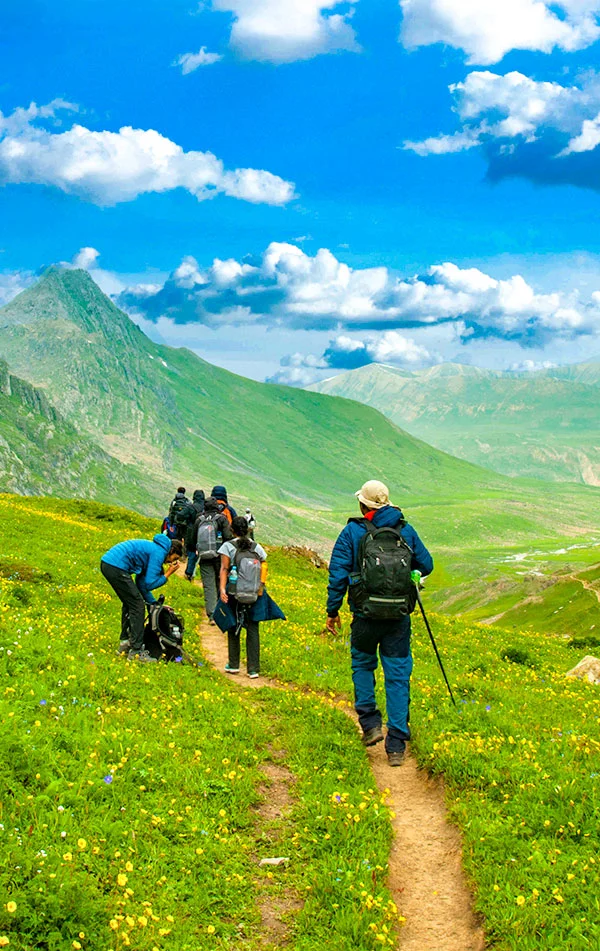
Kashmir | India
Max Altitude
Trekking Km
Moderate to Difficult
Help & Support
17300 /person $ /person.
- August-2024
- September-2024
- +5% GST (goods and services tax)
- Services Sonamarg to Naranag
Insurance 280
Insurance is Mandatory.
Non-Indian rates are slightly higher. Trek coordinator will provide balance payment link post-booking.
- Get insurance through us or elsewhere. If not through us, email for a refund after booking.
Cancellation 4 or more days before the start of the trip results in a 100% cash refund.
Cancellation less than 4 days from the start of the trip results in no refund.
Transport 1700
Transportation Srinagar to Sonamarg & retun is optional
Choose add-ons during booking. If missed, log in and add them later
Book transportation at least 10 days before the trek.
Cancellation less than 4 days from the start of the trip results in a 50% cash refund.
Cancellation after the trip date does not qualify for a refund.
Offload 2100
Backpack offload is optional
Choose add-ons during booking. If missed, log in and add them later.
Book off-load at least 10 days before the trek.
For offline bookings at the base camp, a convenience fee of Rs. 2400 applies.
Cancellations made before the trip date will receive a full refund.
For more information. Please complete this form.
Help & Support
Trek Name: Kashmir Great Lakes Trek
Adventure Type: Trekking
Base Camp: Sonamarg
Season: Monsoon | Autumn |
Month: July | August | September | October | November |
Country: India
Altitude: 13750 Ft.
Grade: Moderate to Difficult
Rail Head: Jammu
Stay: Camping (Twin sharing) & Hotel/Guesthouse
Food: Meals while on trek & at Hotel/Guesthouse (Veg & Eggs)
Location: Kashmir
Distance: 72 Km.
Trail Type: Cross over trail | Start in one valley, traverse the pass, and ends in another valley.
AirPort: Srinagar (sheikh ul-alam international)
The Kashmir Great Lakes Trek is in no need of an introductory treatise. It presents the proem in itself. You can draw a preface of it by just hearing its name. Kashmir is a wonderful place and if you are on a Himalayan trek you are bound to taste the natural beauty and adventure. The trek to the Kashmir Great Lakes offers a lifetime of experience of memories that are so wonderfully reminiscent. The tranquil silence of the Kashmir lakes and their virgin beauty is spellbound. Apart from the lakes, even the barren milky snow-clad mountains stand out in might and pride.
The location of this trek is Kashmir, also known as the paradise of the earth. The trek duration is around 7-9 days and this trek is often graded as moderate in regards to the trekking challenges. The elevation circles around 13000 feet and the distance paths are approximately 63 km. On such a fulfilling trek you will learn so much learn about yourself- in a trifecta – physically, mentally, and emotionally. For a trekker, nothing can replace and prepare him for those paramount and conflicting emotions that whether his body will take so much strain and whether he will make it or not. But the joy of reaching the destination is obvious. This trek will always be happy and a cherishing trek for the trekkers that comes in handy with a few preparations.
As the trek to the Kashmir Great Lakes Trek demands physical fitness, you must take good care of your health, shape yourself well and be fit and fine. Trekkers can train themselves by working out regularly in the gym along with running, walking on an incline, cycling, cross-training, and stretching on a daily basis. Along with physical health mental fitness is important equally.
Coming to the details of the trek, it generally starts from almost 3 km out of Sonamarg, on the Srinagar road. You can find a few dhabas on your way. Its better for the trekkers to pick up short eats here for the next trace of a dwelling place will be at Naranag which would probably mark the end of the track.
A few of the trail and the trek enters a green meadow, overlooking the Sonamarg town. At the top of the meadows, trekkers reach the starting line of Maple and Pine trees. What follows is a lovey-dovey deep dense forest of Maple trees. Such an experience has always been unique to this trek in India.
You will always be amongst the meadows throughout this trek. The best time to enjoy the Kashmir Great Lakes trek is between June and September as the greenery and the blooming flowers are at their best during this calendar period. Its so that a beginner in trekking can also join this trek.
Trailing through the Maple trees uphill, trekkers can enjoy the crystal clear view of the nearby villages downhill and especially the Sonamarg village. Every bit of nature nestles to make a wonderful picture. From here the trail slopes down into yet another meadow lined by the Silver Birch trees and a few shepherd huts. Massively tiny brooks struggling through the meadows and snowy peaks of small mountains mark the land of Shekdur. Shekdur is the only campsite with trees on this trek. It is therefore an add-on to your clicks. The suns rays piercing through the forest, make it a nice show of dark and light. Further, the trail climbs back into a river valley which is the beginning of Nichanai. You have entered into a wide valley encompassed by the peaks.
After crossing a tunnel-like Nichinai pass followed up by miles of spreading meadow and the cascading waterfall comes the Vishansar Lake. The first impression that the lake imposes upon the trekker is its larger-than-life size and snow-clad mountain peaks surround the azure lake waters. It is been followed up by the Kishansar Lake which is only at a distance of 1.2 km. It has a big meadow stretching by its side. The trail follows up through a ridge. You can see the loveliest view of the two lakes that you have just crossed together from the Gadsar pass which is the highest point of this trek.
Then the time comes to descend. On the way back, the eye captures the view of Yamsir Lake, the nameless lake, and the Gadsar Lake which are all connected by streams. Further, you will come to a place called Maengandob where a few deep craters are found. The landscape ahead is magnificent as you get to visit Satsar Lakes-collection of seven Lakes and further the twin lakes among which the bigger is the Gangabal and the smaller one is Nundkol. At you arrive at your last destination, Naranag and you are greeted with awe-inspiring glaciers, meadows as well as mountain peaks.
The trek to the Kashmir Great Lakes Trek will provide the trekkers with a perfect flavour of all hues of the Kashmiri terrain- innumerable meadows, snow-clad glaciers, pinnacles, passes, rocky barren lands, and gurgling streams. The trail to the Great Lakes is worth trekking. It does justice to all the expectations of a trekker.
While trekking, trekkers must be equipped with the necessary equipment. Apart from the professional trekking gear including a pair of trekking shoes, and a trekking pole is important specifically. Trekkers must never compromise with their body requirements. Its better to understand your bodys needs and not proceed under peer pressure if you don’t feel well. Keep your luggage as light as possible. It will be in your comfort.
- Who can Participate
- Important Links
- How to Reach
- Trek Essential
Who Can Participate
Age; 15 years.
Experience of any high altitude trek, at least 1 treks of 4,000m/13,100ft.
The climber must be fit and have sufficient stamina to cover 5 km of distance in 30 minutes without stress.
The climber should be able to carry a 12-16 kg backpack.
Pulse rate at rest must be in between (60 to 90 beats per minute)
Blood Pressure Reading must be in between (DIASTOLIC 70 – 90, SYSTOLIC 100 - 140 mm Hg)
Respiratory rate at rest must be in between (12 to 20 breaths per minute)
Should not have Liver and kidney issues
Should not have Diabetes Mellitus, Bronchial Asthma, Heart problems, Hypertension etc
No pacemaker implant
People with the Sinus issues, Epilepsy please contact to trek coordinator before booking the trek
If your BMI is not normal, Please contact our Trek coordinator before Trek booking.
Medical & Disclaimer Form (Mandatory Documents) Click here to download Medical & Disclaimer Form
- Government Employees can avail the benefit of Special Casual Leave (SCL) when you join us for a trekking expedition. As per the rules of the Pay Commission, Special Casual Leave can be availed for up to 30 days in a calendar year for trekking/mountaineering expeditions through a registered organization. Trek The Himalayas is a registered adventure tour operator by Indian Mountaineering Foundation (IMF) and Ministry Of Tourism (MOT)
- Trekkers have to apply for leave at least 20 days before trek departure date,
- This service is exclusive to Indian government employees and is applicable only for treks within India.
- Do mail at info@trekthehimalayas to apply and mention your booked trek date and trek name.
Junior trekkers (below 15 years) should have a company of parents/guardians.
Trekkers between 15 to 18 years can come solo with the disclaimer form signed by parent/guardian.
- Medical & Disclaimer Form (Mandatory Documents) Click here to download Medical & Disclaimer Form
Exercise For Moderate to Difficult
Fitness Regime For:
Calculate Your Bmi
Your BMI value is
Congratulations, your body is in good conditions!
Arrive At Sonamarg
- Altitude: 2,400 m/ 7,800 ft
- 90 km drive from Srinagar, approx 3 hrs
- If booked in advance, TTH can arrange pickup from Nishant Garden, at 12 pm
- Our campsite is near the Sindh River (Shitkadi Village)
- Since there are no shops around ensure that you have all that you need already
- Remember to carry your ID proof in original and 2 photocopies as we have to submit them at the army check post.
The journey to Kashmir Great Lakes begins from Shitkadi Village, which is a little ahead of Sonamarg and about a 3 hr drive from Srinagar. TTH representatives will pick you up from Sonamarg and drive all the way to Shiitkadi, where you will rest for the night before beginning your trekking adventure the next day. Before you begin your trekking adventure, you will spend the day in the beautiful surroundings of Shitkadi Village. You can spot some of the great mountain peaks like Kolahoi, Tribal, Machoi, Amarnath Peak, and Machoi Glacier. The view en route to the campsite is very scenic and all along the route, you will see the vast expanse of grasslands and meadows on either side of the road. The stay is arranged at Shitkudi Campsite. There will be a briefing session in the evening before dinner. Dine early and give your body enough rest to begin your trek tomorrow.
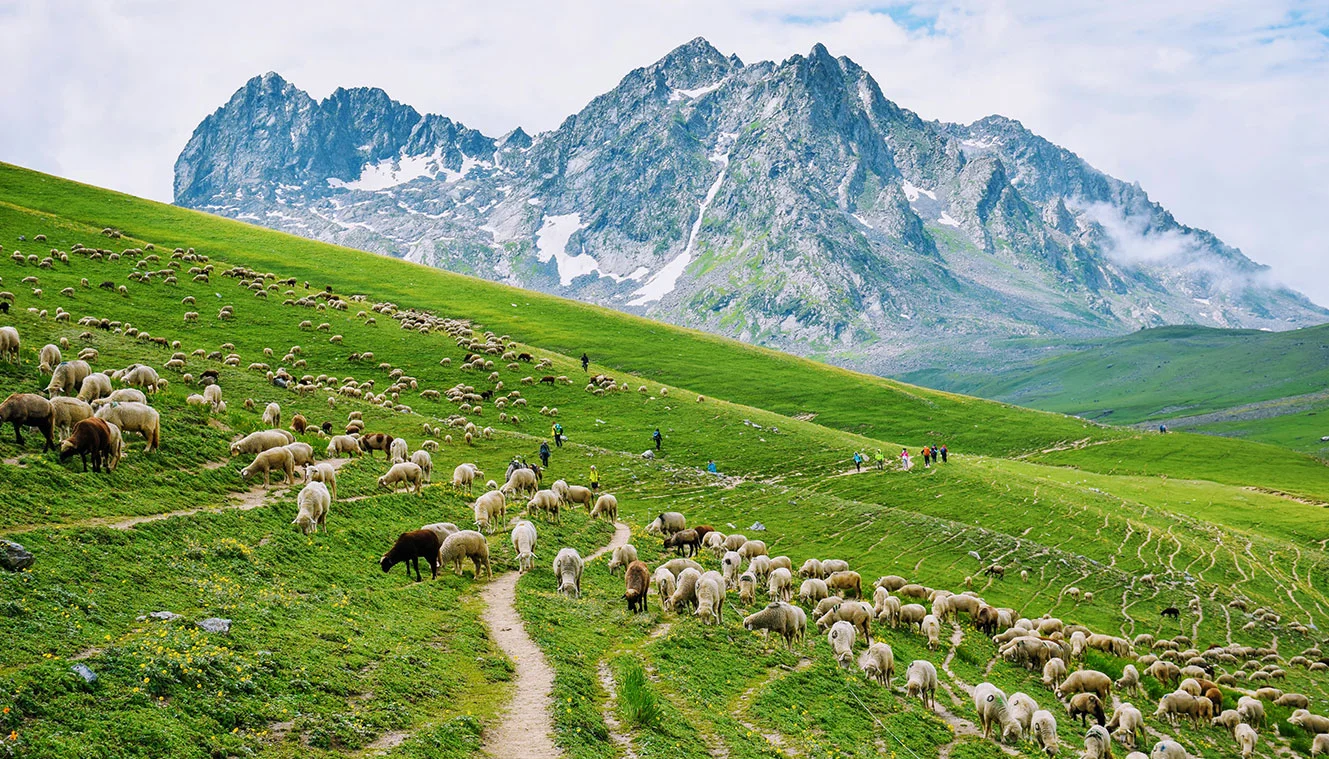
Sonamarg To Nichinai Via Shekdur
- Altitude: 3,500 m/ 11,500 ft
- 11 km trek, approx. 8 hrs
- Altitude Gain: 1,100 m/ 3,700 ft
- After breakfast, we trek to Nichinai via Shekdur
- The trail takes you through meadows, and dense forests with Maple, Pine, and Bhoj trees.
- After approx. half an hour, we get to an army check post where we have to submit our ID proofs
- While you are at it, you can enjoy an awesome view of the Sonmarg Valley or the Thajiwas Glacier
- The trek from Shitkadi to Shekdur goes through thick forests of pine trees and will take approx. 2 and half hours
- At Shekdur, you can indulge in instant noodles and an omelette if you wish to
- We follow the Nichinai stream as we trek from Shekdur to Nichinai
- We have lunch at the Nichinai stream.
3 hours ascent followed by 1 hr descent and finally a gentle ascent to Nichinai (6 hrs, 9 km).
The trek starts 3 km out of Sonamarg, on Srinagar Road. Exactly at the 3 km mark, spot a lone Dhaba on the right. The place also sells packaged water, biscuits, etc., and is your last place to pick up any snacks or little bites. The next trace of civilization can be spotted at Naranang after the trek.
A jeep track diverts to the right off the main road at the shop. The track goes down to the level of the Sindh River that flows in between the mud track and the main road. The trekking trail starts along the track but quickly diverts higher up. 10 minutes into the trek, the trail bends and enters a green meadow. The meadow directly overlooks Sonamarg town. In half an hour, you reach the top of the meadow from where tree lines of Maple and Pine start. Once you reach the tree line, the trail descends until a tiny brook and then climbs up again and what follows next is a lovely dense forest of Maple trees. Walking on green beds of grass amidst the Maple cover is an experience unique to Kashmir in India.
For the next hour and a half, the trail winds up through Maple trees. Stick to the trail that goes in an uphill direction as the one heading down diverts into the nearby villages. Occasionally, the trees give way to clearings. Turn around and delight in the spectacular view of the Sonamarg Valley that gets bigger and fuller as you keep gaining altitude. The Maple cover accompanies you to the top of the ridge and on one side a meadow gently slopes down. Spend a few moments on the ridge, enjoying the view of Sonamarg and the neighbouring Valley. The streams, the meadows, the pines, and the towns nestled together make a wonderful picture. The climb now gradually goes downhill as the trail slopes down towards the meadow that is lined with Silver Birch trees and a few shepherd huts. The carpet of green rolls down from the treeline all the way to the end of the 40 ft wide meadow. There are a couple of small brooks that cross the meadow, which can be your source of water. On your right, you can see a small group of peaks covered in snow. You are now in Shekdur. If you wish to keep your trek short for the day, you can also opt for pitching your tent here. From the road head, it takes 2 1/2 hours to reach Shekdur meadows, it will take about half an hour more if you decide to end your trek at the edge of the meadow.
The Shekdur Campsite is surrounded by Bhoj trees on all sides and this is the single such campsite that has tree covers thus this is a good spot to take some Instagram-worthy photographs. If you have started from Srinagar in the morning, make Shekdur your first camp. The next campsite Nichinai is at least 2 more hours away.
If you started from Sonamarg then Shekdur is just three hours away which makes it too early to camp. Having lunch at Shekdur campsite head to Nichinai campsite. The meadows of Shekdur stretch for half an hour. The gentle descent of the meadow now ends in forests of Bhoj or Silver Birch. Take the trail that goes in the middle of the forest and continue to descend gently. Watch out for sun rays making their way in between the thick foliage making it a nice show of light and dark.
In 45 minutes, you reach the end of the Birch trees and the trail goes down and climbs back into a river valley. The River Valley is the beginning of Nichinai. The trail is now along the right bank of the river going upstream. Look behind to see the snow-clad peaks of the Sonmarg Valley. You are now in a wide valley enclosed by mountains on either side. The river, which joins the Sindh eventually flows with speed through the valley. The first 30 minutes is over rocks and if you are taking mules, they will walk very slowly over here.
An hour more into the river valley, green patches devoid of rocks open up. The river valley widens and you can see the green meadow widening in between the two mountain ranges. Far ahead lie triangular twin snow-clad peaks. At Nichinai campsite, find a clear spot to pitch your tents, ending the first day of the trek.
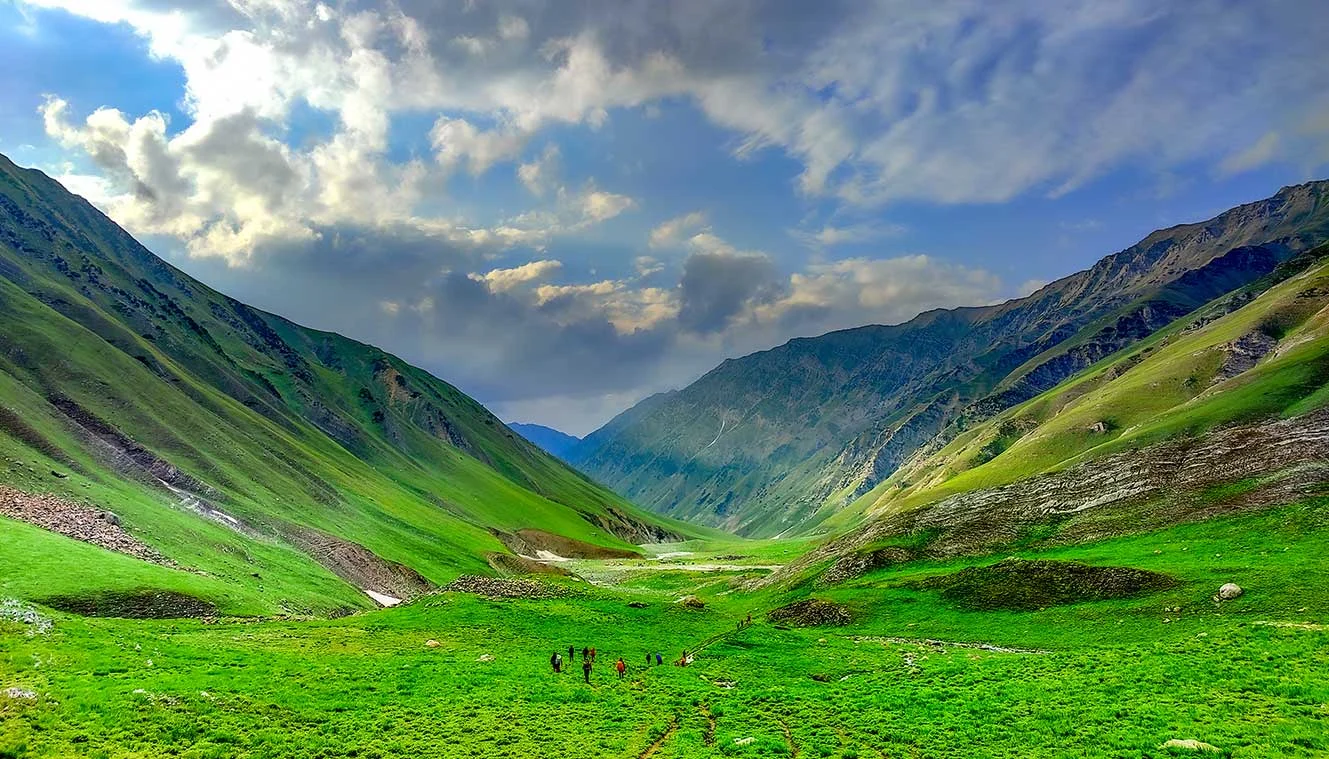
Nichinai To Vishansar Lake
- Altitude: 3,650 m/ 12,000 ft via 4,000 m/ 13,100 ft
- Distance: 12 km | Duration: 7 hr
- Trek from Nichinai to Nichinai Pass is approximate 1 and half hours accent. At the top of Nichinai Pass, you can get the BSNL network, which is the last point under the mobile coverage area.
- From Nichinai Pass to Vishansar there is a descent
- At Vishansar campsite lunch will be offered.
- We can visit the Vishansar Lake, which is just 15 minutes walk from the campsite
- The first lake of the trek and one of the most beautiful ones
- If the trek is in July, the lake will be frozen. Otherwise, we can go fishing at the lake, with the permission from Srinagar fishing department.
- Vishansar is visited by hoards of sheep and their shepherds who always have some interesting stories to tell.
- A campsite is a unique place with open ground and you can play volleyball, cricket, etc.
- Beware of dogs at the campsite.
Moderate climb to Nichinai Pass (13,000 ft). Small descent followed by a long flat meadow walk ending near Vishansar Lake (12 km, 6 hrs).
We start the day early around 7 or 8 in the morning to begin our trek towards the first of the Great Lakes, the Vishansar Lake. The day's trek is more or less a long walk on the alpine grasslands of Kashmir. Start your trek from Nichinai to Nichinai Pass, which is visible from the campsite. Half an hour into the walk and you have to cross the gurgling stream to reach its left bank. The trail starts ascending here and for the next one hour, you will climb up gradually to the Nichinai Pass. The Nichinai Pass is the highest point in today’s trek and is located at an altitude of 13,500 ft. From the pass, it’s a small descent and then a flat walk on the meadow all the way to the Vishansar Lake.
As you continue climbing the Pass, you will see the lake down below at the foot of the mountains, it appears to be a small deep-blue enclosure. The trail that you are walking on now is not the original ridge and it will turn inwards two times before you arrive at the Nichinai Pass. The Nichinai Pass is like a big tunnel and from the top, you can observe the Sonamarg Valley down below. BSNL network is erratic here and this is the last point where you will get any network. The next traces of the network are available when you have moved past Gangabal. On the left of the pass lies the mighty peaks of the Himalayan region, whereas on the right side, there are no mountains but the ground rises up. While some may find the climb to the Nichnai Pass a little strenuous as it is a straight climb, however, there is good news as the trek post the pass is a downward climb. The trail from the pass descends rapidly and in about an hour, you will reach grassy lands from the rocky area. The meadow is a vast expanse of land spreading far and wide with snow-clad mountains surrounding the entire meadow. There’s another river flowing from the pass into the meadow ahead. To your left, you will also see a big waterfall cascading down and mingling with the river. As you walk on the meadows, you will notice two streams crossing the meadows, stick to the banks of the one on the left, and in about half an hour, you will have to make a stream crossing but be prepared as the water is going to be icy cold.
At the end of the valley, a river flows perpendicularly from left to right and this river actually originates at the Vishansar Lake. The lake is not visible yet as it is a little higher on the top. This is a good place to pitch your tents by the river. After the trek, if you have ample time, you can explore the twin lakes or wait for it until the 6th day. From your campsite, the Vishansar Lake may be about 0.5 km away and about 100 ft high. The Vshnusar Lake is nestled beautifully between 4 mountains and the Kishansar Lake beautifully reflects in the lake waters. The colour of the lake changes according to the time of the day and the cloud cover. Before sunrise, the lake is usually colourless and on a clear day, as the sun rises, the water of the lake starts getting blue on a sunny day, the water of the lake is a deep aquamarine blue. As the sun gets closer to setting, towards the end of the day and it becomes a greenish-blue towards the end of the day. This is the first lake you will see on the trek and eventually, you will check other lakes as well. Today we will camp close to Vishansar Lake.
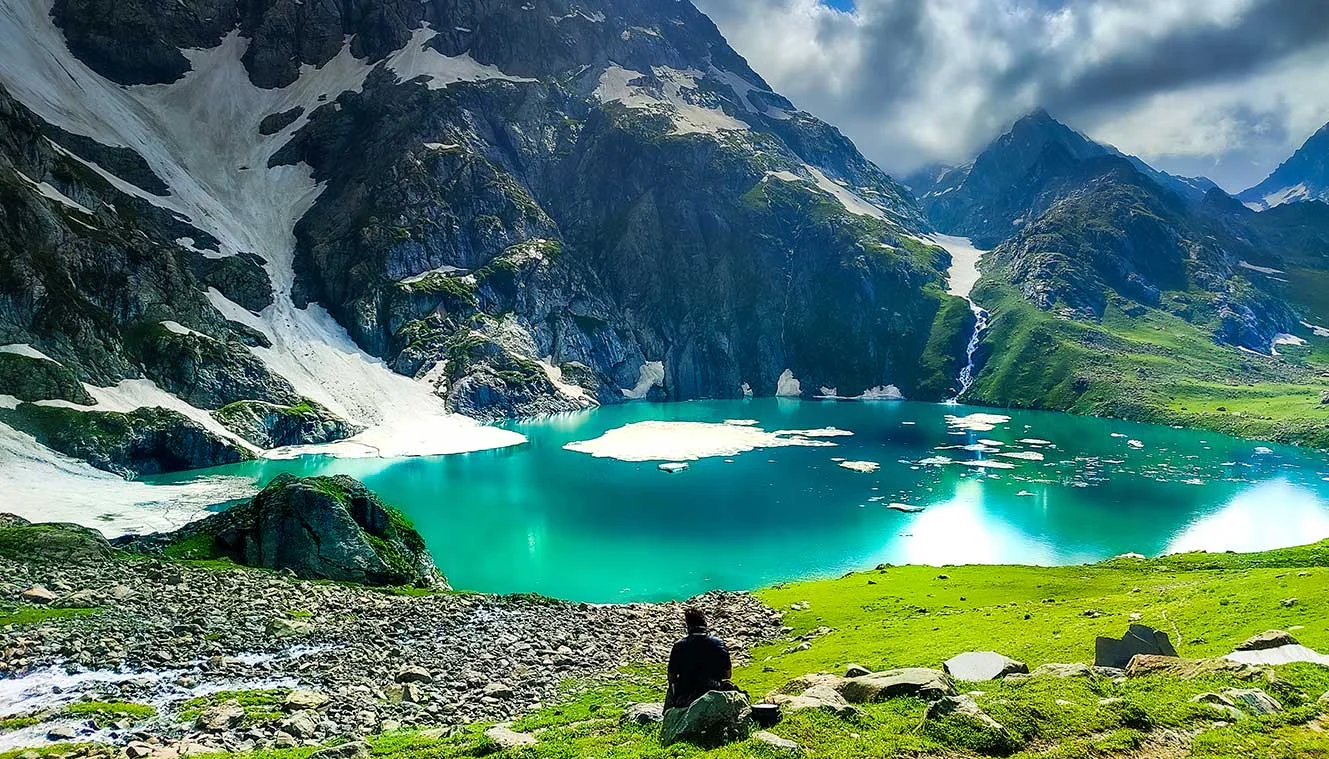
Acclimatization + Rest Day (Conditions Apply)
Day 4 is reserved for acclimatization as you need to give your body enough time to adjust to the conditions of higher altitude. The next lake following the Vishansar lake is the Kishansar Lake. Kishansar is 0.5 km away from Vishansar and is situated at the base of the Kishansar Peak. It will take about 45 minutes to trek to Kishansar from Vishansar. You can take a short acclimatization walk to Krishansar Lake for acclimatization purposes. The trail to the Kishansar Lake climbs from the right side of the Vishansar Lake. On the right-hand side of the Kishansar Lake lies a big meadow which is a perfect spot for capturing photographs.
Note: The use of acclimatization day is subject to change to weather conditions. If the weather is really good then we won't stop for acclimatization but rather move forward to the next campsite. Acclimatization day can be used layer at Gangabal campsite.
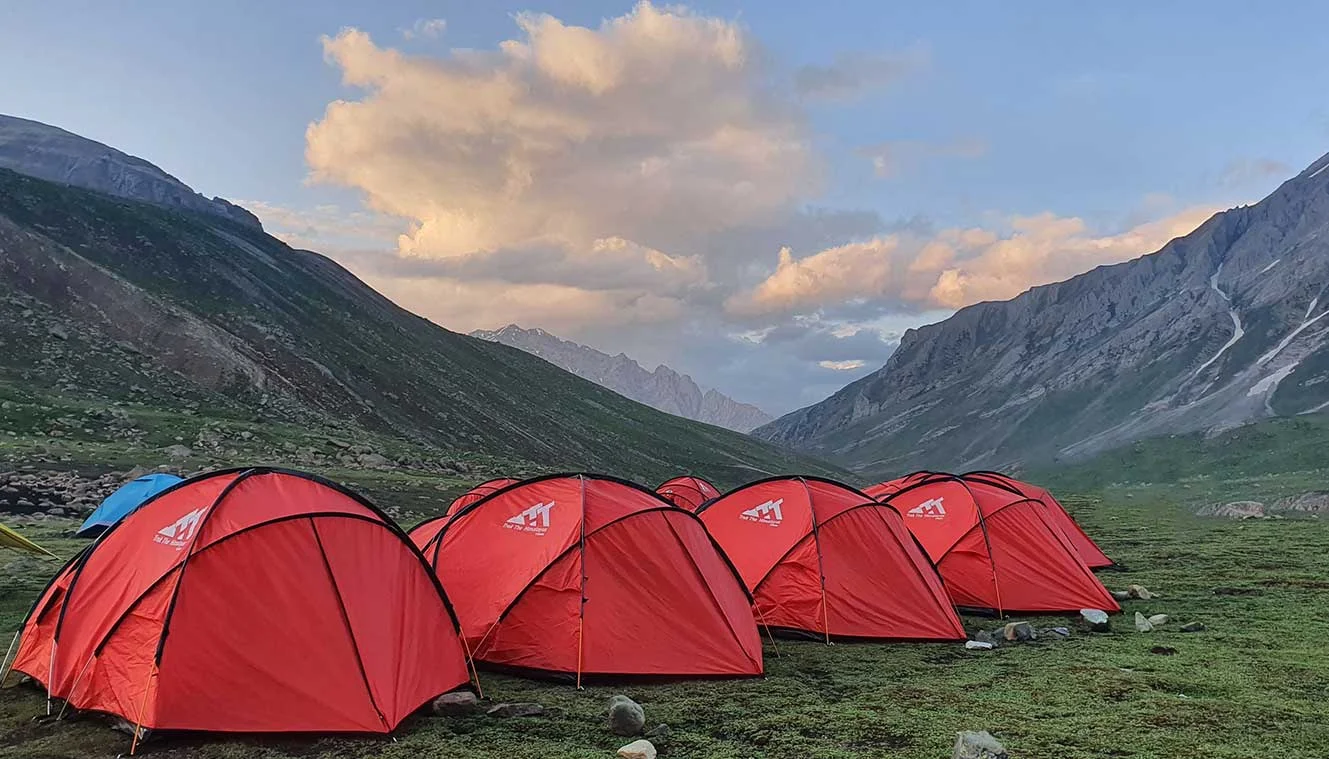
Vishansar Lake To Gadsar Lake Via Gadsar Pass
- Altitude: 3,650 m/ 12,000 ft via 4,200 m/ 13,750 ft
- 14 km trek, approx. 10 hrs
- We start the trek earlier than usual
- The trail passes from Vishansar To Gadsar via Gadsar Pass, the highest point of the trek.
- From Vishansar, the trail takes a steep ascent till Gadsar Pass
- We can spot the Kishansar Lake on the way
- From the Gadasr Pas till the campsite, we descend gradually
- We can spot the Gadsar Lake en route
- You might also spot the glacier of the Gadsar Lake
- After the Gadsar Lake, we will reach the campsite in two hours
- Just a few minutes before our campsite, we will have another army checkpoint and we will have to share our IDs
- Packed lunch will be provided during the trek
Steep 2 hours ascent followed by a steep descent following a gentle walk in the meadows (5 hrs, 10 km)
Today we will trek to Kishansar Lake via Gadsar Pass. From your campsite, you can spot a very thin line travelling through the side of the mountain, this is the trail that you need to follow today. A climb of about an hour and a half will take you to the top of a ridge, another 45 minutes in the climb and you will arrive at a spot that will totally captivate you with an amazing view. There comes a point from which you can see the Kishansar and Vishansar Lakes together in full view. This enchanting view accompanies you all the way to the top of the Gadsar Pass. The Gadsar Pass lies at an altitude of 13,750 ft and is the highest point on today’s trek. Relish the view from the top of the Gadsar Pass for a while before moving ahead. On the horizon line on one side are the snow-clad majesties of the Himalayas and on the other side, a gorgeous valley stretches with 2-3 small lakes visible from the top. The peaks that you can see from the top of Gadsar Pass lie out of the Line Of Control (LOC).
Once you reach the Gadsar Pass, it is a steep descent below and en route, you will first spot the Yamsar Lake, a quaint little lake not very popular among the people. Yamsar Lake can serve as the first landmark that takes you to Kishansar Lake. Continue from Yamsar and about an hour of descent will bring you again to flat grasslands or meadows of the beautiful Kashmir Valley. This time the valley is a bit narrower, the mountains surrounding the meadow on either side. Multi-colored flowers line the green grass of the valley and give it an ethereal look. Once you have arrived at the area near the blue Irises, Gadsar is not far away. Soon you will reach Gadsar, one of the prettiest alpine lakes you have ever seen. Gadsar Lake lies at an altitude of 12,000 ft and the sheer beauty of it will leave you speechless. Gadsar is located at the base of mighty snow-covered peaks. On the one side, you will see snow blocks cascading down to the lake from the mountains, and on the other side, you can see colorful flowers and greenery making for a mesmerizing sight.
Gadsar Lake area will be our campsite for the day, although not many people camp here. If you are camping near Gadsar, make sure that you leave the campsite as clean as you found it. If you do not opt for camping by the lake then continue your climb further downhill to the Gadsar army camp. About half an hour into the trek, the narrow valley opens up and becomes wider, you can see another blue lake on the left-hand side of the valley. As you move on, you are losing a considerable amount of altitude. Continue for another half an hour and you will start noticing the Shepherd huts lining the edge of the valley, keep walking and after about half an hour you will arrive at the army camp. The army camp is a small hut that houses 5-8 army men and to move further beyond the camp, you will have to obtain permits from the army headquarters. The headquarter is located three miles from the checkpoint, follow the tree line into the village to find the HQ. The Gadsar army camp communicates with walkie talkie and the HQ is equipped with a satellite phone. A pro tip: When you are near the army camp, report as quickly as possible as it takes about 2 to 3 hours for the green signal to come through from the headquarters. Your ID proofs will be checked, collected, and recorded before you can proceed further.
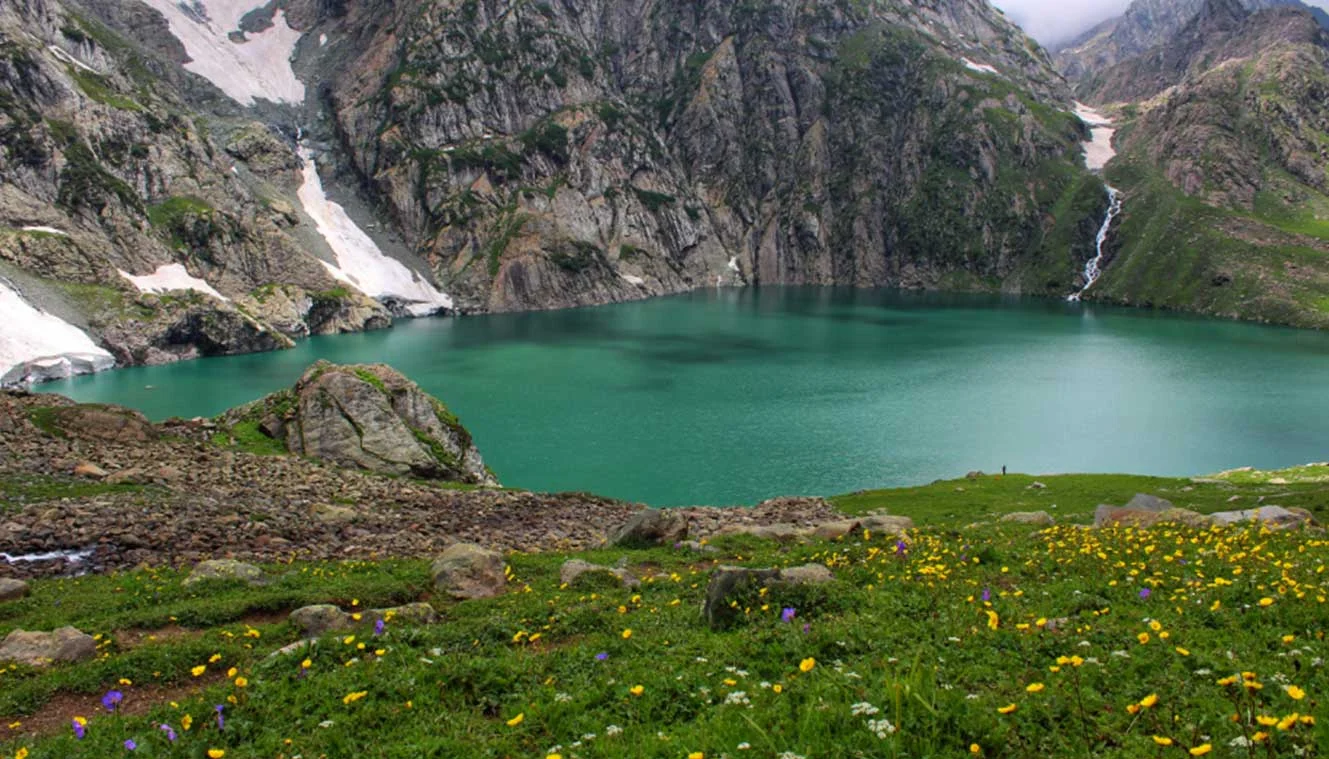
Gadsar To Satsar
- Altitude: 3,650 m/ 12000 ft
- Distance: 9 km | Duration: 6 hrs
- Mid-July to mid-August, the trail is laden with vibrant flowers
- We need to share our IDs at another army check post en route
- Moving on, we see two small lakes which are often mistaken for Satsar Lakes
- We will visit Satsar twin lakes in the afternoon, which are approx. 1.3 hr apart
- Satsar Twin Lake is also known as Mengen Top
- The twin lakes are situated in the middle of two mountains.
Gentle descent or 1 hr followed by a steep ascent for 3 hrs followed by a flat meadow walk (6 hrs, 12 km)
From the army camp, move left towards the stream, to head up into the mountain. You are now above the tree line and you can see the tree cover and the rivers below you. The climb continues for an hour and a half and you gain an altitude of 1,100 ft. Once you cross past the 11,500 ft mark, the climb transforms into a traverse and bends towards the left leaving the river valley. Once you are out of the river valley, you will be walking on a flat meadow surrounded by mountains on all sides. This section of the trail is called Maegandob and you may also spot a few craters to your right. Soon you will spot first of the Satsar Lakes. The name Satsar translates to ‘Sat’ meaning seven and ‘Sar’ meaning lake. Satsar is a collection of seven lakes which justifies the significance of the name.
If Gadsar Lake was your last camping spot, you can choose to camp here. However, if you camped in the army camp then it is justifiable that you trek a little further and camp near one of the Satsar Lakes. Out of all the lakes, you may find 4 to 5 lakes with water, depending on the season you are visiting Kashmir in. Once you cross the bridge, you will come across another army check post, this will be the third check post on your route, and the same process of checking, collecting, and recording your ID and information will continue. After the procedures are done, you can continue on your trail and after 10 minutes of walking, you will arrive at the first of the Sat Sar lakes. The lake is set in a picturesque setting with lush greenery and mountain views, and the emerald-blue color of the lake changes hues with time.
Satsar Lake is our camping ground for the day. Find an ideal spot for camping near the lake and pitch your tents. Retire early in your tents and give your body the rest it deserves after a long day of hiking.
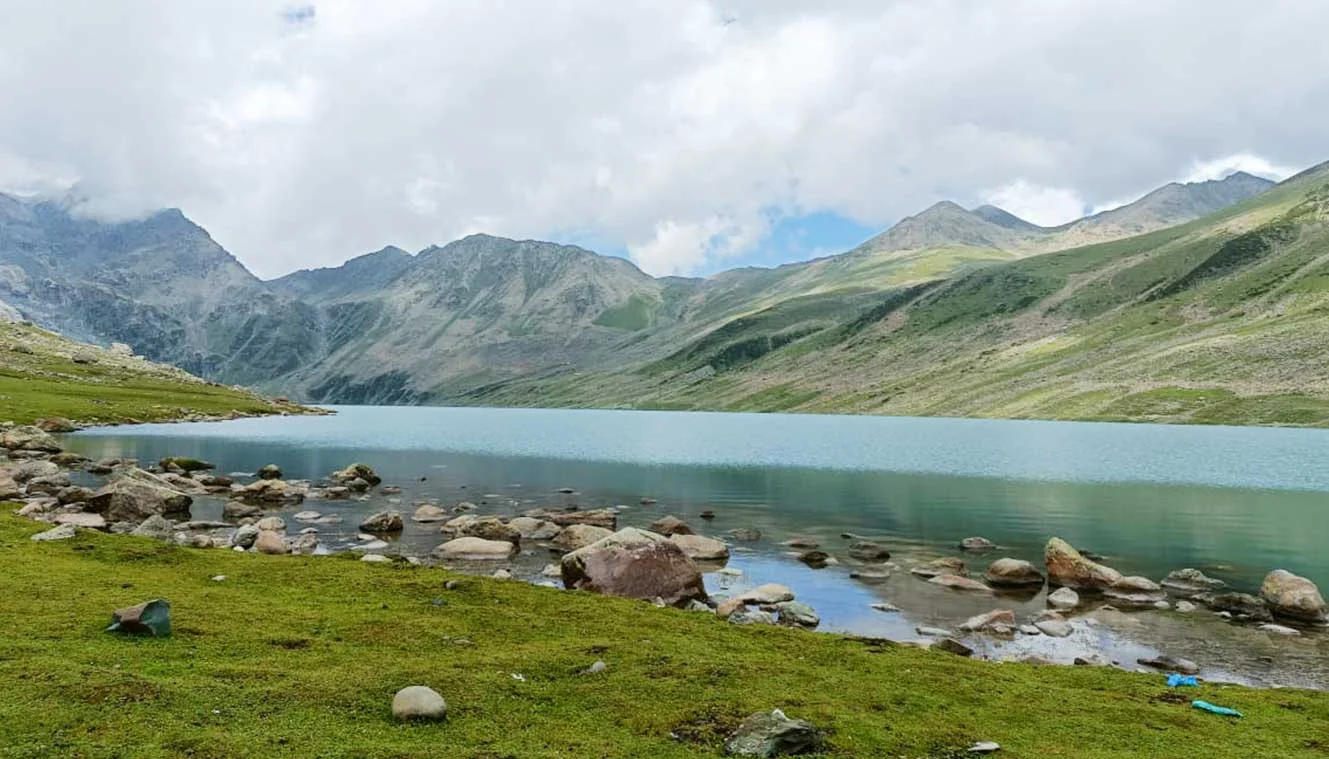
Satsar To Gangabal Twin Lakes Via Zaj Pass
- Altitude: 3,500 m/ 11,500 ft via 3,950 m/ 13,000 ft
- Distance: 11 km | Duration: 6 hours approx.
- We walk on rocky paths for approximately an hour and ascend to Jazz Pass
- At the Pass, you can enjoy views of the 4 lakes as well as Mt. Harmukh and its glacier.
- From the pass, we descend till Gangabal Lake and camp at Nandkol Lake
- We visit the Gangabl Lake, which is one of the largest lakes on the trek.
Mild ascent followed by a gradual descent followed by long steep ascent long steep descent followed by gradual up and down walk. (6 hours, 9 km)
The trail follows the same pattern of going up and down. From our campsite, we will begin our trek and after half an hour of climbing, you will arrive at the biggest of the Satsar Lakes and also the last one in the sequence. The terrain is mostly rocky and filled with boulders. From the lake, the trail keeps descending and continues for about half an hour on this trail and you will arrive at the first forest line. On your right is a ridge and on your left is the forest line. From here, you will again gain altitude through a zig-zag trail to the top of the first ridge you have to climb two more ridges to reach the top and the terrain from the base to the ridge top is barren and rocky. On the opposite side, you can spot some Gujjar huts and some greenery that is in stark contrast to the barrenness of the trail you are on.
An ascent of about two hours will bring you to the top of the third ridge, which is approximately 13,000 ft. From the top of the ridge, you get an amazing view of two lakes with the stream taking water from the higher lake to the lower, which is one of the most wonderful sights to behold. Look more closely and you will see two more lakes on either side, the name of the smaller lake is not known while the biggest lake amidst all of them is Gangabal with its companion Nandkol. The route descends and ascends as you climb down about 1,400 ft to the lake.
There are no water sources on the ascent, during the descent, you will come across a stream, and crossing the wooden bridge, you will arrive at Nandkol your camping site for the night. Nandkol campsite is a popular camping ground and as such a Green Trails Hotspot. You can spot remnants of camping here and there. A lot of people come from Naranang to Gangbal for a weekend outing and that leaves the places with a good deal of waste. Nandkol and Gangbal are also famous fishing destinations, especially trout fish. The Gangbal Lake is at a distance of 20 minutes from Nandkol and a stream connects both of them. We have to cross the stream to reach one lake from the other. Avoid crossing the stream from the lower level, instead, go all the way to Gangbal and you will find a bridge laid out. Gangbal Lake is a big one and circling it will take at least an hour.
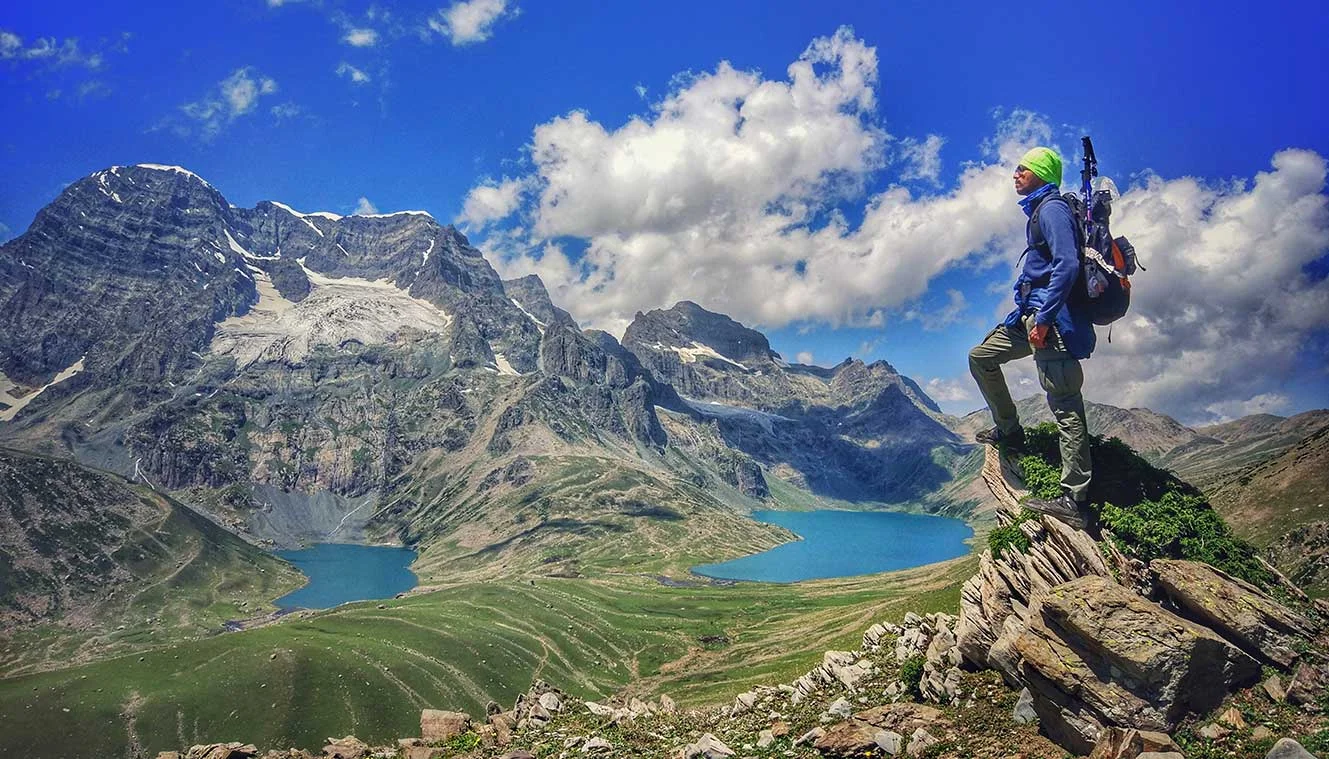
Gangabal To Naranag, Drive To Srinagar
- Altitude: 2,250 m/ 7,450 ft
- Distance: 15 km | Duration: 7 hrs approx.
- The trail is a descent till the last point of the trek - Naranang, so take care of your knees and ankles.
- The trail will pass through pine tree forests
- On advance booking, TTH can arrange transport to Srinagar at a charge
Gradual descent followed by steep descent (6 hrs, 11 km)
Although today is a complete downhill climb the steep descent is going to be hard on your knees so be prepared. From your Gangabal campsite, climb down through the ridge following the stream towards the tree covers. 30 minutes into the trek and the airtel network begins to catch network, you can inform your home that you have made it down safely! As the ridge ends, you arrive at a flat meadow. From here you can look back and see an impressive image of Harmukh Peak, standing tall and mighty.
An hour into the trek and you will begin to enter the treeline, which mostly consists of Pine trees and you will also begin to see signs of civilization as a log hut comes into view. For about 6 km you will keep making your way in and out of the forest not really losing much altitude. After two-thirds of the distance is covered, the trail begins to descend and it is a really steep descent. The trail here is muddy and well-trodden and through thick pine covers. The last 4 km of the trek is a huge drop where you lose an altitude of more than 3000 ft. You may even spot a lot of trekkers on your way down, they are trekking from Naranang to Gangabal. Naranang slowly comes into sight, a little bit more to go. The last part can be a test of your endurance as it is quite steep. A little further and stone-paved path comes along and in a few minutes, you enter the village of Naranang. From here, you will drive to Srinagar. Expect to reach Srinagar by 6:30 pm. From here on you can book your further travel ahead.
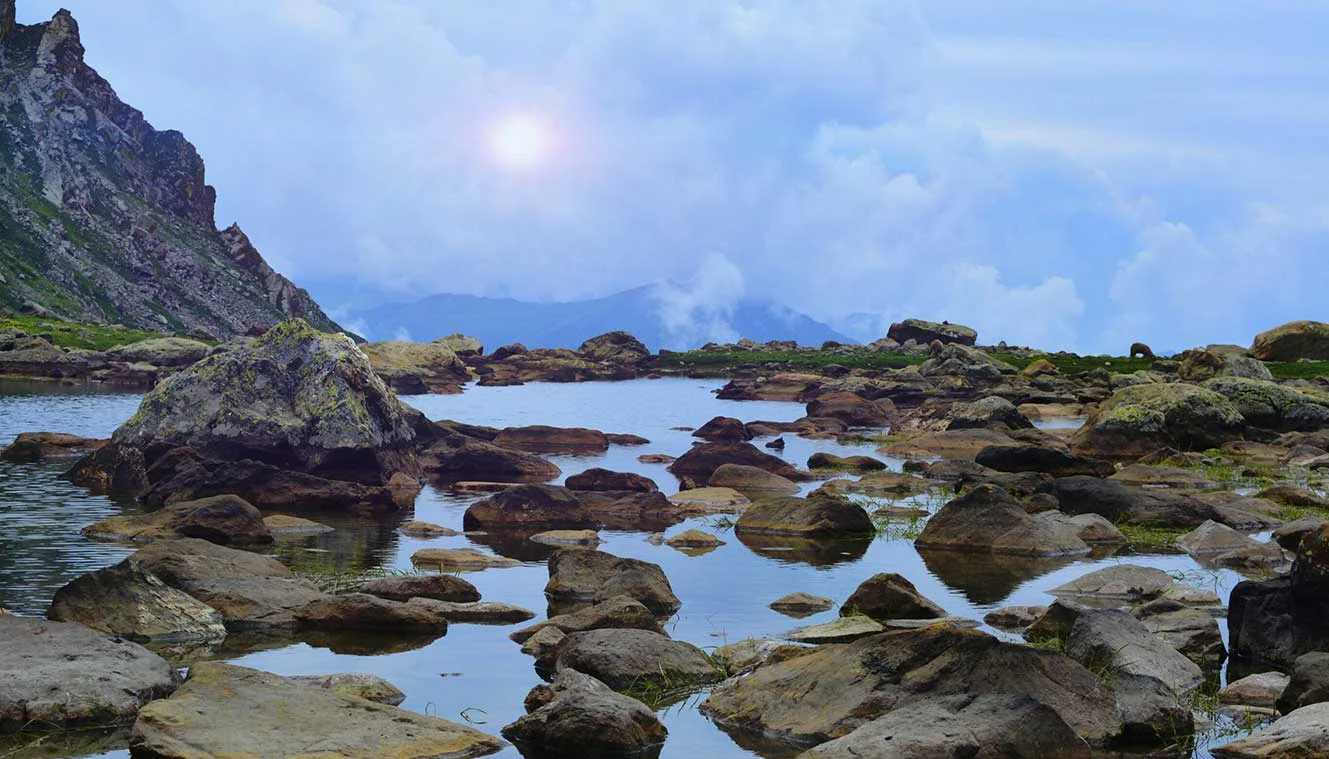
Day-1: Arrive At Sonamarg
- Altitude: 2,400 m/ 7,800 ft.
- 90 km drive from Srinagar, approx 3 hrs.
Day-2: Sonamarg To Nichinai Via Shekdur
- Altitude: 3,500 m/ 11,500 ft.
- 11 km trek, approx. 8 hrs.
- Altitude Gain: 1,100 m/ 3,700 ft.
Day-3: Nichinai To Vishansar Lake
- Altitude: 3,650 m/ 12,000 ft via 4,000 m/ 13,100 ft.
- Distance: 12 km | Duration: 7 hr.
Day-4: Acclimatization + Rest Day (Conditions Apply)
- You may visit Kishansar Lake, which is approximately 1 and half km from our camp site.
- If weather is not good we will use acclimatization day at Vishansar or else move towards our next camp site, rest day can be used at Gangbal camp site.
Day-5: Vishansar Lake To Gadsar Lake Via Gadsar Pass
- Altitude: 3,650 m/ 12,000 ft via 4,200 m/ 13,750 ft.
- 14 km trek, approx. 10 hrs.
Day-6: Gadsar To Satsar
- Altitude: 3,650 m/ 12000 ft.
- Distance: 9 km | Duration: 6 hrs.
Day-7: Satsar To Gangabal Twin Lakes Via Zaj Pass
- Altitude: 3,500 m/ 11,500 ft via 3,950 m/ 13,000 ft.
Day-8: Gangabal To Naranag, Drive To Srinagar
- Altitude: 2,250 m/ 7,450 ft.
* Please Note that prepaid sim cards do not work in Kashmir
Don’t forget your ID proof in original and 2 photocopies
On Day 8, you’ll reach Srinagar between 6:30 pm and 7:30 pm. You can book your travel any time after 8 pm
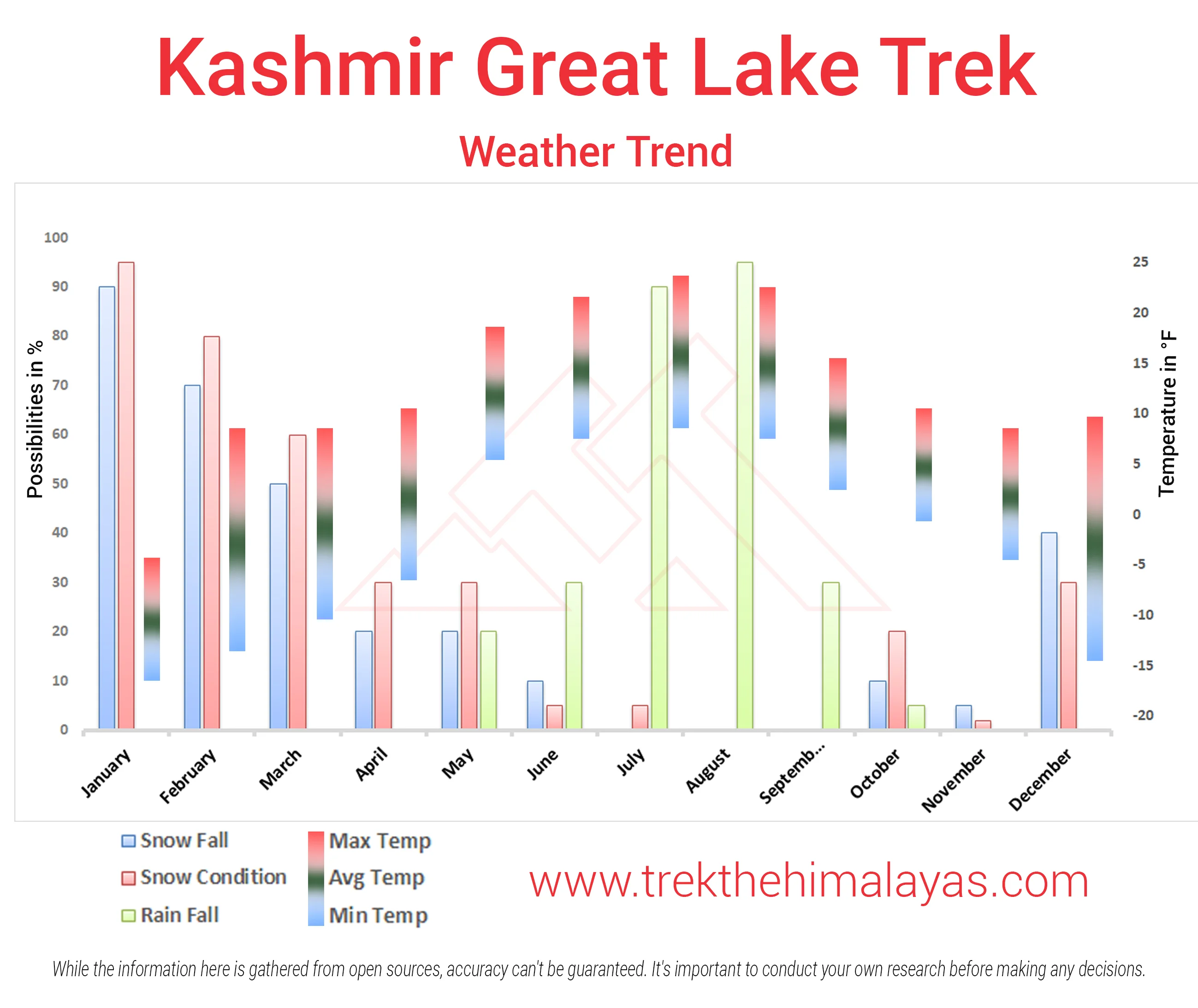
Medical & Disclaimer Form (Mandatory Documents) Click Here.
How To Reach
It is essential for everyone to arrive at Srinagar (11:00 am) Pick-up location: Nishant Garden to tourist reception center, rajbagh, srinagar.
Once you have reached Srinagar, TTH will manage the rest of your travel arrangements, if you have opted for TTH's pick-up service, you can select this option during the booking process by adding it as an add-on.
Do reach Srinagar one day before your trek date for a safer side. Pick-up Place & Time : Nishant Garden to tourist reception center, rajbagh, srinagar.and pick up time is between 12:00 noon to 12:30pm
Options to Reach Srinagar: 1. If you are planning to take a bus, you can reach the bus stand in Srinagar from any major city. It will take approx. 30 minutes to reach Nishant Garden from the bus stand. 2. If you are planning to fly to Srinagar which is well connected to all major airports in India, you can reach Nishant Garden in 45 to 60 minutes via taxi from the airport (approx 20 Km). 3. If you’re coming by train, there are two railway stations. - Jammu railway station is about 260 km away and takes around 8 hours by bus. - Udhampur is 200 km away and from there it is a 6 hours bus journey to Srinagar.
If you prefer to travel independently, you can either take a government bus or book a private cab. Your trek coordinator will provide guidance on how to arrange for the bus or cab booking.
Arrive in Rishikesh by 6:00 pm.
The designated drop-off point is Nishant Garden.
If you have to make any arrangements for further travel from Srinagar, do it the next day.
TTH offers comfortable transportation through Tempo Traveler, Bolero, or equivalent vehicles. If you wish to upgrade your mode of transportation, please contact your trek coordinator for further assistance.
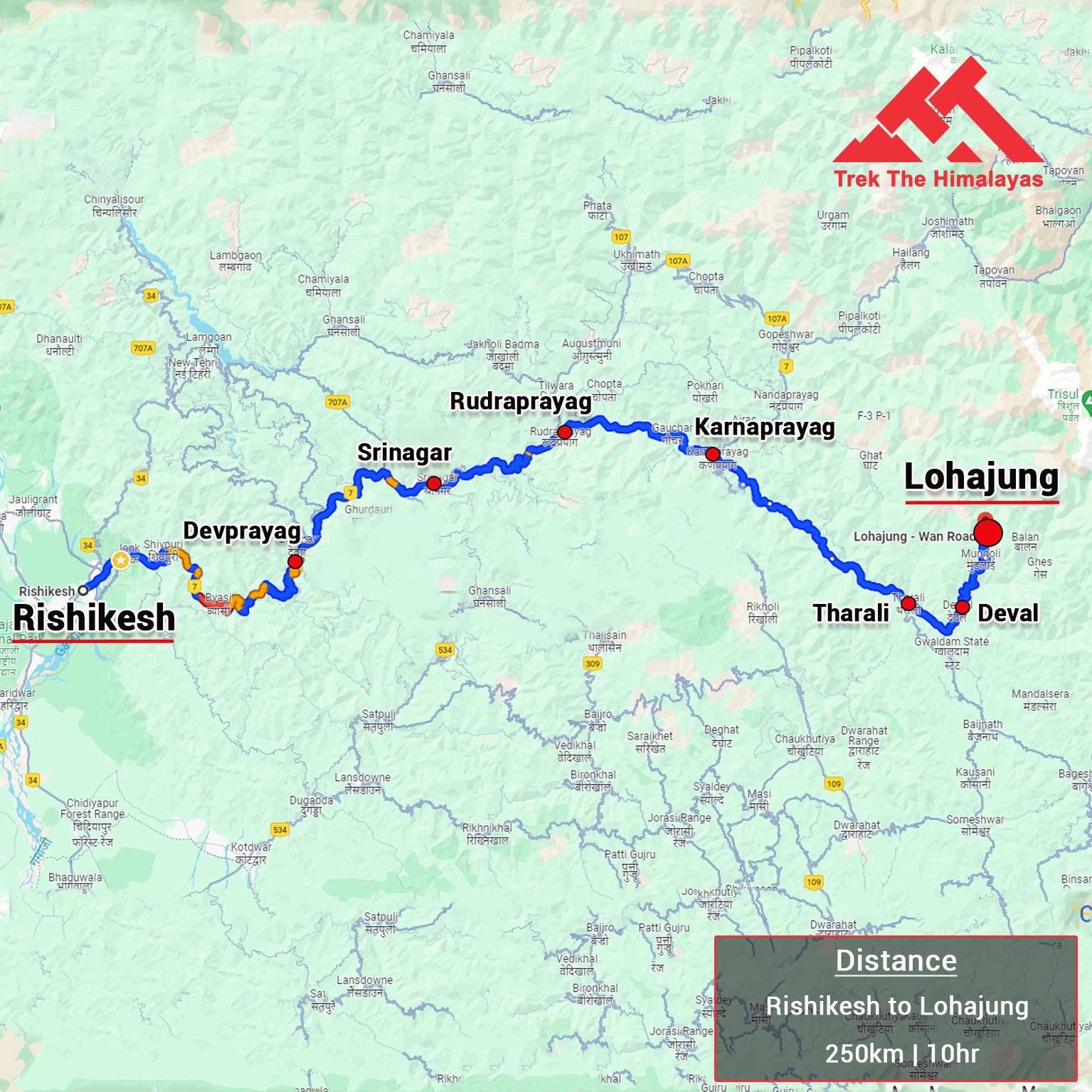
1. Insurance is Mandatory.
2. Accommodation (as per the itinerary):
- Camping while the trek (Twin sharing basis).
3. Meals (Veg + Egg):
- Meals while on trek (Veg & Egg).
4. Support:
- 1 Versatile base camp manager: handles communication and deploys extra manpower in emergencies.
- 1 Mountaineering & First aid qualified professional trek Leader.
- 1 Experienced high altitude chef.
- Local experienced guides (Number of guides depending on the group size).
- Enough support staff.
5. Trek equipment:
- Sleeping bag, Sleeping liners (if required), Mattress, Utensils.
- 3 men all season trekker tent (twin sharing), Kitchen & Dining tent, Toilet tent.
- Camping stool, Walkie talkie.
- Ropes, Helmet, Ice axe, Harness, Gaiters & Crampon (if required).
6. First aid:
- Medical kit, Stretcher, Oxygen cylinder, Blood pressure monitor, Oximeter, Stethoscope.
7. Transportation (as per the itinerary):
- Transport from Srinagar to Sonmarg and Narnag to Srinagar (Rs1,700).
8. Mules/porters to carry the central luggage.
9. Clock room facility available at the base camp for additional luggage.
10. All necessary permits and entry fees, Upto the amount charged for Indian.
11. Services from Sonamarg to Naranga.
1. Food during the transit.
2. Any kind of personal expenses.
3. Mule or porter to carry personal luggage.
4. Emergency evacuation, hospitalization charge or etc.
5. Anything not specifically mentioned under the head Inclusion.
Things can be provided on demand and availability (participant has to pay extra for these things).
1- Satellite phone/set phone - is a type of mobile phone that connects via radio links via satellites orbiting the Earth instead of terrestrial cell sites like cellphones. Therefore, they can operate in most geographic locations on the Earth's surface.
2- Gamow/PAC HAPO Bag (Portable Hyperbaric Bag) - is a unique, portable hyperbaric chamber for the treatment of acute mountain sickness (AMS), also known as altitude sickness.
3- AEDs (Automated External Defibrillators) - are portable life-saving devices designed to treat people experiencing sudden cardiac arrest, a medical condition in which the heart stops beating suddenly and unexpectedly.
Special Offer
Make a single payment and trek the number of times you want.
If you book a trek with Trek The Himalayas and cannot complete it, or if you've successfully completed the trek and wish to do it again, you can repeat it multiple times at no additional cost.
Terms and conditions
- This offer is non-transferable.
- This offer is valid for Trek The Himalayas limited fixed departures.
- This offer is valid for 5 years from the date of booking.
- This offer is not valid if the participant has received a cash refund or voucher at the time of cancellation.
- Participants don’t have to pay for the trek cost but have to pay for transportation and trek permit costs.
To reserve a spot for a trek or adventure program, you can either utilize our online booking form or call us at the provided number. For your confirmation, a deposit must be wired, including the initial payment.
Cancellation terms:
Cancellations prior to 25 days from the start of the Trip
Refund options
- 5% deduction of trek fee
- 100% cash voucher for any trip till one year
- Transfer your trek (any trek, any date) to your friend
Cancellation between 24 days and 15 days to the start of the Trip
- 30% deduction of trek fee
- 100% cash voucher for same trip till one year
- 85% cash voucher for any trip till one year
- Transfer your trek (same trek, any date) to your friend
Cancellation between 14 days and 10 days to the start of the Trip
- 50% deduction of trek fee
- 80% cash voucher for same trip till one year
- 70% cash voucher for any trip till one year
- Book the same trek, in the same season, with any other batch
Cancellation less than 9 days to the start of the trek
- No cash refund
- 20% cash voucher for the same trip till one year
- 10% cash voucher for any trip till one year
- Transfer your trek (same trek, same date) to your friend
Note- If a booking is made using a voucher or discount code, the policies related to vouchers and discounts cannot be modified.
In the unlikely event that TTH cancels a trek prior to the scheduled departure date:
While it is extremely rare for TTH to cancel a trek, we understand that unforeseen circumstances or natural disasters may occasionally require us to do so before the scheduled departure. These circumstances could include continuous rain or snow, thunderstorms, snowstorms, landslides, floods, earthquakes, or any other natural calamity that poses a risk to the safety of our trekkers. Additionally, unforeseeable events such as local riots, curfews, pandemics, lockdowns, government orders, or any similar situations that compromise the safety of the trekking experience may also necessitate a cancellation.
In the event of such a cancellation, TTH will provide you with a voucher equivalent to the amount you paid for the trek. This voucher can be redeemed for any of our treks within the next year, allowing you to still enjoy an adventure with us at a later date.
The issuance of a voucher is not applicable in situations where you are required to descend from the trek for any reason. The trek leader may make the decision to send you down from the trek due to factors such as insufficient fitness level, symptoms of Acute Mountain Sickness (AMS), high blood pressure, exceeding the designated turn-around-time, health concerns, or if you are found smoking, drinking, or violating the rules set for the trek. In such cases, the provision of a voucher does not apply.
In the rare event that TTH shifts a trek:
We would like to emphasize that weather conditions in high-altitude areas are highly unpredictable and can undergo sudden changes at any time, irrespective of the day. Additionally, circumstances beyond our control, such as natural disasters, political unrest, pandemics, and lockdowns, may impact the feasibility of conducting a trek. In cases where we are unable to proceed with an event due to such circumstances that are beyond our direct control, we will make every effort to provide you with an alternative trek that is safer and more suitable.
In such situations, we will issue a voucher to offset the cost difference between the originally scheduled trek and the alternative trek. This voucher can be redeemed at any time within one year from the date of issue. Please note that a refund fee or reimbursement of the cost difference is not applicable in these cases.
- Change of trek batch is dependent on the availability of seats in the batch
- In case of transferring a trek to a friend, he/she should satisfy all the mandatory requirements put forward by TTH
- TTH holds the right to change/cancel the policies, without prior notice
- Cash refund is applicable only in case of bookings made without using any promotional offer code or vouchers
Cash Voucher Terms:
- This is a non-transferable voucher
- The voucher cannot be merged with any other offer of Trek The Himalayas
- The voucher is valid for Trek booked directly with Trek The Himalayas in India
- To avail the voucher please use your register phone number or e-mail id
- All the other Terms of booking a trek with Trek The Himalayas are applicable to the voucher
- Trek The Himalayas holds rights to add/remove any of the Terms and Conditions without prior notice
Itineraries are based on information available at the time of planning and are subject to change. "Trek The Himalayas" reserves the right to change expedition dates, people or itineraries as conditions warrant. If a trip must be delayed or the itinerary changed due to bad weather, road conditions, transportation delays, government intervention, airline schedules, sickness, or other contingency for which TTH or its agents cannot make provision, the cost of delays and/or other changes are the responsibility of the participant. TTH reserves the right to decline, or accept, any individual as a trip member for any reason whatsoever.
Trek Essentials
PDF Of Trek Essential Download
Frequently Asked Questions(FAQ)
How to register/create an account with tth.
To register with TTH, visit our website - www.trekthehimalayas.com and create your account. To create your account you will need to use your email address and fill in all the details, set your unique password and your account is ready to use.
How to book a trek?
- To book a trek with TTH, you first need to register with us and create an account.
- Choose the trek that you want to do and click on available dates.
- You will land at the login page, fill in the required details.
- Add Participants, choose add-on services click on the Pay now button, choose your preferred payment method, and make the payment. TTH accepts multiple payment options, including credit/debit cards, net banking, and UPI.
- You will receive a confirmation email from TTH with all the necessary details about the trek, including the meeting point, transportation, accommodation, and other important instructions.
Made a payment but did not receive any confirmation.
please send an email to us at [email protected] or reach out to the numbers provided in the Help and Support section of your Trek Page. We will ensure that your issue is promptly resolved.
How to book off-load luggage and transportation?
To book services such as off-load luggage and transportation, you can find them listed as add-ons. These additional services can be booked at the time of your initial booking. If you miss booking add-ons during the initial reservation, you can log in anytime and easily book 4 days before the departure date add-ons through the platform.
If I have booked the wrong trek or date, how can I make changes?
In such a situation, please log in to your account and transfer your trek or date to the desired one within 12 hours or drop us an email at [email protected] 10 days before the departure date of the trek. After the initial 12-hour period, any changes will be processed according to the cancellation policy.
I am a beginner and confused which trek to book.
We recommend visiting our "Suggest Me a Trek" page. By filling out the form, our experts will contact you with the best possible trek options based on your preferences and experience level. Alternatively, you can reach out to us via email at [email protected] or give us a call using the numbers provided on our website for personalized assistance and recommendations.
How is family trek different from regular trek?
Family treks differ from regular treks by focusing on ease of difficulty, offering shorter durations for younger participants, Kid-friendly and easily digestible foods, child-friendly activities, maintaining a higher guide ratio for diverse age groups, and implementing additional safety measures for families.
Ideal treks for children.
Family Trek with Kids recommendation Only Dayara Bugyal and Chopta Chandrashila Trek.
Minimum age for children to trek with TTH.
Minimum age for TTH treks is typically 7 years, though this may vary depending on the specific trek.
Can we take children to high altitudes with their guardian?
Yes, you can take a kids to a high-altitude trek with a parent. Discuss with a trek expert before booking a trek.
Can we send kids without Parents/guardian?
Medical & Disclaimer Form (Mandatory Documents) Click here to download medical and disclaimer form
How to prepare a child for a high altitude trek?
Physical Fitness: Ensure your child is physically fit. Engage them in regular exercise, outdoor activities, and hikes to build stamina and endurance. Hydration: Emphasize the importance of staying hydrated at high altitudes. Encourage your child to drink water regularly, even if they don't feel thirsty. Proper Nutrition: Provide a well-balanced diet with sufficient carbohydrates for energy and foods rich in iron to prevent altitude sickness. Adequate Sleep: Ensure your child gets enough sleep in the days leading up to the trek. Quality rest is crucial for altitude adaptation. Educate on Altitude Sickness: Teach your child about the symptoms of altitude sickness, such as headache, nausea, and dizziness. Encourage them to communicate any discomfort immediately. Appropriate Clothing and Gear: Dress your child in layers to adjust to changing temperatures. Ensure they have appropriate trekking gear, including sturdy footwear. Positive Mindset: Foster a positive mindset. Encourage your child, and let them know it's okay to take breaks when needed. Medical Check-Up: Schedule a medical check-up before the trek to ensure your child is fit for high-altitude activities. Consult with a healthcare professional about any potential health concerns.
Kind of food will be served during the trek for children.
TTH takes special care to provide wholesome and nutritious food for children on treks. Here are some of the foods that are typically served for children: Breakfast: For breakfast, TTH serves a variety of options like porridge, cornflakes, bread, butter, jam, honey, boiled eggs, omelettes, and pancakes. Children can choose from these options to fuel themselves for the day's trek. Lunch: For lunch, TTH serves lunch which includes rotis, vegetables, rice, dal, and salad. The rotis are usually made fresh on the trek and are a good source of carbohydrates. The dal and vegetables provide protein and other essential nutrients. Snacks: TTH provides healthy snacks like fresh fruits, dry fruits, energy bars, cookies, and biscuits to keep the children energized throughout the day. Dinner: For dinner, TTH serves a hot and wholesome meal which includes soup, rice, dal, vegetables, and a non-vegetarian dish (if requested in advance). Children can also choose from a variety of desserts like custard, jelly, and fruit salad. Dietary requirements: If a child has any special dietary requirements, TTH can cater to those needs as well. For example, if a child is lactose intolerant or allergic to nuts, the kitchen staff can make arrangements to accommodate those requirements.
How to choose the right trek?
Choosing the right trek for a beginner can be a bit overwhelming as there are many factors to consider such as distance, elevation gain, terrain difficulty, weather, and time of year. Here are some tips that can help you choose the right trek for a beginner:
1. Determine fitness level: Assess the fitness level of the beginner to understand their physical capabilities. This will help you select a trek that is challenging but not too difficult.
2. Choose a well-traveled trail: A well-traveled trail will have more amenities such as signposts, water stations, and shelter. It is also safer as there will be other hikers on the trail.
3. Consider the length of the trek: For beginners, it is recommended to start with a shorter trek that can be completed in a day or two. This will help them get acclimatized to trekking and build their confidence.
4. Look for gradual elevation gain: Choose a trek with a gradual elevation gain rather than steep ascents. This will make the trek easier and more enjoyable.
5. Check the weather: Check the weather forecast before selecting a trek. Avoid treks during the monsoon season or winter when the trails can be slippery or dangerous.
6. Research the trail: Read about the trail to get an idea of the terrain, altitude, and difficulty level. This will help you select a trek that is suitable for the beginner.
7. Consult with an expert: If you are unsure about which trek to choose, consult our trek expert Mr. Nitin (+91 70600 59773) between 10 AM to 6 PM (Tuesday - Friday). Mr. Nitin will provide you valuable advice and guidance.
Overall, it is important to choose a trek that is enjoyable, challenging but not too difficult, and suitable for the beginner's fitness level and experience.
Can a beginner choose a tough trek?
It is not recommended for a beginner to choose a difficult Himalayan trek. Trekking in the Himalayas can be physically and mentally challenging, especially if you are not used to the high altitude, steep slopes, and rugged terrain. Choosing a difficult trek without the proper experience, fitness level, and preparation can be dangerous and put you at risk of altitude sickness, injury, and other hazards.
If you are a beginner, it is recommended to start with an easier trek and gradually build up your skills and experience. This will help you understand the challenges of trekking in the Himalayas, and also prepare you physically and mentally for a more difficult trek in the future. It is also important to choose a trek that matches your fitness level, experience, and interest.
What is the age limit for a beginner trekker?
There is no specific age limit for a beginner trekker. However, it is important to consider your physical fitness, health condition, and personal interests before embarking on a trek. Trekking in the Himalayas can be physically and mentally demanding, and requires a certain level of physical fitness and endurance.
If you have any pre-existing medical conditions or are above a certain age, it is recommended to consult with a doctor before embarking on a trek. It is also important to listen to your body and take breaks as needed during the trek to prevent exhaustion or injury.
If I am solo, can I join the trek in a group?
Yes, you can join the trek. We have fixed departure groups where you can simply book your trek and we will take care of curating a group.
How does my family get updated about my Trek?
Before you start the trek, it is recommended that you make all the necessary phone calls as during the trek you may or may not receive network coverage, once you come back to the Base Camp, you can reconnect with your family via phone once again. You can share your trek coordinator contact detail with your family members to get the latest updates about your trek batch.
What food can I expect?
At TTH, we provide wholesome and nutritious meals during the trek. The food is vegetarian and includes a variety of dishes such as rice, dal, vegetables, chapati, paratha, pasta, noodles, and soup. We also offer snacks such as biscuits, and salty, and dry fruits during the trek. Special dietary requirements such as vegan, gluten-free, or Jain food can also be arranged if informed in advance.
I am allergic to some foods.
If you are allergic to some foods, you need to let us know in advance so that we can make arrangements accordingly.
How safe is trekking with TTH?
TTH is a trekking company that prioritizes the safety of all its participants, including women trekkers. They have a comprehensive safety system in place, which includes a dedicated team of experienced and trained trek leaders and support staff who are equipped to handle emergency situations and provide first aid.
TTH also takes specific measures to ensure the safety and comfort of women trekkers. They have a separate tent accommodation for women trekkers, female trek leaders, and support staff. They also provide separate toilet facilities for women and encourage a safe and respectful environment for all trekkers.
Moreover, TTH has a strict policy against any kind of harassment and has a zero-tolerance policy towards such incidents. They have a designated Internal Complaints Committee (ICC) to investigate and address any complaints related to harassment or misconduct. Overall, TTH has a good reputation for safety and responsible trekking practices, and women can feel comfortable and safe while trekking with them.
How TTH will manage if I am the only woman in the group?
In case you are the only women in the group, we provide a single sleeping arrangement. Also, during the trek, the trek leader will always remain by your side to provide optimum safety and reassurance.
How can I know that other women are in the batch?
You can reach out to the trek coordinator to inquire about the number of female trekkers and their respective states who have booked the trek. Please note that the trek coordinator cannot disclose personal details of any trekker. Once you've confirmed your booking, a WhatsApp Group will be created for all the trekkers in your batch. This allows you to connect with fellow trekkers before the trek begins.
Can I know in advance, which trek is led by a women Trek Leader?
While many of our treks are led by female trek leaders, however, it is not possible to know which trek leader is assigned to which group. But nonetheless, whether the trek leader is male or female you can be completely assured of your safety and security with us.
Can I trek with periods? If yes, then where can I dispose of the sanitary pad?
Yes, it is possible to trek with periods. However, it is important to take some extra precautions and preparations to ensure a comfortable and safe trekking experience.
Here are some tips that can help you trek during your period:
1. Use menstrual hygiene products that you are comfortable with, such as tampons, pads, or menstrual cups. It is recommended to carry enough supplies for the entire duration of the trek.
2. Pack wet wipes, hand sanitizer, and plastic bags to dispose of used hygiene products.
3. Wear comfortable and breathable clothing that allows for easy movement and reduces friction. Avoid wearing tight or restrictive clothing that can cause discomfort.
4. Carry pain relief medication, such as ibuprofen or acetaminophen, in case of menstrual cramps.
5. Stay hydrated and maintain a balanced diet to support your energy levels and overall health.
6. Take breaks as needed and listen to your body. If you feel uncomfortable or experience any unusual symptoms, seek medical attention immediately.
It is also recommended to consult with a doctor before going on a trek during your period, especially if you have a pre-existing medical condition or are taking medication. By taking necessary precautions and being prepared, you can have a safe and comfortable trekking experience even during your period.
We provide proper disposal facilities for sanitary pad disposal during the trek.
How will the accommodation be during the trek?
We offer three person tents with twin-sharing for optimum comfort. A woman trekker will share a tent with another woman trekker and if you are the only woman in the group, you will be given a single accommodation for your comfort and privacy.
Are trek poles, Jackets and other equipment available for rent from Trek The Himalayas?
Yes, we do provide gears on rent. You can book it using you TTH account directly.
Who will be with us on the trek from Trek The Himalayas?
Mountaineering qualified Experienced and first aid certified Trek Leader, First Aid Certify local guide, Cook, helpers and supporting staff.
Who can not join the trek?
People suffering from Bronchitis, Asthma, High blood pressure, Epilepsy (got faints), TB , Heart problem or on higher BMI side are strictly not allowed to go on any Himalayan trek. Apart from this if you had any medical history, please let us know.
When it gets really cold can I consume alcohol?
No. Alcohol and smocking isn’t allowed while on trek. It is totally misconception that it will keep you warm. Your body need to acclimatize properly and for that eat properly and drink enough water; these things will keep you warm.
What type of toilet facility is TTH providing at the trek?
Toilet tents provide a convenient solution for answering nature's call in the great outdoors. Dry toilets, in particular, offer a highly sanitary approach. By digging a pit and utilizing mud and a shovel, you can easily cover up your waste. This method ensures cleanliness and hygiene while camping or exploring in the forest.
Remember to pack essential toiletries to complete your outdoor bathroom kit and maintain proper personal hygiene during your adventures. With these practices in place, you can enjoy nature while also respecting it.
How do I manage the negative temperatures on the trek at higher camps? Do I need special jackets?
Layer Up From Head To Toe Eat Full Meals, never sleep empty stomach You can keep warmee (if you’re more susceptible to cold). Use sleeping bag in right way and don’t leave free space in sleeping bag.
For upper body – Thermal layer – T-shirt (full-sleeves) – Fleece T-shirt (for extreme colds) – Fleece layer – Thick Jacket/Down Jacket – Waterproof or Windproof layer (outermost layer, when it is snowing or raining) - For Lower Body – Thermal layer – Hiking pants (normal) or Winter hiking pants
Based on how warm you feel you can skip any of the above layers. Your outer later should be windproof since it is windy at high altitude. The idea behind layering is that the more insulation you have the less cold you feel, and instead of wearing a very thick jacket if you wear multiple layers, your body will be better insulated against the cold.
Do you provide crampon/micro spikes and gaiters?
Yes, we provide micro spikes and gaiters, if required.
What documents need to carry on trek?
Mandatory documents: 2 xerox of ID having address (addhar card/driving license), 2 Passport size photographs, hard copy Medical form signed & sealed by doctor, disclaimer form sign by trekker and high altitude insurance.
If we come prior the trek date, Do you provide accommodation?
No. We don’t but we can suggest you good hotel/Stay nearby pick up location.
Do we get enough water for drinking?
Yes, trekker must carry 2 water bottles 1 litre each so they can refill it at campsite for drinking and keep themselves hydrate.
What kind of shoes we should buy for the trek?
You should buy shoes which has these three features –Good grip, Ankle Support and additional water resistant layers. Generally, we advise Quechua Trek 100, MH 500 and MH 100.
How do we get back after the trek?
Your return transport is also included in trek fee if you're opting for service Dehradun to Dehradun ; we use Tempo Traveller/ Tata Sumo/Max/Boloero kind of vehicle.
What happens if some members of the team need to turn back before the summit?
No one is forced to go on. There is always enough staff to split the party according to need and regroup later at the camp. Most people have no trouble reaching the highest campsite. If some members decide not to climb the final distance they can wait for the climbers to come back down the same way or take a lateral path to the descent route.
What kind of help is available in case of emergency?
We always have a first aid kit close at hand. Serious injuries are rare. Porters will assist injured climbers to the base of the mountain and onward to a clinic or hospital. Kilimanjaro International Airport is very near Marangu Gate if evacuation to the US or Europe is advisable.
What kind of accommodation we’ll get in KGL trek?
We do camping throughout the trek. We provide twin sharing tent all season tent .
What will the temperatures be like during KGL trek?
During trekking day time is always pleasant as temperature stay between 15C-22C throughout the season. At night time, temperature varies between 8 C to 0 C. Our morning, evening and nights are quite cold so you need to be prepared by wearing layers around camp. In early July, high chances of getting snow at Nichnai Pass and Gadsar pass and around. From July mid to August, almost snow melts by July end. And then around August end to September mid expected night temperature around 4 C to 0 C and one can expect snowfall around 2nd week of September. Do expect light shower around evening time.
How do we reach Srinagar?
Pick-up location is TRC: Nishad Garden in Srinagar at 12:00 Noon, TTH will take care of your further travel arrangements. Options to Reach Srinagar: We advise you to reach Srinagar one day before trek date and by flight only. Better to avoid road route. If you are planning to take a bus, you can reach ISBT in Srinagar from any major city. It will take 1 hour to reach Nishad garden from ISBT. If you are planning to fly to Srinagar which is well connected to all major airports in India, you can reach TRC within 20 to 25 minutes via taxi. If you’re coming by train, there are two railway stations.
Where and what time do we have to reach in Srinagar?
Reporting point is Nishad Garden in Srinagar and Reporting time is 12:00 noon on trek date.
Whom should I call once I reach in Srinagar?
We always share driver and vehicle number 1 days prior the trek date, so you can call him on your arrival if you’re having problem with finding vehicle.
How do we reach to basecamp and get back after the trek?
You can take out transport service; do contact your trek coordinator to book transport service. We use Sumo/Bolero/Max/Tavera or equivalent (shared by 6/7 people). We arrange vehicle depending on availability and final batch size.
What is the best time to do Kashmir Great Lakes?
Best time to do Kashmir Great Lakes Trek is July, August and September 2nd week. One can see lush green meadows, alpine lakes and beautiful colourful flowers. To enjoy it’s beauty, it is advisable to plan this trek July and August month. In September time one can see green meadows turning brown and flowers also changes its colour, but still this change in scenery is pleasing to watch.
Is KGL a good trek for a first timer?
Yes, we recommend KGL trek to first timer as well as experienced one. Make sure that you should have good fitness. People suffering from Bronchitis, Asthma, High blood pressure, Epilepsy (got faints), TB , Heart problem or on higher BMI side are strictly not allowed to go on any Himalayan trek. Apart from this if you had any medical history, please let us know.
Is there mobile network on KGL trek?
No network while trekking. Idea, Airtel and BSNL networks available in Sonamarg and after that you will not get any network during the trek. Only post-paid connection works in Kashmir.
Are there any electricity charging points on KGL trek?
There isn’t any charging point on KGL trek. And you need to rely on your power bank or batteries.
Is Trekking pole necessary?
Yes, it is necessary. It is additional support which helps you reduce tiredness and give you strength and balance.
- Date and Price
Rent A Gear
Trek Articles
Quick Links
Trekking & Hiking
Mountaineering
Multi Sports
Himalayan Pilgrimage
Website Privacy
Terms & Condition
Contact Info
Get in touch with us. E-mail us Monday-Saturday (10 AM to 6 PM)
Address: Trek The Himalayas, Kaintura Plaza, Badrinath Road Tapovan, Rishikesh - 249201 Uttarakhand
Phone: 8191004846
Email: [email protected]
2010 Trek The Himalayas. All rights reserved
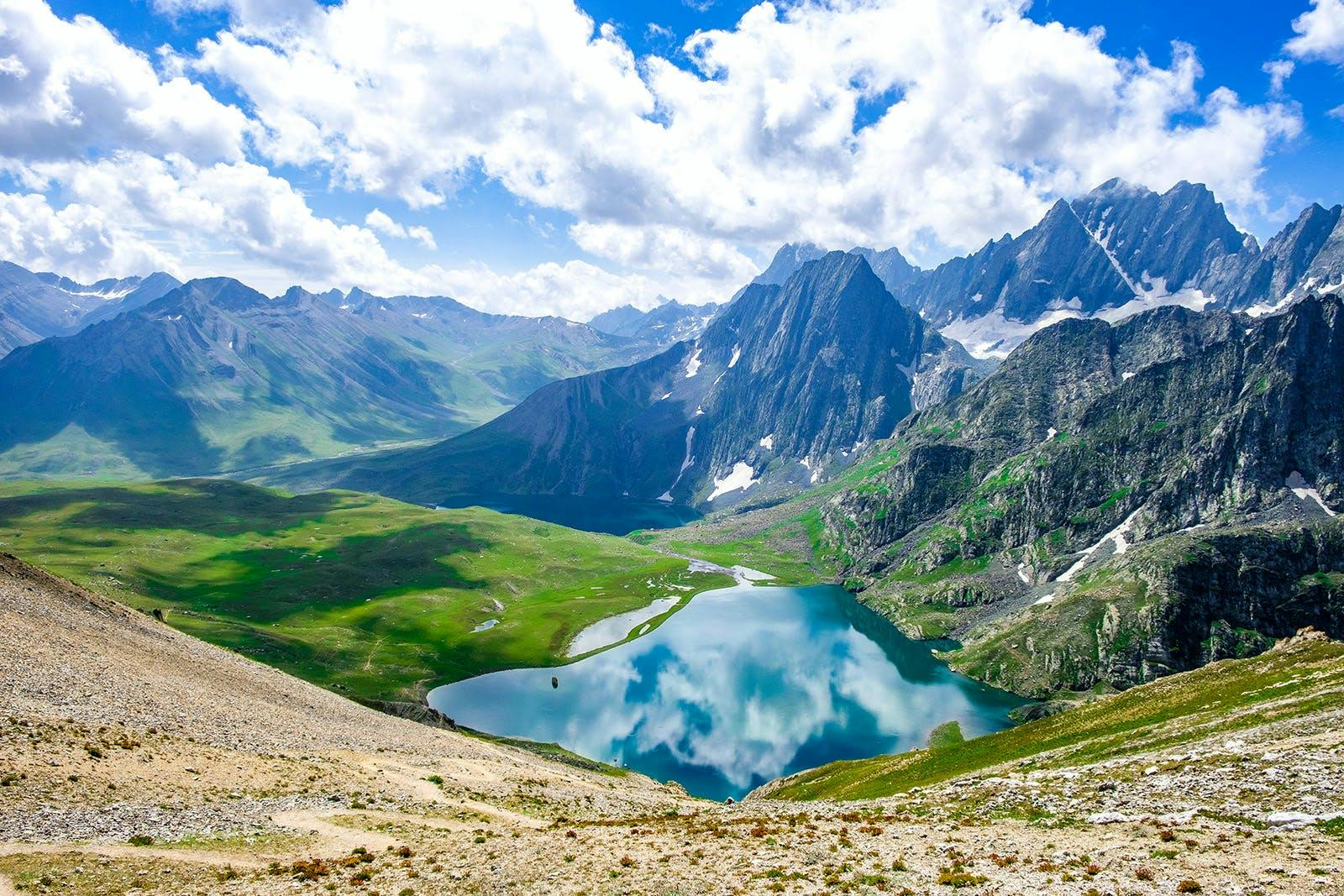
Kashmir Great Lakes Trek
The Most Beautiful Trek In India

Dates fully booked? We have 7 other fantastic treks in J&K, which are at par with KGL. Click here
TREK DIFFICULTY
Moderate-Difficult
TREK DURATION
HIGHEST ALTITUDE
SUITABLE FOR
12-62 years
Kashmir Great Lakes is one of the most beautiful treks in India. No question. It validates Kashmir’s mythical status as heaven on earth.
This is because the trek is set on a canvas that’s larger than life. It is situated 75 km northeast of Srinagar. Every day is a 360° panorama of wild, rugged mountains, rolling meadows, and turquoise alpine lakes. And you get more than six of these lakes and five very different valleys to explore!
The range of landscape makes it a moderate-difficult trek spanning over six days. This means it has long trekking days with steep ascents and descents with no easy exit points. So, it’s not meant for a beginner who hasn’t been exposed to high-altitude treks.
Having said that, the challenges are worth it. Each day is postcard-perfect, with a new alpine lake to look forward to. What makes these lakes even prettier are the snow patches that feed these lakes. You see them sliding off the serrated mountains into the lakes. Sometimes you’ll see milky white icebergs floating on the lake’s inky blue surface.
And then there are meadows of Kashmir. These meadows come in every shape and size, sometimes many in a day.
After this trek, every other trek feels as though it is a movie on a small screen. Kashmir Great Lakes, however, is an IMAX 3D experience – such is the grandeur of the trek. If you have not done this trek, put it on your bucket list!
Kashmir Great Lakes: Complete Trek Information
We have always wanted trekkers to be well-informed before they go on a Himalayan trek . Knowledge is the difference between a safe trek and a dangerous one. It’s also the difference between a wholesome experience and a superficial experience.
Use this section to learn about the Kashmir Great Lakes trek. It has in-depth information about each day of the trek, what to expect, and how you need to prepare for it. Many years of expertise have gone into this content. Trekkers find that extremely useful.

Quick itinerary
Get your trek plan

How Does Each Day Look
Complete day-wise guide with photos

How Difficult is the Kashmir Great Lakes Trek?
This will tell you just how fit you must be

Best Time to do the Kashmir Great Lakes Trek
Time your trek well

How to Reach the Base Camp
Plan your travel

What to Pack for Your Trek
Things you must take on the trek

Why get fit for Kashmir Great Lakes Trek
Fitness matters for the trek

Frequently Asked Questions
Get your questions answered here
Kashmir Great Lakes Videos
Watch these videos to prepare well for your trek.
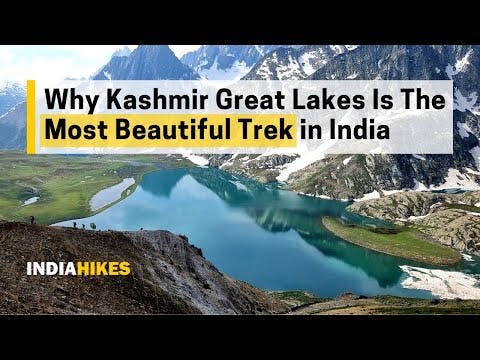
Lakes at a Glance
The Kashmir Great Lakes trek is synonymous for its 6 famous alpine lakes. Each day has a new alpine lake to look forward to. What makes these lakes even prettier are the snow patches that feed these lakes. You see them sliding off the serrated mountains into the lakes.
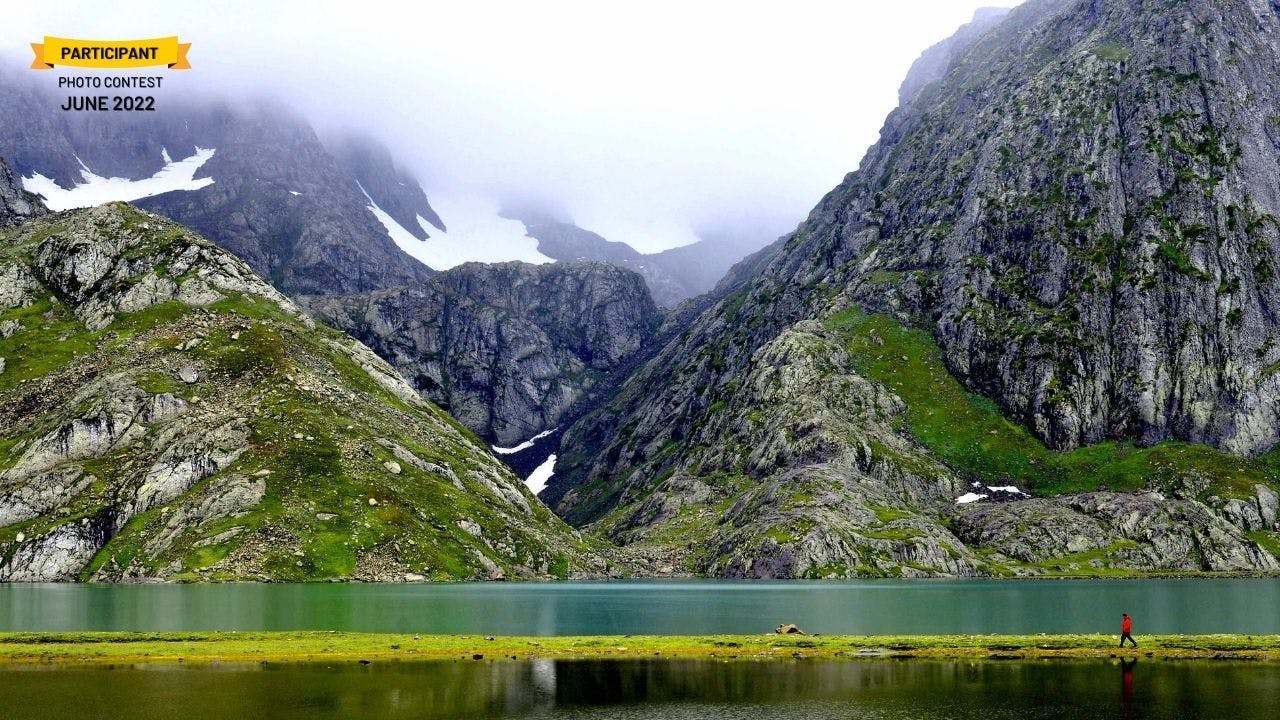
A trekker enjoying the view of Vishnusar lake. Image by Padmanabha K G
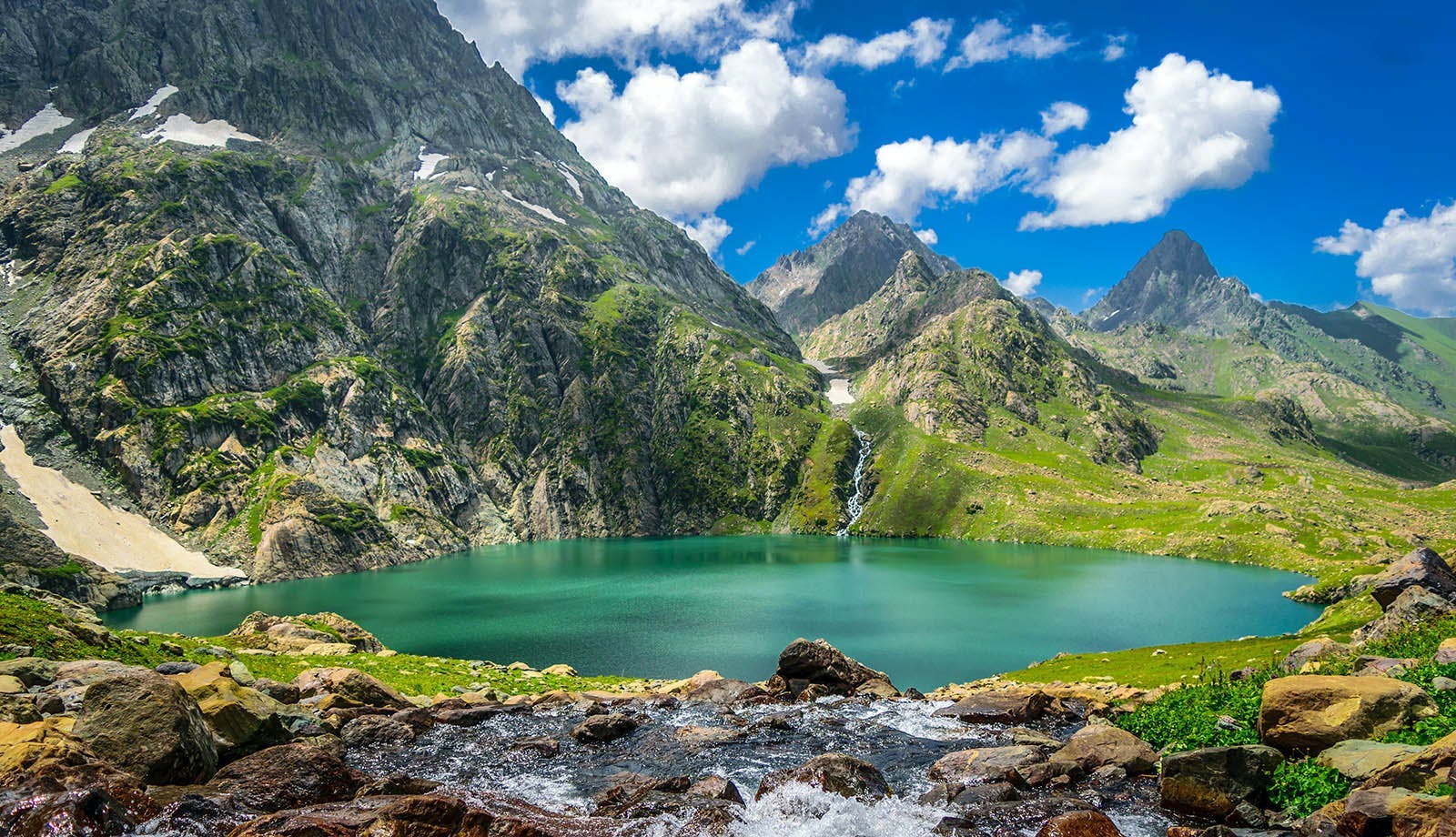
Gadsar Lake. Image by Ankit Patidar
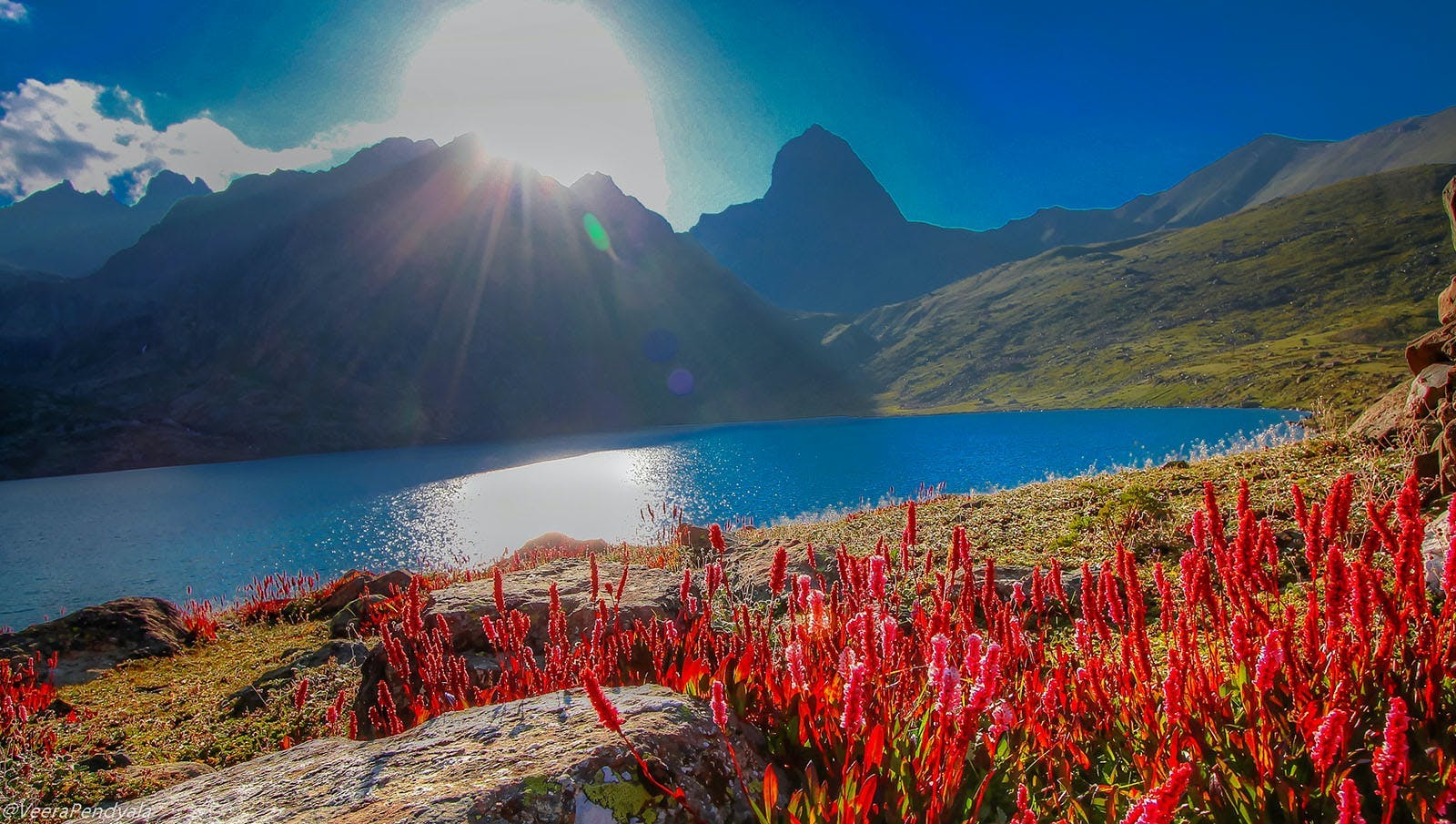
Vishnusar Lake. Image by Veera Pendyala

Kishansar Lake. Image by Animesh Hazra
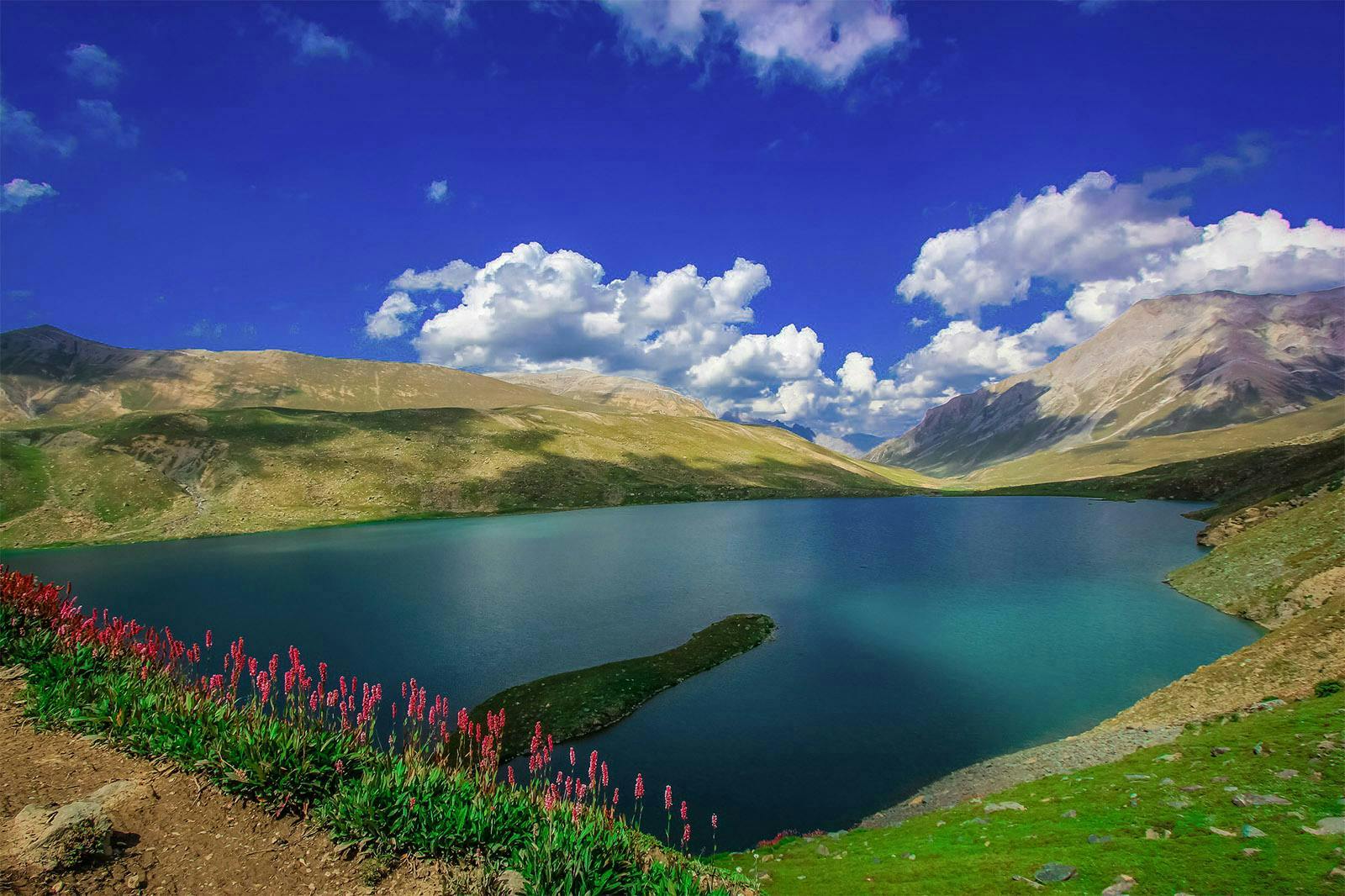
Vishnusar Lake. Image by Brijesh Tiwari
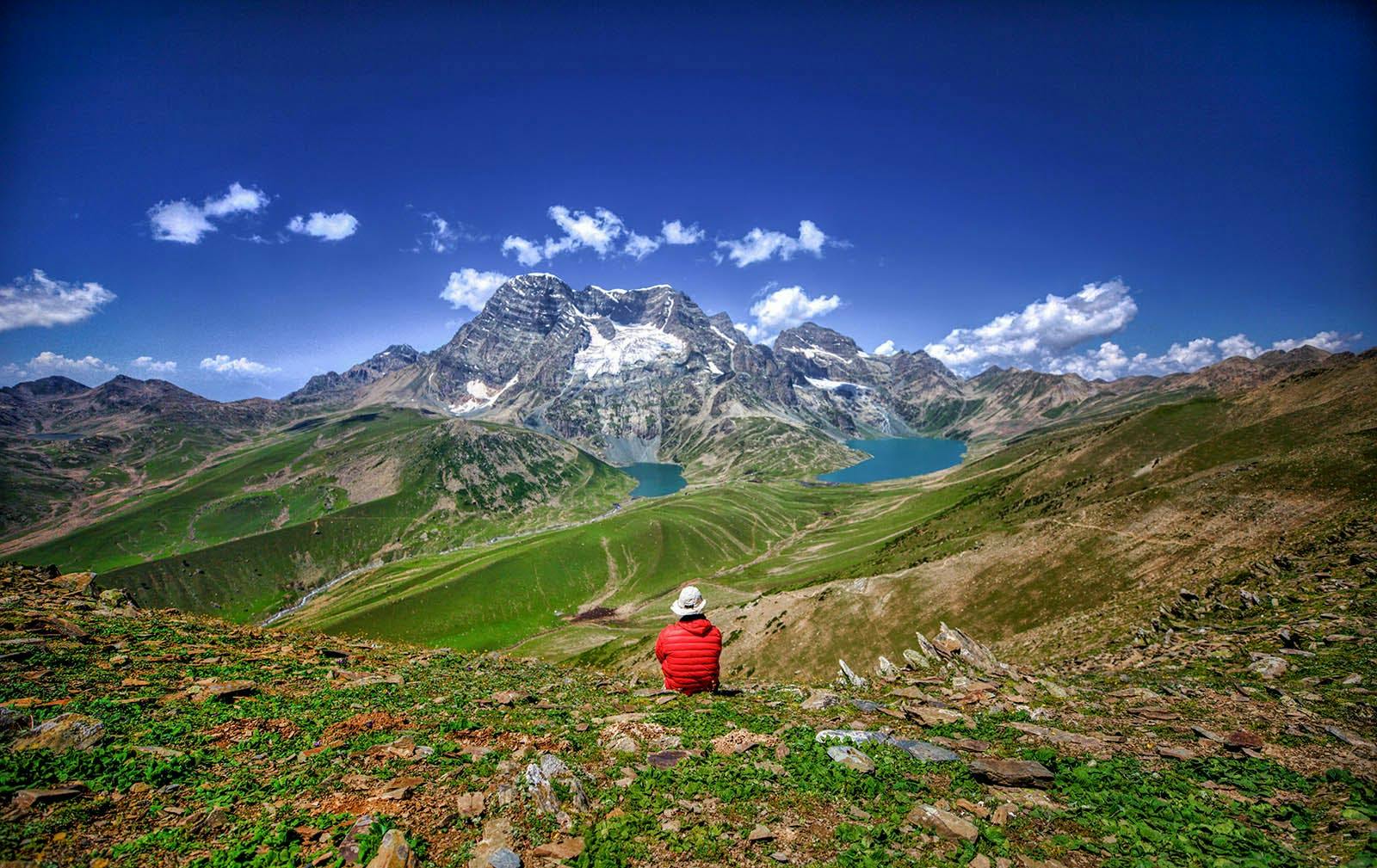
Nandkol and Gangabal Lake. Image by Prasanth Premchandra

Gadsar Lake. Image by Satyen Dasgupta
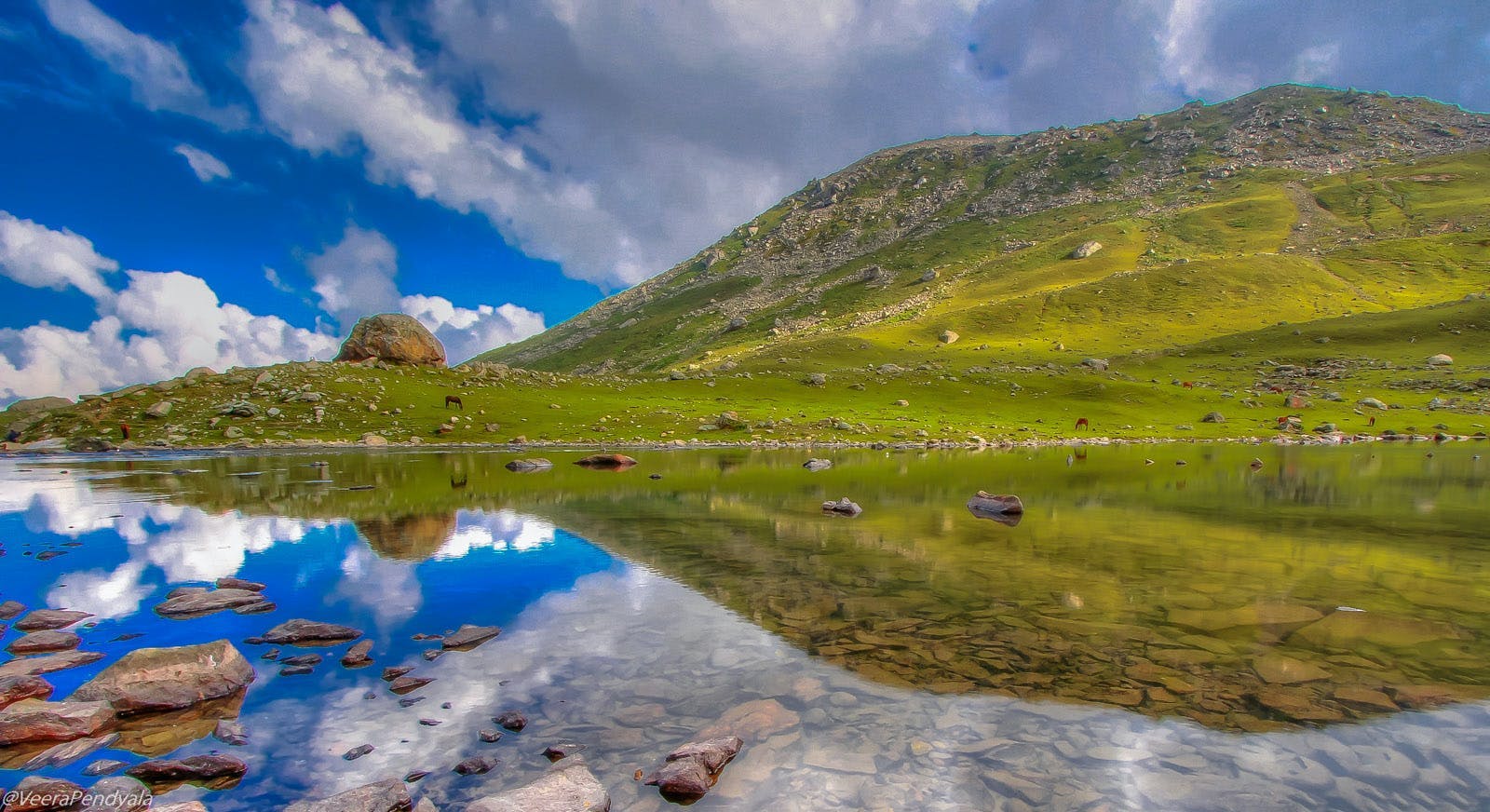
Nandkol Lake. Image by Veera Pendyala
Campsites at a Glance
At Indiahikes, we are very particular about choosing terrific campsites. For the Kashmir Great Lakes trek too, after a lot of back and forth, we have settled on these terrific campsites, which trekkers have come to love.

Smooth green grass, almost manicured, a few lone maple trees and a few horses enjoying the graze are what Satsar meadows look like where your campsite is. Picture by Sachin
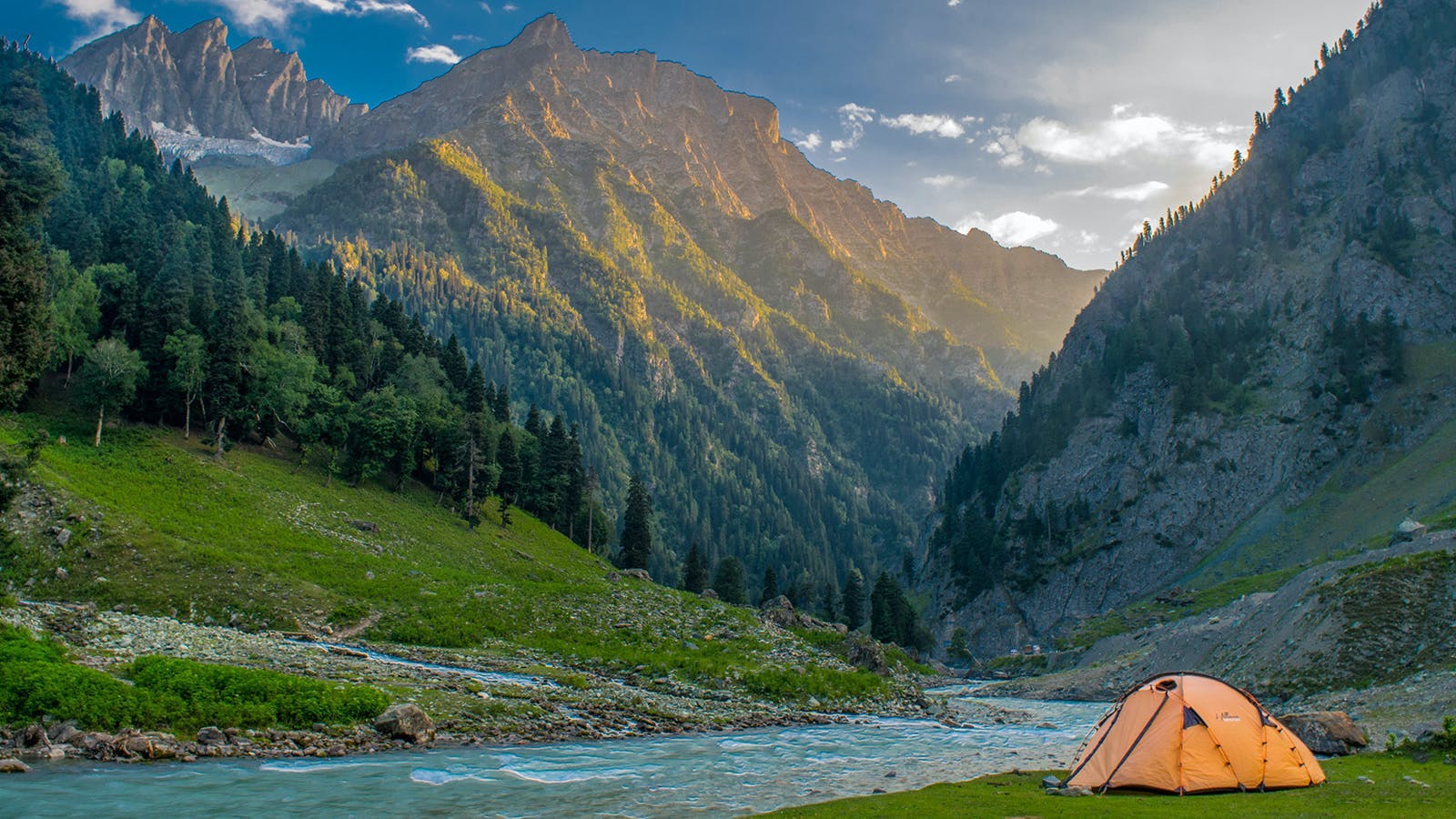
Sonarmarg is right next to the NH1 highway. You get to see the Kolohoi glacier in the backdrop with the Sindh river flowing right next to you. Picture by Nimesh Mittal

Your first campsite would be the Nichanai campsite. Nichnai grasslands show you how massive and rugged meadows can be. Picture by Sachin
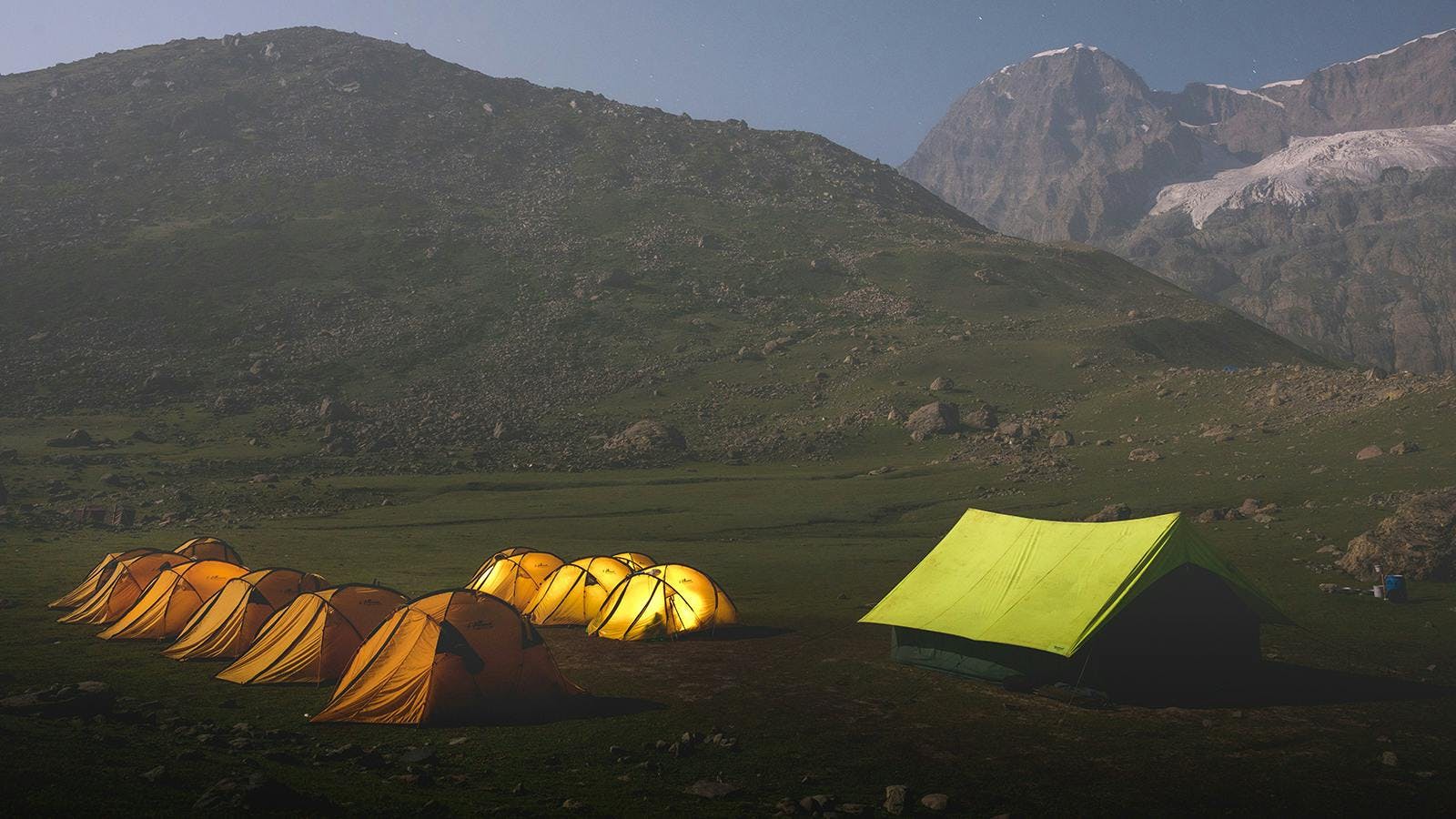
This campsite is known for the theatrics with clouds and Harmukh peak standing tall next to Nandkol and Gangabal lakes. A Night shot of the campsite. Picture by Sachin
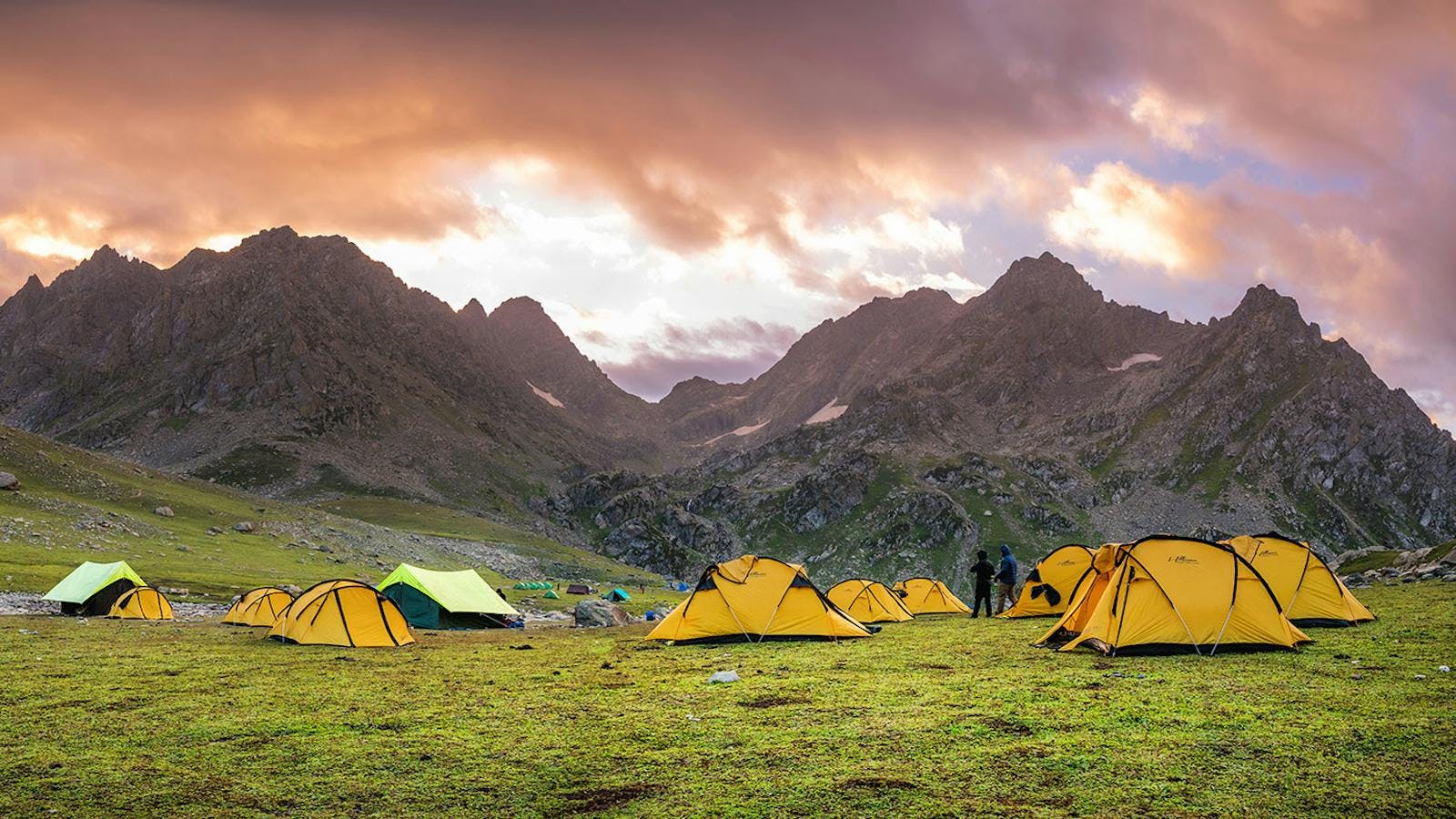
The evening setting at the Satsar campsite is a dream. Do not miss out on the night skies when you are trekking on the Kashmir Great Lakes trek. Picture by Sachin
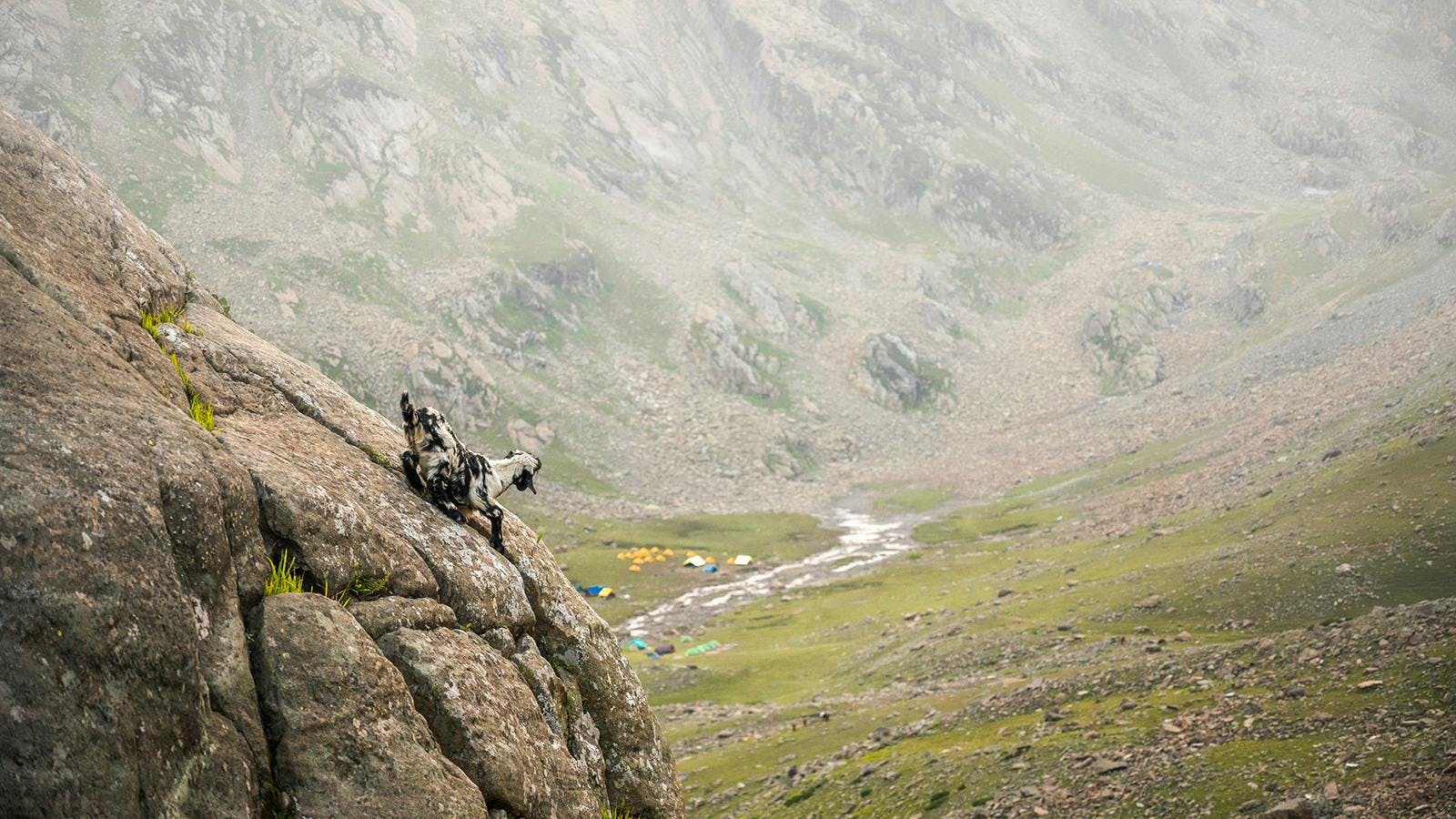
A goat's eye view of the Satsar campsite. Picture by Sachin
Why I Believe Everyone Must Trek: A Note from the Founder

Trekking transforms lives. It has completely changed my life. When I see my colleagues at Indiahikes, all of them have been impacted greatly. The transformations have been profound and irreversible.
I see it in our trekkers too. I have seen them change professions, careers or start a new life. I have seen them get in and out of relationships, and start new projects. These are life-changing experiences.
I have seen children building resilience. I have seen families come together. When I see those above 55, I see them rediscover passion and a sense of purpose. These are not small gains.
In the mountains new professions, new economies and new businesses have opened up. Our staff no longer go to cities to earn their living. Their income has increased. Above all, they are happiest working in this world. Trekking has been truly transformative.
Everyone must trek. It transforms lives far more than you imagine.
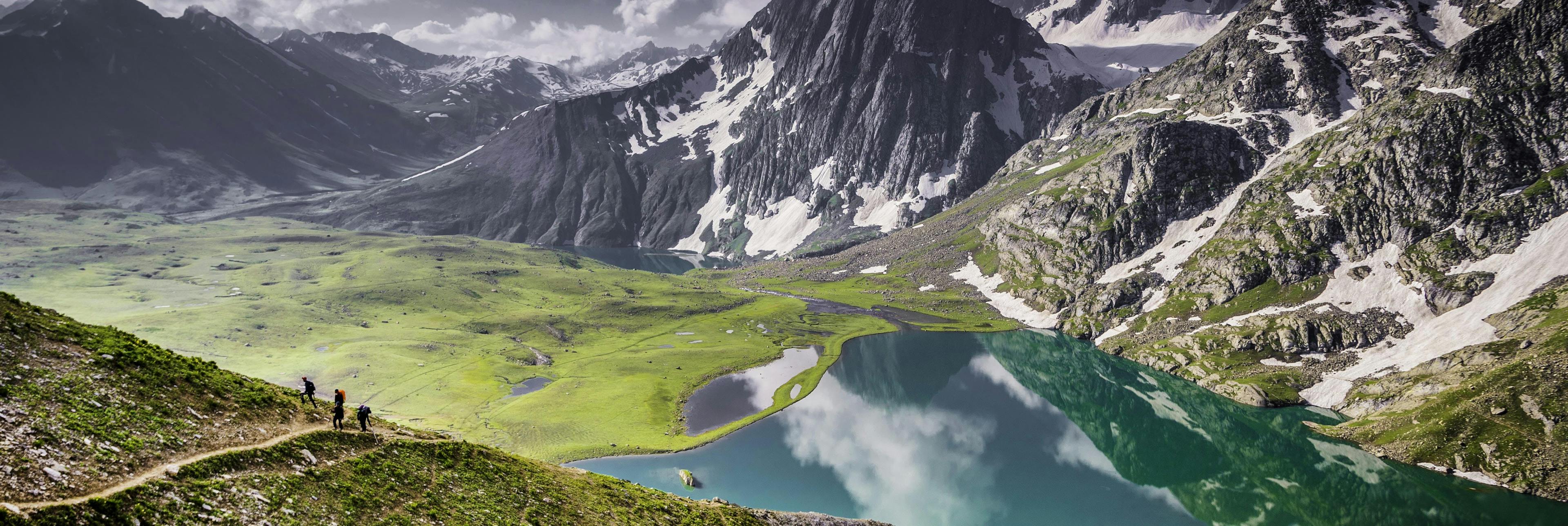
Expert Speak
Sandhya UC, Co-Founder, COO

Sandhya is a founding partner at Indiahikes. Over the past ten years, she has explored and put on the map a few of the greatest Himalayan treks in India, including Kashmir Great Lakes and Kedarkantha. She is a TedX Speaker and has been awarded the Women of Worth Award by Outlook Business in 2017.
Here’s Sandhya talking about the most beautiful trek in our country .
What I Like and Don’t Like About the Kashmir Great Lakes Trek
What I Like About the Kashmir Great Lakes Trek
Sandhya is a founding partner at Indiahikes. Over the past ten years, she has explored and put on the map a few of the greatest Himalayan treks in India, including Kashmir Great Lakes and Kedarkantha. She is a TedX Speaker and has been awarded the Women of Worth Award by Outlook Business in 2017. Here’s Sandhya talking about the most beautiful trek in our country.
1 . The magnificent mountain scenery on the trek
Most treks in the Himalayas are very scenic. But Kashmir Great Lakes is on a scale of its own. In fact, the mountains of Kashmir are like that. They have a larger-than-life presence around you. I would not be exaggerating too much if I say that a trek in Kashmir is like watching on an IMAX screen while everywhere else is on a normal TV screen. Kashmir — you feel it everywhere.
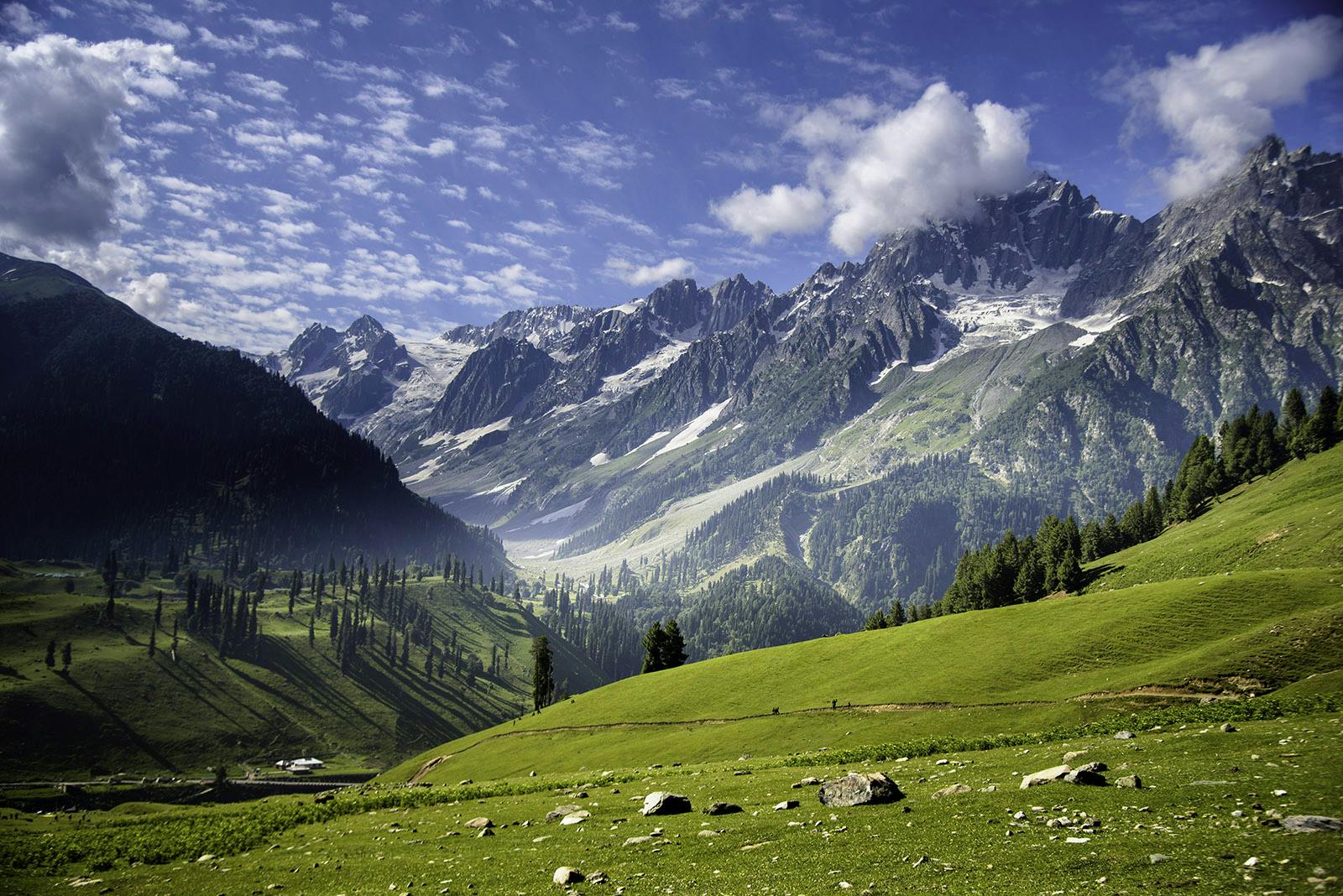
The larger-than-life scale of the mountains, meadows, and lakes on the trek of KGL. Picture by Rajshree Sarada
2 . The variety of the valleys and meadows
The Kashmir Great Lakes trek has 7 trekking days. And coincidentally you are also trekking in 7 different valleys. What’s more, each of these valleys, spread themselves out each day of the trek. Every valley gives hard competition to the valley before and the valley after.
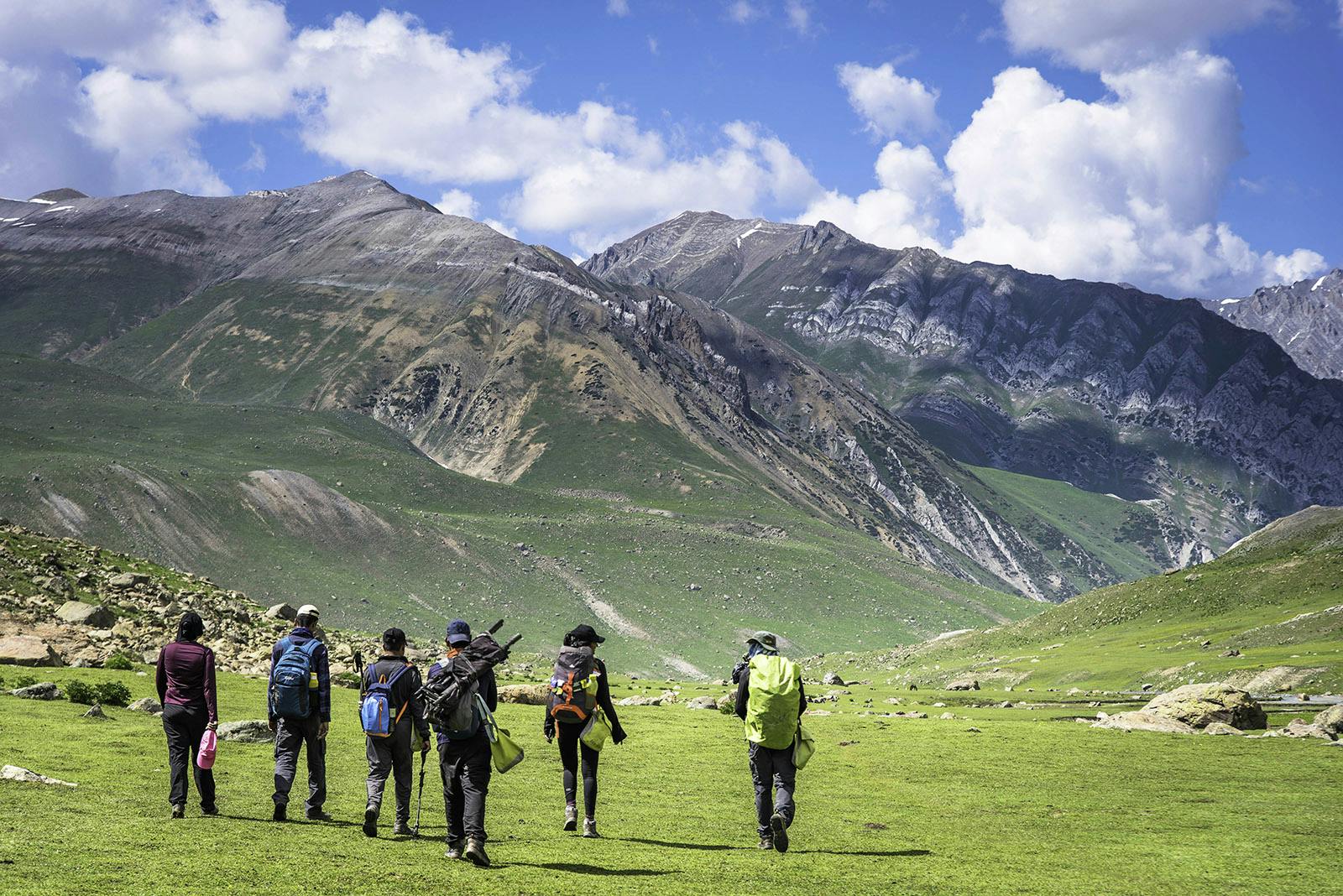
Trekkers rejoice trekking through the meadows after crossing Nichnai Pass and going through the wide valley. Photo by Rajshree
3 . The unforgettable walks in the meadows
Among the 7 different valleys you trek, 6 happen to be distinct grasslands or meadows. These high altitude meadows and grasslands are connected to one another via high passes. One would expect the meadows on either side of a pass to be similar. But they aren’t. Each one of them is a world of its own and has a charm of its own.
The Shekdur meadows also known as table top set amidst Maples and Birch trees is where you start. Nichnai grasslands show you how massive and rugged meadows can be. Just cross the Nichnai pass and you enter a meadow that you don’t want to end.
A wide grassland, descending gently laden with wildflowers, a gentle river flowing in the middle is what the Vishnusar grassland is all about.
The Gadsar meadow is more dramatic. It is narrower with more jagged mountains lining on either side. A big Gadsar occupies the central landscape but leading to it are many smaller lakes. Flowers bloom in the entire valley in wild abandon.
Climb up from Gadsar valley and you get transported to the “windows wall paper” valley of Satsar. Smooth green grass, almost manicured, a few lone maple trees and a few horses enjoying the graze is what Satsar meadows looks like. I have never seen greener grass anywhere else.
The final grassland is the Gangabal expanse. When you see the valley below from Zaj pass, you are almost looking at the world map in green. Gangabal in blue looks like Africa! Nandkol lies by its side. 4 other lakes also dot the green landscape.
Personally for me, it is the meadows on the trek that take the cake and are my top reason to love KGL.
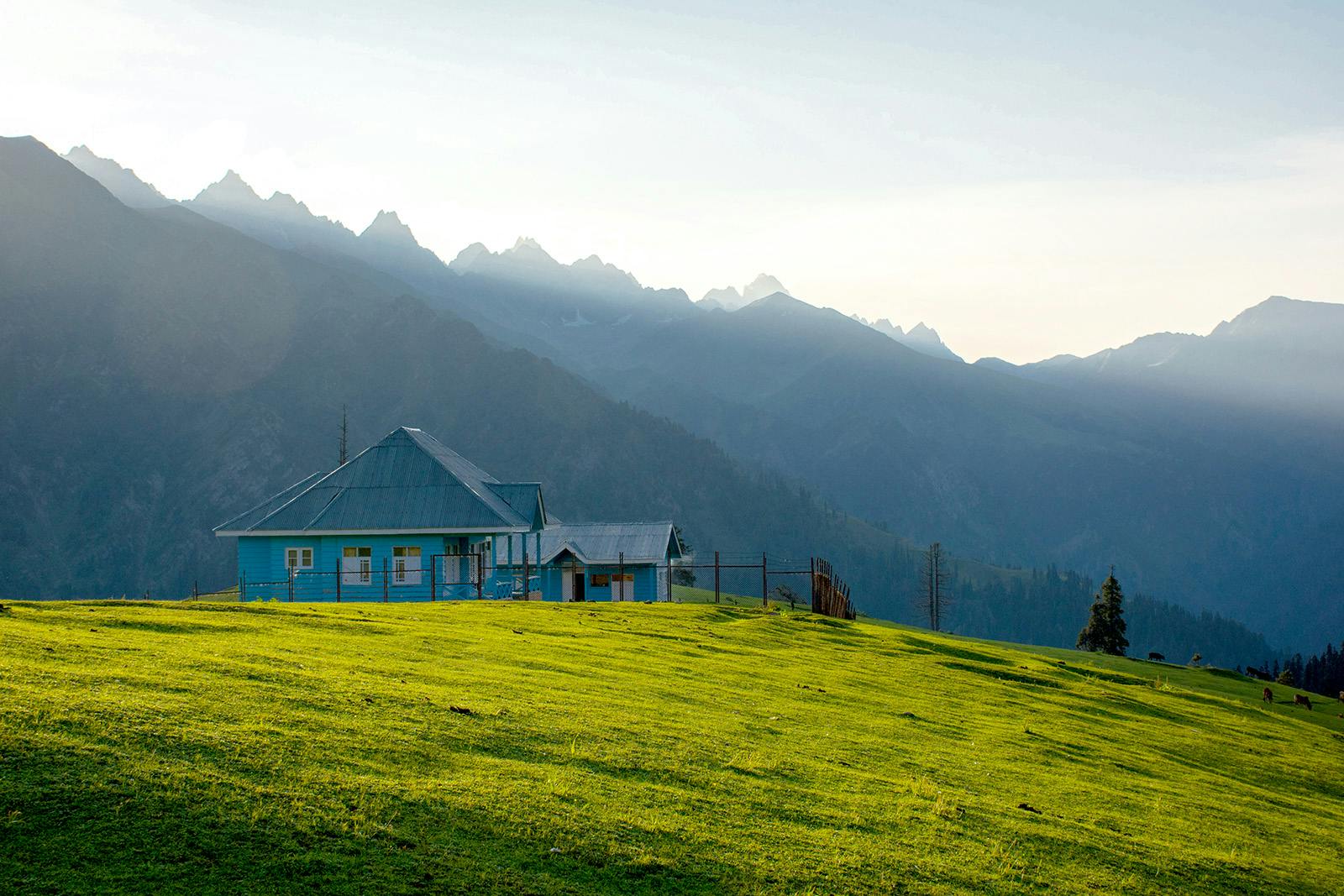
The Meadows on the last day of the trek after the Gangabal campsite. Photo by Vishwajeet Chavan
4 . The lakes
You cannot talk about Kashmir Great Lakes Trek without mentioning the lakes. When I saw one or two pictures of the lakes before my exploration, I thought they were photoshopped pictures from some Scandinavian country. I did not believe such lakes existed in the mountains of our country. These crystal clear high altitude lakes change colours all through the day.
Starting from clear at dawn to sea green to light blue to inky blue by evening. The twin lakes Vishnusar and Kishansar, the sea-green Gadsar with ice floes, the sight of gigantic Gangabal along with its twin Nandkol are some of the best lake scenery you will see in the world.
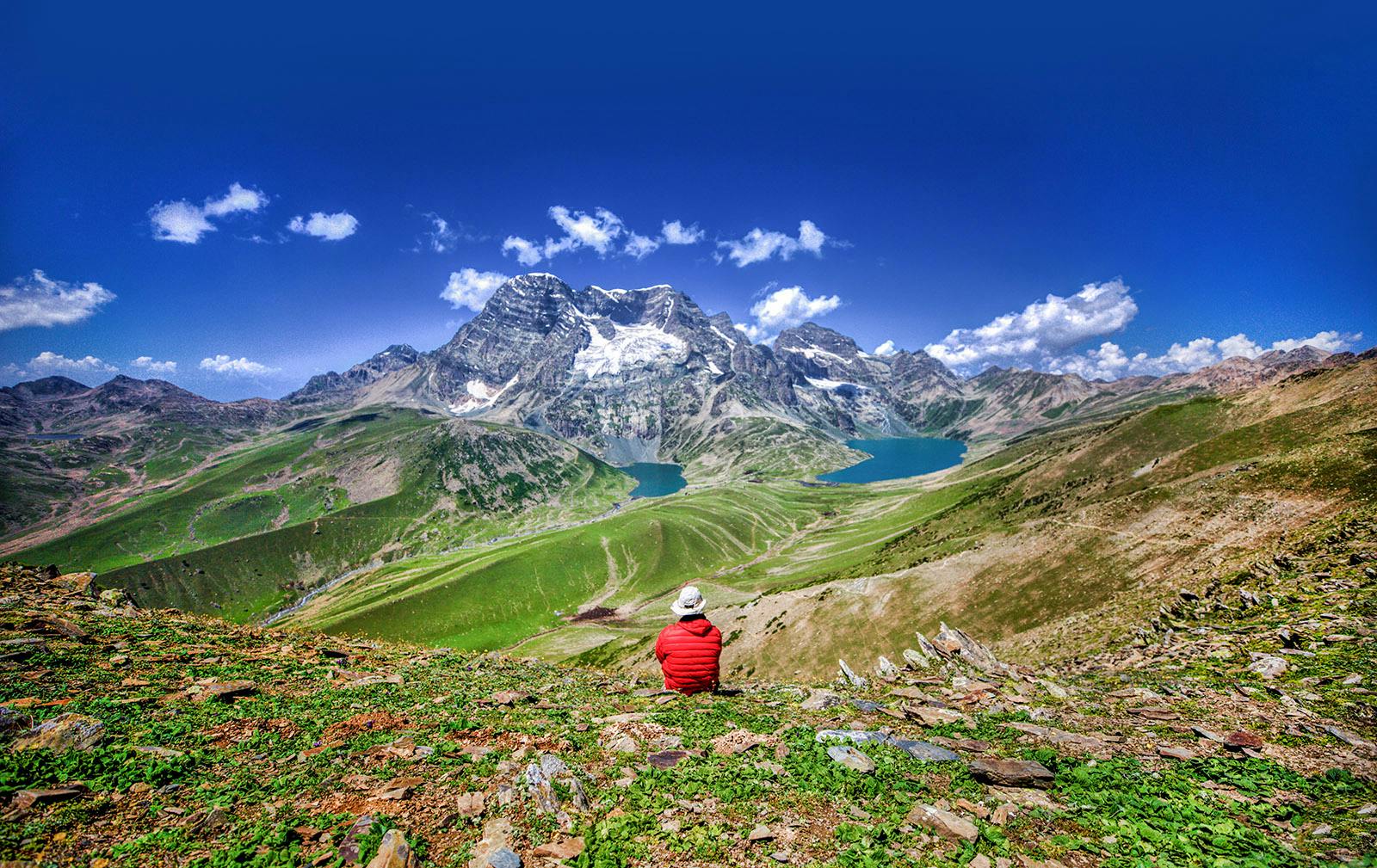
The twin lakes of Gangabal and Nandkol taken from Zaj Pass on a clear day. Photo by Prasanth Premchandran
What I Don't Like About the Kashmir Great Lakes Trek
1 . The dhabas on the trek
In the last 4-5 years a lot of dhabas have sprung up on the trek. Especially in the beginning and towards the end. My ideal trek is away from civilization. I go out to getaway. Even a hot cup of tea on a tiring trail will not make me root for a dhaba on a trail. Thankfully they are only on the periphery of the trail.
2 . The garbage on the trail
This is a total bummer on the KGL trail. For a very long time, the campsites around the first and the last lakes on the trek are littered with camping leftovers. No matter how many sacks of litter our trekkers pick from Gangabal and Nandkol or Vishansar, these camps get littered by the short campers who come to the lakes.
The trail to Vishnusar around Nichnai and the trail down to Naranag in the pine forest are also littered. I sincerely hope better sense prevails in those who come to these lakes.
3 . Unexpected challenges on the trek
Thanks to the lovely green meadows, trails lined by mountain flowers and the aquamarine lakes, everyone assumes the Kashmir Great Lakes trek is a walk on the grass. The reality is far from it. It is a moderate-difficult trek.
Long trek days and high passes to cross are a reality every day. There are quite a few rocky sections to negotiate too. You get them 3 or 4 times on the trail when you least expect them. I would say these unexpected challenges make the trek even more spectacular.
Kashmir Great Lakes Is Best Discovered Through Pictures
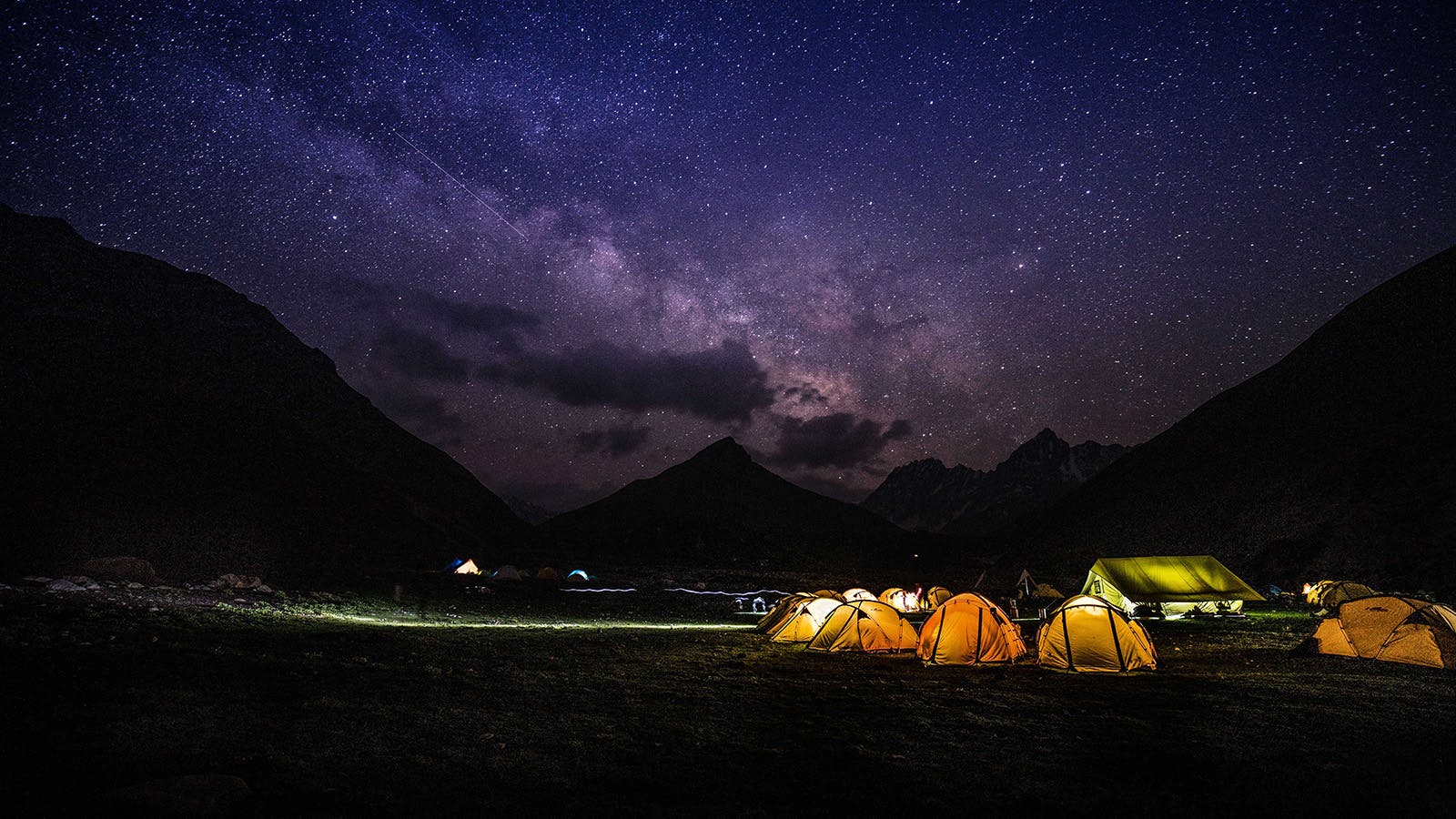
Photo taken from Gadsar Campsite with the Milky way and billion of stars.
Picture by: Rajarshi Manna
Night Sky on Kashmir Great Lakes trek
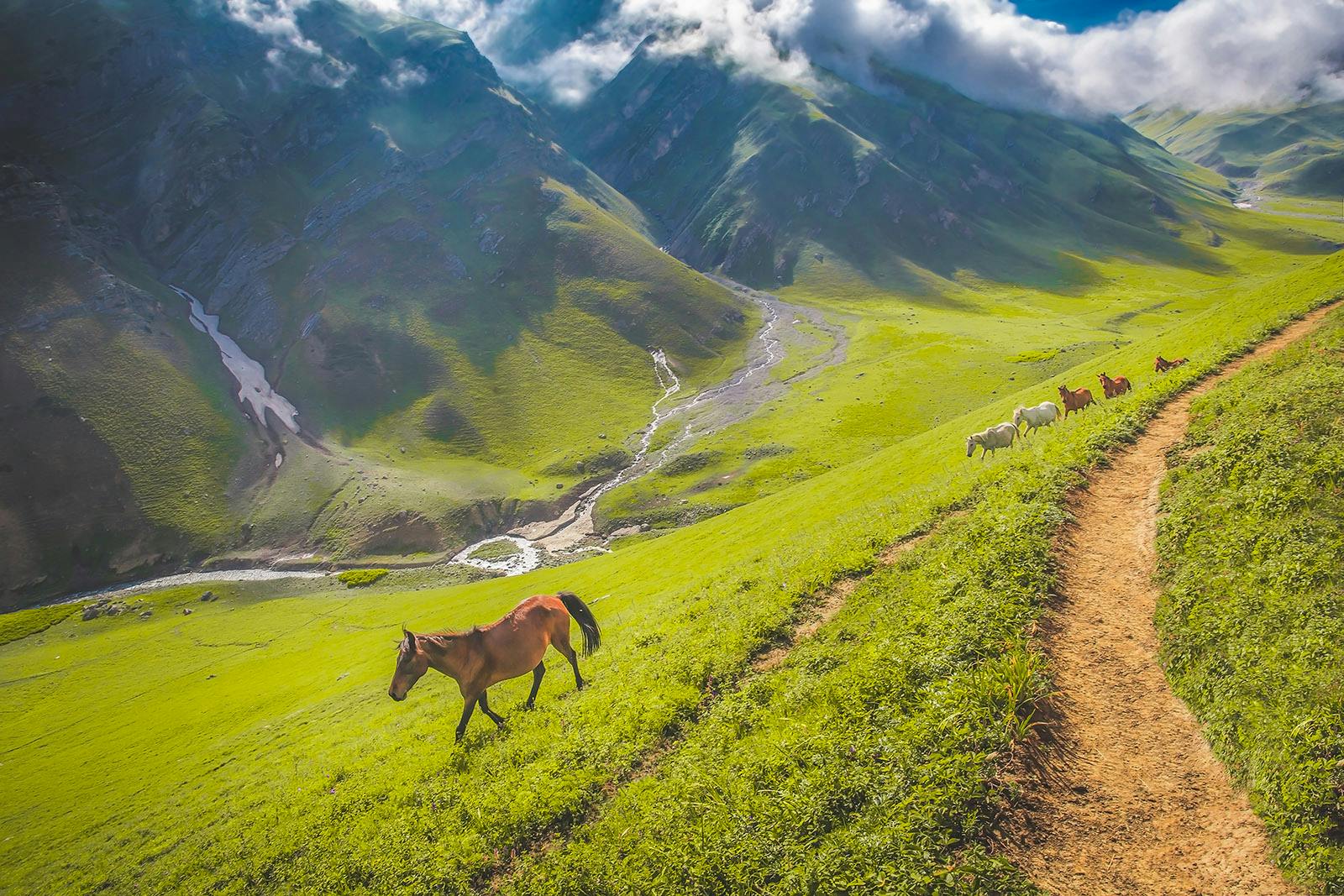
The setting of meadows, horses grazing beside you and the glacier waters flowing is a set taken for endless wallpaper moments.
Picture by: Suresh Kerkatta
Picture Perfect
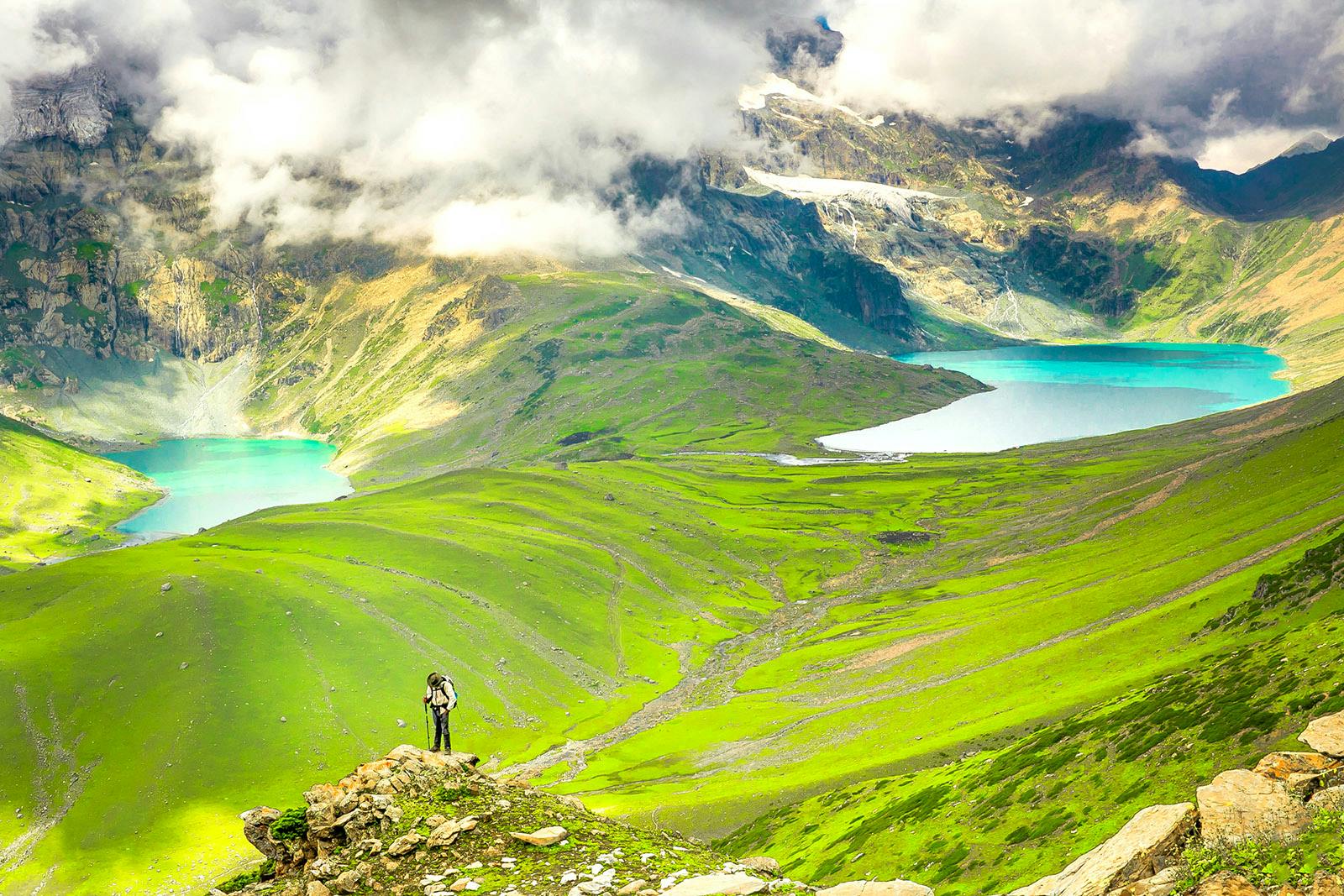
Zaj Pass is your last pass crossing on the trek. If you get clear weather, then this view of twin lakes is sure to blow your minds off.
Picture by: Suresh Kerketta
The Twin Lakes
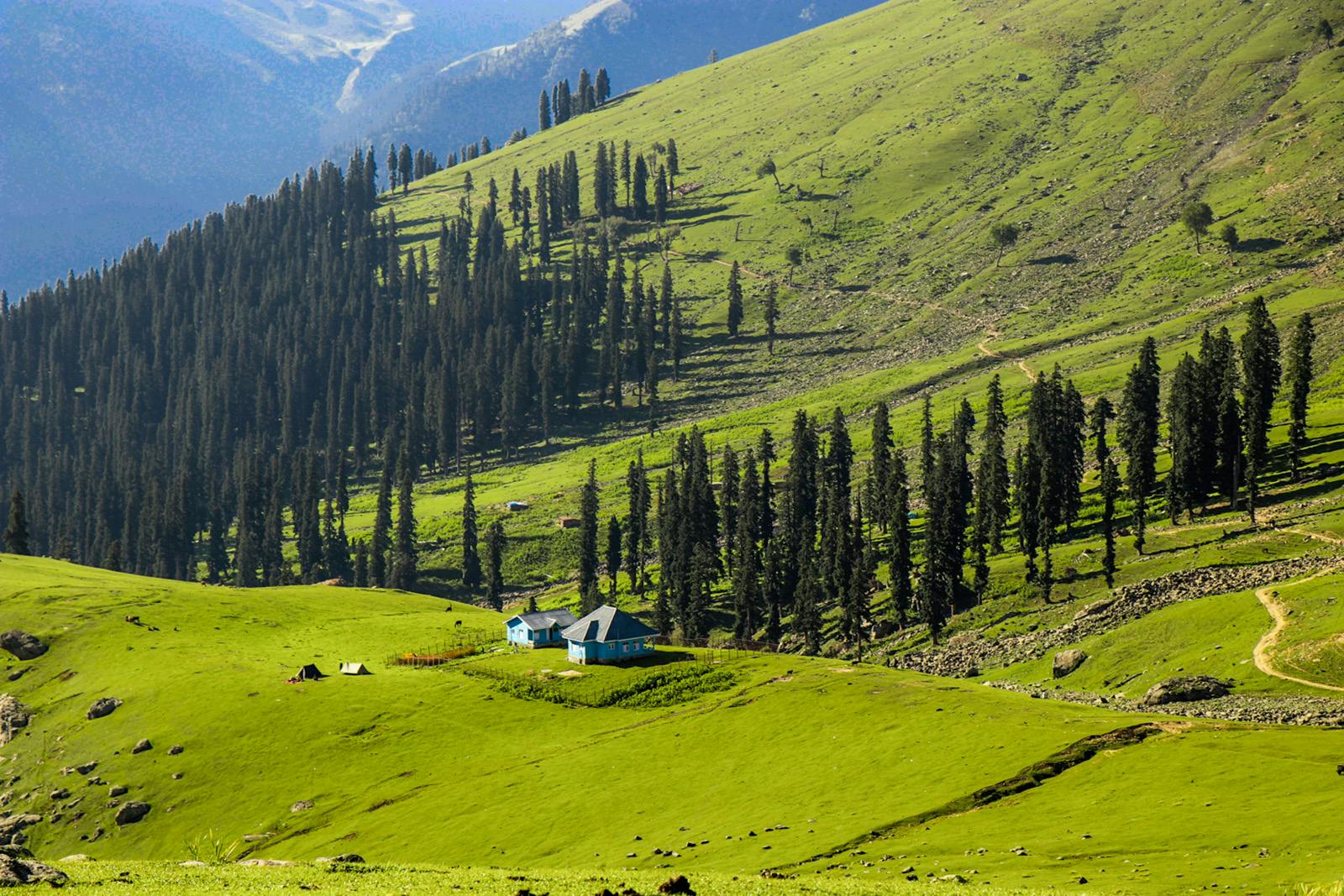
An hour away from the Gangabal campsite, you will hit the fringes of the tree line. Pine trees line the meadows and you also see the first traces of civilization with the presence of a log hut - Marking the end of this magnificent trek
Picture by: Divakar
Sight of Forest section
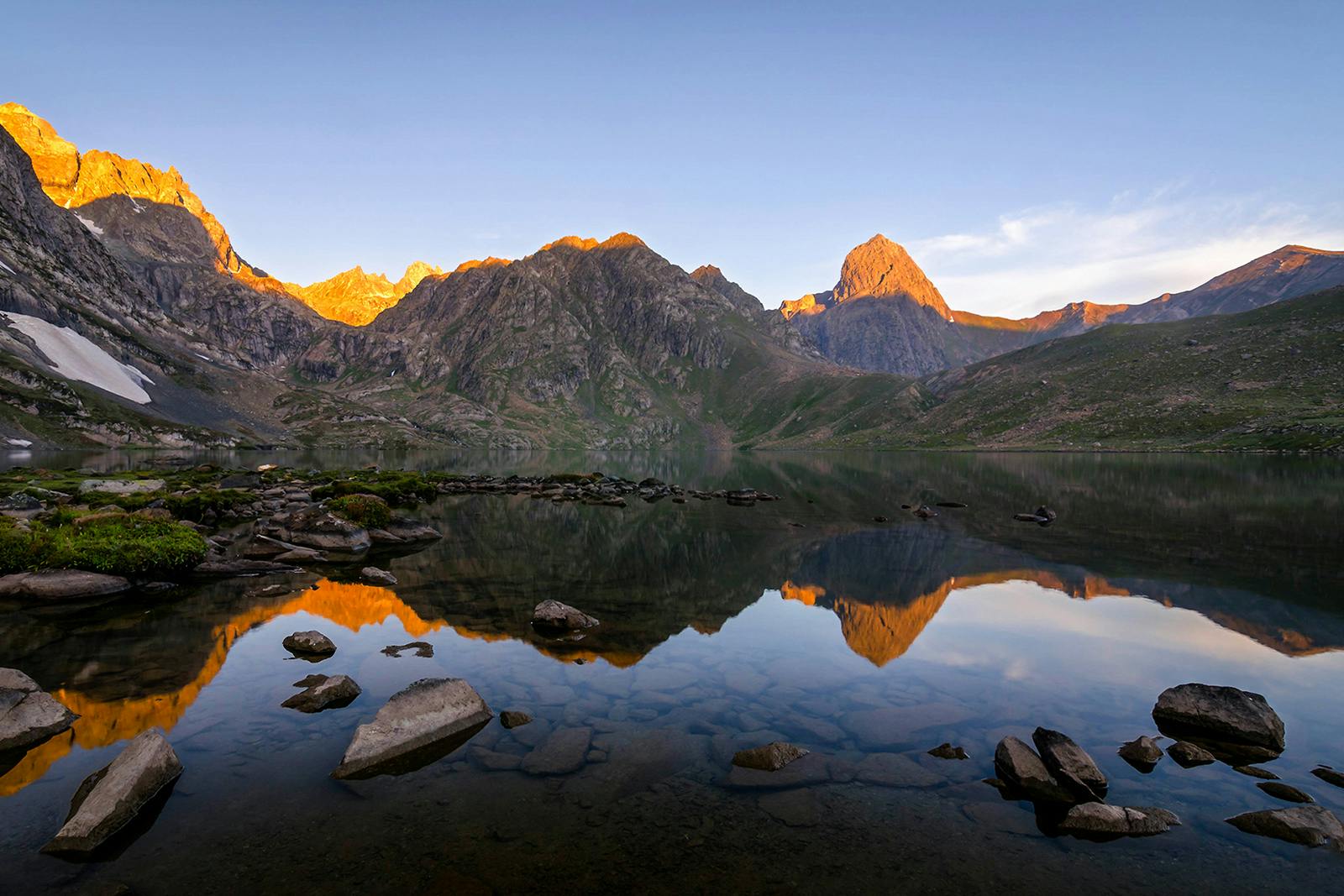
The colours on the Vishnusar Lake transition according to the climate and time of the day. It is a mysterious feeling when you hop through the small rocks.
Picture by: Sangram Biswas
Vishnusar Lake
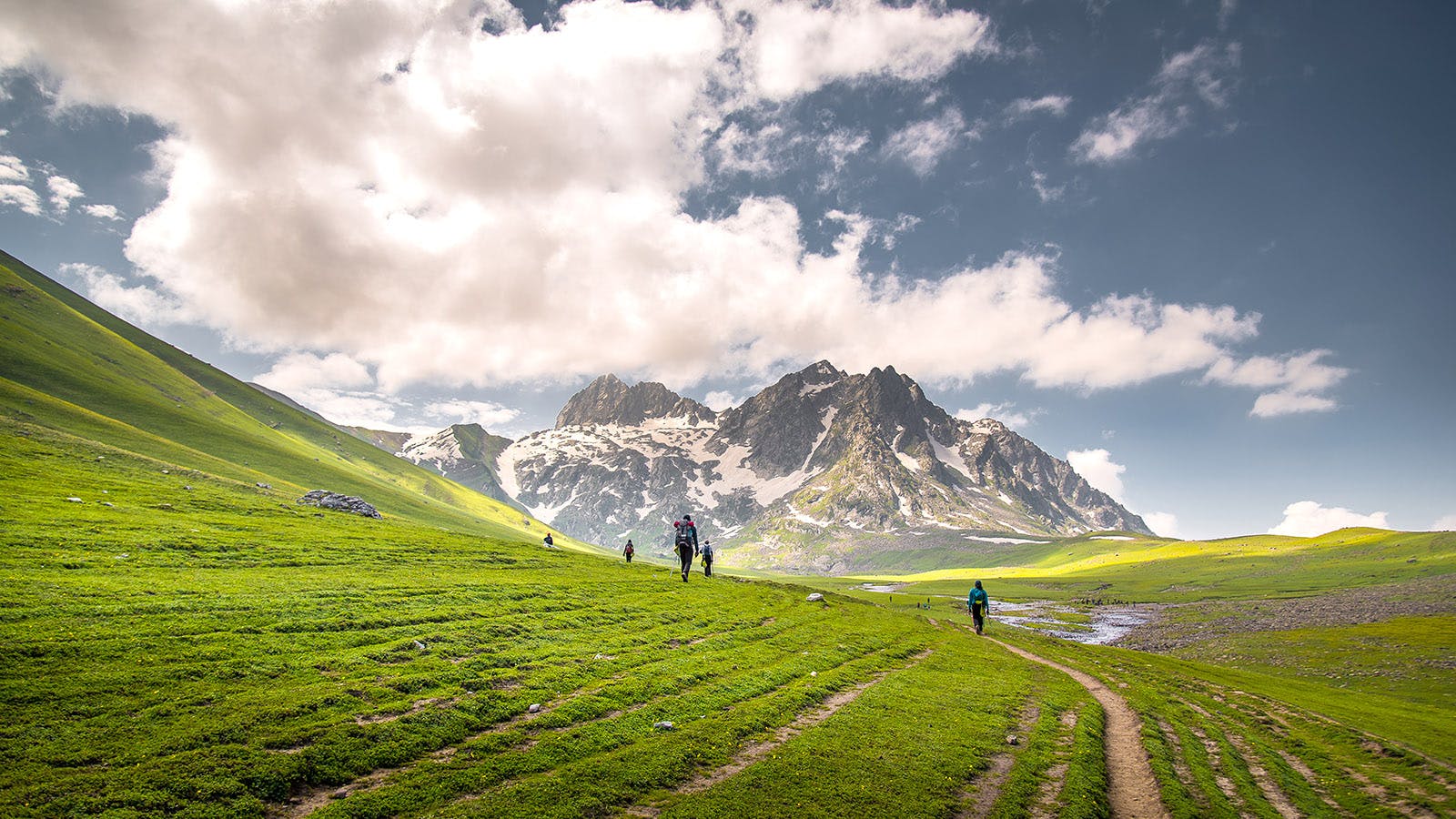
The Satsar Valley landscape ahead is captivating. Isolated mountains stand in front. To your left are a few deep craters.
Picture by: Rajshree
The Vast Satsar Meadows

From the Gadsar Pass which is your highest point, when you look back, you get to see the picturesque lakes of Kishansar and Vishnusar.
Picture by: Swaminathan Jayaraman
The Iconic Gadsar Pass

Most of the campsites on the Kashmir Great Lakes trek are in open meadows where streams are flowing close by.
Picture by: Jones
Open Camping Grounds
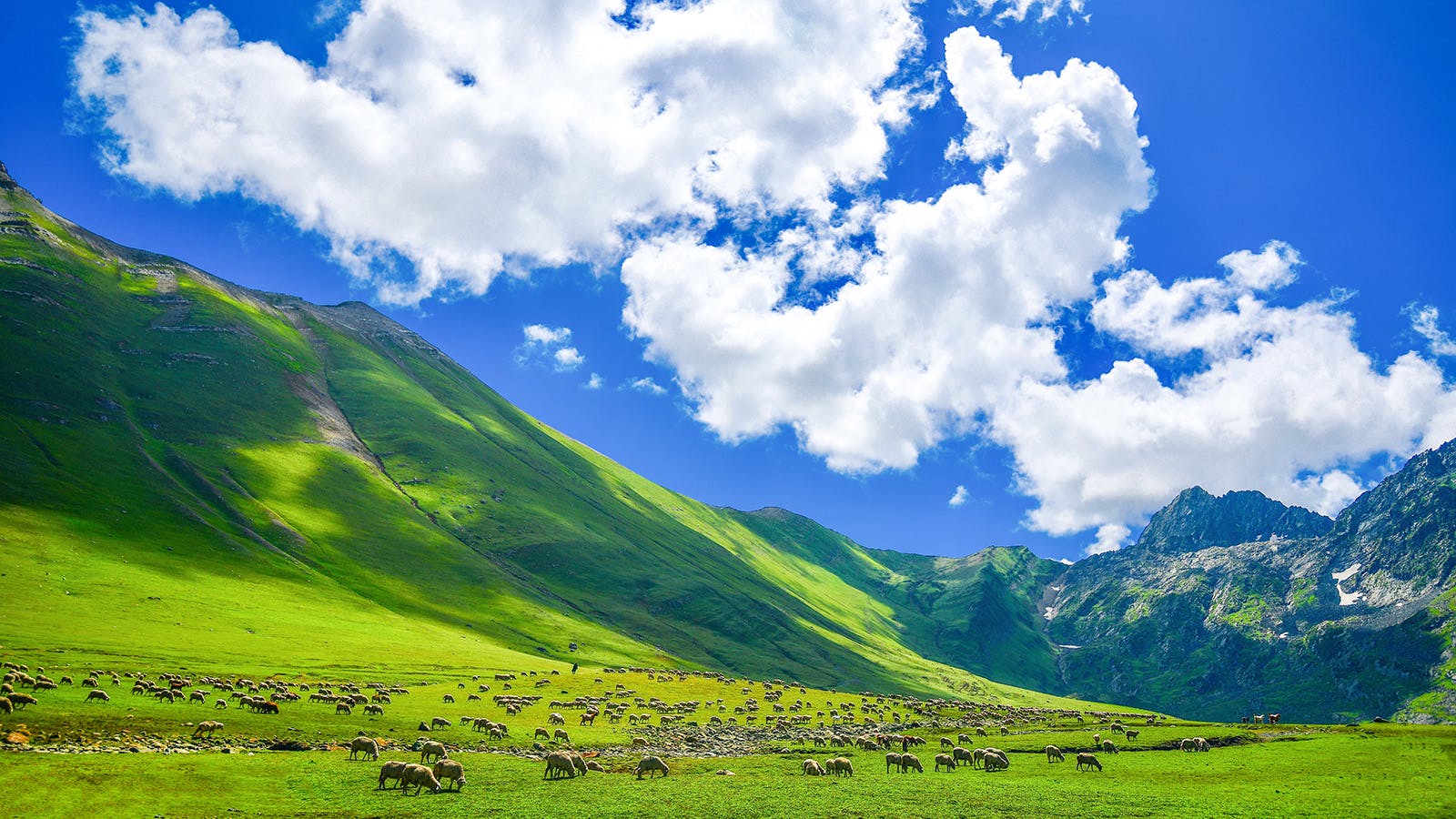
Do not go by just the photos of these endless meadows. You walk through some lovely stretch of the meadows. However, there are multiple ascents and descents to climb on the trek.
Picture by: Gaurav shah
Endless Meadows
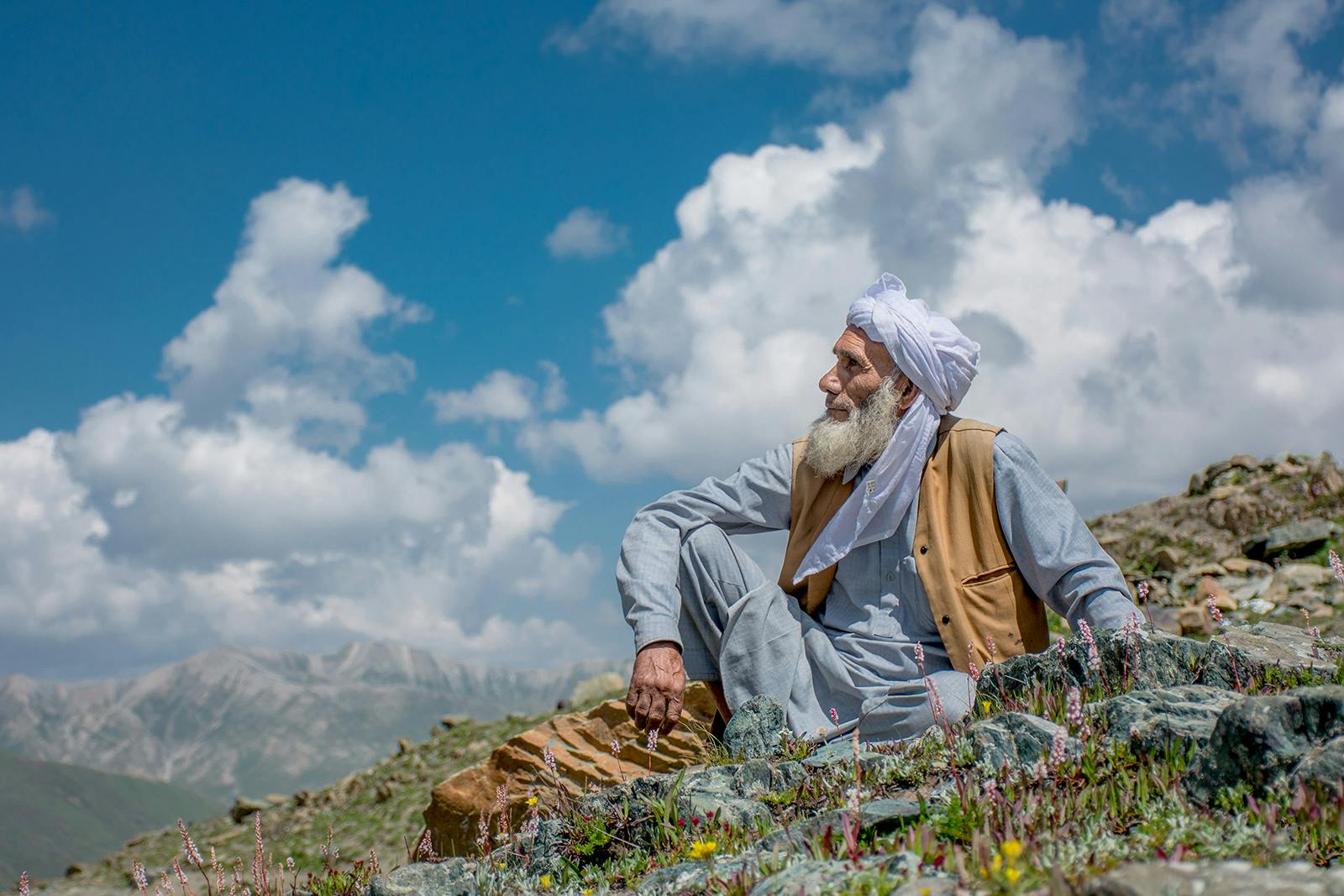
You will see Gujjars on the trail taking their cattle for grazing.
Picture by: Vishwajeet Chavan
A Local Shepherd
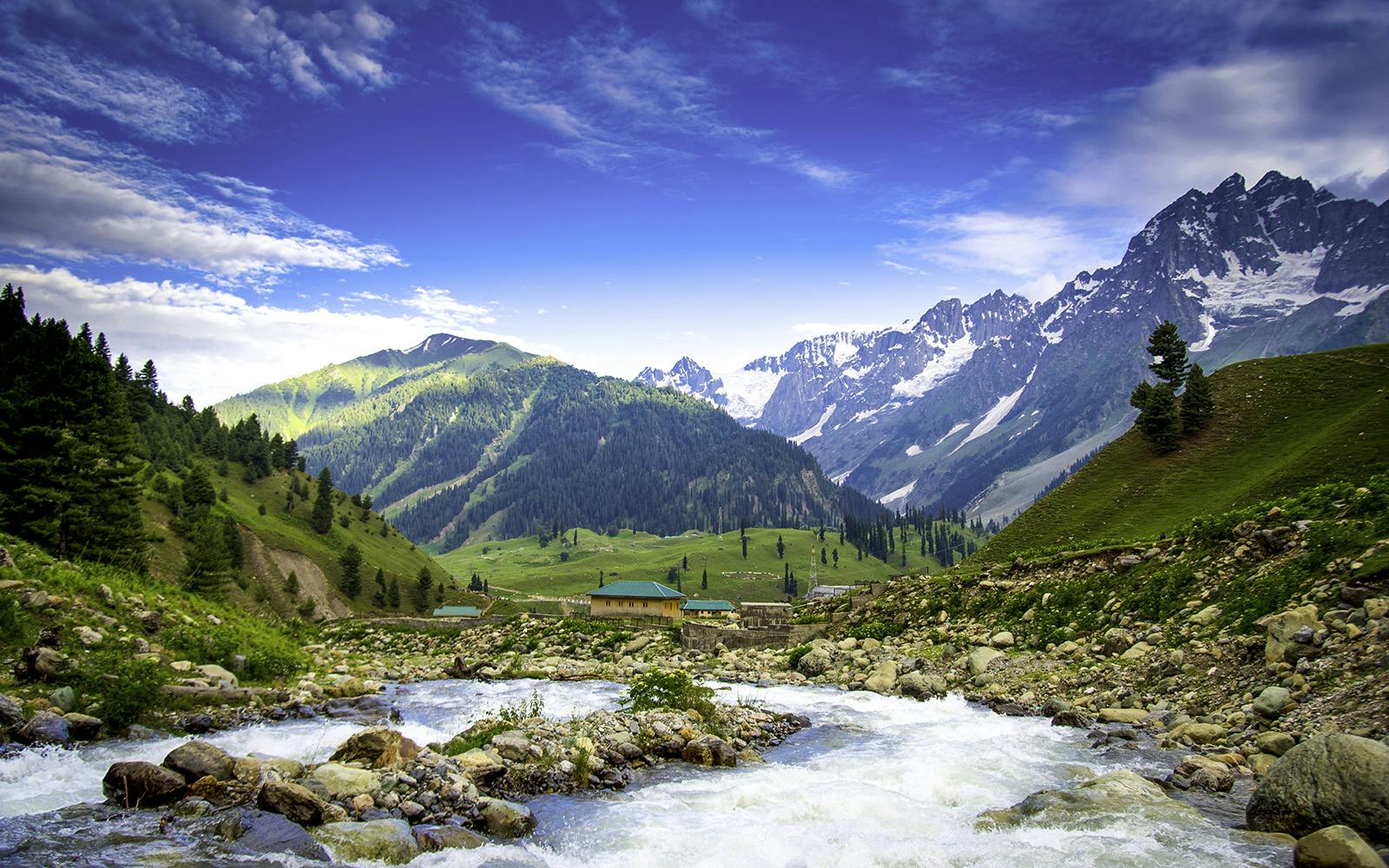
When you start your trek at Sonarmarg, the Thajiwas Glacier becomes more visible.
White Glaciers
Trek Trivia
Things Nobody Tells You About Kashmir Great Lakes Trek
- Wonder of Wangath Ruins
- Surprise Elements on KGL
- Mythological Significance
Naranag Temple
The Naranag temple was built by Lalitaditya Muktapida of the ancient Kayastha Naga Karkota Dynasty. It is believed to be built in the honour of Shiva. Multiple carvings which can be linked to Shiva are found here, and so is the Shivaling.
Another field of study also believes it to be dedicated to the Nagas (divine snakes in Hindu mythology). These Nagas were widely worshipped in ancient times in the region which is now Kashmir. These were also said to be the primary religion during that time. The Karkota dynasty members were religious devotees of the Nagas.
One of the most famous archaeological sites in India, it is built with the characteristic Aryan style of the 8th century. Now lying mostly in ruins, it is still a beautiful archaeological and religious place.
Trouts, the only Life in Kishansar and Vishansar Lakes
Vishansar translates to ‘The home of Vishnu’ and Kishansar means ‘the lake of Krishna’.
Something a lot of people don't know is that the Kishansar and Vishansar lakes are connected. The same water flows in both.
Interestingly, no algae formation can be found in these two lakes. As we know, algae play a significant role in supporting plants and other life in lakes. However, the lack of this algae means that nothing can grow in this lake. Only one life-form has made the exception! Even without algae, trout fish can live perfectly well here.
Gadsar lake, on the other hand, due to the algae growth, always appears green.
In recent years, fishing for these trout grew into a famous activity. However, because of this, the population in the lakes is depleting.
Harmukh, the Home of Lord Shiva
As per some local mythology, it is said that Shiva resides at the top of the Harmukh mountain, at a height of more than 16,000 feet.
The myth goes that once, a saintly man tried to climb this mountain to meet Lord Shiva. He met with harsh conditions on this powerful mountain, and yet tried to reach the peak. His efforts continued for a long period of 12 years. However, he was unable to achieve this, but during his efforts, achieved nirvana and disappeared from there.
A Yatra (pilgrimage) takes place up this mountain in honour of the god. The pilgrims climb up to 14,000 ft to worship Shiva.
The first known expedition led to Harmukh was in 1856 by Thomas Montgomerie for the Great Trigonometric Survey. What is interesting about this, however, is that the world-famous K2 was first discovered on that expedition.
A mountain is as massive as K2 is hidden from many of the local villages, which is why no one around knew of its existence. It turned out, unlike the other mountains in the region, this one, therefore, didn’t have a name. The survey team named it K2 to later change it to the local name. However, the lack of such a name is why the mountain has ever since been K2.
Leaving Mountains Better
Green Trails is our promise to leave the mountains better. We have removed over 1 lakh kilos of the waste left behind by others on trekking trails. Yet this is a small percentage of what we do. Green Trails dives into reducing the use of resources, reducing our carbon footprint and bringing about a change in the daily practices of our trekkers too.

5 Reasons Why Indiahikes
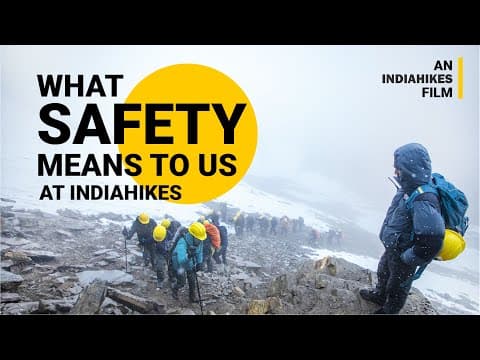
When we brought out new trails in Indian trekking, safety came with us. Back in 2012, we were the first to introduce microspikes, and two years later, pulse oximeters became standard thanks to us. Nobody does safe treks like Indiahikes. In the mountains, emergencies don't care who you're with – everyone knows that when trouble hits, you look for the yellow tents of Indiahikes.
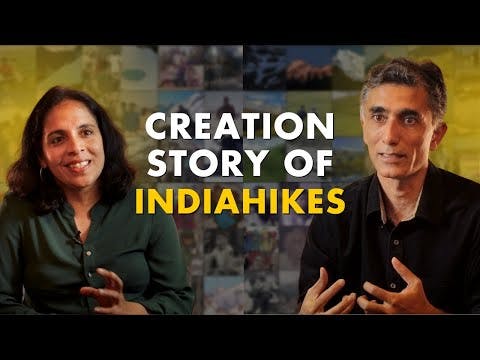
We are pioneers in trekking. Since 2007, we have brought out treks that have become India's most famous treks: Roopkund, Rupin Pass, Buran Ghati, Kedarkantha, Kashmir Great Lakes, Tarsar Marsar, Brahmatal, Phulara Ridge—the list goes on. In 2023 alone, we brought out five new treks in Indian trekking. We know treks better than anyone . This comes directly from the reason why Indiahikes was born: to bring out trek information and enable trekkers to trek on their own.
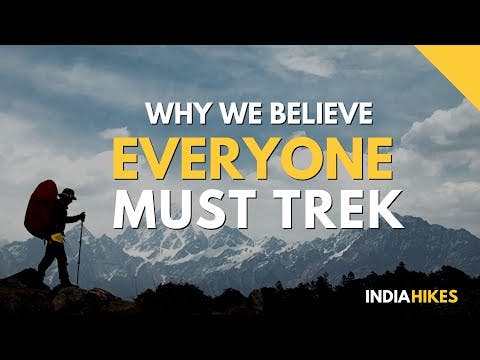
More than 25,000 people trek with us every year. We are the largest trekking organisation in India. 24% of our trekkers come back to trek with us every year. Over 4,000 students from the top educational institutions trek with us every year. Aside from this, families with children choose to trek with Indiahikes knowing that our treks are the safest. We have taken over 8000 children trekking so far, and the number continues to grow.
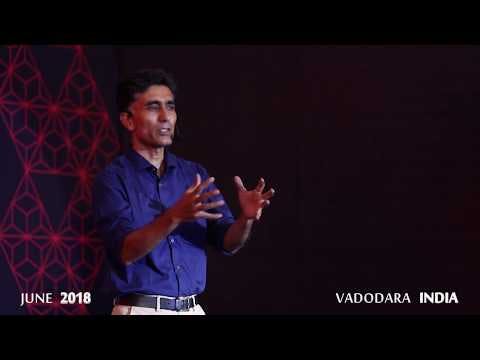
We focus on designing transformative experiences. Our trek leaders conduct thought-provoking exercises that help you reflect and contemplate. This impact stays with you for a long time. Trekkers return feeling energised, more confident, or developing abilities to deal with difficulties. Many have changed careers, rethought their core values, become more humble, shown gratitude to others, or started a new fitness journey.
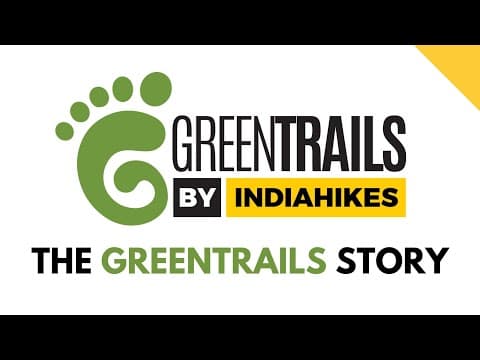
Since 2012, we have pioneered sustainable practices that have become standard in trekking. Using eco-bags, our trekkers have cleared over 120 tonnes of litter from the mountains. We do not carry packaged foods; instead, we serve freshly made food. We do not light campfires; we carry coal to light angethis to keep you warm. Our bio-toilets not only keep our toilets odour-free but also enrich the soil. When you trek with us, you leave mountains better.
Indiahikes Features
You’re guarded with our trek again philosophy
If you are unable to complete a trek, or if you love a trek, you can repeat it with us anytime. You don’t have to pay us for it. See our thoughts behind this here .
Daily 3-time health checks keep you safe at any altitude
Our thrice-a-day oxi-metre checks keep altitude sickness at bay, never allowing you to reach a point where you need evacuation.
Join any group, they are all women-friendly groups
With around 30% of our trekkers being women, all women, including those travelling solo are comfortable to join any of our groups.
Request Jain/Vegan-friendly food
Our kitchen teams understand your needs as a vegan (or a Jain). We will take special care of your food, even in the remote Himalayas.
Be comfortable and sustainable with bio toilets
We have specially designed bio toilets to ensure you have no sight or smell in toilets, at the same time making sure the toilets cause no harm to the fragile ecosystem we trek in.
Fresh, nutritious food at every camp
We’ll admit it. Our love for food surpasses our love for minimalism. Expect freshly cooked, multi-cuisine food at all camps, designed to meet your nutritional requirements and keep your taste buds happy!
Alternative Treks To Do
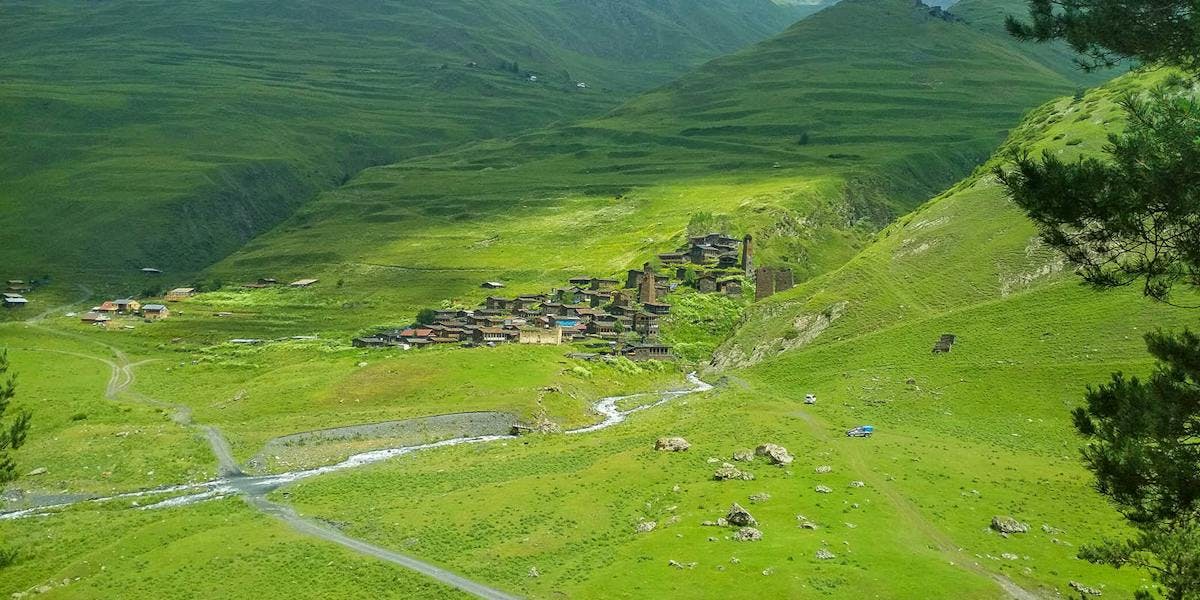
Georgia Atsunta Pass Trek
Get Trek Info
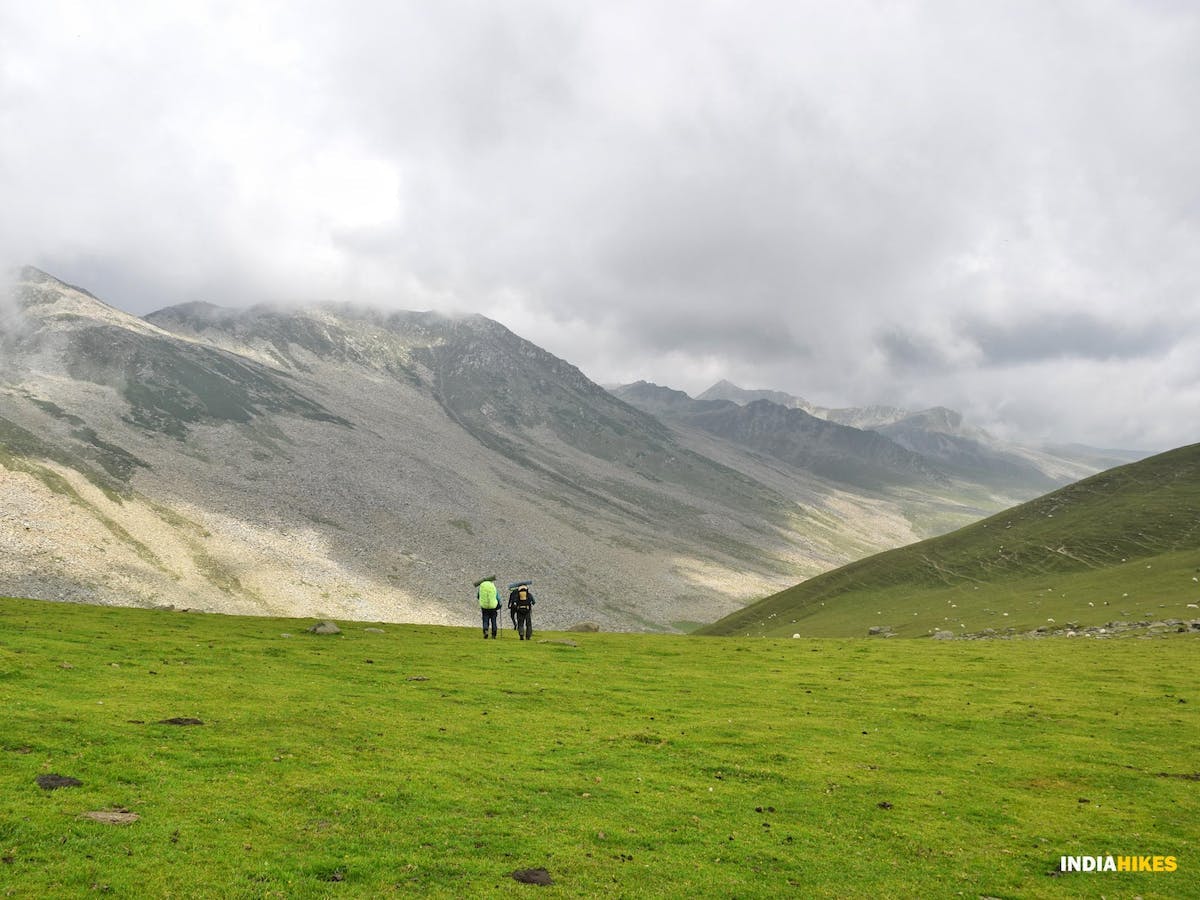
Pir Panjal Lakes Trek
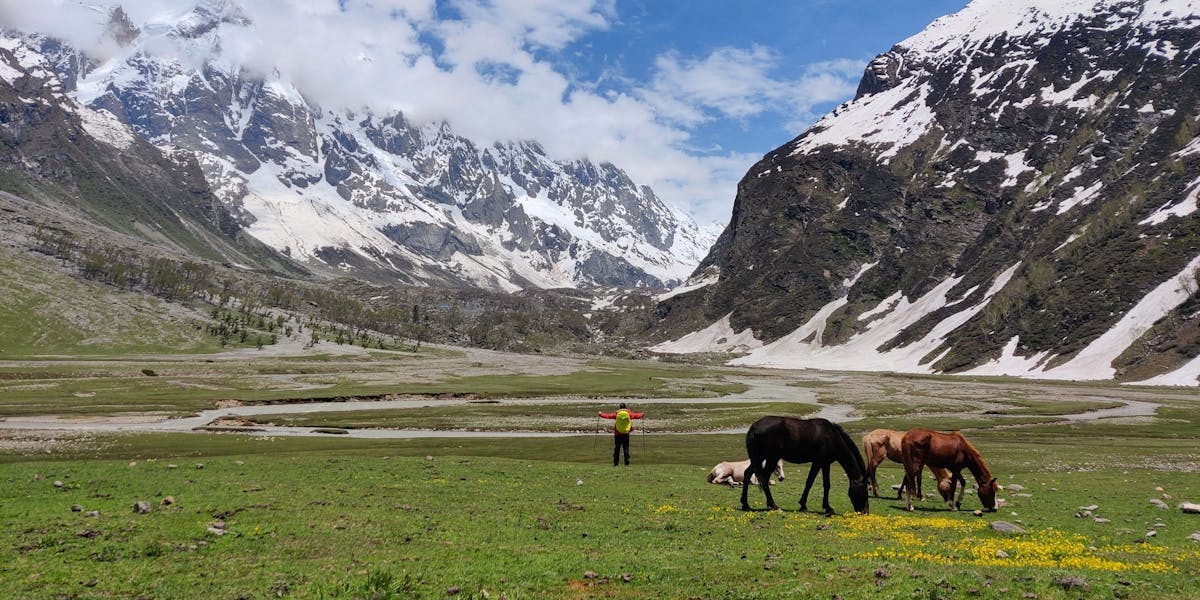
Brammah Valley trek
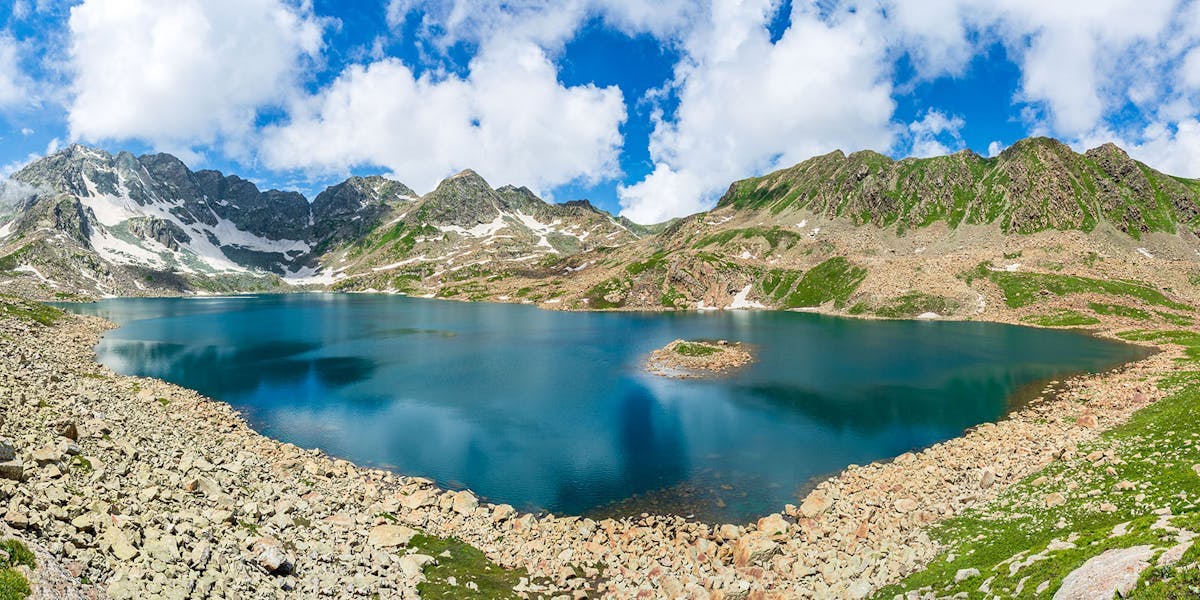
Bodpathri Meadows Trek
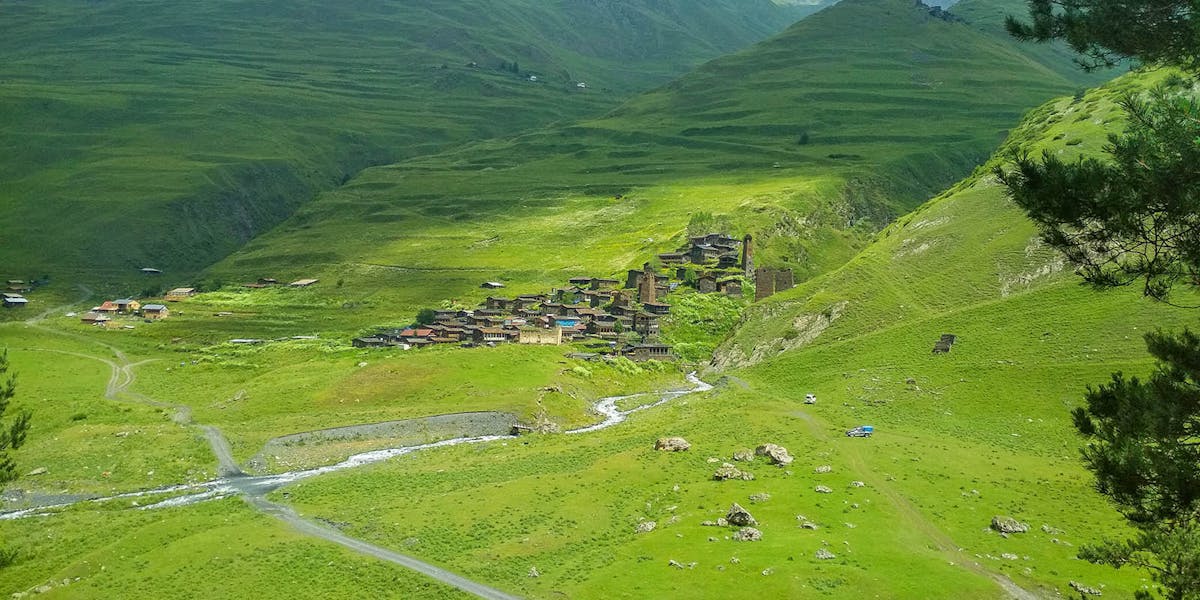
Georgia Atsunta Pass...
The flower bouquet trek of Georgia

Pir Panjal Lakes Tre...
The Grandest Trek in J&K with 10 lakes, 4 meadows and endless jaw-dropping moments
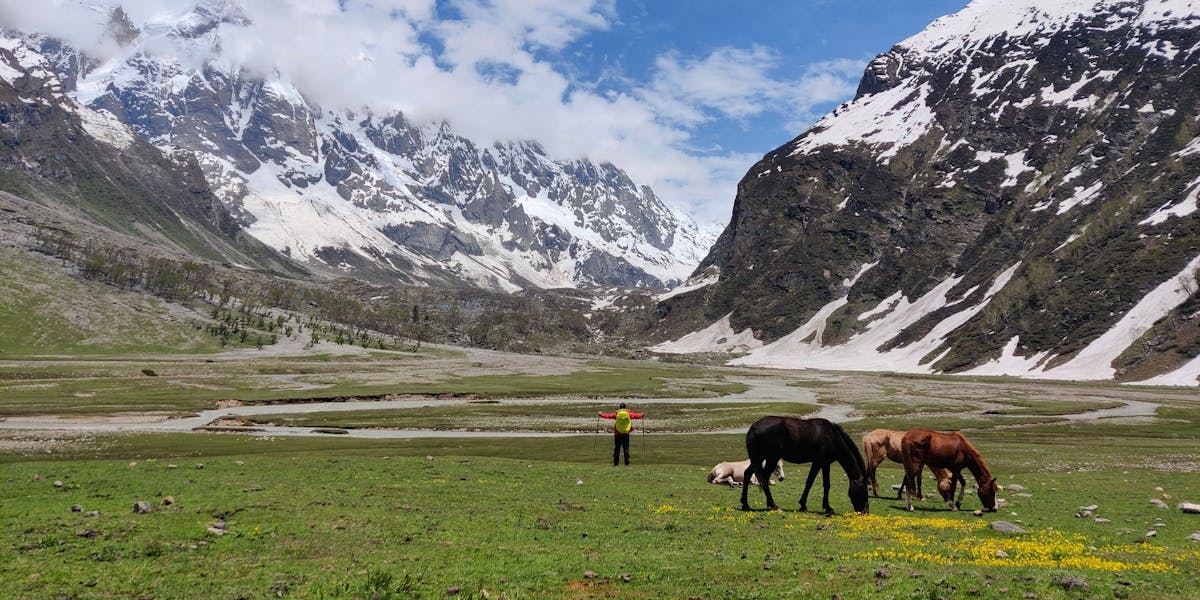
Jammu and Kashmir's new trek discovery
Sign up for our much loved Weekly Mailer
We have terrific trekking tips, trek updates and trek talks to look forward to
Treks by Categories
Treks by season, treks by month, treks by duration, treks by difficulty.
- Easy - Moderate
- Moderate - Difficult
Treks by Region
- Uttarakhand
- Himachal Pradesh
- Lahaul and Spiti
- Jammu & Kashmir
- West Bengal
- Chhattisgarh
Treks by Experience
- Family Treks
- Stargazing Treks
- Senior Treks
- Adventure Therapy
- Summer Camps
- Youth Camps
- Cancellation policy
- Work with us
- Our sustainability practices
- Privacy Policy
- Terms & Conditions
080 468 01269 Mon to Sat - 9.30 AM to 7.30 PM Sun - 9.30 AM to 6.30 PM
Bengaluru Office
139, Defence Colony Road, Defence Layout, Sahakar Nagar, Bengaluru, Karnataka 560092
Dehradun Office
No.85/10, Neshvilla Road, Dehradun - 248001
© 2024 Indiahikes Private Limited
All images are copyrighted by their respective authors.
You will receive an email containing a link allowing you to reset your password to a new preferred one.
Verification mail has been sent.
Please check your mail to verify your account.
Click Here to Login
- How To Reach
- Dates & Price

34°25'15.9"N 75°03'24.3"E
Kashmir Great Lakes Trek

Sonamarg, Kashmir
Pickup Point
Tourist Reception Center, Srinagar
Minimum Age
- Kashmir Great Lakes Trek offers Magnificent Alpine Lakes
- Vast Green Meadows and Valleys
- Breathtaking Views
- A must-do High Altitude Trek
Kashmir Great Lakes Trek is one of the Top Treks in India and it is t he most popular trek in Kashmir, . The stellar beauty of five alpine lakes lapped in the dreamscape of Kashmir - can you think of a more beautiful combination? Kashmir Great Lakes is a name that sets every trekker's heart racing - and for good reason! The Great Lakes of Kashmir Trek is easily the most beautiful, picture-perfect, postcard-worthy trek we run. The trail of this Himalayan Trekking leads you through five alpine lakes, each as beautiful as the other. The lakes follow one after the other every day, making each day equally exciting. Remember the rush and excitement of a pass day/summit day? Well, multiply all of that by 5, and you have the Kashmir Great Lakes Trekking - each day a beautiful, new lake to look forward to. What's more interesting is that you get to see these lakes just as they are being fed by the snow-clad mountains. If you are lucky enough, you may even chance upon an occasional iceberg floating across the pristine blues and greens of the lake. The beautiful, albeit distorted reflections of the surrounding mountains on the surface of the lake, is also something to look forward to. Given the arduous, undulating trail, Kashmir Great Lakes Trekking demands commendable fitness.
Kashmir Great Lakes
Trekking Alpine Lakes in the Himalayas plunges into the beautiful, lush meadows of Kashmir, each one competing with the other in terms of beauty. Every day brings a new meadow to explore. From pine and maple lining the meadows to the verdant valleys of Kashmir, the trek is essentially a patchwork of different terrains. On the fourth day of the trek, you can see the sweeping Satsar Plains looking phenomenal as a gurgling stream snakes through the middle. Climbing up to 13,800 ft., Kashmir great lakes trek difficulty is fairly challenging and demands a rigorous fitness regime to be followed. The fitter you are, the more you can explore. If you are a nature lover, you cannot miss this trek! If adventure and mountain trails are your callings, book your Kashmir Great Lakes trek in India with us. Check out the Kashmir great lakes trek guide now and Kashmir great lakes trek reviews. Head to our dates for the Kashmir Great Lakes Trek 2019 and book your slots today.
Best Time To visit Kashmir Great Lakes
The best time for Kashmir great lakes trek is from July to August when the floral colours and greenery are in full bloom. The snow cover melts in June, leaving behind a lush carpet of colours behind. The weather is also quite pleasant during this window.
Temperature at Kashmir Great Lakes Trek
The temperature ranges from 17 to 20 degrees Celsius during the daytime and 3 to 4 degrees Celsius at night.
Advisory Note : Please include a buffer day in your travel plans to accommodate bad weather on the trek or any political instability. All this totally depends on circumstances in the state of Kashmir. You are liable to pay Rs 1800/- per day if buffer day is used.
Prior to your your adventure with Trekmunk, it will be mandatory to sign the waiver form and get a medical certificate from a doctor 15 days before the trek, without these, you will not be allowed to start the trek. You'll also need to upload your ID on the website. We need these paperwork of yours to get the permit from tourism department which only issues the permits 10 days or earlier before the trek date.
Brief Itinerary
Detailed itinerary, day 1 : getting to base camp - arrive at shitkadi.
Shitkadi is a beautiful, quaint little place just a few kilometers beyond Sonamarg. The drive to Shitkadi is very picturesque and will take around 4 hours. You will reach the campsite by evening.
Note: The pick you up will be arranged from Tourist Reception Center, Near Dal Gate 1 from 12 pm -1 pm. Cost of 5-6 seater cab is approx Rs. 4,500 Which is shared between the fellow trekkers.
Day 2 : Trek from Sonamarg to Nichnai via Shekdur
The Kashmir Great Lakes trek begins about 3 km away from Sonamarg, along the Srinagar road. Once you cross 3 km, a solitary little dhaba can be seen on your right. If you’re short on edible supplies, this dhaba is the last place until Naranag to buy them. The trail follows a moderate ascent for the first 3 hours, followed by an hour-long descent before another mild ascent leads you to Nichnai. After the first 10 minutes, the trail climbs into a lush, green meadow that offers sweeping views of Sonamarg. Another 30 minutes into the trek, trees of maple and pine spring around, beyond which the trail dips down to a small stream and then moves up again. You’re now treading through a dense Maple forest – a dreamy experience that is exclusive to Kashmir treks. Continue along the trail climbing up until the forest finally ends at a ridge, giving you a beautiful glimpse of the Sonamarg valley.
You now begin descending to another meadow graced generously by beautiful trees of Silver Birch. What comes next is a beautiful blanket of greenery that spans the meadow. There are a few books here where you can refill your water bottles. The right side of the meadow is the Shekdur meadow and is flanked by lofty, snow-capped peaks. Have your lunch under the canopy of the Bhoj trees that Shekdur is home to. The trail dips gently into a beautiful Silver Birch forest, after which it climbs back up to a river valley. This is the beginning of Nichnai. Soon, the inviting meadow of Nichani opens up, perched in the laps of two mountain ranges. Camp overnight at Nichnai.
Day 3 : Trek from Nichnai to Vishnusar Lake
It is a slight long day, with the trail winding through yet another set of lovely meadows. There is also a noticeable change in scenery beyond Nichnai! We start early in the morning by 08:00 AM so that there’s sufficient time for you to wander around and admire the beauty of the meadows. The Nichnai Pass or Vishnusar Berry almost marks the halfway point of the day’s trek. About half an hour later, a river-crossing awaits you and the trail runs along the left bank of the river. The trail now begins ascending gradually through the meadow, with the pass being just an hour’s climb away now. The climb to Nichani pass is a moderate one before it descends and eases off into a flat walk as you approach Vishnusar Lake. Nichnai Pass opens up yet again to stunning views of the Sonamarg valley. You can get a decent BSNL connection here. The climb to Nichani pass is a fast one, and you can actually feel the altitude shift even as you climb. Nothing to worry about though, as, beyond the pass, the trail begins depending quickly into a large meadow through which a beautiful river flows. The meadow stretches for another half hour till the valley ends. You can now see a whispering stream here, which originated from Vishnusar Lake. Settle here for the camp, and rest for a while. The lake is now only 500 meters away. It bears a striking reflection of the Kishansar peak. The color of the lake changes throughout the day, depending on the weather and skies. The next destination to explore is the Kishansar lake, just 500 meters away from Vishnusar lake. It thrives right at the foot of the Kishansar peak and takes 45 minutes to reach. It is accompanied by a magnificent meadow on the right, while the ridge on another end of the lake rises up to the famous Gadsar Pass.
Day 4 : Trek from Vishnusar to Gadsar Via Kishansar lake & Gadsar Pass
The trek starts from the side of Kishansar Lake, and the trail leads to the ridge’s top. Follow the narrow trail that unfolds along the mountain side, and stick to the ascending trail. Reaching the top should take you about 1.5 hours or 2, depending on your pace. Soon, you are treated with the views of Vishnusar and Kishansar lakes in entirety. It is a rare view and follows you right up to the tip of the ridge i.e. Gadsar Pass. Reigning atop 13,800 ft., Gadsar Pass is the highest point of the Kashmir Great Lakes Trek. The ascent is a steep one, and takes about 2 hours, followed by an equally steep descent which eases out into a mild walk through the meadows. You can see some tall and lofty mountains in the distance; these are beyond our Line of Control. You will most likely find some snow at the pass.
Yamsar Lake is the first small lake visible on your left. Another hour’s descent dips into the meadows, with two glorious ranges bordering both sides of the valley. The grassy meadow is spiked with beautiful floral colours crisscrossing its surface – an amalgamation of reds, blues, purples, and yellows. Once you enter the blue Iris region, Gadsar is not far. It thrives at foot of snowy mountains, with lovely blue flowers popping up on the side. On the other side, you can see snow slabs sliding off from the mountain and into the lake! Camp overnight near Gadsar.
Day 5 : Trek from Gadsar to Satsar
Being the trek by crossing the stream and following the trail that climbs up the mountains. The terrain starkly resembles that of the Western Ghats here. You can see the river valley and tree line right beneath you. It is a level walkthrough Maengandob, a place identified by its iconic, deep craters. The riveting views of the mountains and valleys take your breath away. Satsar is a cluster of 7 beautiful lakes On the right side, just next to the ridge is the Satsar army check post, where some ID proofs must again be shown. The first Satsar lake appears 10 minutes away from the army post. Camp overnight at Satsar.
Day 6 : Trek from Satsar to Gangabal twin lakes
The trail starts out as a mild ascent, alternating between ascents and descents. Reaching the targets Satsar lake takes about a half-hour, and the trail essentially involves hopping over boulders. This lake is the last one for the trek. The trail begins descending now as a lovely forest appears on the left. The trail is an undulating one throughout. As you reach the top for a ridge atop 13,400 ft., you can see the two beautiful lakes side by side, out of which the biggest one is Gangabal, accompanied by Nandkol. The route climbs up and down yet again followed by a stiff descent, which lasts for 1.5 hours and brings you to lush, green meadows. Another kilometer into the trail, the tree line springs up again. A short climb followed by a quick descent brings you to the lake. You can see that Nandkol lake, right at the foot of Mt. Harmukh, is not nearly as untouched and clean as the other lakes of the trek. A lot of trekking residue can be seen scattered along the sides as the trek from Naranag to Gangabal is a famous weekend trail. You can try to clean up if you want here, making sure it is in a better condition than when you had found it. Gangabal is merely 20 minutes away from Nandkol, and the two are linked by a whispering stream which must be crossed via a bridge. Camp overnight.
Day 7 : Trek from Gangabal to Naranag, Drive to Srinagar
Though it is the last day of the Kashmir Great Lakes trek, it is an exhausting one and takes a toll on your knees and toes. The trail descends gradually initially, followed by a steep descent all the way. About 30 – 45 minutes into the trail you can find traces of Airtel connection. The Harmukh peak still dominated the landscape, tall and mighty as you enter a beautiful meadow with blooming yellow flowers covering its face. An hour later, the tree line emerges again, and the pine trees are a welcoming sight. We stick to the borders of the forest, instead of heading straight into it. For the next 6 km, you keep weaving in and out go the first before finally entering it. Soon, the descent becomes really steep through the pine forest. Soon, the main road of Naranag can be seen, from where Srinagar is a short drive away. The cab arrangement will be same as before. Overnight stay at Srinagar. Arrange for your stay in Srinagar.
Day 8: Buffer day
Advisory Note : Please include a buffer day in your travel plans to accommodate bad weather on the trek or any political instability. All this totally depends on circumstances in the Union Territory of Jammu and Kashmir.
If the buffer day is used, you have to p ay us Rs. 1,800 per day (INR) +5% GST. The money will be collected by the Trek Leader only if we use the buffer day.
We can arrange a cab for you from the pickup point in Srinagar, the charges for the same are not included in the package. The cost of the cab can be shared among the trekkers joining the trek. For communications purposes, we will create a Whatsapp Group before the departure date of the trek and will share the details regarding the transportation. The drop at Srinagar after the trek will be arranged in a similar way.
Cab cost keeps fluctuating but they tend to be approx 4500/- one way for Innova or similar class vehicle.
How To Reach Great Lakes Trek in Kashmir:
Srinagar Airport is well connected to the major cities of the country. Frequent flights ply from Delhi, Jammu, Mumbai, Bangalore, Chandigarh, and Kolkata. Srinagar airport is about 70 km away from Sonamarg.
Sonamarg is accessible from the other parts of the country via the National Highway 1D. The Srinagar bus stand is about 87 km away from Sonamarg, and sufficient public buses are available from Srinagar to Sonamarg. The Srinagar Bus Stand is well connected to Delhi, Chandigarh, and Jammu
The Jammu Tawi Railway station is the most convenient stop, from where frequent buses and cabs are available for Srinagar and then Sonamarg.
Latest Stories
Why trek with us .
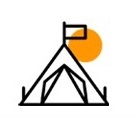
Fixed Departures All
Get yourself fit, nutrition tips, things to take, health & safety.
- Accommodations at Kashmir Great Lakes Trek: All accommodations on the trek will be on twin sharing basis in Tents.
- Great Lakes Trek Guides: An experienced and professional guide will accompany you for the trek. The team will have years of experience and well equipped for any emergency situation.
- Services of a Professional Trekking Team: A team of an experienced Cook, Camp Staff, Porters/Mules will accompany you for all the arrangements on the trek.
- Meals at KGL Trek: All Meals on the Trek are included. We will serve Vegetarian Indian food on the trek which will be cooked by our high altitude chefs. You will be given packed lunch everyday which you will have to carry in your lunch box.
- Camping and Safety Equipment: All the camping equipment such as Tents, Sleeping bags, Toilet Tents, Dining Tent, Mattresses, and other things will be provided by us and we guarantee the quality. Safety Equipment including Medical kit, Oxygen Cylinder, Oximeter will be provided by us. We recommend you to bring your own sleeping bags if possible.
- Trek Permits and Forest Camping Charges: Only for Indian Clients, All the applicable trekking permits, Camping Charges, Forest Entry Fee, etc will be paid by us. Foreigners have to pay these charges if not mentioned.
- A Life-Changing Experience: We assure you that by trekking in the Himalayas you will have a life-changing experience and we will do everything we can to provide you with the best services and make your venture in the wild an unforgettable one.
Note: Prior to your your adventure with Trekmunk, it will be mandatory to sign the waiver form and get a medical certificate from a doctor 15 days before the trek, without these, you will not be allowed to start the trek. You'll also need to upload your ID on the website. We need these paperwork of yours to get the permit from tourism department which only issues the permits 10 days or earlier before the trek date. All this can also be done online without using any paper.
- GST and Other Taxes: The goods and services tax is not included in the price mentioned with the trek. They are subjected to change according to the government rules of India.
- Accommodation and Food in Srinagar: Food and stay in Srinagar and during transit to Shitkadi, Sonamarg and back are not included in the package. You can book your hotels or homestays in Srinagar, we can recommend a few good options.
- Flights and Transportation to and fro base camp: Flights or other means of transport are not included in the package. Transportation from Srinagar to Sonamarg and Naranag to Srinagar (Cab cost keeps fluctuating but they tend to be approx 4500 for 5-6 seater Innova or similar class vehicles one way which is shared between the fellow trekkers which will pick you up from Tourist Reception Center, Dal Gate 1, Srinagar) is not included in the package. We can arrange a cab for you according to your requirements but you will be liable to pay for the same. Any expenses occurred during the journey are not included in the package cost.
- Personal Equipment: Your Rucksack, personal clothing, shoes, trek poles, and other personal trekking gear is not included in this package. You have to bring your own gear according to the weather and difficulty of the trek.
- Portage of Personal Bags(Offloading): We highly advise you to carry your own burden (your rucksack) but due to any reason, if you wish to not carry your rucksack, we can arrange for a porter/mule to carry it. For this service, you will be charged over and above the trek cost. The charges for offloading vary with every trek.
- Travel Insurance: Travel Insurance is not included in this package. You need to have travel insurance before opting for such adventures. You can buy insurance from providers like ASC360, Religare etc.
- Personal Expenses: Any personal expenses incurred (Laundry, Bottled Water, Beverages, Snacks, Orders at tea houses or dhabas, Tips for guides, Camera fees, etc) are not included in the package.
- Emergency Expenses: Any costs arising out of unforeseen circumstances such as accidents, bad weather, landslides, road conditions and any other circumstances beyond our control are not included in the package.
- Anything not mentioned in Inclusions of the package.
Cancellation Policy And More Information
Booking terms:, confirmation policy:.
Upon Booking, An invoice will be sent to your mail & within 12 to 24 hours the booking confirmation with additional details will be sent to your mail.
Cancellation Policy:
This image is only a brief visual representation of the policy.
Please read the detailed policy carefully by clicking on this text.
_1655191763393.jpg)
Refund Policy:
Any refund applicable will be processed within 10 to 15 business days as per the company policy.
Postpone/Transfer of a booked trek:
a) You can postpone your booked trek for a period of two months (61 days) but Trekmunk will charge a 20% processing fee. The last date for the postponement will be 15 days before the start of the trek. You can book any slot for the same trek in the next 2 months (61 days) which will totally depend on the availability. You will have to confirm your slot for your future trek 15 days prior to that trek. Failing to book the slot in 2 months (61 days) time, would be considered a cancellation with no refund of any kind. The 2 months (61 days) time frame will be from the start date of the initial trek you booked for. Postponing a booked trek can only be done once. If it is postponed 45 days before the departure date, we will not charge any fee.
b) You can transfer your booked slot for the trek to any fit person till 15 days before the trek. You just have to mail us the request and rest we will handle. The new person has to get all the mandatory documents duly signed for the trek and is bound with this booking contract. It is the participant's responsibility to read and agree to all these terms.
More Information:
1. We Trek for a Cause: For overall development of the areas we run our operations in, we donate Rs 100/- per booking from our profits which are used for the upliftment of the local people and conserving nature. We have named this initiative as - Trek for a Cause. For more details, follow: https://www.trekmunk.com/trek-for-a-cause
2. We are paperless: We are focusing on Sustainable Tourism and to do that we are trying all measures to convert our trek operations to be Eco-Friendly. Going Paperless is one step closer to our aim.
3. Single-Use Plastic: Trekmunk does not encourage the use of single-use plastic items. We are ensuring that our team is working together to reduce the problem and educate those around them. We will send you instructions on how to go plastic-free on your adventures.
4. Preparing for your Holiday: Getting some additional exercise makes a lot of sense to spend time before coming on a trekking adventure. The fitter you are, the more enjoyable you will find the experience. Hiking in the hill country is the best training but jogging, squash and swimming are also good for developing cardiovascular fitness and stamina. To read more on how to get fit, follow: https://www.trekmunk.com/get-fit-for-trek
5. Electricity Supply & Plug: You will get electricity supply till the starting point of the trek. If not Indian, We recommend you check if you require an adaptor for your electrical items at: http://www.worldstandards.eu/electricity/plugs-and-sockets/
6. Currency: The unit of currency in India is the Indian Rupees.
7. Health & Vaccinations:
Severe Allergies: If you have a severe allergy please inform the Trekmunk office before you travel. We will do all we can to help, but we cannot guarantee an allergy-free environment on trekmunk trips. You will need to carry your own treatment for the allergy with you, as 'adrenaline auto-injectors' are not carried as standard by our leaders and staff. You should inform your leader on the arrival of your allergy, and let them know where you keep your adrenaline pen.
Vaccinations: You should contact your doctor or travel clinic to check whether you require any specific vaccinations or other preventive measures. You should be up to date with routine courses and boosters as recommended e.g. diphtheria-tetanus-polio and measles-mumps-rubella, along with hepatitis A and typhoid. Malarial prophylaxis is not usually required for trips in the mountains, however, if you are visiting rural and remote low lying areas then they might be necessary.
8. Passport & Visas/Identity Proofs: If foreigner, Validity for 6 months, should have blank pages, and should be kept with yourself all the time.
9. Water: If you are on a trekking or cycling holiday, water is supplied to fill up your individual bottles. This will be boiled or filtered. Additionally, you should take purification tablets or a filter bottle (such as a LifeStraw, Sawyer Filter) to treat your water when in towns or where water is not supplied. We do not encourage the purchasing of single-use plastic bottles.
10. Altitude: This adventure involves going to a very high altitude. This is not something that you should worry about; the human body is quite capable of adapting to a very wide range of altitudes, but it is important that we follow some simple rules in order to acclimatize successfully. We will send you the information in your mailbox about Acute Mountain Sickness and trekking in high altitudes. On this trip, we carry bottled oxygen for use in emergencies.
11. Guidance on Tipping: Tipping is the accepted way of saying thank you for good service. Normally the guide and any other trek staff are given their tips at the end of the trek and this is best done as a group. The main guide will make sure that the tip is appropriately distributed among all the staff members on the trek.
12. Spending/Emergency Money: Approximately Rs. 8000-10000/- (in Indian Currency)should be carried for miscellaneous expenses including porter and trek crew tips, drinks, soft drinks, etc. We recommend that you carry your travel money in the form of cash as the availability of ATM is less in these remote areas. This can also serve as your emergency spending money.
13. Travel Insurance: It is mandatory to have an insurance for this trek. When taking out insurance please ensure the policy you choose covers you for the activities and altitude included in your itinerary. We will ask for the Travel Insurance Details over a mail.
No words for the bike trip from Srinagar to Leh. One should experience it to feel it and all this because of the management of Trekmunk especially Mohit and Harshit whose efforts even made the hardest of the ride exciting adventurous and above all safe. Although some hindrances w ...
I was bored with my regular 9 to 5 schedule and then I decided to seclude myself from the chaotic city life. So, I went to Brahmatal trek last month along with a couple of my friends. We went with Trekmunk and it was a lovely experience. The trek guide, Ramesh was very polite and ...
I had an amazing trek with Trekmunk to Sandakphu November and December 2019. From the first moment of inquiry about the trek and all my questions were answered clearly and on time thanks to Dheeraj who managed to facilitate the trek quite well with his communication. Our guide Ar ...
No words for the bike trip from Srinagar to Leh. One should experience it to feel it and all this because of the management of Trekmunk especially Mohit and Harshit whose efforts even made the hardest of the ride exciting adventurous and above all safe. Although some hindrances which are quite common like bike issues and medical problems arose with our co-riders, I liked the way these two guys handled it dexterously. I went with one of my best friends and came with a lot more and the trip turned out to be memories that can be cherished for a lifetime. Thanks, Team Trekmunk for giving me a wonderful experience. I can't wait to go on my next adventure with them.
I was bored with my regular 9 to 5 schedule and then I decided to seclude myself from the chaotic city life. So, I went to Brahmatal trek last month along with a couple of my friends. We went with Trekmunk and it was a lovely experience. The trek guide, Ramesh was very polite and helpful. The food and snacks were amazing. The activities in the campsite during our overnight stay is something that I am gonna cherish my entire life. I am waiting for my next trek with Trekmunk.
I had an amazing trek with Trekmunk to Sandakphu November and December 2019. From the first moment of inquiry about the trek and all my questions were answered clearly and on time thanks to Dheeraj who managed to facilitate the trek quite well with his communication. Our guide Arpan was very experienced, calm, patient and very helpful to each trekker's needs in the group. He facilitated to find and hire a porter for me once I needed one although we were in the middle of the trail. He also arranged emergency transportation when I had to cut the trek and go back home for an urgent matter. I really enjoyed their service and I would like to repeat the same trek or try other treks with them again.
We were a group of 12 friends and booked a trek to Kedartal with Trekmunk, it was an amazing experience..even though it was our first trek to the Himalayas and Kedartal being a difficult terrain trek we were guided excellently by the Trekmunk team. They served us nutritious food, took complete care of our safety and health and gave us the right advice to overcome AMS. Eagerly awaiting our next trek with them.
I and my friends went to Markha Valley trek with Trekmunk and we all had a great time. Walking up and down the hill, coming across some beautiful sites was mesmerizing. Staying in tents was so much fun. And our guide had all the knowledge about the trek. Trekmunk is really good with its food and accommodation facilities. I highly recommend Trekmunk. Kudos to their Team.

Related Blogs
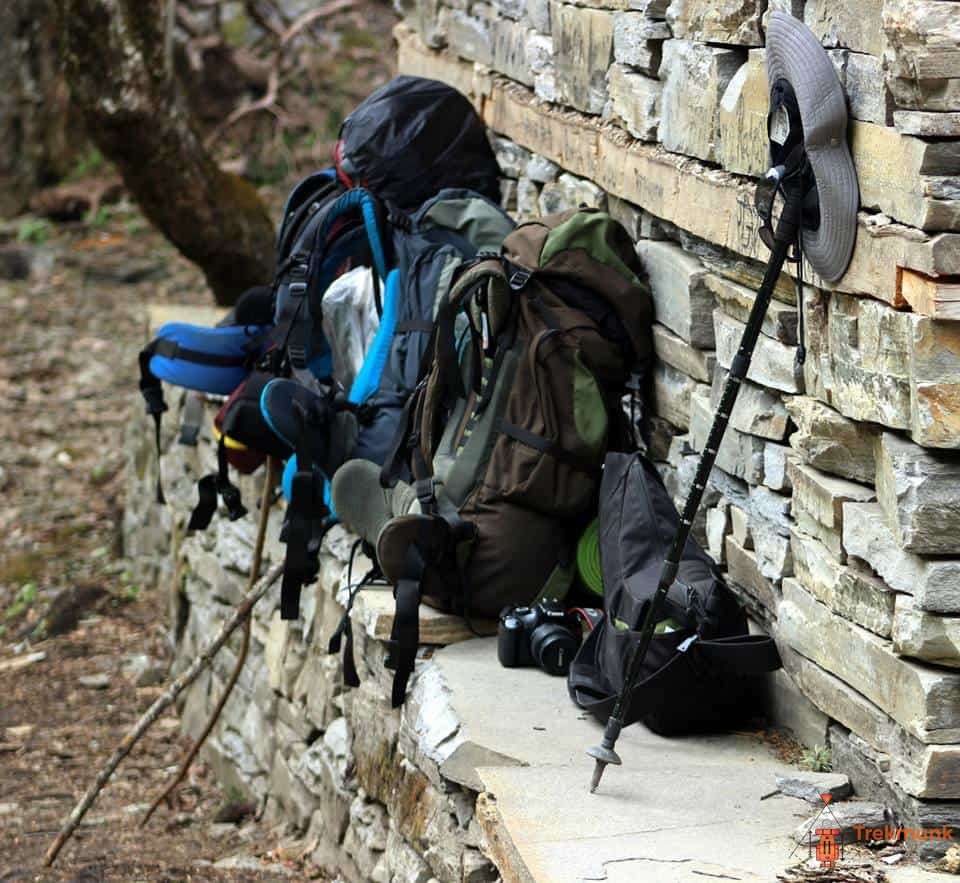
Related Tours
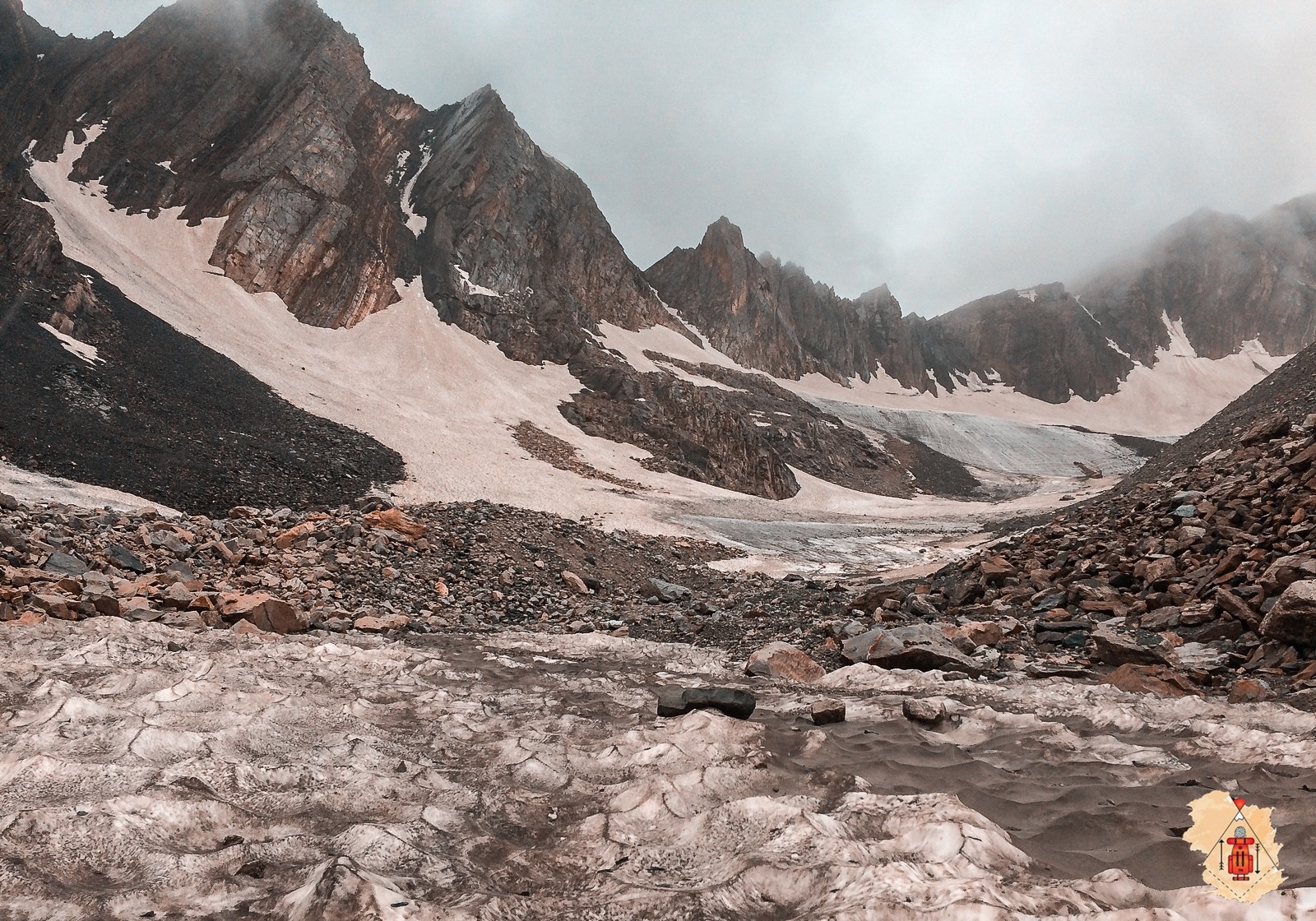
Basmai - Soun Valley Trek
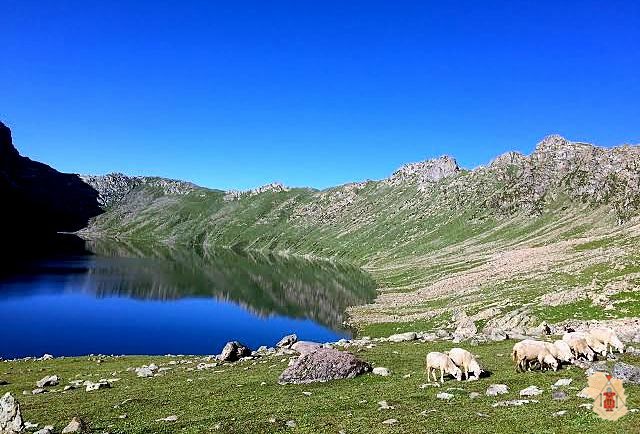
Basmai Pass - Tarsar Marsar Lake Trek
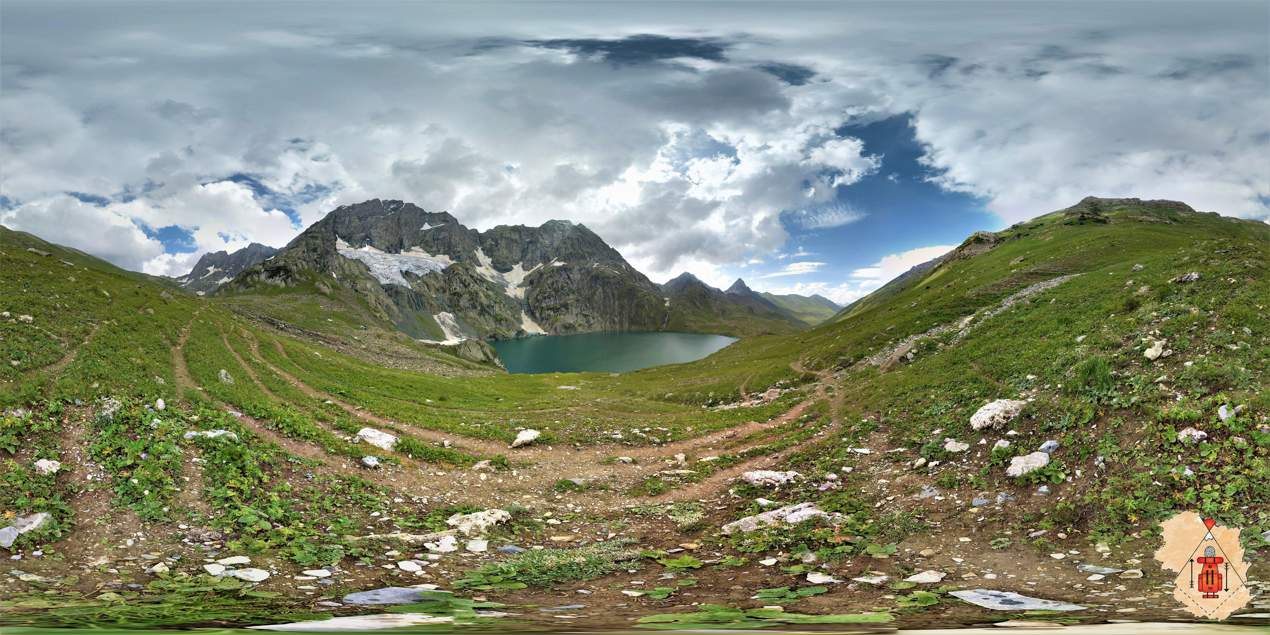
Gangabal Lake Trek -Largest Alpine Lake of Kashmir
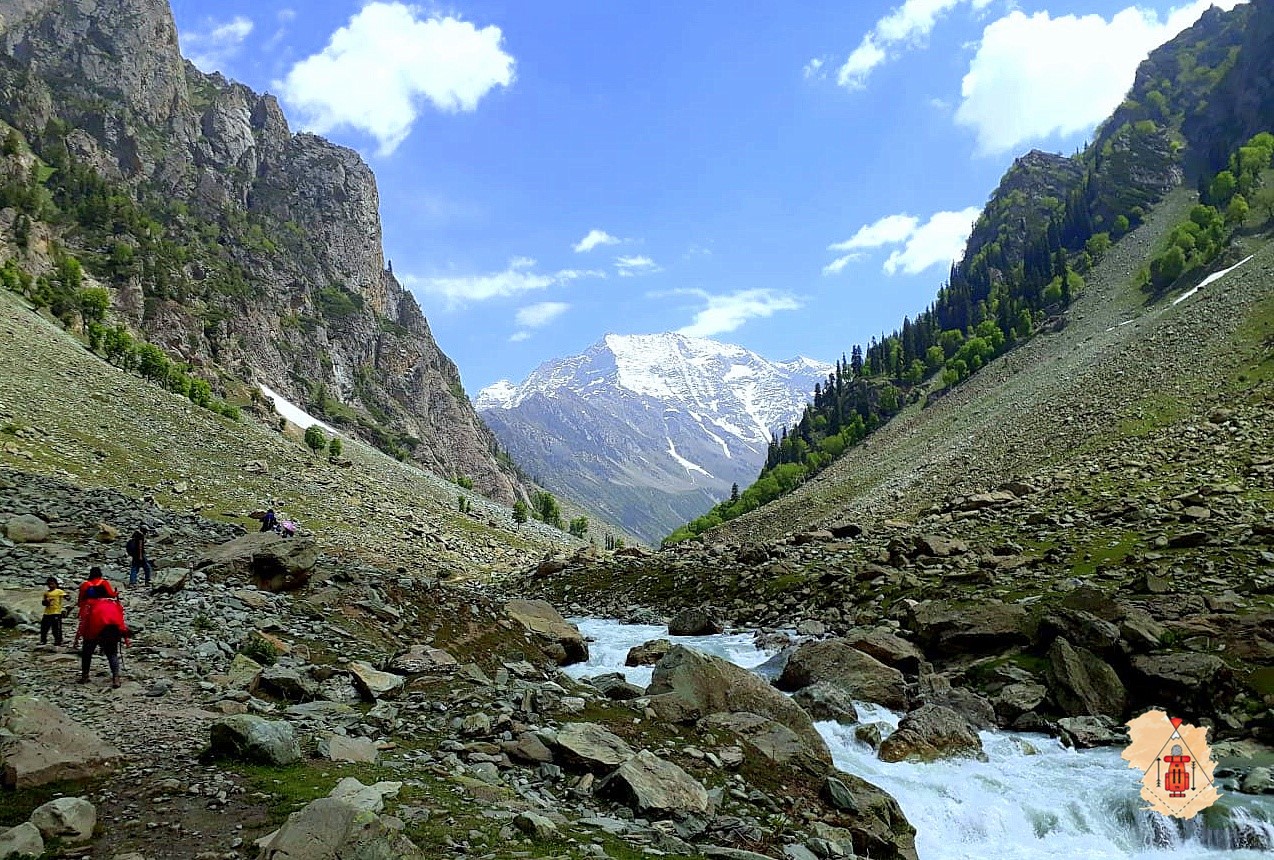
Kolahoi Glacier Trek
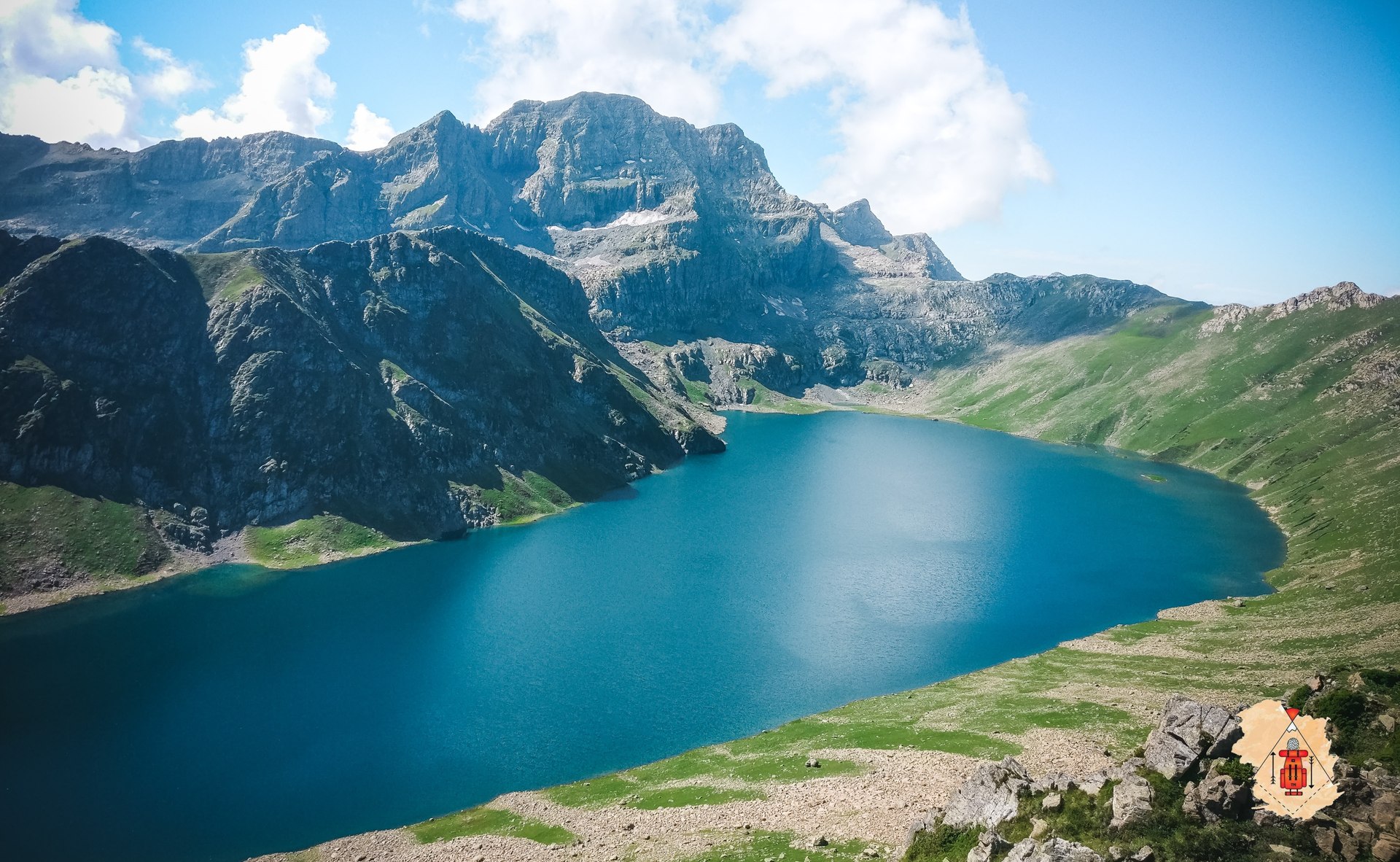
Tarsar Marsar Trek
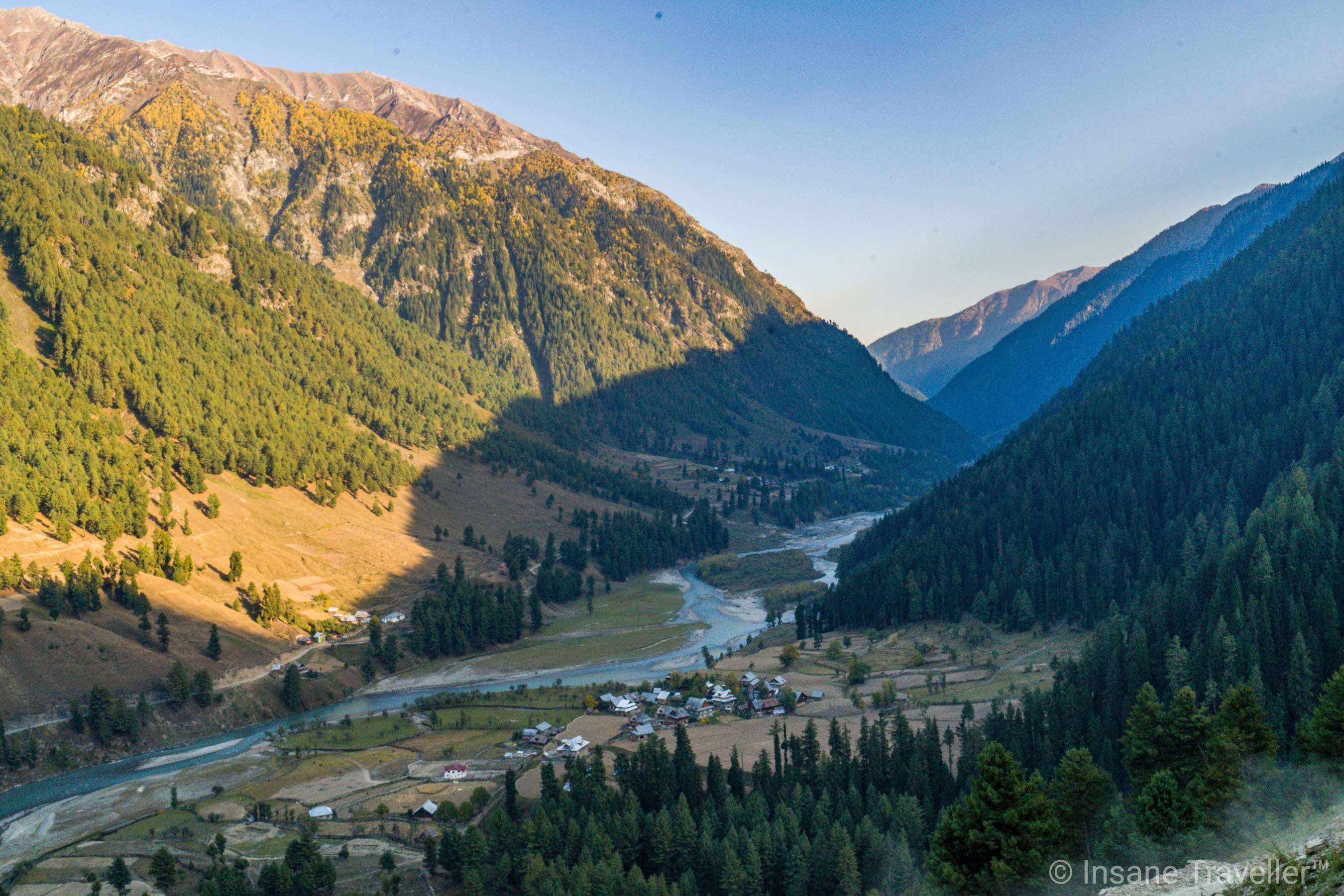
Warwan Valley Trek

"Trekmunk is changing the indian trekking industry"
"10 Most Promising Adventure Sporting and Trekking Companies - 2020"
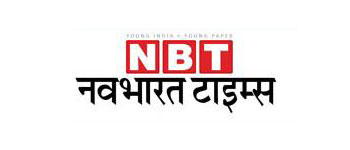
" Things you do for the Passion for Travel"
Hello there, How can we help you ?
Timing: 10 am to 6 pm IST (GMT +5:30)
Whats App Us

Home » Shop » Kashmir Great Lakes Trek
- getting there
- detailed itinerary
- cost inclusions
- CANCELLATIONS
- Submit to know our KGL trek details
- 1 Week trek
- Jammu Kashmir
- Kashmir Valley Treks
- Moderate Grade Treks in Himalayas
- Monsoon Treks
- Summer Treks
Kashmir Great Lakes Trek:
- Available upcoming group departures for Kashmir Great lakes trek starting on 29th Jul; 5th, 12th & 13th Aug .
- Customised private tours are possible from late June to late September. Costs as per group size are given in details on this page here .
Kashmir Great Lakes, a.ka. KGL trek , became increasingly popular and now probably the most coveted trek during monsoon in Indian Himalayas. Kashmir – “The paradise on earth” is truly unfurled during this 7 days walk covering a distance of ~ 70 Km. Six high altitude lakes, alpine meadows dotted with tiny wildflowers, exquisite campsites make this journey a fascinating one. Consequently the KGL trail is the Best of Kashmir, what locals call Jannat E Kashmir , a piece of paradise on earth.
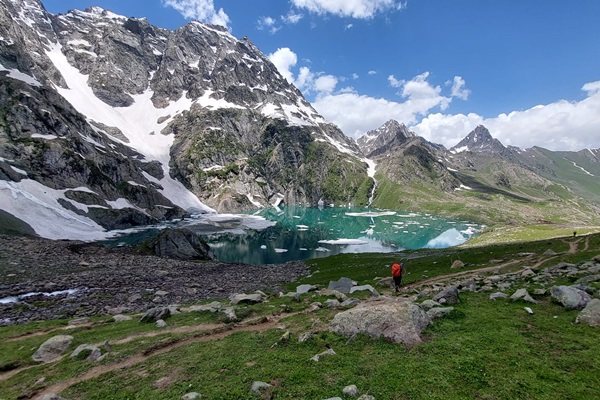
Below is your Complete Guide to KGL Trek for 2024 . Click on a link to jump to a specific part of information.
Itinerary Notes on itinerary About KGL trek Altitude & Distance graph Trek Difficulty Is it doable by beginners? Weather & Best time to visit Rainfall during best season: An observation Things to bring Flora & Fauna 2023 Tour packages & Cost Reaching trekbase

Itinerary for KGL trek:
Day 1: Drive from Srinagar (latest by 12 o’clock) to the trek base Shitkari (~ 2650 m/8690 ft, 2 Km before Sonamarg) – 85 Km – 3 to 4 hours drive. Twin sharing camp. Day 2: Trek to Nichnai (~ 3505m/11500 ft) – 13 Km – 7/8 hours. Camp. Day 3: Trek to Vishansar Lake (~ 365o m/11970 ft) via Nichnai Pass (~ 4070 m/13350 ft) – 12 Km – 6 to 7 hours. Camp. Day 4: Rest and active acclimatisation Day that also acts as a buffer day. Hike to Kishansar Lake and back to Vishansar Lake for 2 hours, in case we are required to stay at Vishansar. Our trekking guides will make decisions subject to weather and team conditions . If the weather remains clear, we will move ahead and take a complete rest at Nandkol campsite. However, at Nandkol, all team members must decide to stay an additional day or get down to Naranag together. It is not possible to split the team so that some take rest and some continue to complete. Day 5: Trek from Vishansar to Gadsar (~ 3660/12000 ft) via Gadsar Pass (~ 4200 m/13775 ft) – 16 Km – 7 to 8 hours. Camping ground is further down (~ 3300 m/10825 ft) from Gadsar lake. A strenuous day. Day 6: Trek to Megandob (~ 3650 m/11970 ft) via Satsar lake – 10 Km – 5/6 hours. Camp. Day 7: Trek to Nundkol lake via Zaj Pass – 8 Km – 5/6 hours – visit Gangabal lake and return – 2 hours. Camp. Day 8: Trek to Naranag – 11 Km – 5/6 hours – 60 Km drive to Srinagar – 3 hours. You will reach Srinagar by 7 pm. Day 9: Fly out from Srinagar.
Important notes on itinerary:
Carefully read the following points so that you can arrange your tickets and understand the estimated additional expenses outside the TREK FEE.
- You need to reach the latest by 12 noon on Day 1 in Srinagar . After the trek you will return to Srinagar on Day 8 or Day 9 (if reserve day is utilised), by 7 pm. You may fly out of Srinagar anytime on Day 9 or later . Arrange your tickets, and stay in Srinagar accordingly.
- Day 4 , i.e. rest and acclimatisation day depends on different actual conditions during the trek. Sometimes we may skip it and keep a rest day at Gangabal twin lakes camp instead. In this way trekkers get a full day to relax at Gangabal twin lakes camp.
- We will arrange a shared transportation from Srinagar airport (or from TRC Srinagar ) to basecamp Sitkari and from trek endpoint Naranag to Srinagar city back. The fare is ₹ 4500 one way for a Tata Sumo/similar and can accommodate up to 6 persons. You pay the driver directly, sharing equally with the other team members. Consider ₹ 1500 to 2000 per person which includes pick up and drop.
- Leave luggage facility is not available on this trek as the trek start and end points are not the same but far away.
- Note that prepaid sim cards do not work in Kashmir . Airtel and Jio have decent networks at basecamp Shitkari and Naranag. In between we will not get any network.
About the trek:
Not only do you see six fairly large alpine lakes on this trail but get an all round hiking flavour in Kashmir Valley . Jannat doesn’t need a long introduction. As they say, “A picture is worth a thousand words”, let’s go through this incredible hiking experience visually.
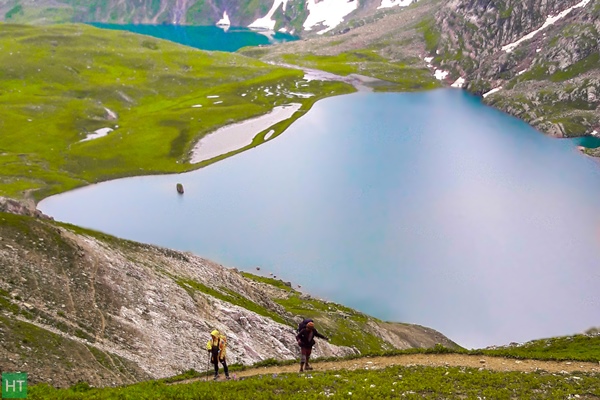
Beautiful, isn’t it? But just don’t jump into this moderate grade trek! Undestand and get more insights reading thoroughly so that you can plan and prepare.
KGL trek: Distance & Altitude profile chart:
Below is an indicative profile of the trekking trail. Note that you will get more undulations (ups and downs) on the actual trail.
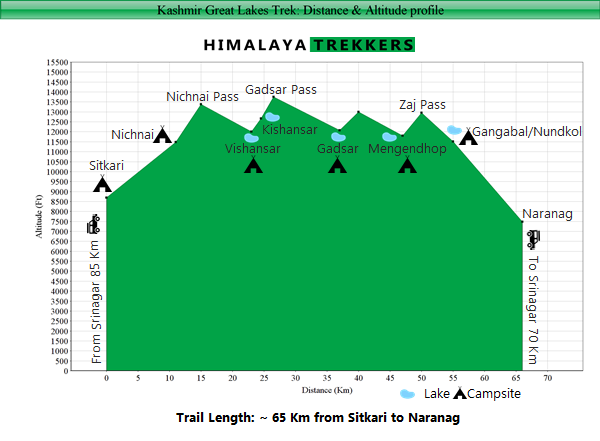
How difficult is the Kashmir Great Lakes trek?
KGL is a moderate grade Himalayan trek. Walking considerable distances everyday with some ascent and descent may fee a a bit strenuous to some as well. That is why we rate it 6.5/10 on a grade of physicality scale.
At the same time our itinerary has 7 trekking days. Initial couple of days are long and you gain height as you reach the first lake on the trail Vishansar. Depending upon team and weather condition we may take an active acclimatisation day here as mentioned in the itinerary. We will visit the next lake Kishansar, gain some height towards Gadsar pass and return to Vishansar camp. Or else if everything looks good we can skip this day and continue till the last campsite at Gangabal twin lakes. This is also a welcome opportunity to relax a full day beside the exquisite campsite at Gangabal.
The fairly long ~ 65 Km trail has few ups and downs as well (refer to the altitude profile graph above). Water bodies/lakes are at the base of the mountains and usually you will cross a pass or ridge like Gadsar or Satsar and followed by a descent to the next valley and lake(s). So prepare for some easy to moderate ascents and descents during the trek. The trek from basecamp to Nichnai has moderate grade of ascent with a relatively steep gradient in the initial couple of hours.
When you go up on a mountain trail, eventually you need to get down. Here in KGL trek almost all the altitude loss, i.e. your climb down on the hike is on the last day of the trek. To note that more than 1000 m/3300 ft descent in a span of 11 Km. Use walking sticks and knee cap particularly who may have prior knee conditions/injuries or suspect one.
Is KGL trek suitable for beginners?
At the same time there are encouraging parameters for beginners as well. While the highest altitude on this hike is below 14000 ft (4200 m/13775 ft), all camps are more or less in between 11500 to 12200 ft. In between we climb higher although sleep at a lower altitude, following the “ walk high, sleep low ” mantra of acclimatisation.
So you can understand that KGL is not a trek to take casually. It is ideal for hikers with few prior experiences or even for the beginners who have pretty good physical fitness and leading an active healthy life. Do check the guidelines to prepare and improve your fitness for treks so that you are comfortable on the trail.
Weather pattern and best time for Kashmir Great Lakes trek:
Kashmir treks are best done between July to September and so is the KGL trek. There are no theoretical summer monsoons in Kashmir. This region receives maximum precipitation as snow during winters due to the western disturbances.
Season starts as early as the later half of June when snow becomes minimum. Although there is no monsoon, but July and August do get rain showers. On mountains afternoon showers are common in summer and monsoon. Due to rain and warmer temperatures valleys turn greener with vibrant wildflowers.
From September autumn sets in. Rains are minimal during this month of the season. Meadows turn yellow to golden as we move on. Shepherds and Bakkarwals return to their base with their cattle after the grazing season.
Finally in our opinion mid July to late August is the best window to visit Kashmir Great Lakes trail within the possible season of late June to late September.
Monsoon and rainfall during Jun to Sep in KGL trek: An observation
Practically there is no or almost negligible “monsoon wind” that enters the Kashmir valley. Kashmir region receives most of its annual precipitation from western disturbances and lesser precipitation from Indian Summer Monsoon (ISM). You will get more idea of monsoon patterns and precipitation in our article for best monsoon treks in India .
However note that it does rain during the possible season between Jun to Sep. A recent research shows that rainfall has increased and become somwhat errant nowadays. Climate change is playing its part here as well. The following chart shows a yearwise study of rainfall since 1980.

So be prepared to get some rainfall during your trek. Usually pm showers mostly in the afternoon for an hour or two and common on mountains. Rarely you may get moderate to heavy rain throughout the day. Carry your waterproof clothing (raincoat or a poncho) and you should be OK on the trail.
What type of clothing should I bring for this trek?
It is important to carry proper clothing in this trek. We recommend to use “three layers” of clothing in the campsite during early morning or evening, while you are outside tent.
- A quick dry base layer (Dry-fit t-shirt).
- A warm jacket (Double layer or Fleece jacket ) as middle layer.
- A windproof cum waterproof with hood as the outer layer.
- Additionally you would require a rucksack and a decent trekking shoe.
Check the detailed List of things to carry or download the PDF. Also check how to select the correct gears/clothing you need for the high altitude treks .
Flora Fauna on KGL trail:
Often we overlook the actual residents i.e. the various species of plants and animals or birds on a hiking trail. Kashmir valley is typically famous for its alpine wildflowers and you can spot more than 50 species easily on this trail alone. Hyacinths, Lilies, Jasmine, Marigold, Kashmir Iris are some common ones.
Among birds, gold and rose finches, wagtails and pipits are easy to spot. You may spot a colony of Himalayan marmots on the rocky side walls of the valley.
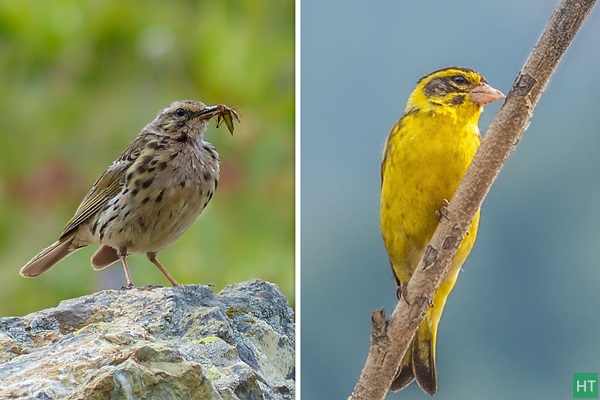
Kashmir Great Lakes trek cost and packages for 2023:
A) Fixed Group Deparutes/Tours: TREK FEE: ₹17,950 per person ( Sitkari to Naranag ) + 5% GST. Dates are published and available in the Booking Form calendar (marked in green). TREK FEE includes all meals, twin sharing tent accommodation, permit, guide, cook support staff and camping equipment. Your tour is travel and medically insured for a duration of 10 days. Check detailed inclusions and exclusions list in the COST INCLUSIONS tab.
Note: Offloading of backpack is ₹ 2500 per bag up to 10 Kg for the entire duration of the trek.
B) Customised Private tours: It is also possible to customise this trek as per your preferred dates and services. This is usually cost effective when you are a larger group of 10 people or more. However this is also suitable for smaller groups who prefer more flexibility or tailor made itineraries and additional services suiting their specific needs.
Below is a Price-Matrix for customised treks assuming the same inclusions and exclusions as that of our group departures (Economy inclusions, same as that of Fixed group departures).
5% GST applicable on TREK FEE.
How to reach Kashmir Great Lakes trek base (Sitkari near Sonamarg):
Our trek base Sitkari is around 3 hours drive from Srinagar via Kangan and Gangangir. Similarly trek end point Naranag is around 60 Km away from Srinagar.
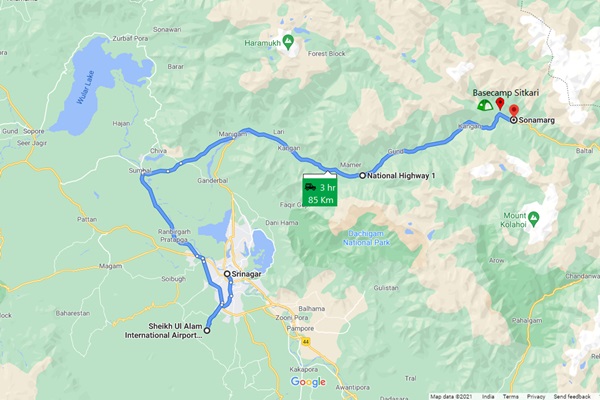
We will arrange a car pick up from the airport/city centre to trek base Sitkari and from trek end point Naranag to Srinagar back. The charges for 2023 are following:
Srinagar airport to base camp Sitkari: ₹ 5000 (Tata Sumo, Non AC) Naranag to Srinagar: ₹ 5000 for a Tata Sumo (Non AC). You pay directly to the driver sharing equally.
Most convenient way to reach Srinagar is via flight. Sheikh Ul-Alam International Airport in Srinagar (Code: SXR) is around 10 Km away from the city centre.
Otherwise, the nearest railway station is in Jammu (Station Code: JAT) and it takes around 10 -12 hours to reach Srinagar, covering ~ 280 Km.
Why treks with HT?
Duration: 7 days of trek; Srinagar to Srinagar in 8 days.
Prerequisite: Prior trekking experience is desirable. Good physical fitness to comfortably walk sustained duration on mountais.
Highest Point: Gadsar Pass ~ 4200 m/13750 ft.
Grade: Moderate
Physicality: 6.5/10
Length: ~ 70 Km
Seasons: July to September
Further Option: From Naranag drive to Sumbhol and trek to Tarsar and Marsar
Access: Trek starting point is Shitkari, Sonamarg, 85 Km from Srinagar
Rail station: Jammu Tawi (STN Code: JAT)
Airport: Srinagar (Code: SXR)
Upcoming scheduled dates for KGL trek:
- You can check the scheduled Fixed Departure dates in the calendar available inside Booking Form or inside REGISTER NOW form. Tour starting Dates are highlighted as per our itinerary (Day 1 of 8 days itinerary) .
- At present BOOK NOW functionality is disabled . You can get all the information in your email by submitting the REGISTER NOW form.
- If you are a group of people and available dates are not matching then you may select Custom date mode (by clicking the Select your custom date) and fill in the displayed form.
- You can also check all the available dates at a glance in our TREK CALENDAR .
- Trekkers need to reach Srinagar on Day 1 by 12 noon. Return to Srinagar on Day 8 evening by 8 pm. Arrange your tickets for inward journey and return accordingly.
Getting to Sonamarg (The trek base):
We will arrange a car pickup from Srinagar to Sonamarg and from Naranag to Srinagar back. This will be shared equally by the availing team members.
The best option to reach Srinagar is by flight. There are direct flights from Delhi.
By train one has to reach Jammu and then a drive to Srinagar takes around 12 hours covering approximately 300 Km.
Drive to Sonamarg: 90 Km - 3 hours
Pickup from Srinagar TRC in the afternoon (between 2 to 3 PM) and reach Shutkari (~ 2300m, 7500ft) the trek base which is 2 Km before Sonamarg. The 80 odd Km drive from Srinagar takes up to 3 hours, following Sindh river on Srinagar Leh highway. The camp site is beside a tributary to Indus and located opposite to the small village called Shutkari. Tented accommodation for the night.
Trek to Nichnai: 11 Km - 7/8 hours
Trek to vishansar via nichnai pass: 12 km - 6/7 hours, trek to gadsar via kishansar and gadsar pass: 12 km - 7/8 hours, trek to myangandhop via satsar: 10 km - 6/7 hours, trek to nandkul via zaj pass: 10 km - 6/7 hours, a walk to gangabal lake plus a rest day, trek to naranag: 11 km - 6/7 hours; drive to srinagar: 70 km - 3 hours.
P.S.: Distances and altitudes are approximate and may not be exact.
TREK FEE: ₹ 17,950 (Sitkari near Sonamarg to Naranag) + 5% GST
Inclusions:
Accommodation in twin sharing tents as per itinerary during the trek.
All Meals during the trek (vegetarian with occasional serving of eggs) including breakfast, hot/packed lunch, and dinner with morning and evening tea.
Professional Guide, Cook & Helper.
Porters/Packed animals to carry the central logistics.
Camping equipment like Sleeping bag, Carry mattress, Dining tent, Toilet tent, Gaiters, Micro spikes/Crampon.
Permit fee, camping charges, forest levy as required in the trek.
Basic Medical & First Aid kit.
Cost of rest or buffer day.
Travel cum Medical Insurance Policy covering high altitude trekking tours (For Indian nationals it is included in the TREK FEE, up to 60 years of age) for a duration of 7 days.
Exclusions:
Transportation from Srinagar airport to trek base Sitkari, and from trek end point Naranag to Srinagar back. ₹ 4500 by a Tata Sumo (Non AC) one way .
We assume that you will carry your Rucksack/Backpack including all your personal belongings. If you prefer to offload your bag and be carried by our horse/porter then an additional Rucksack offloading charge of ₹ 2500 is to be paid directly on spot for the entire duration of the trek. One such rucksack should weigh within 10 kg.
₹ 2000 + 5% GST per person additional for foreign citizens toward permits and different fees.
Any tip/gratuity to the HT supports staff.
Anything which is NOT mentioned in the “Inclusions” or personal in nature.
- We assume that you have read and understood our “ Terms & Conditions ” before Booking a trek/tour.
- To reserve your place in a scheduled Fixed Departure trek or a Customised/Private trek pay 25% of the Trek/Tour Fee as the initial “Booking Deposit” . You can pay by Net banking/Draft/Cheque/Credit/Debit cards. This will ensure your participation in the desired trek and we will reserve your place in the scheduled date. You need to pay the remaining amount at least 15 days before Trek Starting Date .
- If you book a Trek/Tour before 14 days or less from Trek/Tour Starting Date, you need to pay the full Trek/Tour Fee .
Cancellations:
- “Booking Amount” i.e. 25% of the Trek/Tour Fee is Non-Refundable at any stage.
- If in case you are not able to make it due to unavoidable reason(s), we provide you a very flexible choice of Shifting to another trek within next one year . One year is counted from the starting date of the trek/tour you booked initially with us.
- In case you postpone your trip you need to inform minimum of 15 days before the trek/tour starting date. (Though we suggest to inform us earlier if known)
- In case you postpone a trek/tour before 15 days of the scheduled Trek/Tour Starting date or prior , you may shift to another group of the same trek/tour scheduled in the same season or within next one year. You may shift to another suitable route also. For changing any, you need our approval first. Your request must be in written communication through your registered email with us.
- If you cancel/postpone a trek/tour from 14 days to 8 days before tour starting date , your Booking Amount is Non-Refundable. We will not take any request of shifting dates. We will charge 50% of the amount as Cancellation Charges and process refund of remaining 50%. You may also shift to another group within next year but 25% Booking Amount will be deemed as Cancellation Charge and the rest amount will be transferred to the shifted group.
- If you cancel a trek/tour 7 days (i.e. a week) before Trek/Tour Starting Date or later , there will be NO REFUND.
- In case of any unforeseen incident including but not limited to natural calamities like flood, earthquake, landslide, forest fire or any political unrest, if we are compelled to cancel the trek/trip, you will be entitled to redeem the full amount for the same/similar kind of trek/trip within next one year.
If you need more clarifications write in to [email protected]
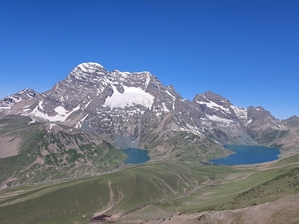
Tour Reviews
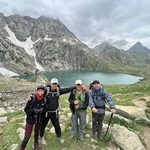
We are Thai people, This is my first time trekking for me, I had a wonderful time with Himalayatrekker, All staff very nicely for our team. Thank your for my new experience in wonderful places
Leave a Review
Cancel reply.
You must be logged in to post a comment.
You May Also Like
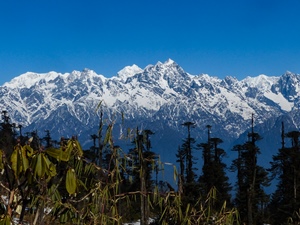
Maenam Hill trek
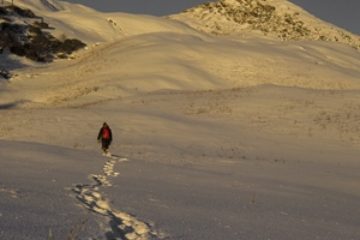
Dayara Bugyal Trek
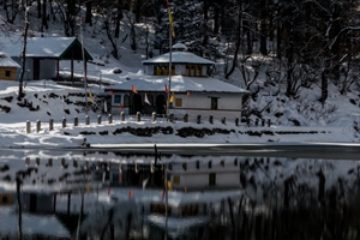
Dodital Trek
Submit this form that we can email you all the necessary details and call you to discuss., tour starting date: green boxed dates indicate starting of a scheduled fixed departure tour (day 1 of our tour itinerary). please check the calendar and choose a suitable fixed departure date (green boxed) unless dates are not matching or you are looking for a customised/private trip., i accept the terms & conditions.

Kashmir Great Lakes Trek
Introduction.
The Kashmir Great Lakes Trek is a moderate hiking trail in the western Himalayas of the Kashmir region. The base-camp Sonamarg lies on the Srinagar-Leh National Highway. The ending point Naranag village is also connected with the same Highway. The trek can be done in both ways, but to escape the direct Sun it is recommended to commence the trek at Sonamarg and end at Naranag as it treks mostly in a westerly direction.
The Great Lakes as the name suggests treks through many high altitude alpine lakes situated at the foothills of different snow-clad mountain peaks. The most famous lakes are Vishansar and Gangabal Lakes. It crosses streams, plenty of colorful alpine meadows, and ascends three mountain passes with an average altitude of 4000m above sea level. The highest mountain peak of the trek which dominates the second part of the trek is Mount Haramukh standing at 5300 meters above sea level.
The Great Lakes Trek expedition is no walk in the park. Arduous days, steep mountain passes, and altitudes approaching 4200m demand a sure-feet and a good amount of physical and mental fitness. The difficulties of the trek are rewarding and the challenges are worth it for the sense of achievement. This trek of the Kashmir is the most beautiful and most serene of all treks in the Himalayas.
While planning your trek, as a beginner keep the following points in consideration:-
- you feel fit enough to trek for hours.
- you walk two or three kilometers daily.
- you don’t have any breathing problems.
- you are not scared of heights.
FIXED DEPARTURES (June-Sept 2024)
21 June - 28 June 2024 (OPEN) 23 June - 30 June 2024 (OPEN) 28 June - 5 July 2024 (OPEN)
4 July - 11 July 2024 (OPEN)
6 July - 13 July 2024 (OPEN)
7 July - 14 July 2024 (OPEN)
12 July - 19 July 2024 (OPEN)
13 July - 20 July 2024 (OPEN)
14 July - 21 July 2024 (OPEN)
19 July - 26 July 2024 (OPEN)
20 July - 27 July 2024 (OPEN)
21 July - 28 July 2024 (OPEN)
2 August - 9 August 2024 (OPEN) 3 August - 10 August 2024 (OPEN) 4 August - 11 August 2024 (OPEN) 5 August - 12 August 2024 (OPEN) 9 August - 16 August 2024 (OPEN) 10 August - 17 August 2024 (OPEN) 11 August - 18 August 2024 (OPEN) 12 August - 19 August 2024 (OPEN) 17 August - 24 August 2024 (OPEN) 18 August - 25 August 2024 (OPEN) 24 August - 31 August 2024 (OPEN) 25 August - 1 Sept 2024 (OPEN) 30 August - 6 Sept 2024 (OPEN) 31 August - 7 Sept 2024 (OPEN)
2 Sept - 9 Sept 2024 (OPEN) 6 Sept - 13 Sept 2024 (OPEN) 7 Sept - 14 Sept 2024 (OPEN) 8 Sept - 15 Sept 2024 (OPEN) 13 Sept - 20 Sept 2024 (OPEN) 14 Sept - 21 Sept 2024 (OPEN) 15 Sept - 22 Sept 2024 (OPEN)
High Altitude Precautions PDF
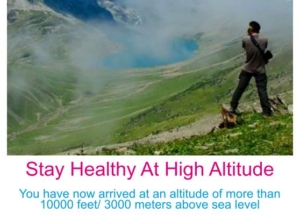
What’s included in the Price?
For Day 1, from Srinagar airport to Sonamarg base camp; Day 7, from Naranag to Srinagar Hotel and Day 8 for airport or Bus Station drop
Twin sharing; 2 persons in a 3-man-tent
Hotel Ash Vale/ Houseboat Jewel Box or similar
Tents (twin sharing), dining and kitchen tent, toilet tents, sleeping bags and mats. Trekking poles (1 per person) also included.
Languages; English, Urdu, Hindi and Kashmiri
Horses to carry your backpack (below 20kgs) throughout the trek (except day sack)
Trek- 4 meals per day (Breakfast, Lunch, Tea snacks, Dinner). Hotel or Houseboat – 2 Meals (Dinner and Breakfast)
Wildlife/ Forest Permits
Packed bottled mineral drinking water (2 ltrs per person) on first day of the trek. Later on boiled drinking water at camp sites in the morning & evening hours.
With Medical Oxygen
For trek-Insurance, we need a medical fitness form. You can download the proforma here and after filling in the details, email us a copy to [email protected]
What’s not included in the Price?
Costs associated with a medical incident, such as your evacuation from the mountain and/ or hospitalization (for which you should have travel insurance)
Brief Itinerary
Day 1 :- Srinagar to Sonamarg
- Arrive Srinagar (Alt. 1600m)
- Pickup from Srinagar airport or Bus stand or hotel
- 100 kms drive to Sonamarg, approx 3 hours.
- Our first campsite Sonamarg (alt 2610m) at Sind riverbank.
(Transport from Srinagar to base-camp. Tea, dinner at the camp)
Day 2:- Sonamarg to Nichnai.
- Altitude: 2610m to 3450m
- 11 kms trek, approx 7 hours
(breakfast, lunch, tea, dinner)
Day 3 :- Nichnai to Vishansar Lake via Nichnai Pass
- Altitude: 3450m to 3650m via 4080m
- 12 kms trek, approx 7 hours
Day 4:- Vishansar Lake to Gadsar via Gadsar Pass
- Altitude: 3650m to 3550m via (4180m)
- 14 kms trek, approx 8 hours
Day 5:- Gadsar to Satsar
- Altitude: 3550m to 3650
- 9 kms trek, approx 5 hours trek
Day 6:- Satsar to Gangabal Lakes via Zajibal Pass
- Altitude: 3650 to 3580m via 4080m
- 11 kms trek, approx 6 hours
Day 7:- Gangabal to Naranag trek, Drive to Srinagar
- Altitude: 3580m to 2250m
- 15 kms trek, approx 6 hours
(Breakfast at camp, Lunch at Naranag, Transport from Naranag to Srinagar Hotel, dinner at the hotel)
Day 8:- Srinagar Airport or Bus Stand drop.
- 5 kms drive to bus stand, approx 20 minutes
- 12 kms drive to Srinagar airport, approx 30 minutes
(Breakfast, Transport from Srinagar to the airport for departure)
Detailed Itinerary
Day 1: – Arrival. Reception at Srinagar airport/bus station. On arrival at Srinagar airport or bus station, our representative cum driver will receive you and drive to Sonamarg for an overnight stay in a tented camp. We have a tea or kahwa before the dinner at the evening. The drive through Ganderbal villages takes maximum 3 hours to cover a distance of around 100 kms. Sonamarg is the last town with a market before the start of the trek.
Day 2: – Sonamarg – Nichnai (7 hrs trek). After breakfast at the campsite, we pack our load and backpacks on horses and start our trek. Our trek is a slightly steep ascends the meadows and enters a pine/ birch forest at Shokdari. There’s a army check post where we have to produce our ID cards or passports. The process takes not more than 10 minutes to tally the ID’s with the trek-permits which we had acquired well in advance. The officials are very friendly and the short break is worth to have a distant sight of the Thajwas glacier and the vibrant Sonamarg town. We trek pine forest for 3 hours and have our lunch at Shokdari Top. After the lunch our trek enters birch forest a slight descend trek, very comforting in walking as we enter the vast and long Nichnai meadow. It takes another hour or two to reach our camping ground to have our tea or kahwa and finally the dinner and an overnight stay.
Day 3: – Nichnai – Vishnasar – Krishansar Lake (7 hrs trek). After the breakfast, we leave Nichnai meadow crossing a small icy-water stream, we start ascending one of the three passes of the trek the Nichnai Pass (4080m). The pass will test our legs and most importantly our stamina. The trek which takes an hour of some steep hiking looks never-ending. We ascend the pass through grazing pastures of sheep and goats. After crossing the pass we enter into the Vishansar Valley which is also called as “the valley of medicinal plants”, due to its sheer varieties of alpine flowery plants. We take our lunch and trek all the way down to Vishansar Lake. We take our tea or kahwa and the dinner at the campsite. Vishansar Lake is just a 10 minutes walk away from our campsite.
Day 4: – Vishansar – Gadsar (8 hrs trek). After the breakfast, we start our day’s trek looking over and over to Vishansar Lake while we ascend to Krishansar Lake. The Krishansar Lake is a sibling of the former, it lies just over a ridge. We take its eastern shore to ascend the second and the highest pass of the trek the Gadsar Pass (4180m). The pass-trek is steeper than that of the Nichnai. It takes 2 hours to ascend the pass. On the top of the pass, we have the aerial view of the whole Vishansar valley among it are situated the twin lakes of Vishansar and Krishansar “the source of Neelam River”. We trek-down the Gadsar valley and take our lunch at the Gadsar Lake. The valley is also full of the flowery alpine plants and the green carpeted mountains look fabulous with their snow-clad tops. Our alpine pasture trek is full of Kashmir sheep, while walking down the trek it looks never ending as finally we arrive our camping ground at Kostour Kot. Before few years there used to have another army check-post, but luckily they are gone. Now no more checking at Gadsar. We take our tea or Kahwa and have our dinner at the evening.
Day 5: – Gadsar – Satsar Lakes – Megandoab (5 hrs trek). After the breakfast we ascend Kostur Kout leaving Gadsar valley, it takes 2 hours of a trek to enter the meadow of Rasbal. At the Rasbal a flowing river disappears inside the boulders and flows underground. The trek follows a fertile meadow. We continue our trek through seven small lakes of Satsar and camp at Megandoab at the foothills of the third pass of Zajibal for an overnight stay. Today we take our lunch at the campsite as this is the shortest day of the trek.
Day 6: – Satsar – Gangabal lake (6 hrs trek). After the breakfast at the campsite we start our trek by criss-crossing boulders. We ascend the last pass of our trek ‘Zajibal Pass (4080m)’. It takes maximum 3 hours of alpine trekking. As we reach atop, all our tiredness falls apart by looking at the views and the mountain scenery of the Mount Haramukh (5300m) just standing in the front and at its footsteps lie the twin beautiful alpine lakes of Gangabal and Nundkol. There is also a clear view os the distant Kolesar Lake. We descend the pass and reach our campsite at Gangabal Lake for an overnight stay. We take our lunch at the lake and tea and dinner at the campsite.
Day 7: – Gangabal – Naranag. (6 hrs trek) – Srinagar (2 hours drive). We leave Gangabal and Nundkol Lakes and trek down the meadows of Trunkhol. We may need to produce our permits and show our ID cards at the Army check-post at the Trunkhol. We continue our trek down and enter the tree-line. We trek down to Naranag village through the pine forests of Bodpathri. Here ends our 6 days of walking. We take our lunch at a Restaurant and take our car drive back to Srinagar houseboat or hotel for an overnight stay. Dinner and breakfast at the houseboat or the hotel.
Day 8: – Departure day. Our representative will drop you at the airport or bus station for the departure.
What to Carry?
The trek is supported by horses. You will need to carry only a light sack, weighing about 4-6kg for your items like passport, money, and camera gear. The following is a list of the items you should carry on the trek. If you have items that can not be used on the trek, you can store them at our houseboat or our office and take them back after returning from the trek.
(Please note that only postpaid Indian mobile sim cards (Jio, Airtel and BSNL) work in Kashmir Valley. There’s no cellular connectivity from Day 2 to Day 6 of the trek.)
- Passport or a valid ID card
- Duffel Bag 60 liters
- One Pair Trekking Shoes
- One Pair Trail Approach Shoes
- Trekking Pants
- Hooded Rain Jacket
- One Pair Sunglasses
- One Pair Liner Gloves
- Small Size Day-Pack
- Two Pair Trekking Socks
- One Pair Sandals
- Extra Warm Clothes
- Warm Hooded Down Jacket
- Sunscreen Cream
- Any Personal Medication
Kashmir Treks are achievable by anyone with a healthy lifestyle and a good level of general fitness. Team members should be willing to be part of a team working together to achieve the goal of the expedition. As a team member, you should have an adventurous and robust spirit. The biggest challenge on this expedition will be the many consecutive days of challenging trekking across alpine terrain, much of which at altitudes of above 3000m.
Minimum fitness requirements
- Trek: up to 7km per day.
- Daily activity: up to 5 hours’ trekking per day.
- Carry: up to 5kg in a day-sack.
- Terrain: remote, uneven, snowy, icy, rocky, sometimes exposed terrain at up to 4200m.
- Climate: Can be sunny in valleys and cold and windy at high altitudes. June and September months are cooler than those of July and August. Averages are 3000m, 1°C to 20°C.
- Swim: not required though there will be stream crossings to make.
Address Info
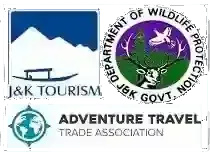
Testimonials

Kashmir Treks on TripAdvisor 5 out of 5 based on 148 reviews.
GET IN TOUCH
Useful links.
- Weekend +91 87 6262 3333
- Himalayan +91 9886 444 809
- International +91 84968 85968
- [email protected]
- One Day Treks
- Two Day Treks
- Himalayan Treks
- International Treks
- Private Treks
- Group Adventures
Kashmir Great Lakes Trek
- Guide to Kashmir Great Lakes Trek
Introduction to the Kashmir Great Lakes Trek
The Kashmir Great Lake trek is, without a doubt, one of the most beautiful treks in India. The Kashmir Great Lakes Trek is at the top of the list of must-do treks because of its breathtaking views. The turquoise and emerald green lakes, the green meadows, and the valleys full of wildflowers are all different but mesmerizing in their own way.
Every time you cross a mountain pass, you will come down to a lower elevation; these fields feel even more peaceful. Kashmir Great Lakes trek should be at the top of your list of places to visit if you love being outdoors and taking in the beauty of tall mountains and picturesque scenery.
This page is your comprehensive guide for the Kashmir Great Lakes Trek. We have consolidated all the information you need to trek safely to the Kashmir Great Lakes. This page will give you a general overview of the Kashmir Great Lakes trek, along with the blog links.
How can we go Trekking in Kashmir, and is it safe?
Treknomads has been leading treks in Kashmir for many years. There have never been any problems in the trek. There may be some irregularities, such as curfews, but our teams can handle these situations safely.
You must carefully research and plan your trip while trekking in Kashmir with as fewer risks as possible. Keep up with the news and the local authorities. Learning about the area and preparing your route and trek accordingly is essential.
We understand that you still might have questions like - How to plan and minimize risk, what are the best safety tips, what to carry, and so on.
We have tried answering all of these in the blog, and the link has been shared below.
https://www.treknomads.com/blog/how-can-we-go-trekking-in-kashmir-and-is-it-safe/
6 Reasons to Take the Kashmir Great Lakes Trek
People who want to try something new and exciting will love the Kashmir Great Lakes trek. It is located 75 km northeast of Srinagar. The trek takes 9 Nights and 10 Days and has moderately challenging terrain, along with some steep ascents and descents. This trek has challenges and adventures that you won't find anywhere else. One of the main reasons to go on this trek is to see numerous beautiful alpine lakes that are hard to find on other treks.
This Kashmir Great Lakes Trek takes hikers past six beautiful lakes like Vishansar, Satsar, Krishnasar, Gadsar, Gangabal, and Nundkol.
If you still are not convinced, we have many more reasons to take the Kashmir Great Lakes trek in the blog below -
https://www.treknomads.com/blog/6-reasons-to-take-the-kashmir-great-lakes-trek/
When is the best time for Kashmir Great Lakes Trek?
Want to know when the best time is for the Kashmir Great Lakes Trek? When we talk about Kashmir Great Lakes, the weather plays a significant role. Trekkers can go on the Kashmir Great Lakes trek during July, August, and September. Kashmir has a very cold place, so the entire area is covered in snow except from June to September, making it almost impossible to move around in the rest of the months. The monsoon rains can't get to Kashmir because of the Pir Panjal mountain range, which separates Kashmir from the rest of the Indian subcontinent. July to September are the peak of summer and the start of autumn. No matter the weather, the best times to visit Kashmir are the second half of July, the whole month of August, and the first half of September.
In the blog below, you will read in detail about - What the weather is like during July, August, and September in detail, the flora and fauna you might come across, and the Kashmir Great Lakes Trek month-by-month Summary.
https://www.treknomads.com/blog/kgl-trek-best-time-for-kashmir-great-lakes-trek/
What to Expect on the Great Kashmir Lakes Trek?
Now that you know what you will encounter on the Kashmir Great Lakes trek, you might wonder what to expect on this trek. The Kashmir Great Lakes Trek not only has beautiful views, but it is also a moderately tough trek. During the trek, the trail will often change from ascent to descent. On some days, you would trek up to the high point, for example, Gadsar Pass, which is 13,800 ft (4,200 m), and then hike down to a campsite on the other side of the mountain. Even though the Kashmir Great Lakes look like a relaxing trek through the fields, be aware of the difficulties that come with it. The long walks involved on a daily basis and the ups and downs we have to make as we move from one valley to the next can be hard on your lungs and your feet. In the blog below, we have discussed Sightseeing and other must-visit spots, accommodation, facilities, and basic amenities arranged by our team, temperature, and even the fitness level in detail.
https://www.treknomads.com/blog/what-to-expect-on-the-the-great-kashmir-lake-trek/
All you need to know about the Great Lakes Kashmir Trek
The Kashmir Great Lakes Trek is one of the most beautiful treks in India. It gives the trekkers a once-in-a-lifetime experience to see the beautiful natural scenery of the Himalayas. On the trek, you will see some of the most breathtaking views, like lakes and coniferous woods, beautiful wildflowers, and some rare flora and fauna. When getting ready for the trek, it is essential to make sure you know everything about the trek. We are sure that you have more questions like - What are the highlights of the KGL trek, how to plan for the KGL trek, which campsites you will be staying at, Things to do while on the great lakes Kashmir trek, and more. We tried our best to answer all the questions in the blog below. Have a look! -
https://www.treknomads.com/blog/all-you-need-to-know-about-the-great-lakes-kashmir-trek/
Kashmir Great Lakes Trek Experience
What speaks more than first-hand experience from one of the trekkers who joined us for the Great Lakes Trek? In the blog below, we will be talking about Highlights of the KGL trek from the point of view of trekkers. It also talks about what kind of preparation is required for a high-altitude trek, how to reach for the trek, and a detailed day-wise experience (with photos!).
https://www.treknomads.com/blog/kashmir-great-lakes-trek-experience/
Getting Fit for Kashmir Great Lakes Trek
The Kashmir Great Lakes Trek is an excellent experience for people who love trekking. This trek involves a lot of physical strength. To handle the ascents and descents on the trail at high altitudes, your upper body, lower body, and core must all be in good balance. If you are a beginner, this trek could get hard for you, so be prepared. If you are currently in the middle of your fitness regime, start a good workout routine three to five months before the trip. To know more in detail, read the blog below -
https://www.treknomads.com/blog/getting-fit-for-kashmir-great-lakes-trek/
Kashmir Great Lakes Trek Difficulty level
The Kashmir Great Lakes Trek has been classified as a moderately tough trek in terms of difficulty. Treknomads take the most important aspects of a journey, such as the kind of terrain, altitude, degree of steepness along the route, weather conditions, distance traveled, and length of time spent on the trek, into account to classify the trek as moderate. In this blog below, we have discussed the difficulty level in detail, increasing altitudes, steep ascents and descents, crossing high altitude mountain passes, boulder sections, and more.
https://www.treknomads.com/blog/kashmir-great-lakes-trek-difficulty-level/
Kashmir Great Lakes FAQs
Now that you know what you can look forward to on the trek, you should join us. If you wish to do the trek, you may have a few questions; in the blog below, Kashmir Great Lakes trek FAQs will help answer your queries and prepare you for the trek!
https://www.treknomads.com/blog/kashmir-great-lakes-trek-faqs/
- Testimonials
- Customized Private Treks
- Corporate Outings
- Cancellation Policy
Online booking system by Vacation Labs | © 2024 TrekNomads

- Trekking & Travel Events
- Travel Organizations
- Himalayan Treks
- Maharashtra Treks
- Karnataka Treks
- Travel Guides
- Weekend Getaways
- Trekking Tips & Advice
Kashmir Great Lakes Trek: Ultimate Guide
- Trekking Destinations
Are you an adventure enthusiast looking to embark on a thrilling journey amidst nature’s breathtaking beauty? Look no further than the Kashmir Great Lakes Trek.
Nestled in the picturesque region of Kashmir, this trek in India offers a mesmerizing experience that combines pristine alpine lakes, snow-capped mountains, and lush meadows.
This article explores the amazing trek and provides the information you need to plan an unforgettable adventure.
- Max Altitude: 13,750 Ft. (4,191M)
- Average Trekking Fees: ₹14,000 – ₹17,000
- Distance: 70 – 75 kms
- Difficulty: Moderate-Difficult
- Duration: 7-8 days
- Ideal For: Experienced Trekkers
- Best Season: July – September
- Region: Jammu & Kashmir
Table of Contents
Overview: A Glimpse of the Kashmir Great Lakes Trek

The KGL Trek is a mesmerizing adventure that takes you through some of the most stunning landscapes in the Indian Himalayas. This trek is renowned for its pristine alpine lakes, vibrant meadows, dense pine forests, and majestic snow-capped peaks. It offers a visual feast for nature lovers and avid trekkers alike.
The trek spans approximately 63 kilometres, usually completed in 7 to 8 days , starting from Sonamarg and concluding at Naranag. Along the way, trekkers are treated to seven breathtaking lakes, each with its distinct charm. From the serene Vishansar Lake to the mirrored beauty of Gangabal Lake, the shimmering waters create a surreal backdrop against the surrounding mountains.
The journey also presents diverse terrains, from gentle meandering trails to steep ascents, adding an element of challenge and thrill. Trekkers traverse through lush meadows adorned with colourful wildflowers, cross gushing streams, and navigate rocky paths, all while being enveloped in the grandeur of the Himalayas.
Camping under the starry skies and experiencing the remote mountainous region’s tranquillity adds to the trek’s overall charm. Trekkers often encounter local shepherds and nomads, providing a glimpse into this picturesque region’s traditional way of life.
With its awe-inspiring landscapes, azure lakes, and a sense of adventure at every step, the KGL Trek is a bucket-list-worthy experience that leaves an indelible mark on every trekker’s heart.
Additional Information for the Kashmir Great Lakes Trek
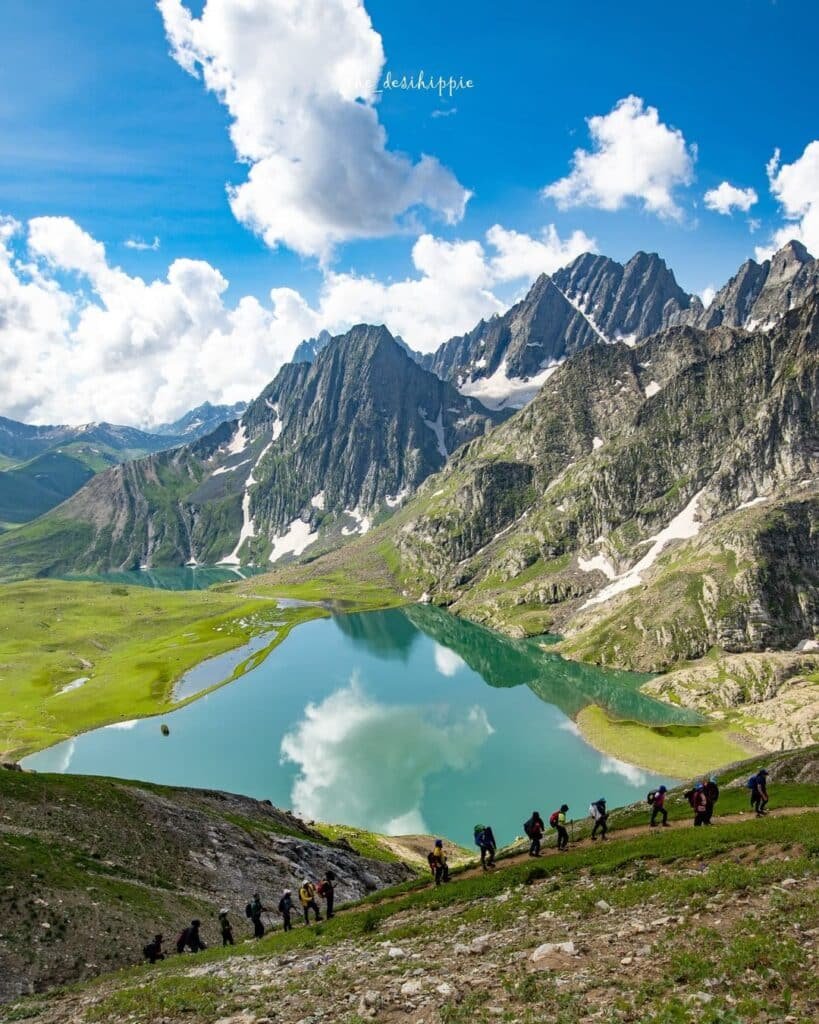
Trek Difficulty & Duration for the Kashmir Great Lakes Trek
The Trek offers moderate to difficult difficulty, making it suitable for experienced trekkers and those with a good fitness level. The trail involves gradual ascents and steep sections, with rugged terrain and occasional rocky patches. Trekkers should be prepared for varying weather conditions, including cold temperatures at higher altitudes.
The trek typically spans 7 to 8 days, covering a distance of approximately 70-75 kilometres from the base camp to the end point . Each day involves an average of 6 to 8 hours of trekking , allowing ample time to enjoy the breathtaking scenery and acclimatize to the altitude. It’s important to pace oneself, take regular breaks and stay hydrated.
Altitude sickness can be a concern on this trek, as it reaches heights above 4,191 meters (13,750 feet) . Listening to experienced trek leaders and following their instructions regarding acclimatization and safety precautions is crucial.
While the trek requires a certain level of physical endurance, trekkers are rewarded with awe-inspiring views of the majestic Himalayan ranges, pristine lakes, and vibrant meadows. With proper preparation, including cardiovascular exercises and stamina-building activities, adventurers can fully enjoy the enchanting beauty of the KGL Trek.
Best Time For the Kashmir Great Lakes Trek
The best time to embark on the trek is during the monsoon months of July to September . This period offers favourable weather conditions and ensures a safe and enjoyable trekking experience.
During this time, the region experiences pleasant daytime temperatures are around 15°C to 25°C (59°F to 77°F) in lower altitudes . The nights can get very cold, with temperatures going as low as 5°C to 10°C (41°F to 50°F) . The weather is relatively stable, with clear skies and minimal chances of rainfall, allowing trekkers to fully immerse themselves in the beauty of the surroundings.
Additionally, the monsoon months bring forth an abundance of colourful wildflowers and lush greenery, enhancing the visual appeal of the trek. The lakes are at their most enchanting, reflecting the surrounding mountains and creating stunning vistas.
It’s important to note that the region during the winter months there is a chance of heavy snowfall, making the trail inaccessible and increasing the risks associated with trekking. Monsoon season, from early July to mid-August, can bring unpredictable weather conditions and hinder the trekking experience .
Planning your trek between July and September lets you make the most of the pleasant weather, breathtaking landscapes, and optimal trail conditions, ensuring a memorable and safe trek.
Budget & Costing for the Trek
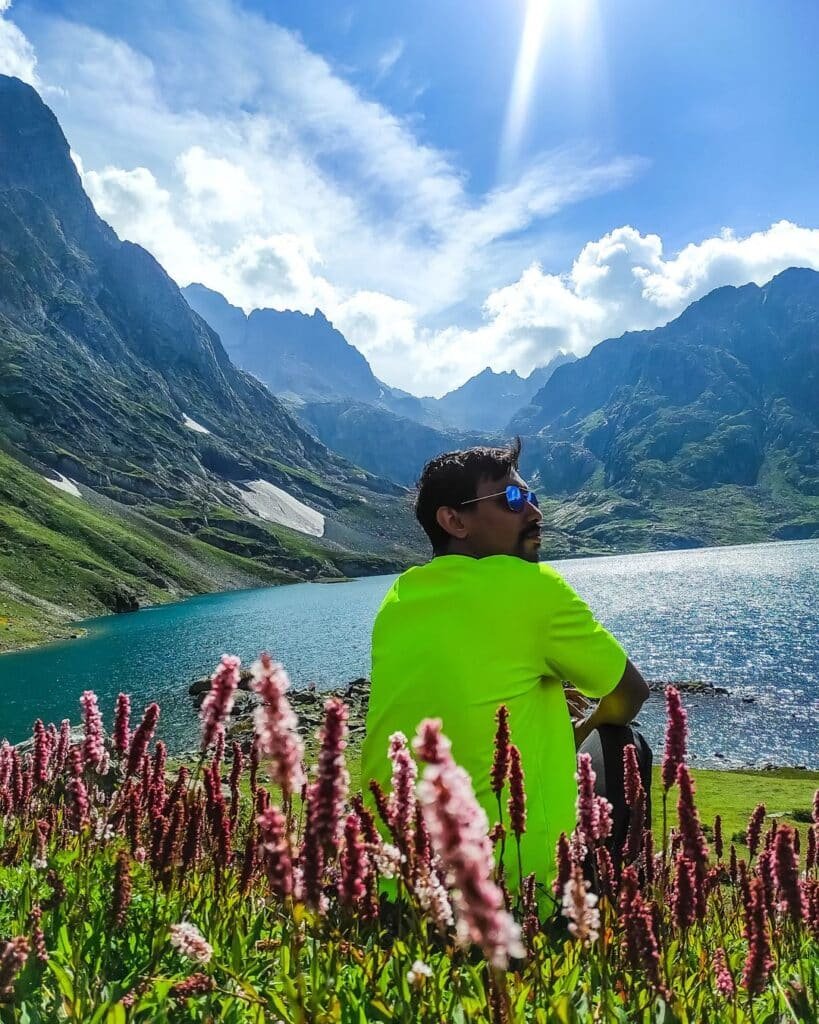
A breakdown of the costing and budgeting for the trek:
- Trekking Packages: Trekking packages are available from various trek operators and typically include services such as guides, porters, camping equipment, meals, permits, and transportation. The cost can range from approximately ₹14,000 to ₹17,000 per person , depending on the inclusions, duration, and quality of services.
- Flights: If you’re travelling from outside Jammu and Kashmir, you must budget for flights to Srinagar or Jammu. The cost can vary depending on the city you are flying from and the time of booking but generally ranges from ₹10,000 to ₹15,000 for a round trip from all the major cities in India.
- Local Transportation: Transportation from Srinagar or Jammu to the trek starting point (usually Sonamarg) and from the trek endpoint (usually Naranag) back to Srinagar or Jammu will incur additional costs, amounting to approximately ₹2,000 to ₹4,000 .
- Accommodation: During the trek, accommodation is usually provided in tents by the trekking organisations.
- Food and Water: Most trek packages include meals during the trek. However, it’s advisable to carry some extra snacks and energy bars. Budget around ₹100 to ₹300 per day for additional food and water supplies.
- Miscellaneous Expenses: Consider setting aside a budget for miscellaneous expenses such as trekking gear, personal medication, tips for guides and porters, and any additional activities or souvenirs. Depending on your requirements, allocate around ₹2,000 to ₹5,000 for miscellaneous expenses.
It’s important to note that these figures are estimates and can vary based on factors such as the trek operator, individual preferences, and exchange rates.
Researching and comparing prices from different trek operators is recommended to find the best package that suits your budget and requirements.
How To Reach?
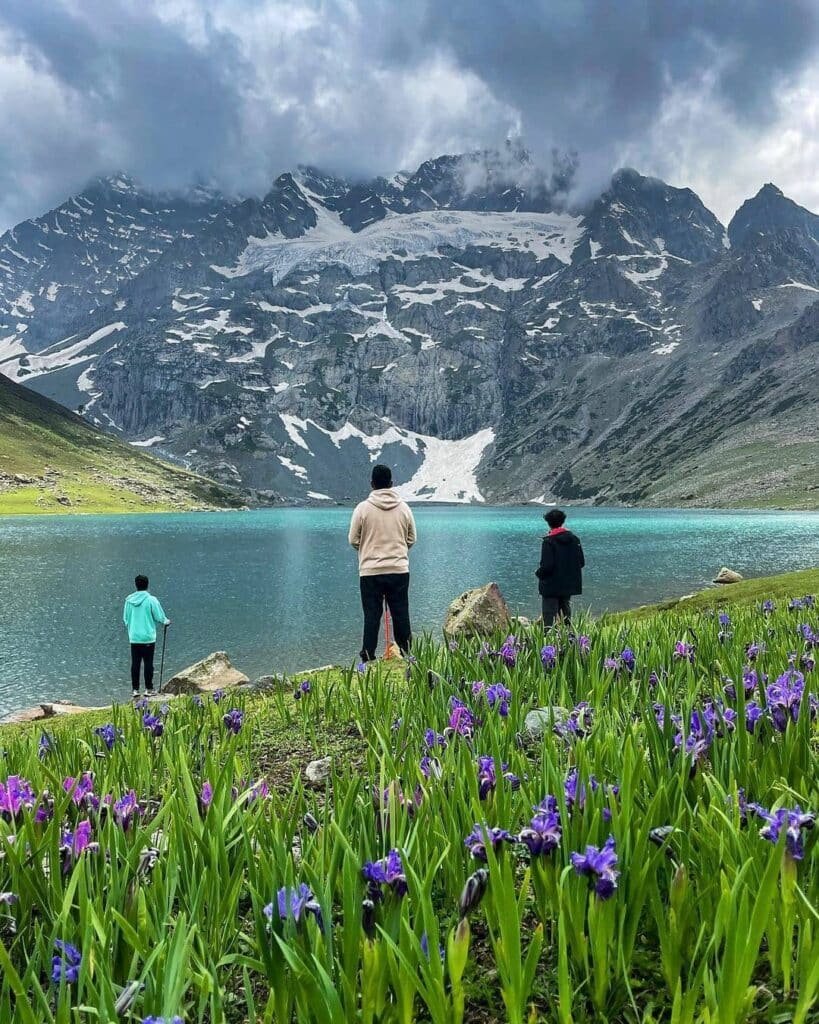
Reaching the start point of the trek involves travelling to Sonamarg, which serves as the gateway to the trek. Here are three standard modes of transportation to reach Sonamarg:
- Via Flights to Srinagar: The nearest airport to Sonamarg is the Srinagar International Airport. Several domestic airlines operate regular flights to Srinagar from major cities in India, including Delhi, Mumbai, Bangalore, and Kolkata. You can hire a pre-paid taxi from the airport or take a shared cab to reach Sonamarg. The journey from Srinagar to Sonamarg takes approximately 3 to 4 hours by road.
- Via Train: The nearest railway station to Sonamarg is the Jammu Tawi Railway Station in Jammu City. Jammu is well-connected to major cities in India by train. You can hire a taxi from Jammu or take a bus to Sonamarg. The journey from Jammu to Sonamarg takes around 8 to 9 hours, a distance of approximately 270 kilometres.
- Via Road: Sonamarg is accessible by road from Srinagar and other major regional cities. Srinagar is well-connected to cities like Delhi, Chandigarh, and Jammu by a network of national highways. You can drive to Sonamarg in a private vehicle or hire a taxi from Srinagar. The road journey from Srinagar to Sonamarg takes approximately 3 to 4 hours.
It’s important to note that road conditions in the mountainous region can be challenging, particularly during winters or adverse weather conditions.
It’s advisable to check the weather and road conditions beforehand and plan your journey accordingly. Hiring a local driver familiar with the terrain can also be beneficial.
Always leave ample time for travel, especially if you arrive on the same day as the trek departure. Reaching Sonamarg a day in advance is recommended to ensure a smooth start to your KGL Trek.
Detailed Itinerary For The Kashmir Great Lakes Trek
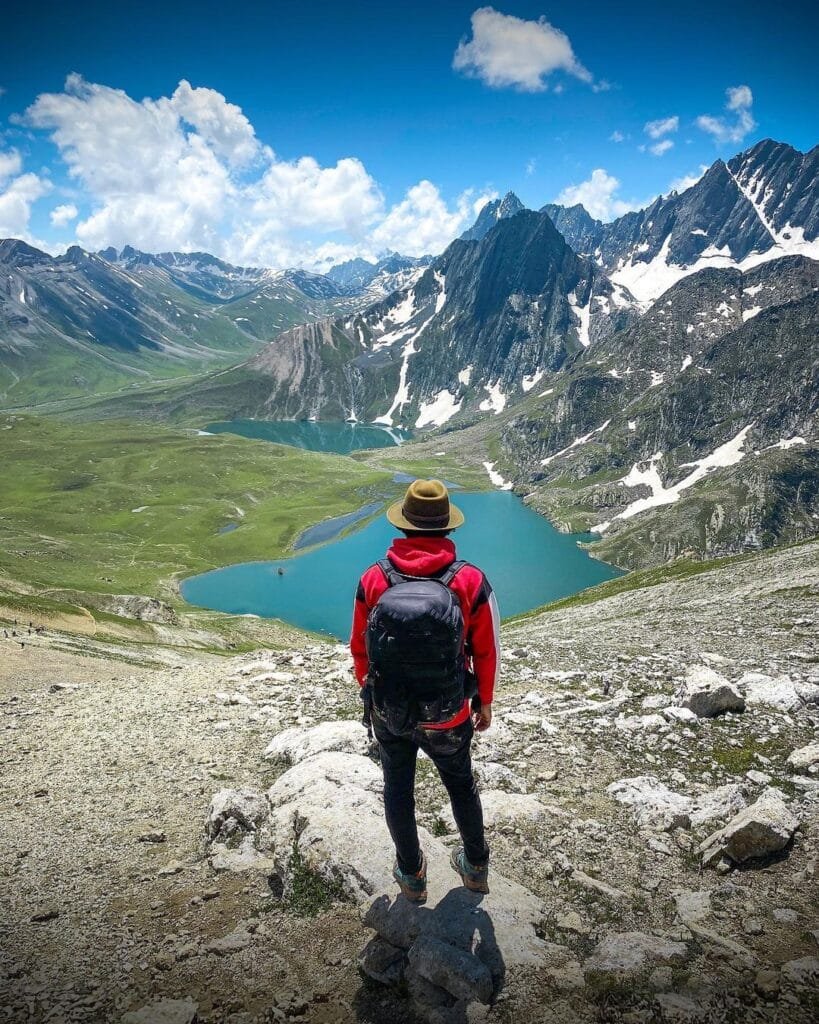
Day 1: Srinagar to Sonamarg
On the first day of the trek, you will begin your journey from the beautiful city of Srinagar, often called the “Venice of the East.” From Srinagar, you will travel to Sonamarg, the gateway to the trek. The scenic drive to Sonamarg takes you through picturesque landscapes, lush green meadows, pine trees and the gushing Sindh river.
Day 2: Sonamarg to Nichnai – 11 KM | 8 Hours
After a restful night in Sonamarg, your trekking adventure commences. The trail from Sonamarg to Nichnai is relatively moderate, allowing you to gradually acclimate to higher altitudes. As you hike through dense pine and maple forests, you will be captivated by the vibrant flora and fauna surrounding you.
Day 3: Nichnai to Vishansar Lake – 12 KM | 7 Hours
As you leave Nichnai behind, the trail leads you to the captivating Vishansar Lake via Nichnai Pass. This azure gem nestled amidst towering mountains will leave you amazed. The peaceful ambience and the mirror-like reflections of the mountains on the lake’s surface create a surreal setting.
Day 4: Vishansar Lake to Gadsar Lake – 14 KM | 10 Hours
Continuing your journey, you will trek from Vishansar Lake to Gadsar Lake via Gadsar Pass, known as the “Lake of Flowers.” The trail presents a stark contrast as you traverse the rocky terrain and witness the dramatic change in the landscape. Gadsar Lake, with its turquoise waters, surrounded by snow-clad peaks, offers a serene escape from the challenges of the trail.
Day 5: Gadsar Lake to Satsar Lake – 9 KM | 6 Hours
From Gadsar Lake, your next destination is the stunning Satsar Lake. This cluster of seven interconnected lakes, each with its distinct character, is a true marvel of nature. The tranquil ambience and the breathtaking views make this leg of the trek a memorable experience.
Day 6: Satsar Lake to Gangabal Twin Lakes – 11 KM | 6 Hours
The penultimate day of the trek takes you to the mesmerising Gangabal Twin Lakes. These twin lakes, nestled amidst pristine meadows and surrounded by lofty mountains, offer a sense of tranquillity and solitude. The reflections of the surrounding peaks on the crystal-clear waters create a magical sight.
Day 7: Gangabal Twin Lakes to Naranag – 15 KM | 7 Hours
On the final day of the trek, you bid farewell to the enchanting Gangabal Twin Lakes and make your way to Naranag. The trail descends through lush green meadows and picturesque landscapes, giving you a chance to reflect on your incredible journey.
Highlights of the Kashmir Great Lakes Trek
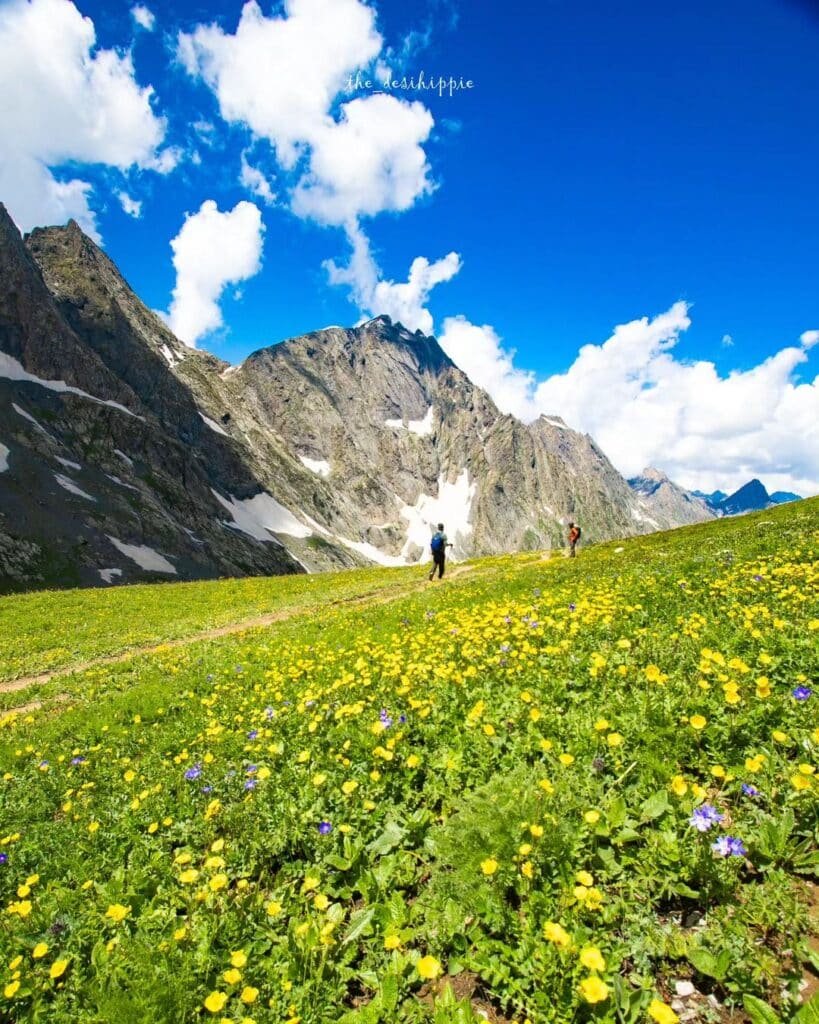
- Breathtaking Alpine Lakes: The trek showcases a series of seven stunning alpine lakes, each with its unique charm. From the crystal-clear waters of Vishansar and Krishansar Lakes to the picturesque Gangabal Lake nestled amidst snow-capped peaks, the beauty of these lakes is truly mesmerising. The tranquil surroundings and mirrored reflections create postcard-worthy vistas.
- Enchanting Landscapes of Kashmir: The trek takes you through some of the most awe-inspiring landscapes in Kashmir. From lush meadows adorned with colourful wildflowers to dense pine forests and majestic mountains, every step offers a feast for the eyes. The picturesque beauty of the region, with its rolling hills, towering peaks, and vibrant flora, showcases the natural splendour of the Himalayas.
- Challenging Trekking Experience: The trek provides a thrilling and rewarding experience. The trail involves a mix of moderate and challenging sections, including steep ascents and rocky terrain. It pushes trekkers out of their comfort zones, testing their physical endurance and mental resilience. Overcoming these challenges and reaching the high-altitude lakes brings excellent accomplishment.
- Immersion in the Kashmiri Culture: During the trek, trekkers interact with the local people, including shepherds and nomads. This allows for a cultural immersion experience, gaining insights into the traditional way of life in the region. Interacting with warm and welcoming locals adds a special touch to the trekking experience.
- Remote and Pristine Wilderness: Embark on an adventure into remote and untouched wilderness. The Kashmir Great Lakes Trek takes you through off-the-beaten-path trails, away from the hustle and bustle of civilisation. Experience the serenity and solitude of the mountains, surrounded by the pristine beauty of nature.
The Kashmir Great Lakes Trek truly captivates with its serene lakes, breathtaking landscapes, and the sense of adventure that comes with stepping out of one’s comfort zone.
Essential Gear and Equipment for the Trek
Before embarking on the trek, it is essential to pack the right gear and equipment to ensure a safe and comfortable journey. Here is a list of items you should consider carrying:
- Trekking shoes with good ankle support
- Backpack with rain cover
- Trekking gaiters
- Warm and waterproof clothing layers
- Sleeping bag suitable for sub-zero temperatures
- Trekking poles for better stability on uneven terrains
- UV-protected sunglasses and sunscreen
- Water bottles and water purification tablets
- Headlamp or flashlight with extra batteries
- First aid kit with essential medications
- Portable power bank for charging electronic devices
- Portable oxygen cylinders
Safety Tips & Precautions
While embarking on any trek, safety should always be a top priority. Here are some essential safety tips to keep in mind during the Kashmir Great Lakes Trek:
- Trek with an experienced guide and follow their instructions.
- Stay hydrated and carry an adequate supply of water.
- Pack light and carry only the essential items.
- Dress in layers to adapt to changing weather conditions.
- Respect the environment and maintain cleanliness.
- Inform someone about your trekking plans and expected return.
- Stay updated about weather conditions and local regulations.
- Avoid alcohol and smoking during the trek.
The Kashmir Great Lakes Trek is a journey of a lifetime, offering adventure seekers an unparalleled opportunity to witness nature’s grandeur.
From the tranquil alpine lakes to the majestic snow-capped peaks, every step of the trek is filled with awe-inspiring beauty.
So lace up your boots, pack your backpack, and prepare to embark on an unforgettable adventure in the paradise of Kashmir.
The Great Lakes of Kashmir trek is moderately difficult and suitable for experienced trekkers. It involves steep ascents, rocky terrain, and high altitude, requiring good physical fitness and prior trekking experience.
The cost of trekking the Great Kashmir Lakes can vary depending on factors such as the trekking company, duration, and inclusions. The average cost ranges from ₹14,000 – ₹17,000 per person, covering permits, guides, accommodation, meals, and transportation.
The Kashmir Great Lakes trek is typically completed in 7 to 8 days. It covers a distance of approximately 70-75 kilometres through breathtaking landscapes, passing by the stunning alpine lakes of Kashmir.
The 7 Lakes trek near Srinagar refers to the Kashmir Great Lakes trek. It is called the 7 lakes trek because trekkers get to witness seven beautiful alpine lakes along the trail, including Vishansar Lake, Krishansar Lake, Gadsar Lake, Satsar Lake, Nundkol Lake, Gangabal Lake, and Naranag Lake. Each lake offers its own unique beauty and charm.
Kuari Pass , Bhrigu Lake , Brahmatal Trek , Sar Pass Trek , Shrikhand Mahadev Trek , Buran Ghati Trek , Bali Pass Trek , Kareri Lake Trek , Rupin Pass , Tarsar Marsar Trek
- trekking guides
Your Ultimate Guide to the Kashmir Great Lakes Trek is a treasure trove of invaluable information! From detailed trail insights to practical tips, this guide is a must-read for anyone seeking an unforgettable adventure in the breathtaking landscapes of Kashmir.
Nomads of India
Thank you, Yogiraj for the kind words.
Add a comment
Leave a reply · cancel reply.
Your email address will not be published. Required fields are marked *
This site uses Akismet to reduce spam. Learn how your comment data is processed .
- Share via...
Kashmir Great Lakes: The Best Himalayan Adventure
The Kashmir Great Lakes trek is a popular destination among adventure enthusiasts and nature lovers from all over the world. The trek covers a distance of approximately 63 kilometers and takes you through some of the most breathtaking landscapes in the Himalayas. The trek offers stunning views of seven alpine lakes, each with its unique charm, as well as snow-capped peaks, dense forests, and meadows filled with wildflowers.
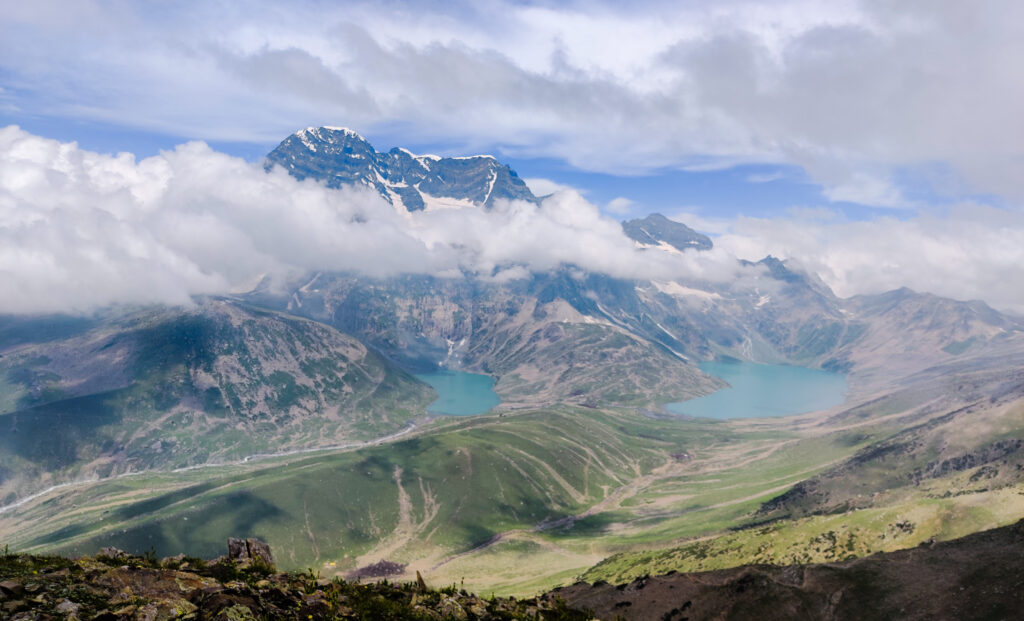
The trek starts from the small village of Shitkadi, which is located about 75 kilometers from Srinagar. From there, you will make your way to Nichnai Pass, which is the first high-altitude pass on the trek. The pass is located at an altitude of approximately 13,500 feet and offers stunning views of the surrounding peaks and valleys.
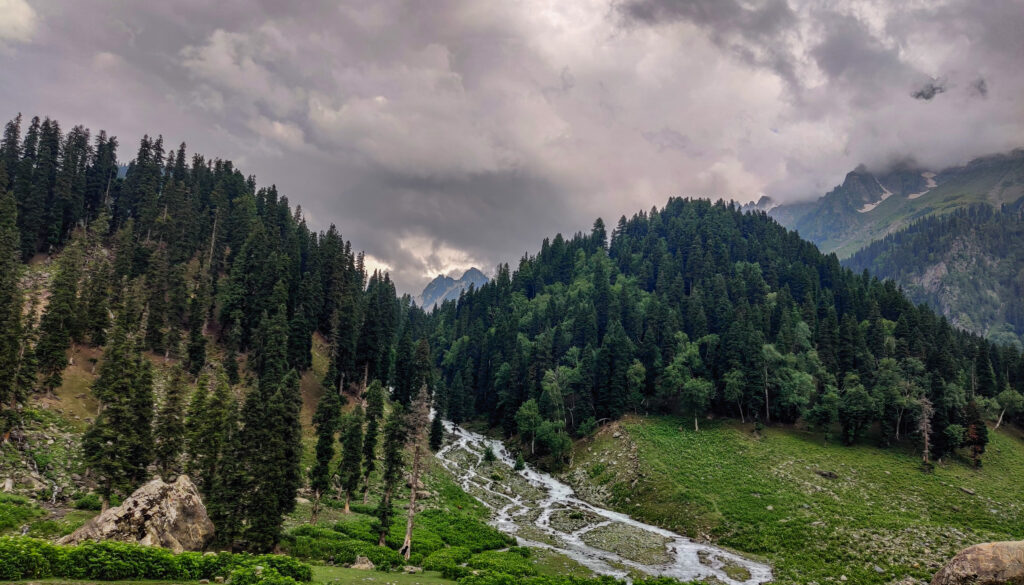
From Nichnai Pass, the trek takes you through a dense forest of pine and maple trees to the Vishansar Lake, which is the first of the seven lakes on the trek. The lake is surrounded by towering peaks and is a popular spot for camping.
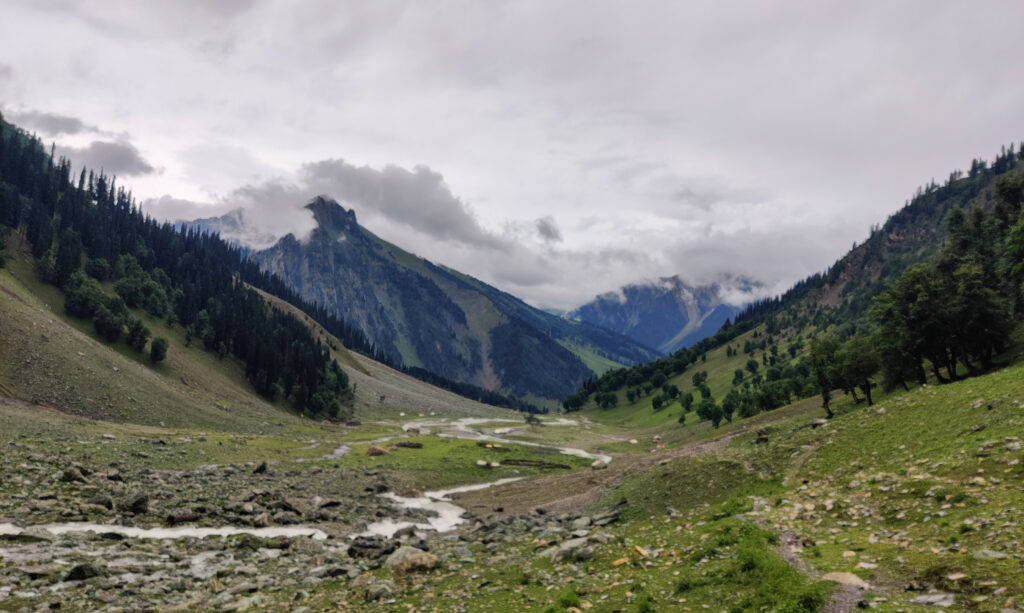
The trek then takes you through several other high-altitude passes, including the Gadsar Pass, which is located at an altitude of approximately 13,750 feet, and the Satsar Pass, which is located at an altitude of approximately 13,000 feet. Each pass offers stunning views of the surrounding landscapes and is a testament to the raw beauty of the Himalayas.
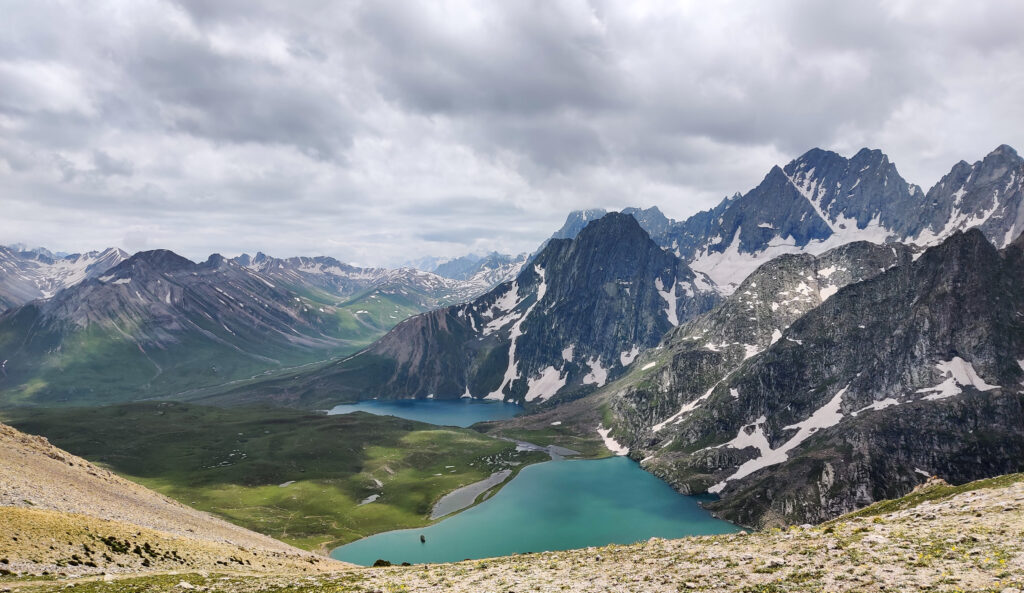
One of the highlights of the trek is Gangbal Lake, which is the largest and most beautiful of the seven lakes on the trek. The lake is surrounded by snow-capped peaks and is a popular spot for camping and fishing.
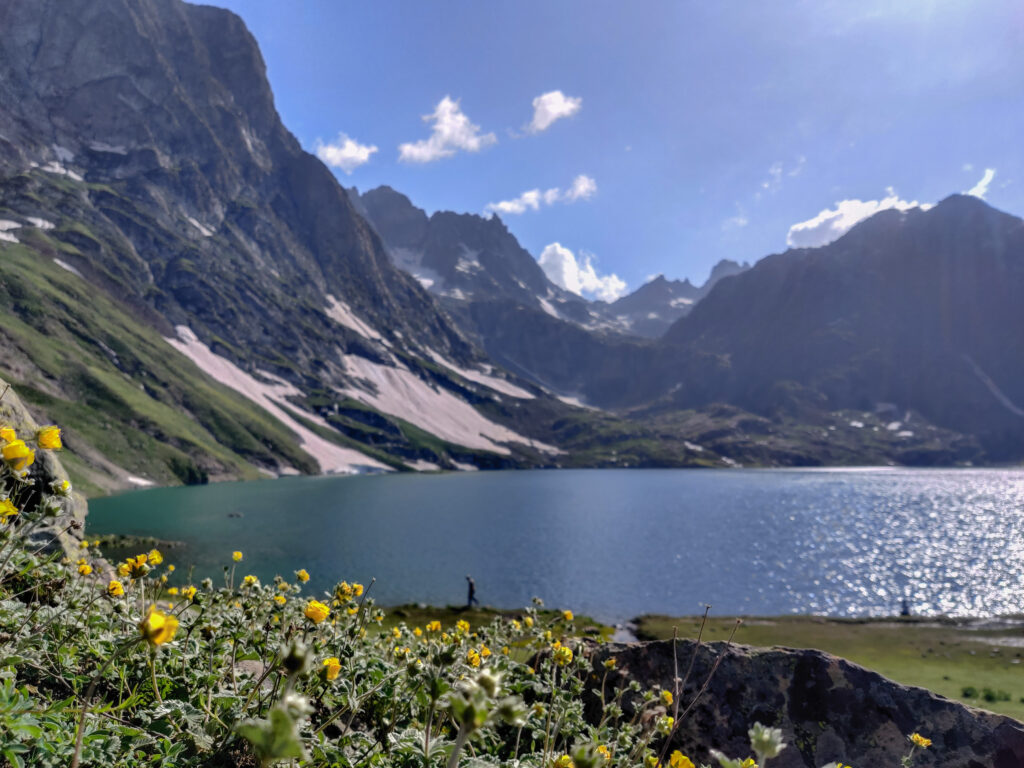
The Kashmir Great Lakes trek is challenging and requires a good level of fitness and endurance. The trek involves long days of hiking, with steep ascents and descents, and can be challenging for those who are not accustomed to high-altitude trekking.

To ensure a safe and comfortable journey, it is important to carry the right gear and equipment. Some of the essential items to carry on the trek include a good-quality backpack, trekking shoes, warm clothing, a sleeping bag, trekking poles, a headlamp or flashlight, water bottles, and a first-aid kit.
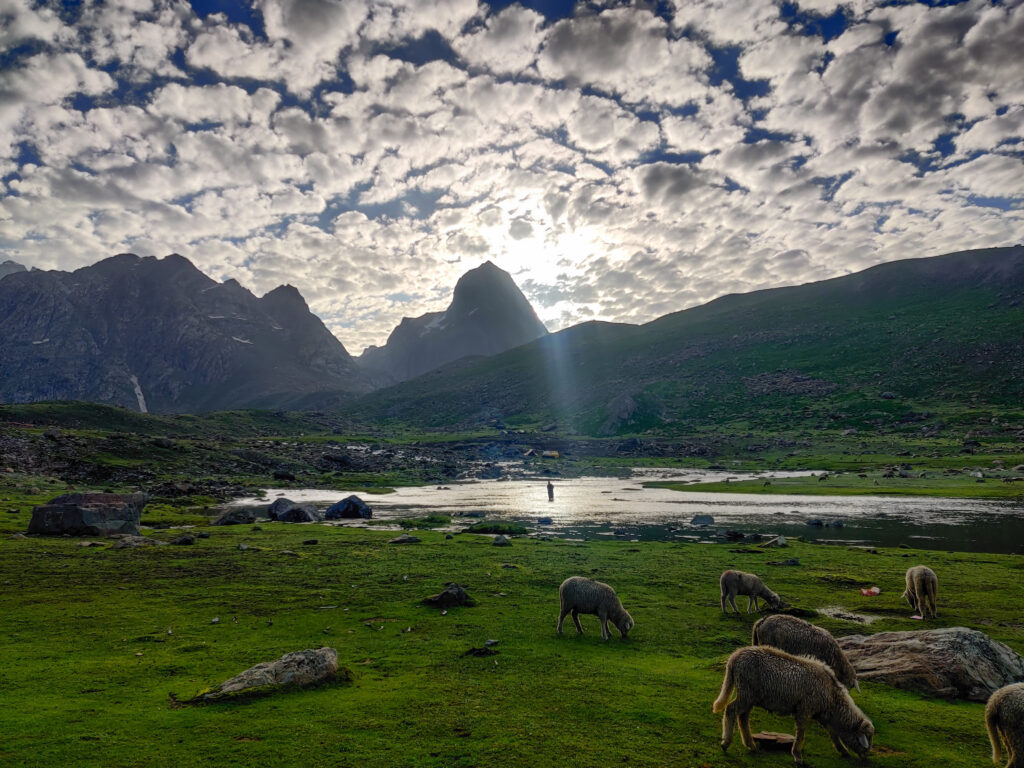
Day 1: Arrival in Srinagar, transfer to Sonamarg: On the first day, you will arrive in Srinagar, the capital city of Jammu and Kashmir. You will be greeted at the airport and driven to the picturesque town of Sonamarg, located about 80 kilometers away. The drive takes about 3-4 hours and offers stunning views of the countryside. Sonamarg is a popular tourist destination known for its beautiful meadows, snow-capped mountains, and glistening glaciers. You will check in at a hotel or guesthouse in Sonamarg and rest for the day to acclimatize to the high altitude.
Day 2: Trek from Sonamarg to Shitkadi: On the second day, you will begin your trek to the Great Lakes. After breakfast, you will start the trek from Sonamarg and make your way through lush green meadows and dense forests. The trail is about 7 kilometers long and takes around 4-5 hours to complete. You will cross a gushing stream and climb uphill to reach the campsite at Shitkadi. The campsite is located at an altitude of 3,500 meters and offers stunning views of the surrounding mountains.
Day 3: Trek from Shitkadi to Nichnai Pass: On the third day, you will trek from Shitkadi to Nichnai Pass, which is located at an altitude of 4,080 meters. The trek is about 11 kilometers long and takes around 6-7 hours to complete. You will trek through dense forests and meadows, enjoying the natural beauty around you. The ascent to Nichnai Pass is steep, but the views of the Gangabal Lake and the Harmukh Peak from the pass are worth the effort. You will spend the night at a campsite near the pass, which offers stunning views of the surrounding landscape.
Day 4: Trek from Nichnai Pass to Gangabal Lake: On the fourth day, you will trek from Nichnai Pass to Gangabal Lake, the largest lake in the Kashmir Great Lakes. The trek is about 10 kilometers long and takes around 6-7 hours to complete. The trail is mostly flat, but you will have to cross a rocky terrain to reach the lake. The lake is located at an altitude of 3,570 meters and is surrounded by snow-capped mountains. The campsite is located on the banks of the lake, and you can spend the evening exploring the area around the lake.
Day 5: Trek from Gangabal Lake to Nandkol Lake via Zach Pass: On the fifth day, you will trek from Gangabal Lake to Nandkol Lake via Zach Pass. The trek is about 12 kilometers long and takes around 7-8 hours to complete. You will climb uphill to reach Zach Pass, which is located at an altitude of 4,100 meters. The views of the Harmukh Peak from the past are breathtaking. You will then descend to Nandkol Lake, which is located at the foot of a glacier. The lake is surrounded by snow-capped mountains, and the campsite is located on the banks of the lake.
Day 6: Trek from Nandkol Lake to Satsar Lakes: On the sixth day, you will trek from Nandkol Lake to Satsar Lakes, which are a group of seven alpine lakes located at an altitude of 3,800 meters. The trek is about 10 kilometers long and takes around 6-7 hours to complete. The trail is steep and rocky, but the views of the lakes and the surrounding mountains are stunning. You will pass through dense forests and meadows before reaching the campsite at the Satsar Lakes. The campsite is located on the banks of one of the lakes and offers beautiful views of the surrounding landscape.
Day 7: Trek from Satsar Lakes to Gangbal Lake: On the seventh day, you will trek back to Gangbal Lake, which is located about 12 kilometers away. The trek takes around 7-8 hours to complete and includes a steep ascent to reach the Zach Pass. From the pass, you will descend to Gangbal Lake, where you will spend the night at the same campsite as before.
Day 8: Trek from Gangbal Lake to Naranag, drive to Srinagar: On the eighth and final day of the trek, you will trek from Gangbal Lake to Naranag, a small village located about 12 kilometers away. The trek takes around 5-6 hours to complete and includes a steep descent from the lake. Once you reach Naranag, you will be picked up by a car and driven back to Srinagar. You will reach Srinagar by evening and spend the night at a hotel or guesthouse.
Things to carry:
If you are planning to embark on the Kashmir Great Lakes trek, it is essential to pack the right gear and equipment to ensure a safe and comfortable journey. Here are some of the things that you should carry with you on the trek:
- Backpack: A good quality backpack is essential to carry all your gear and equipment. A backpack with a capacity of at least 50-60 liters is recommended.
- Trekking shoes: Good quality trekking shoes with ankle support and a sturdy sole are essential to tackle the rocky terrain. It is important to wear comfortable and well-fitting shoes to avoid blisters and injuries.
- Warm clothing: The temperature can drop significantly at higher altitudes, so it is important to carry warm clothing such as thermal innerwear, fleece jackets, and a down jacket. A waterproof and windproof jacket and pants are also essential to protect you from rain and snow.
- Sleeping bag: A good quality sleeping bag that can withstand sub-zero temperatures is essential for camping at higher altitudes.
- Trekking poles: Trekking poles can provide additional support and stability on uneven terrain and reduce the strain on your knees.
- Headlamp or flashlight: A headlamp or flashlight is essential for navigating in the dark, especially during early morning treks or while camping.
- Water bottles and hydration system: It is important to stay hydrated during the trek, so carry at least 2 litres of water with you. A hydration system such as a camelback can be useful as it allows you to drink water on the go.
- First-aid kit: A basic first-aid kit with essential items such as bandages, antiseptic ointment, painkillers, and blister pads is essential for any trek.
- Sun protection: The sun’s rays can be intense at higher altitudes, so carry sunscreen, sunglasses, and a hat to protect yourself from the sun.
- Personal toiletries: Carry basic toiletries such as a toothbrush, toothpaste, hand sanitiser, and wet wipes to maintain hygiene during the trek.
It is important to pack light and carry only the essential items to avoid unnecessary weight on your back. Additionally, check the weather forecast and pack accordingly to ensure that you are prepared for any weather conditions.
Permits required:
The trek is located in the restricted area of the Naranag Forest and requires permission from the Forest Department. Here’s a breakdown of the permits required for the trek:
- Inner line permit: Indian nationals require an Inner Line Permit (ILP) to visit the restricted areas of Kashmir, including the Naranag Forest. The ILP can be obtained online or from the designated authorities in Srinagar.
- Protected area permit: Foreign nationals require a Protected Area Permit (PAP) to visit the restricted areas of Kashmir, including the Naranag Forest. The PAP can be obtained from the Indian embassy or consulate in your country or the designated authorities in Srinagar.
- Trekking permit: A trekking permit is required to undertake the Kashmir Great Lakes trek. The permit can be obtained from the Forest Department in Srinagar. You will need to provide a copy of your ILP/PAP, passport details, and a medical fitness certificate to obtain the trekking permit.
It is important to obtain the necessary permits before starting the trek as failure to do so can result in fines or deportation. Additionally, ensure that you carry the permits with you at all times during the trek and present them to the authorities when requested.
The budget required for a trek to Kashmir’s Great Lakes can vary depending on several factors such as the duration of the trek, the number of people in the group, the level of comfort and luxury required, and the mode of transport chosen to reach the starting point of the trek.
Generally, the cost of the trek includes expenses such as transportation, accommodation, food, guide fees, permits, and equipment rental.
On average, a 7-8 day trek to Kashmir’s Great Lakes can cost anywhere between $400 to $1000 per person, depending on the factors mentioned above. This cost may also vary depending on whether you choose to go through a trekking company or plan the trek independently. It’s important to note that this is just a rough estimate, and the actual cost can be higher or lower depending on various factors. It’s always a good idea to research and plan your budget and make sure to factor in any unforeseen expenses as well.
Conclusion:
In conclusion, the Kashmir Great Lakes trek is a breathtaking and unforgettable experience that offers stunning views of the Himalayas, alpine lakes, and lush meadows. It’s a challenging trek that requires a moderate level of fitness and endurance, but the reward of witnessing the natural beauty of the region is well worth the effort.
While the trek can be done independently, it’s recommended to go through a reputable trekking company that provides experienced guides, necessary permits, and camping equipment. The budget required for the trek can vary depending on several factors, but on average, it can cost anywhere between $400 to $1000 per person. It’s important to plan and prepare adequately for the trek, including physical fitness, gear, and weather conditions. Respect for the environment, local culture, and traditions is essential, and trekkers should leave no trace and practice responsible tourism.
Overall, the Kashmir Great Lakes trek is a unique and unforgettable experience that offers a glimpse into the natural beauty and cultural richness of the Kashmir region. It’s a must-do for adventure enthusiasts and nature lovers who seek a challenging yet rewarding trekking experience.
Uttarakhand Treks | treks in Uttarakhand | Treks from Dehradun | trekking in Dehradun | Trekking companies in Dehradun | Har Ki Dun trek | Bali Pass trek | Phulara Ridge Trek | Kedarkantha Trek | Dayara Bugyal trek | Gaumukh Tapovan trek | Kashmir Great Lakes trek | Valley of Flowers trek | Nag Tibba Trek
- Pingback: Kashmir Great Lakes Trek in the Himalayas a unique and memorable experience – Geeksfortesting
Curious if foreigners are allowed to do this track without a guide? Are you allowed to ride it on a bicycle?
Leave a comment Cancel reply
Your email address will not be published. Required fields are marked *
Save my name, email, and website in this browser for the next time I comment.
Related Blogs
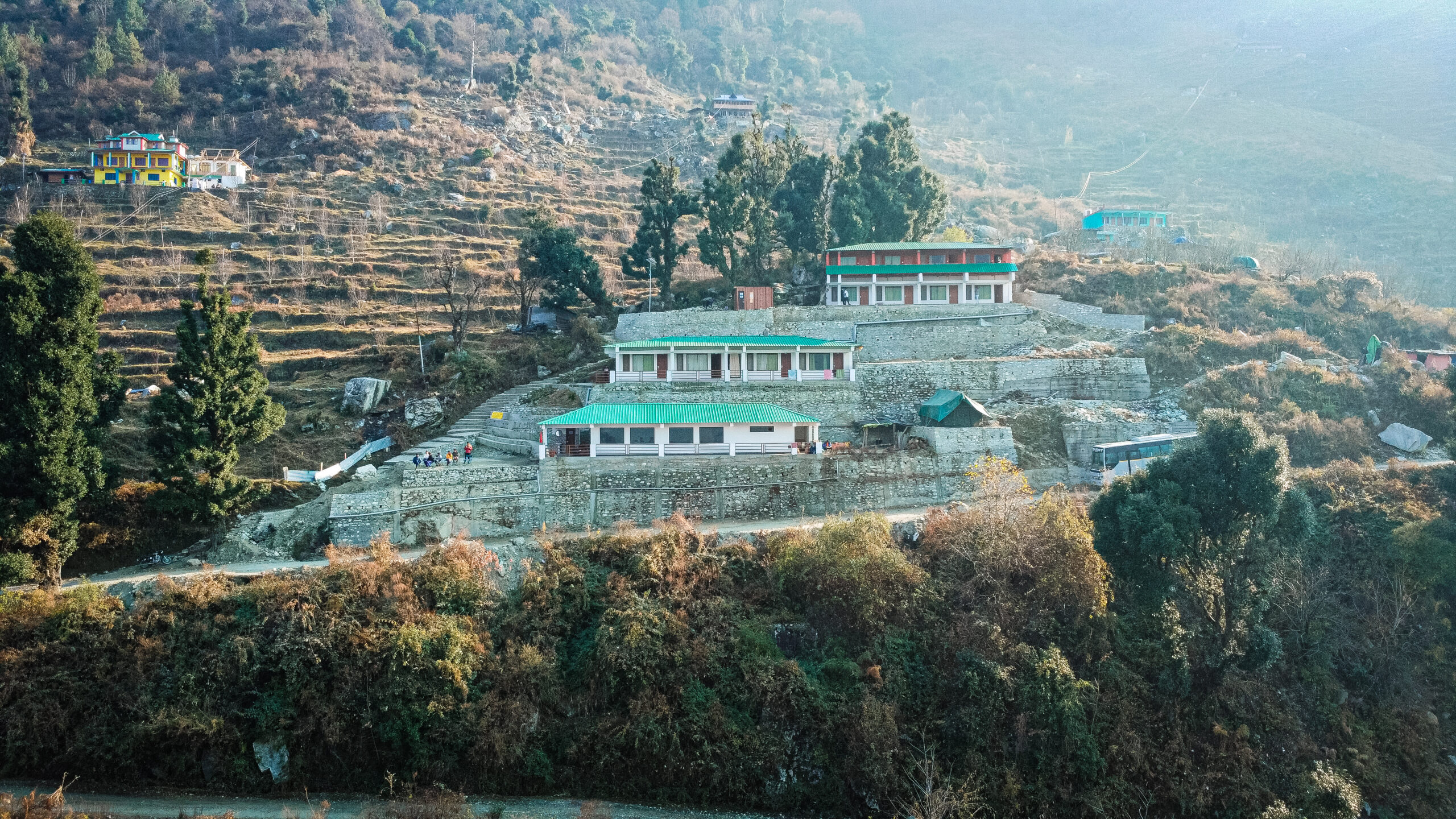
March 4, 2024
Work from Mountains: My Unforgettable Experience with Himalaya Shelter
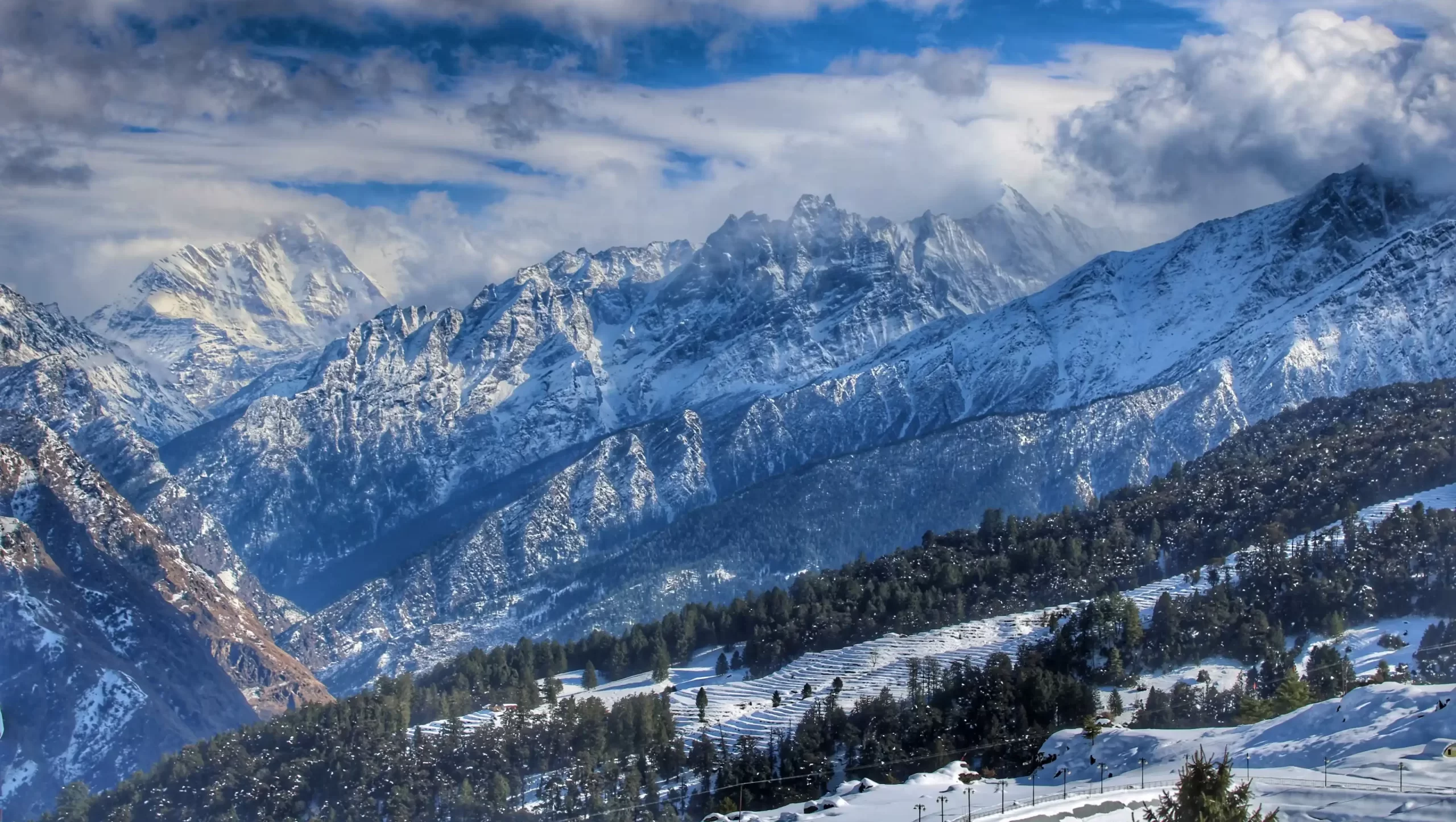
January 11, 2024
Auli Uttarakhand- Your Ultimate Adventure Destination to Visit
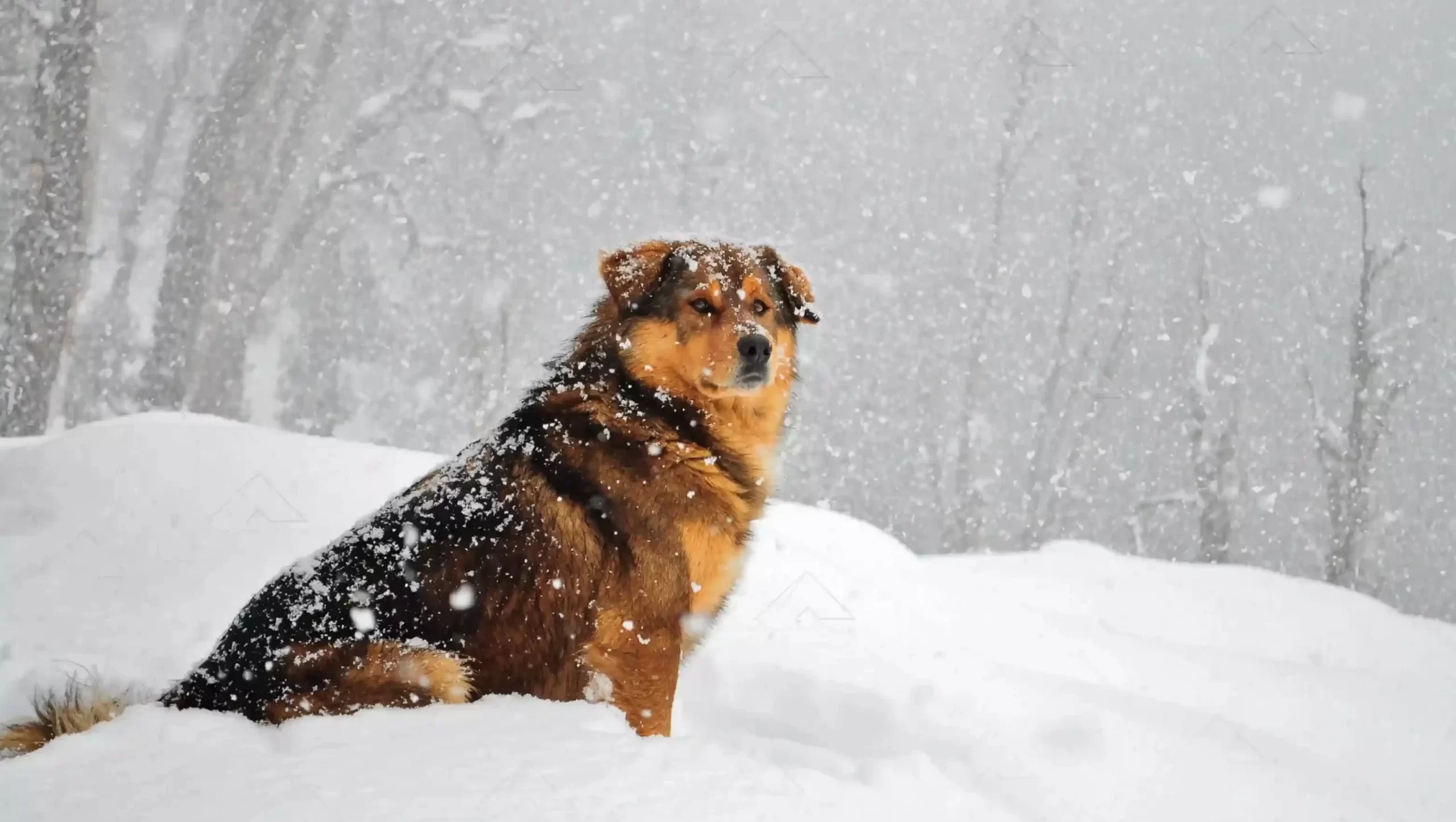
December 12, 2023
A Comprehensive Guide to Reach the Kedarkantha Peak Trek
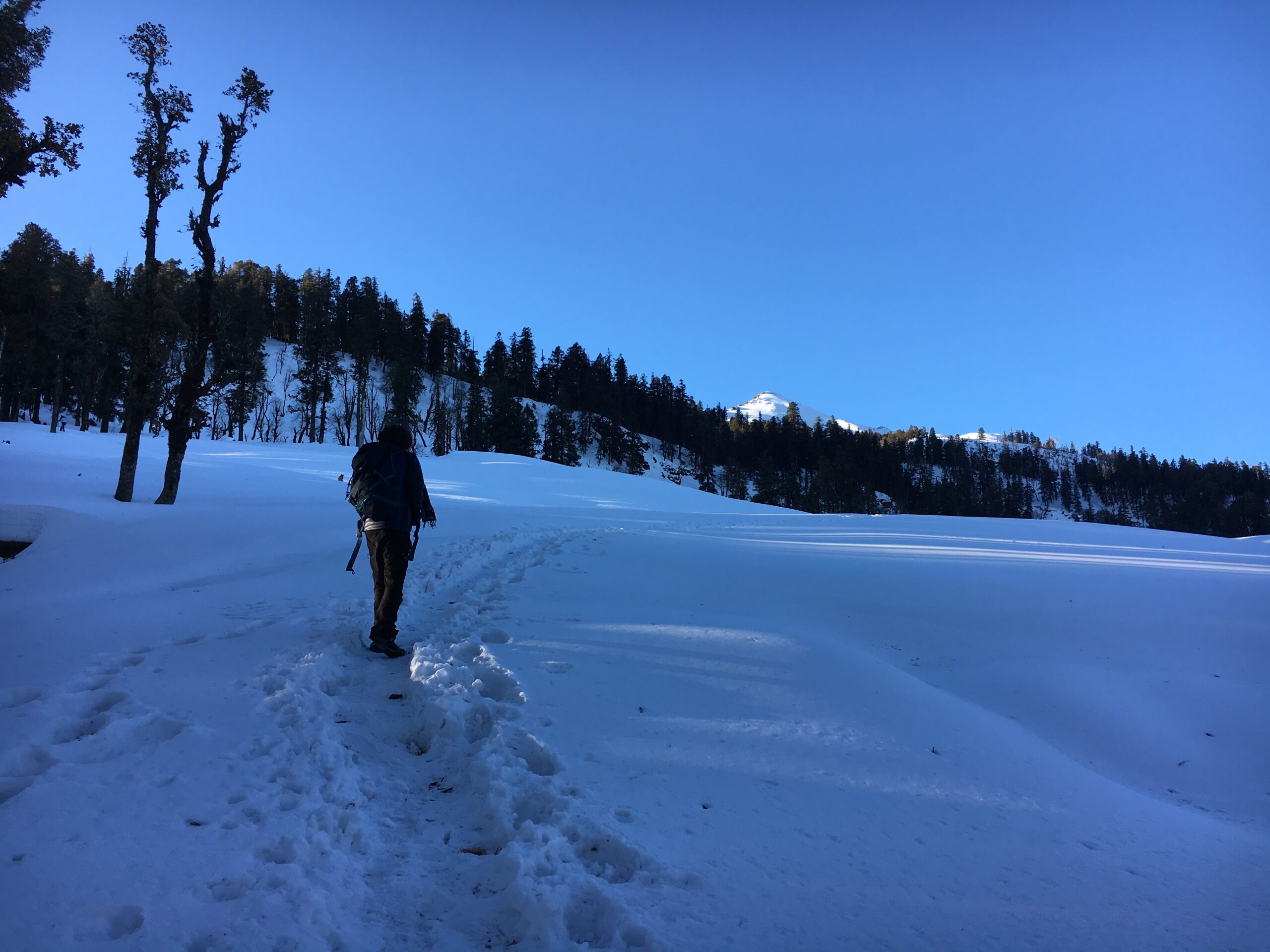
December 11, 2023
Kedarkantha Trek: Peaks and Panoramas in a Himalayan Odyssey
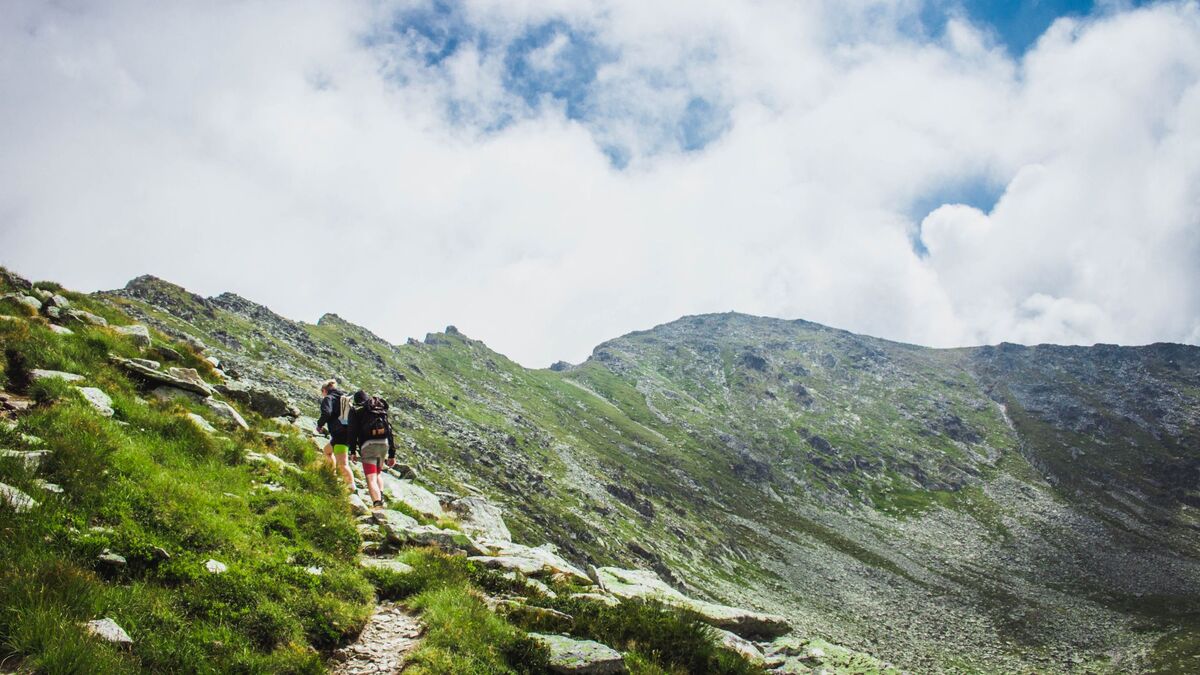
September 28, 2023
8 Essential Safety Tips for Trekking in the Himalayan Mountains for a Safe Journey
Trekking in the Himalayas offers a unique experience, combining imposing peaks, serene valleys, and diverse cultures. Preparation and safety are crucial.

September 25, 2023
14 Best Destinations for Spiritual Trekking in the Indian Himalayas
Explore the divine heights of the Indian Himalayas with our guide to the 14 Best Destinations for Spiritual Trekking.
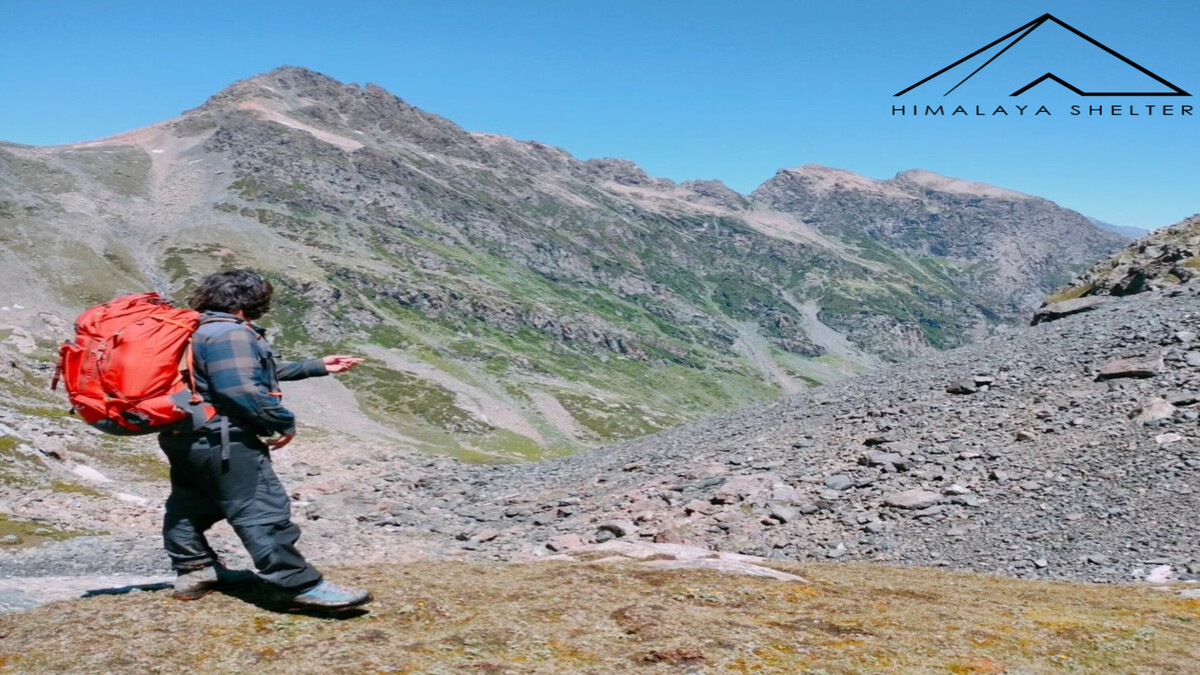
September 22, 2023
Solo or Group Trekking in the Himalayas: Which is Best for You
Explore the pros and cons of solo and group trekking in the majestic Himalayas to find out which suits your trekking style best.
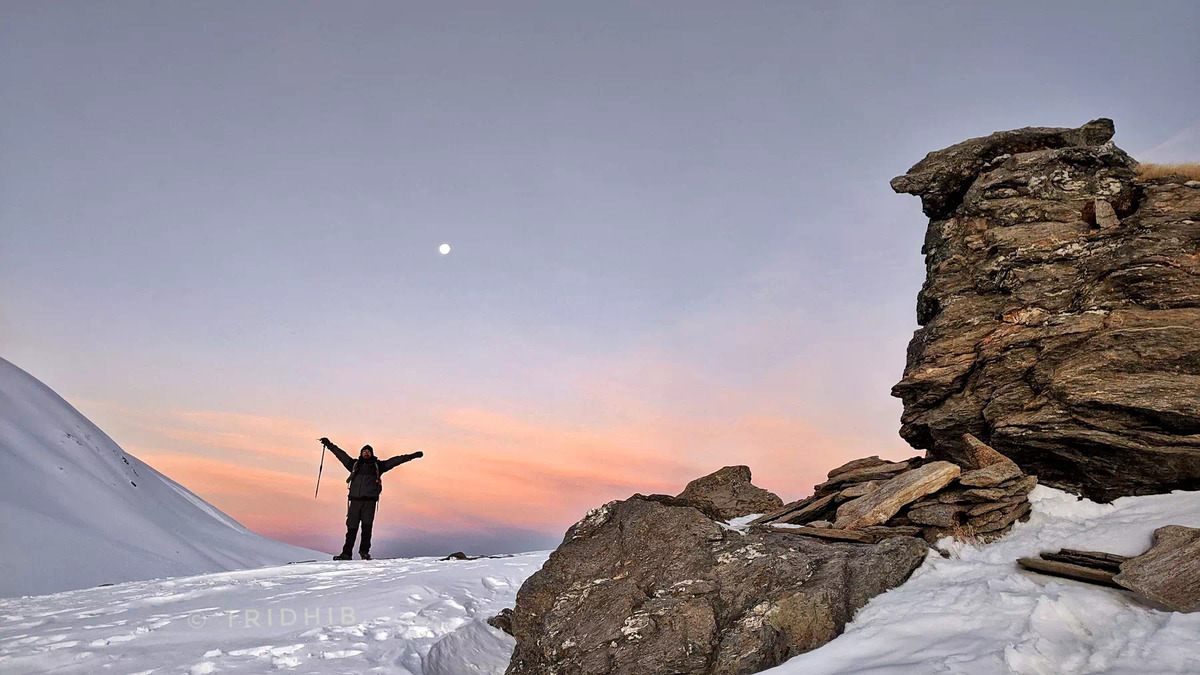
13 Best Himalayan Treks To Do in October, November, and December in India
Discover stunning treks to do in Himalaya in October, November, and December in India.

September 18, 2023
Himalayan Trekking Permits: A Complete Guide for Adventurers
Explore our comprehensive guide to Himalayan Trekking Permits, designed for adventurers like you.
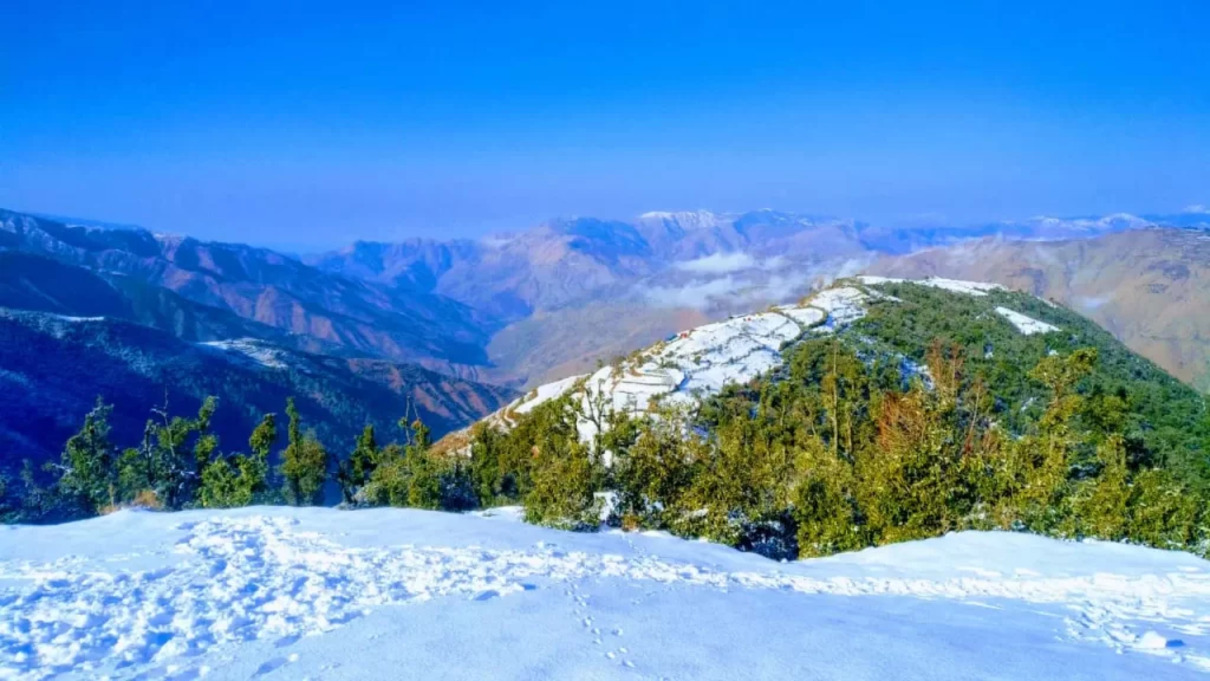
Discover the Top 15 Trekking Places in Kashmir in 2023 From Lakes to Peaks
Discover the top trekking places in Kashmir featuring stunning lakes and towering peaks.
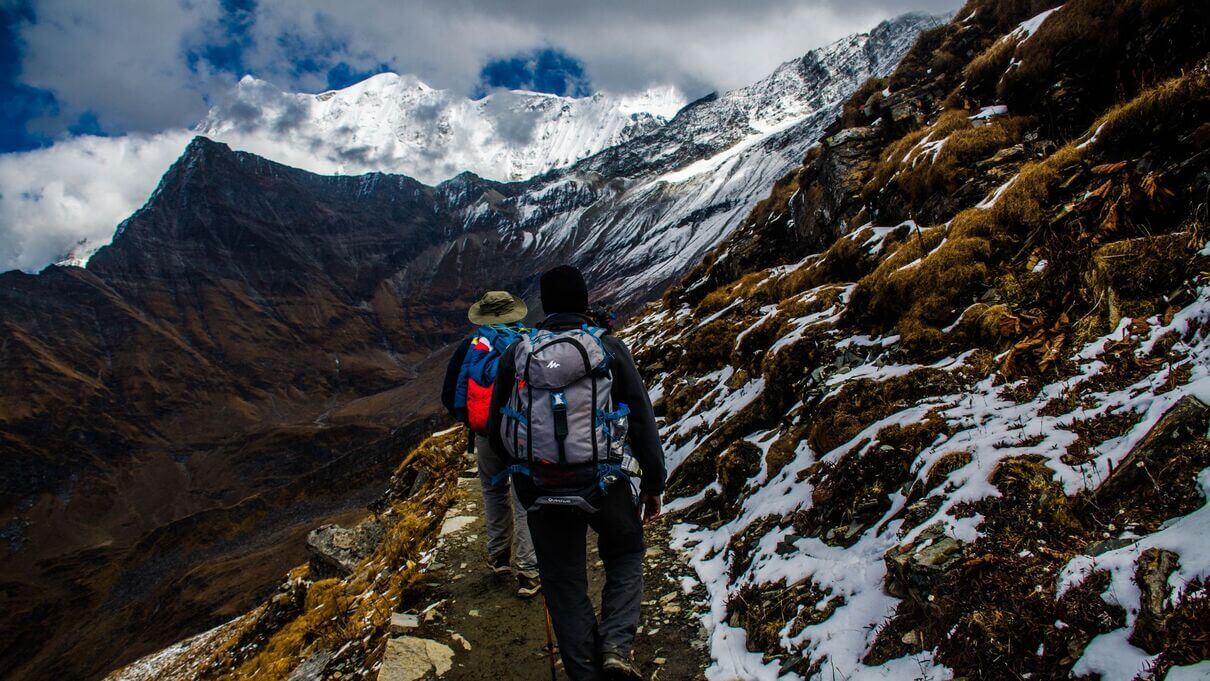
August 23, 2023
Discover the Must-Have Hiking Essentials for Beginners in the Himalayas
Prepare well for beginner Himalayan treks: essentials, best routes, high altitudes, fees, and cultural immersion for a secure adventure.
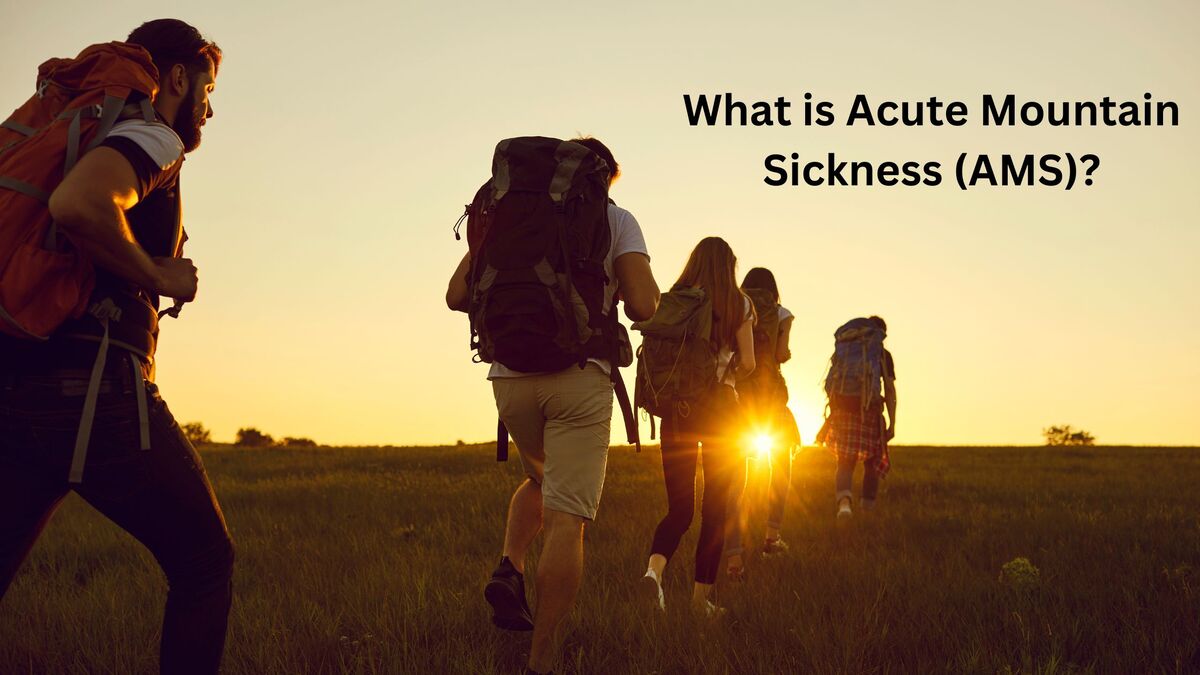
August 18, 2023
Understanding Acute Mountain Sickness: Causes, Symptoms, and Treatments
Discover the causes, symptoms, prevention strategies, and effective treatments for Acute Mountain Sickness (AMS).

August 16, 2023
10 Stunning Treks Near Manali, Himachal Pradesh in 2023
Explore Himachal's stunning landscapes with thrilling Manali treks. Experience extraordinary walks amidst magnificent mountains and serene roads.

August 14, 2023
9 Best Short Treks in Uttarakhand for 1, 2, or 3 Days for a Weekend Escape
Explore Uttarakhand's stunning weekend getaways with short treks, immersing yourself in nature's beauty and adventure on these breathtaking trails.

August 9, 2023
10 Toughest and Most Difficult Treks in India in 2023 to Push Your Boundaries
Discover the toughest and most difficult treks in India and test your endurance in the breathtaking landscapes of the Himalayas.
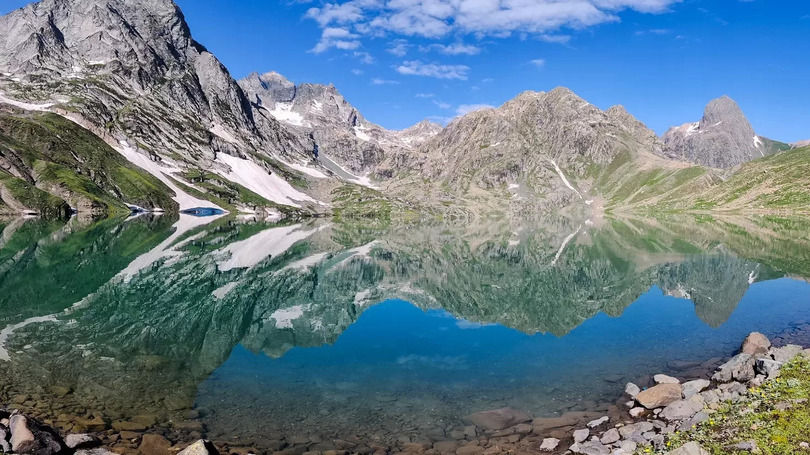
July 25, 2023
11 Best Places to Visit in Sonamarg, Things to Do & Attractions
Sonamarg, in India, captivates with its stunning landscapes. Nestled in Kashmir, it's a serene haven for nature and adventure enthusiasts.
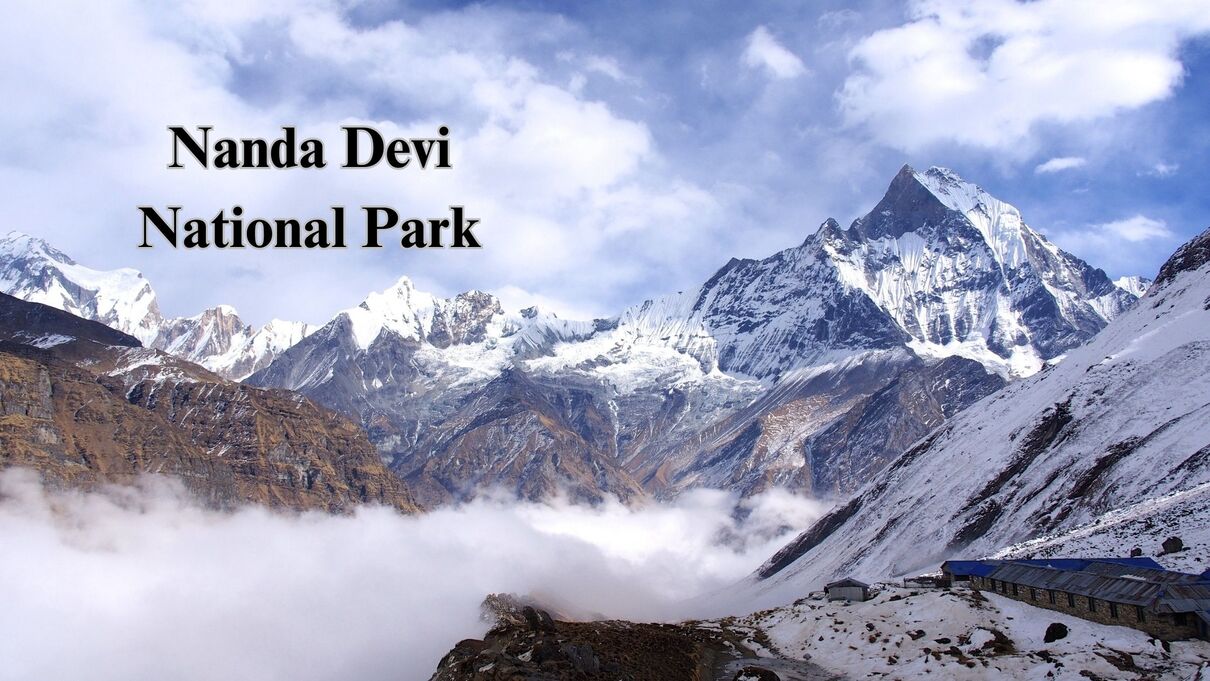
July 24, 2023
Nanda Devi National Park, Uttarakhand - How To Reach, Best Time to Visit
Nanda Devi National Park, in Uttarakhand, India, is a UNESCO World Heritage Site known for its stunning Himalayan landscapes.
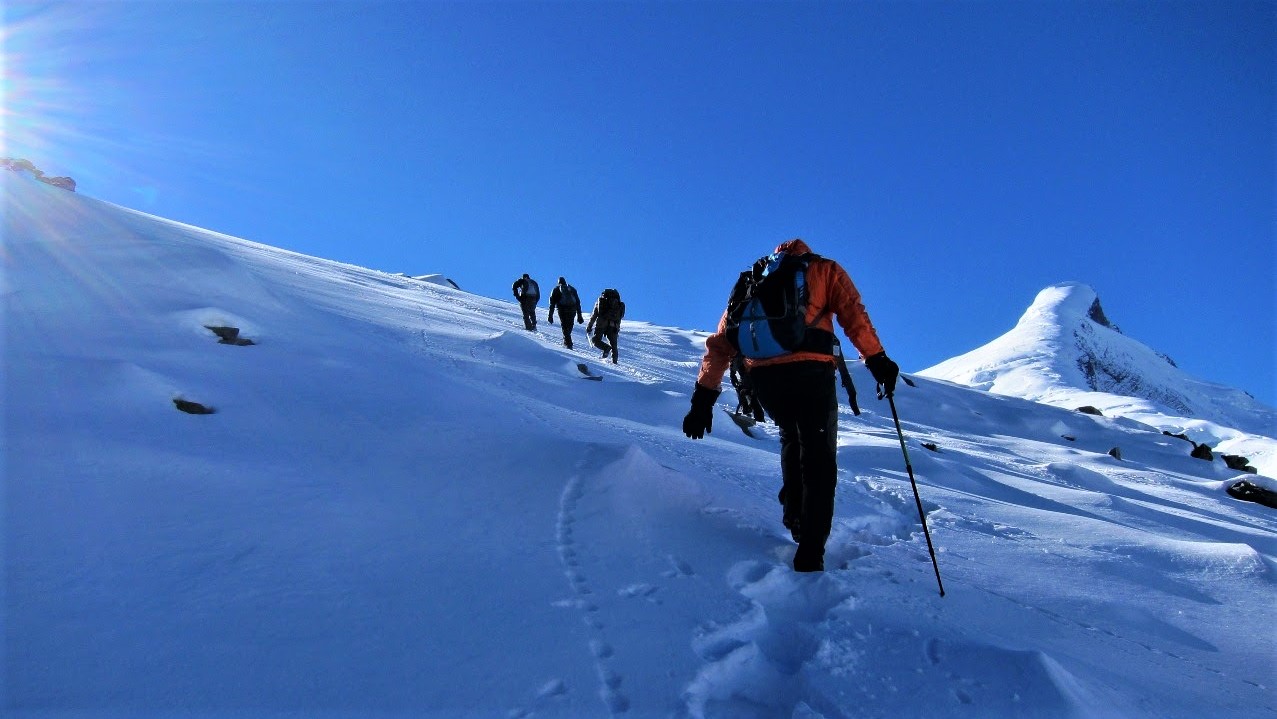
July 19, 2023
15 Best Himalayan Treks for Beginners in India in 2023
Discover beginner-friendly treks in India's Himalayas. Experience breathtaking mountain beauty, push limits, and connect with nature in stunning landscapes.
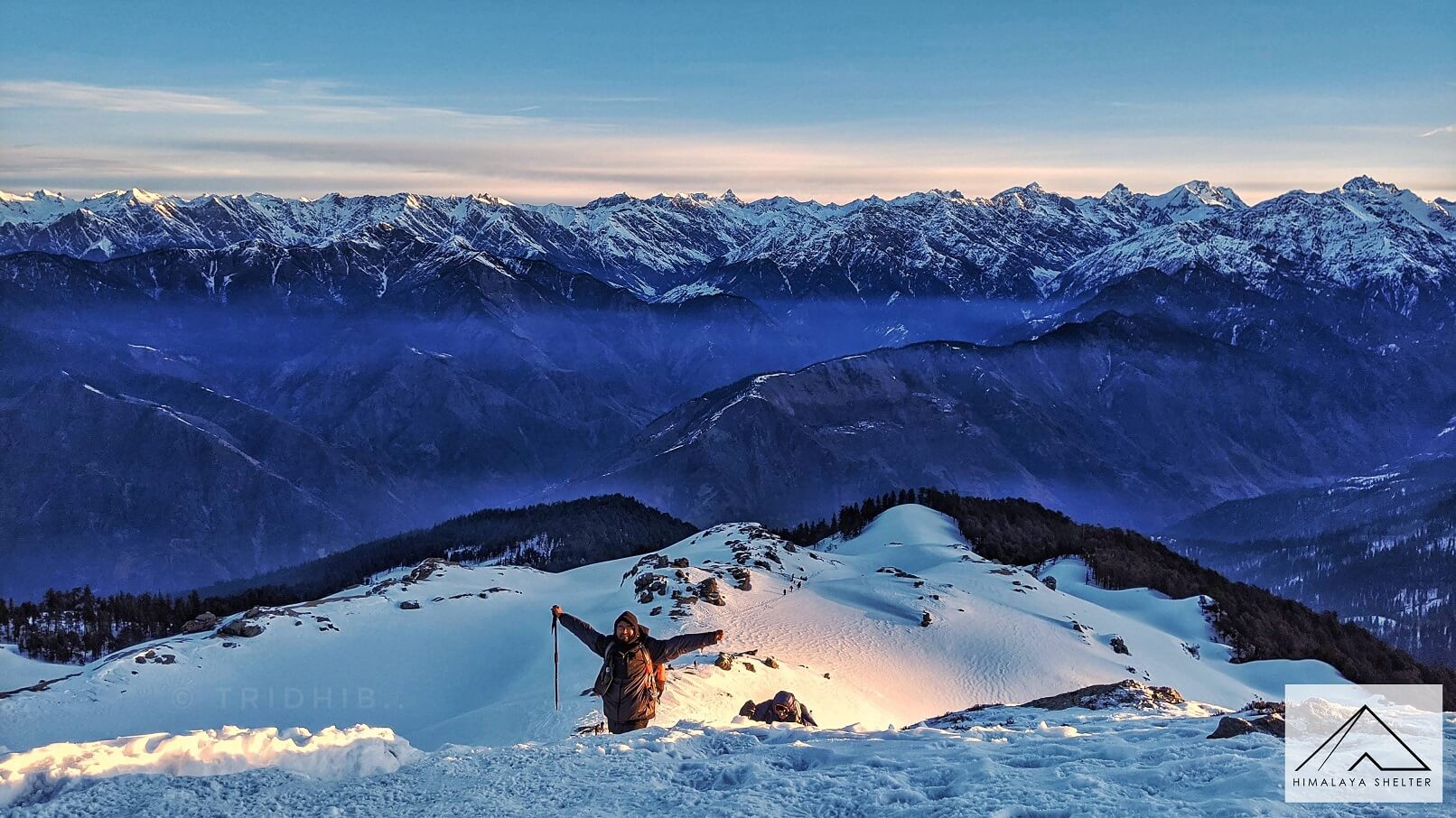
July 18, 2023
Top 15 Highest Mountain Peaks of Uttarakhand in 2023
The state of Uttarakhand boasts of two of the top three mountains in India. Read the blog to find out about the famous peaks of Uttarakhand...
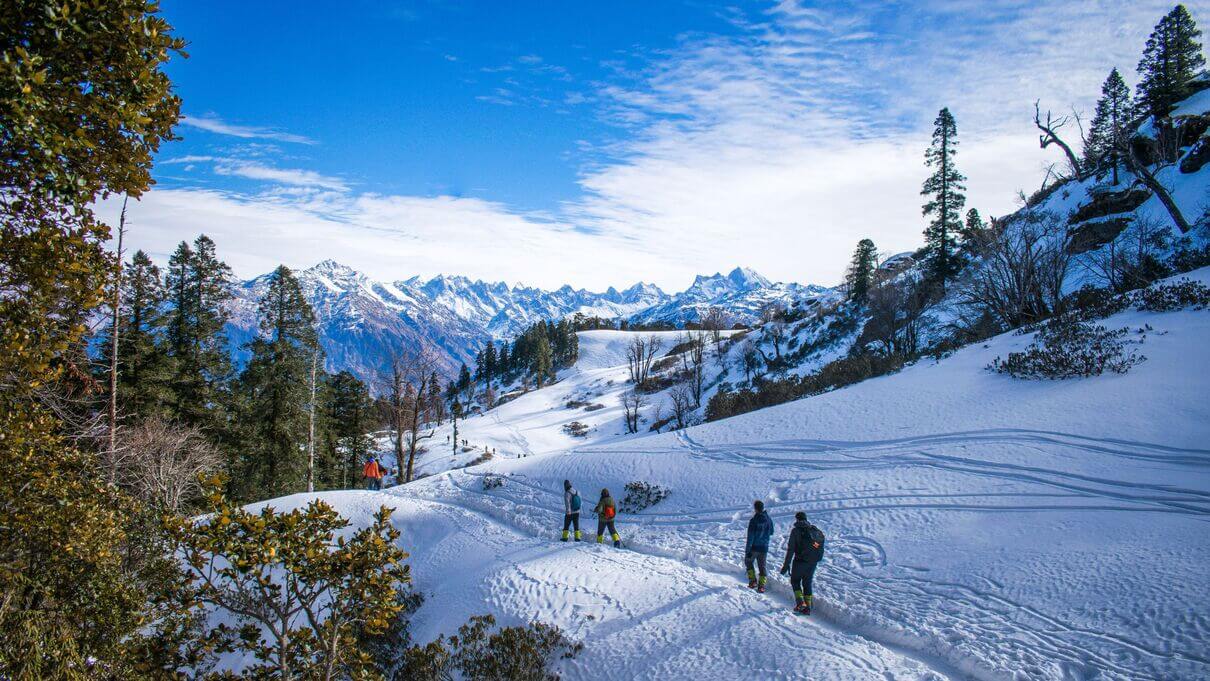
July 13, 2023
Trekking in Rishikesh: 10 Best Treks near Rishikesh
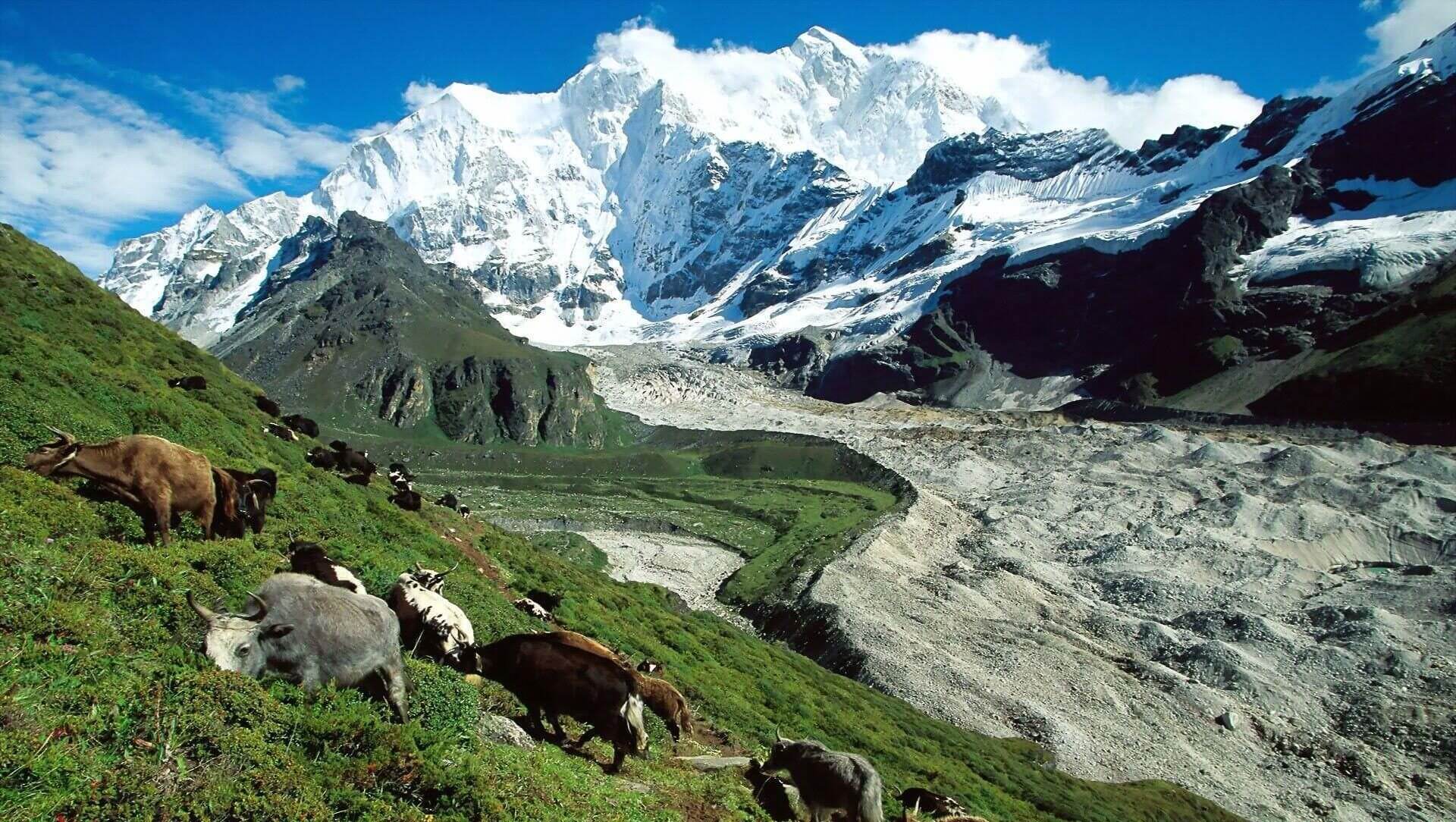
July 11, 2023
13 Best Monsoon Treks in India to Do in June to September 2023
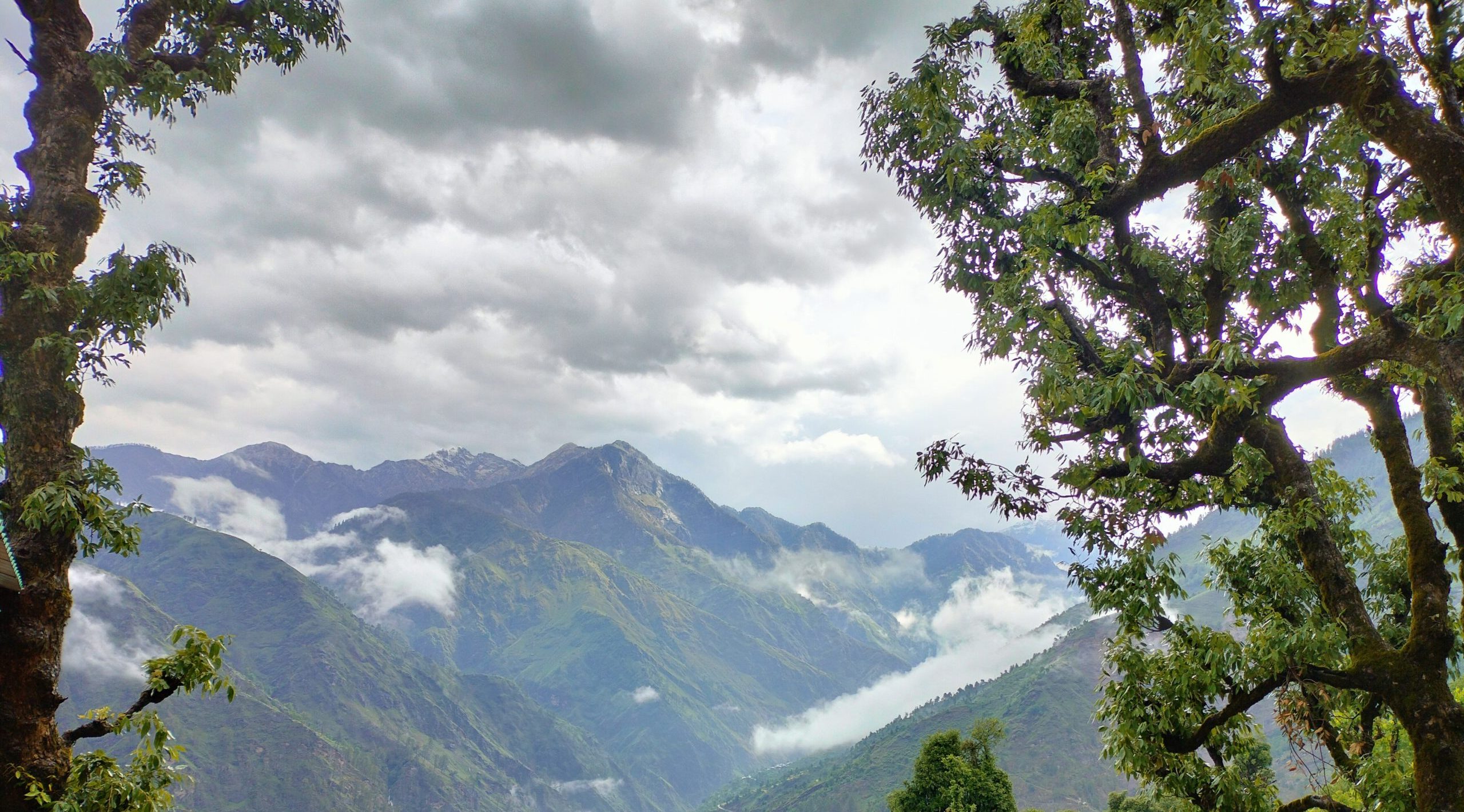
June 19, 2023
Sankri beyond the base of Har ki Dun - Trekker's experience
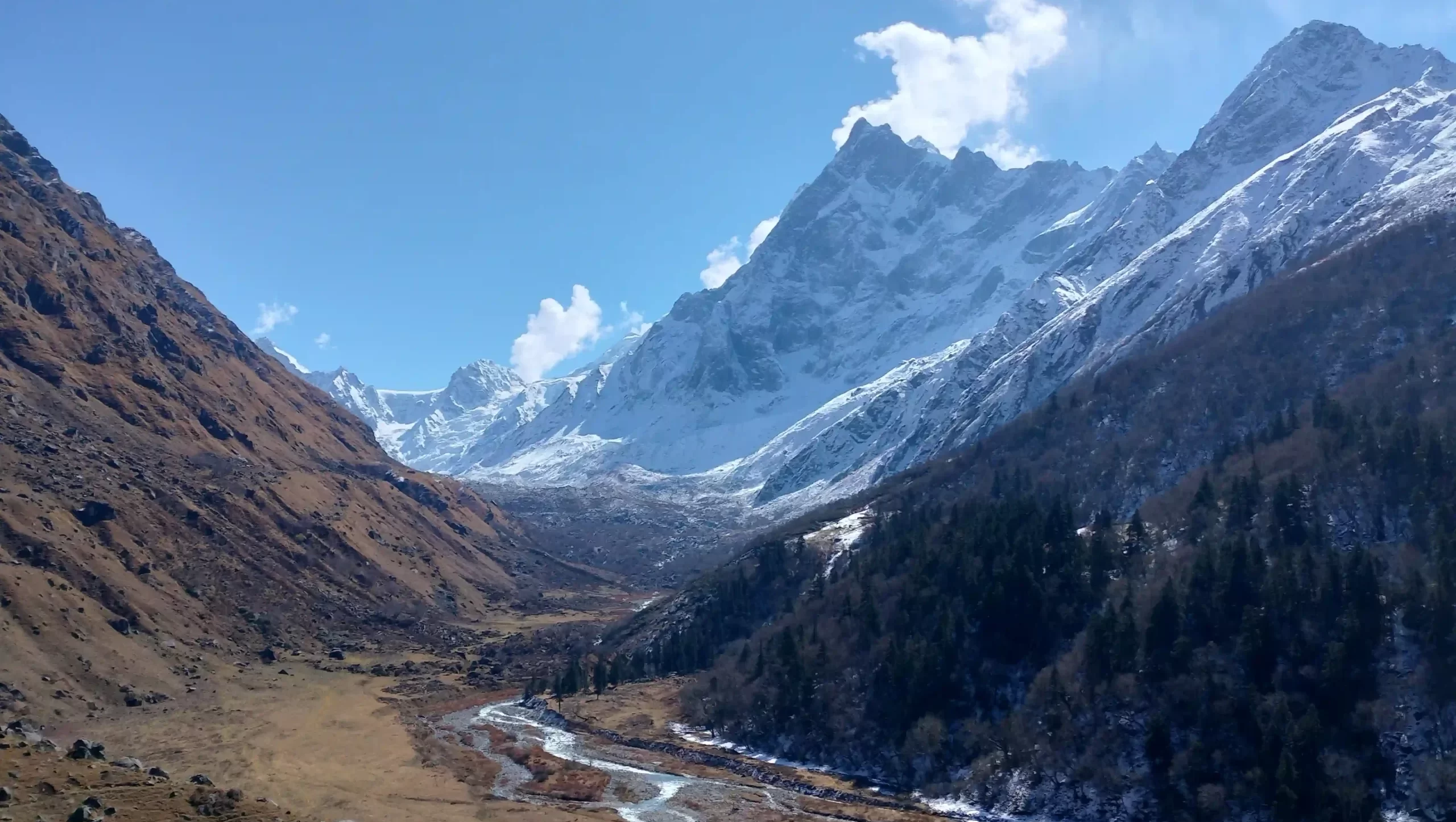
January 9, 2024
Your Guide to Altitude, Elevation, and Distance of Har ki Doon Trek
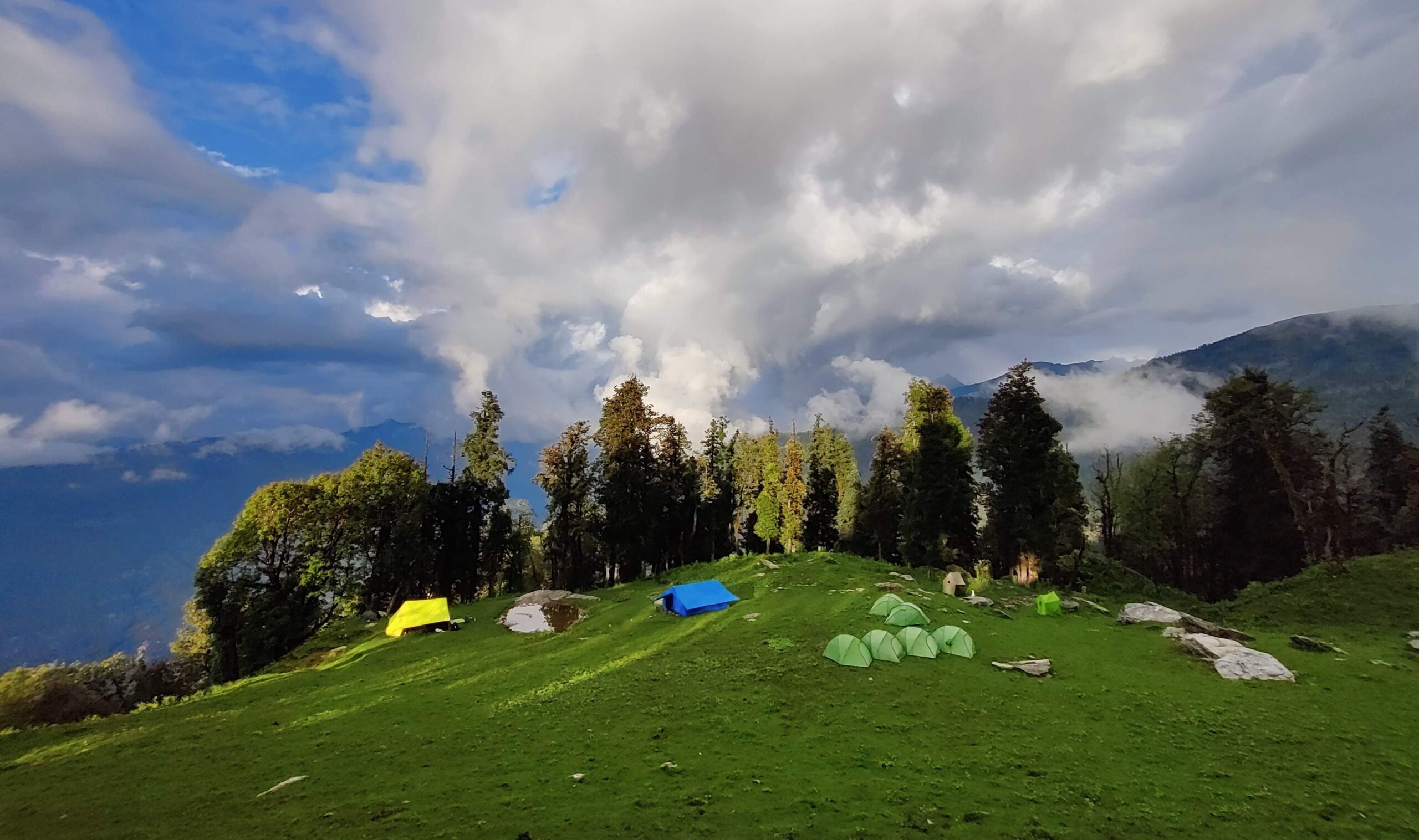
December 1, 2022
Your All-Year Adventure In Uttarakhand
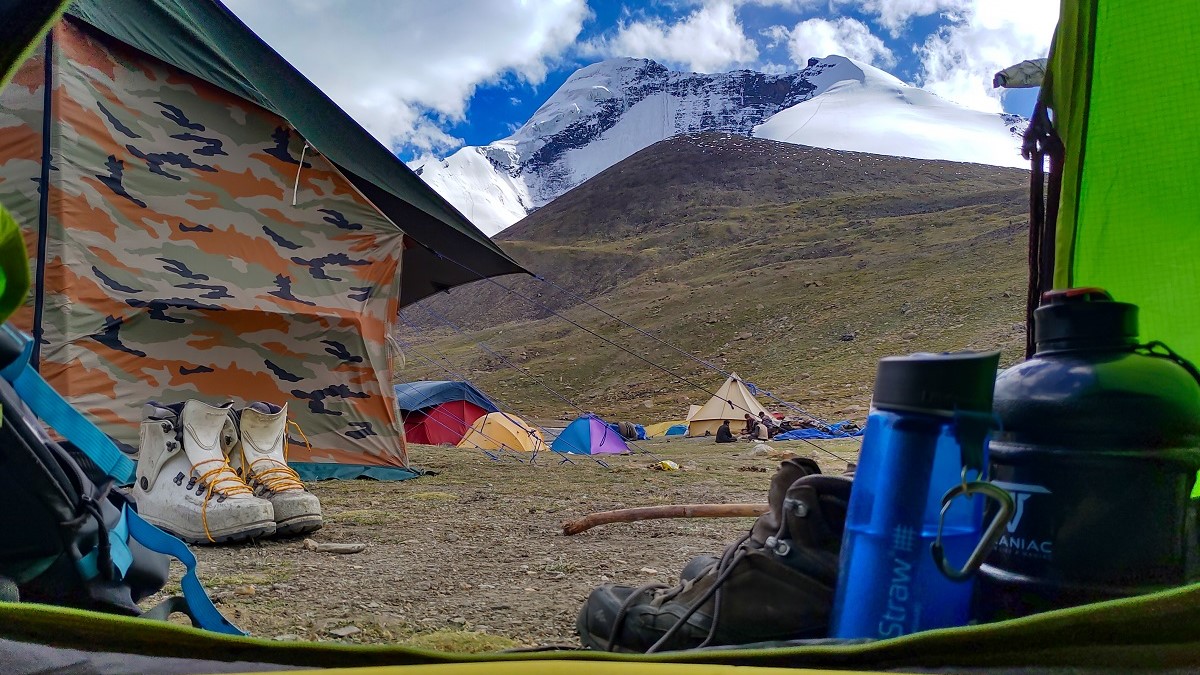
September 10, 2021
Why Is Hydration Important during Himalayan Treks?
Garhwal Himalaya offers thrilling treks. Hydration is crucial, and it's essential to drink water regularly, even in colder temperatures.
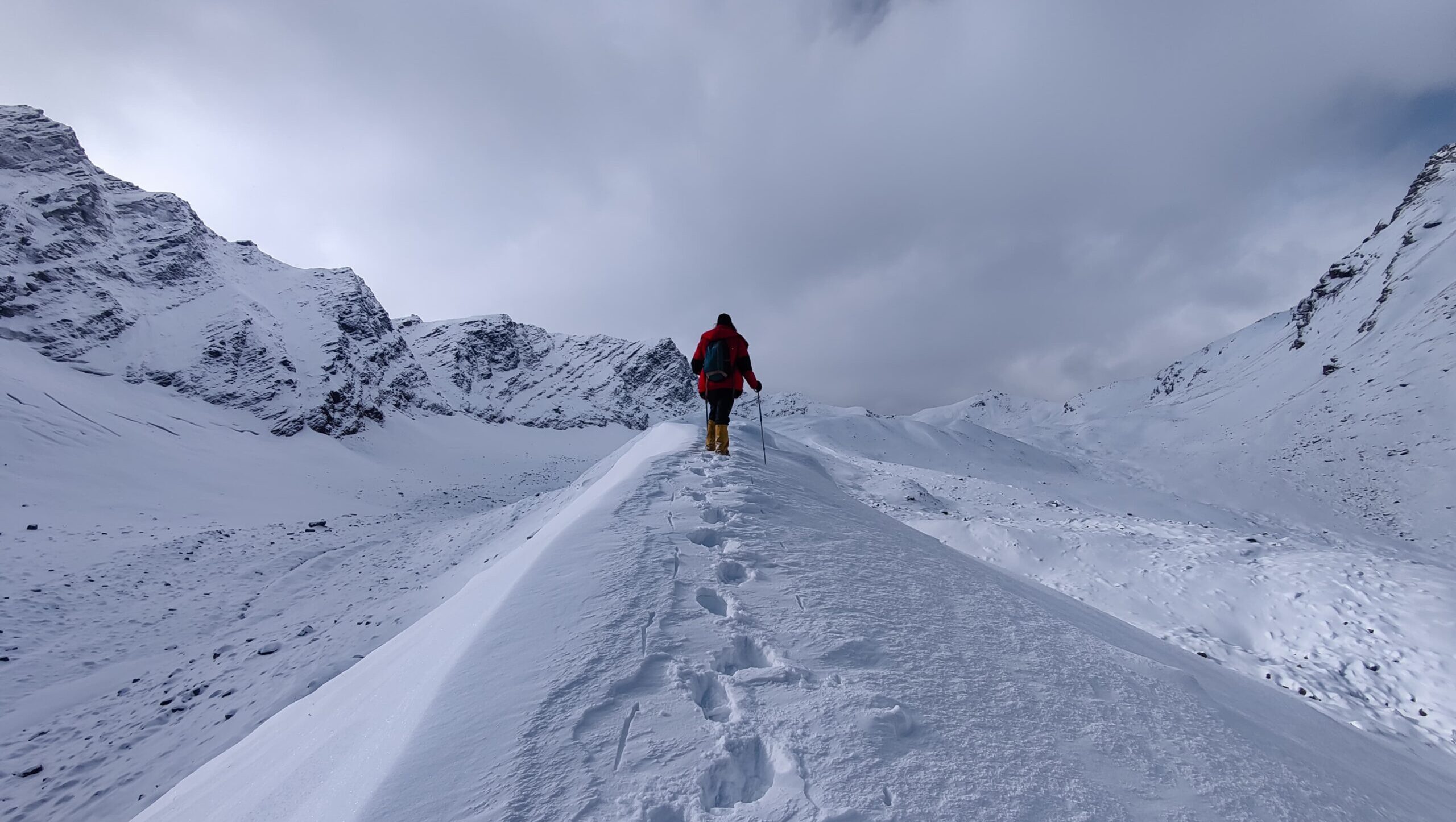
February 1, 2024
Why Bali Pass Should Be Your Next Trek?
Why Bali Pass Trek should be your very next trek? The complete guide. This artiucle has answer of almost all your questions.
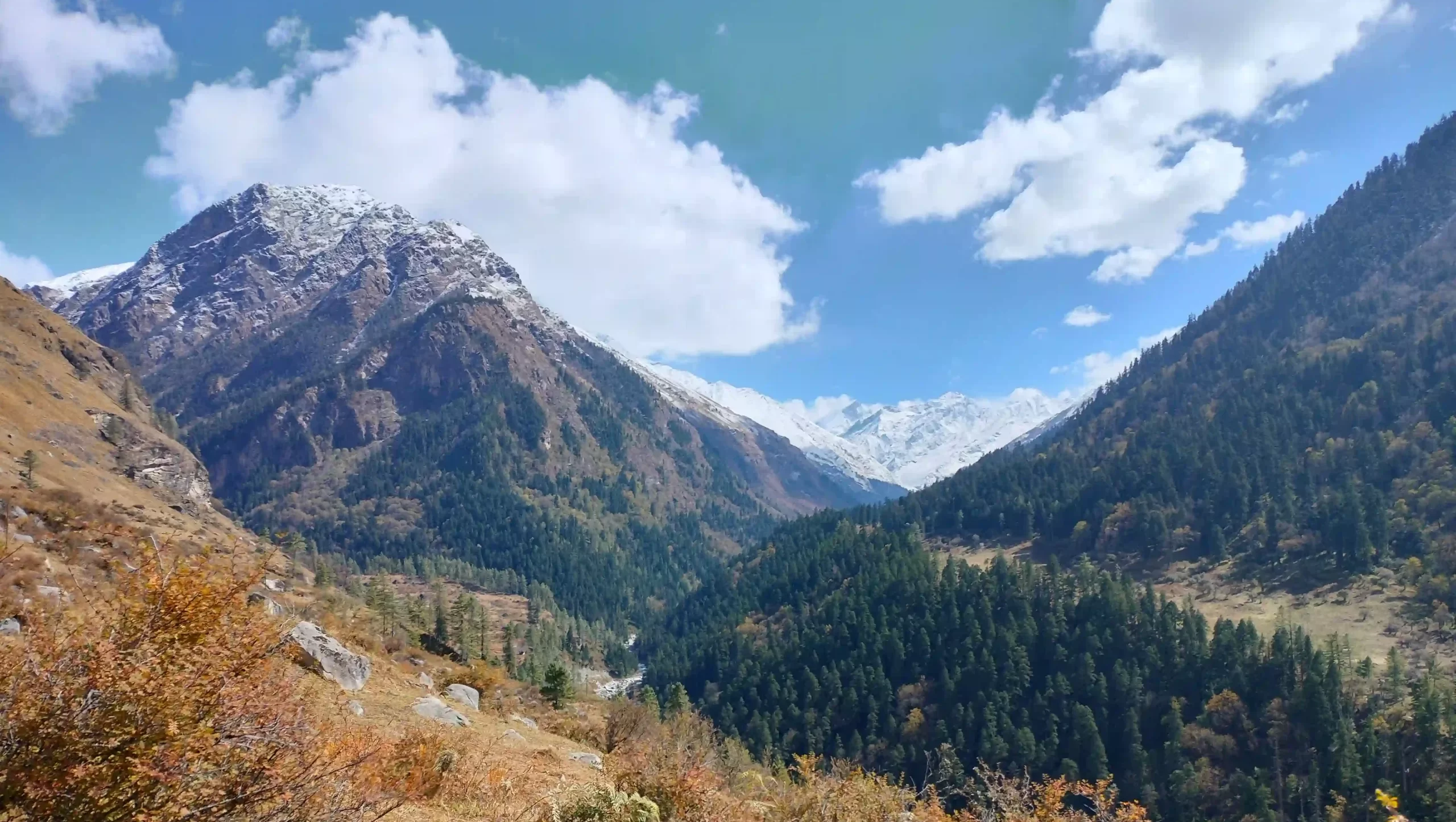
January 12, 2024
What's the difference between Har Ki Dun and Roopkund Trek?
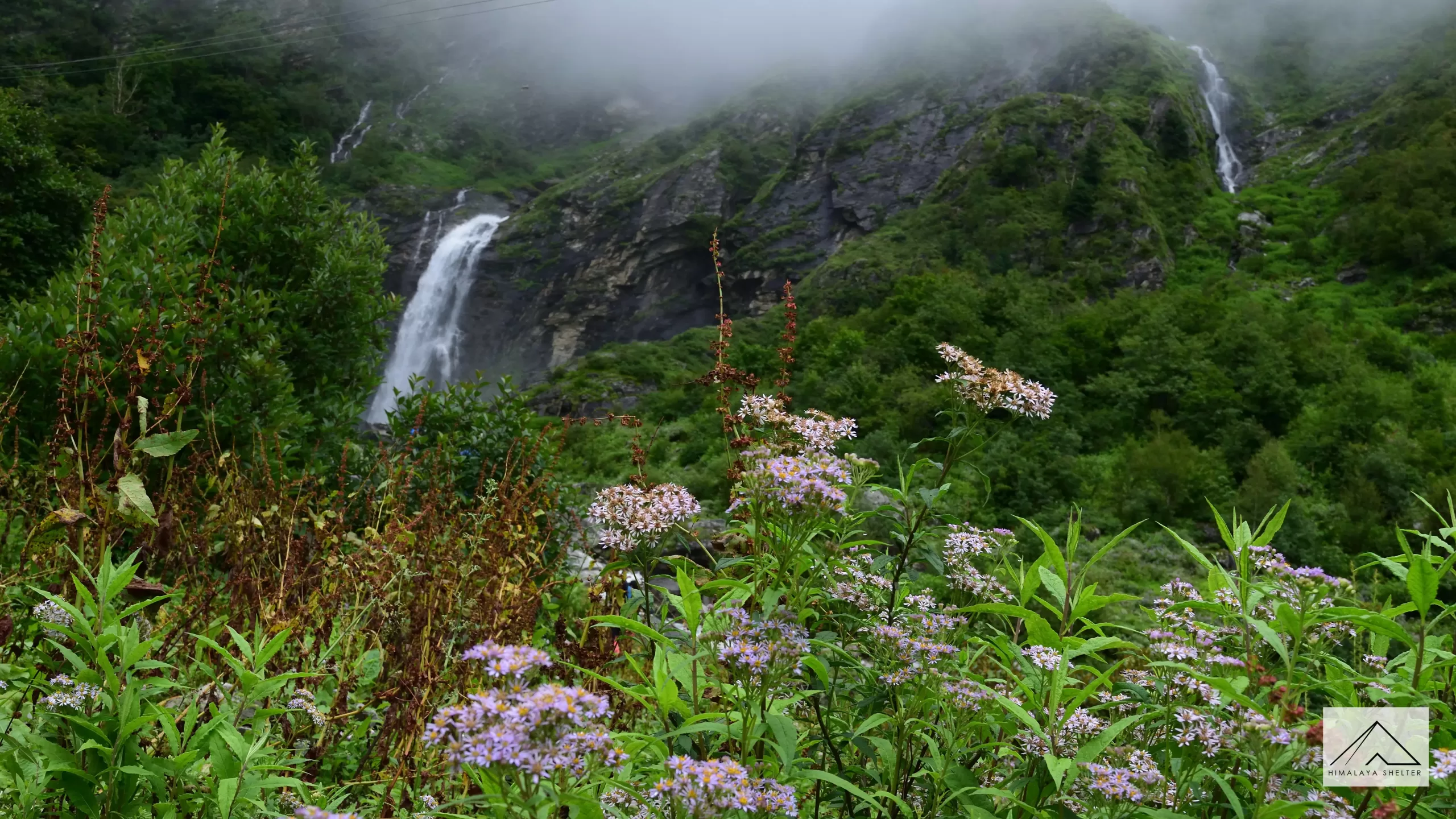
January 19, 2024
Valley of Flowers the ‘Most Beautiful Monsoon Trek in India’
September 4, 2021
Valley of Flowers and Hemkund Sahib
A day wise visual blog from Valley of Flowers & Hemkund Sahib trek...
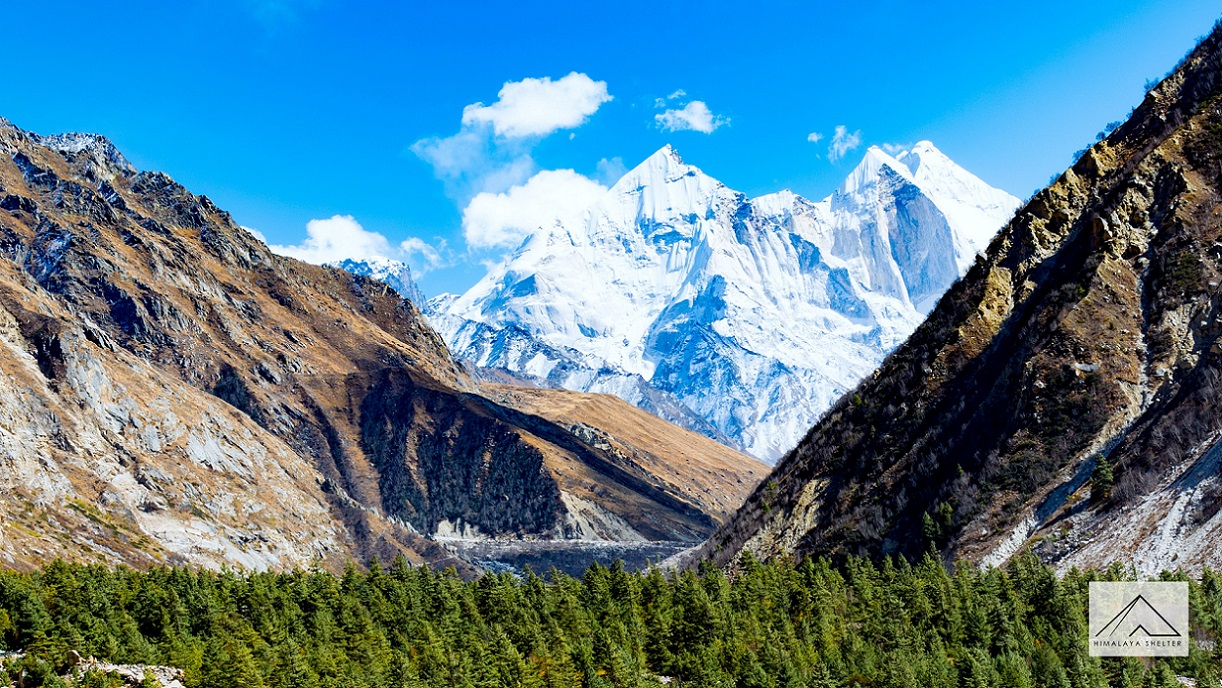
September 8, 2021
Uttarakhand - Your all year adventure destination
The “Land of Gods” is blessed with five distinct seasons. Read the blog to find out about Uttarakhand's all year adventures...

March 2, 2023
Unforgettable: Kashmir Great Lakes Trek in the Himalayas Explained
Embark on the Kashmir Great Lakes Trek, a unique journey exploring seven breathtaking alpine lakes amid Himalayan grandeur.

Kashmir Great Lakes
₹13499+ 5% gst, sonamarg to naranag, + rs. 2570 backpack offloading + rs. 2450 single tent accommodation + rs. 1600 srinagar to srinagar (transportation), difficulty level - 5, kashmir - 8 days - 69 km - 4200 m, up to 15% off in may-jun batches for a limited period ✨, batches: july - august- sept.
Nestled in the Himalayas, the Kashmir Great Lakes Trek is a breathtaking adventure that takes hikers through a picturesque journey in the heavenly region of Kashmir, India. This trek is a mesmerizing amalgamation of pristine alpine lakes, verdant meadows, snow-capped peaks, and charming local culture. It is a true testament to the unparalleled beauty of nature and an experience that leaves an indelible mark on the soul of every adventurer who embarks on this journey.
The Kashmir Great Lakes Trek is renowned for its unparalleled natural beauty. It takes trekkers through an awe-inspiring trail that passes by seven stunning alpine lakes, each with its distinct character and charm. The glistening waters of these lakes mirror the surrounding peaks, creating a surreal spectacle that stays etched in one's memory forever.
The trek typically begins from Sonamarg, a picturesque town situated at an altitude of 2,740 meters. From there, the trail winds through enchanting meadows, dense pine forests, and remote villages, offering a glimpse into the traditional Kashmiri way of life. As trekkers ascend, they are greeted with awe-inspiring views of snow-capped mountains, including the majestic Harmukh Peak.
For photography enthusiasts, the Kashmir Great Lakes Trek is a dream come true. The ever-changing landscape presents countless opportunities to capture postcard-perfect shots of the lakes, meadows adorned with wildflowers, and the rustic charm of the local shepherds and their herds.
The journey is not just about the natural splendor; it's also a chance to immerse oneself in the warmth of the local culture. The Gujjar and Bakarwal communities, known for their hospitality, welcome trekkers with open arms. Interacting with them offers a unique insight into their way of life, traditions, and the challenges they face living in such remote and rugged terrains.
The Kashmir Great Lakes Trek is moderately challenging, demanding both physical stamina and mental endurance. However, the effort is well-rewarded by the awe-inspiring vistas and the feeling of accomplishment when reaching the highest point of the trek, the Gadsar Pass, at an altitude of 4,150 meters.
The best time to embark on the Kashmir Great Lakes Trek is during the summer months, from late June to early September. The weather during this period is relatively mild, and the meadows are adorned with a colorful carpet of wildflowers, making it a truly enchanting experience.
As adventurers, we must be responsible travelers and prioritize the preservation of the pristine beauty of the region. Respecting the environment, adhering to Leave No Trace principles, and supporting local initiatives are essential in ensuring that this natural wonder remains intact for future generations to cherish.
The Kashmir Great Lakes Trek is an odyssey that beckons every nature lover and adventure seeker to experience the magnificence of the Himalayas. It's a journey of self-discovery, where trekkers find themselves immersed in the boundless beauty of nature and the warm embrace of local hospitality. The memories of this trek linger long after the journey ends, serving as a constant reminder of the paradise on Earth that awaits those who dare to venture into the heart of the mesmerizing Kashmiri landscape.
Kashmir Great Lakes Trekking Itinerary
The Kashmir Great Lakes Trek is an enthralling journey that typically spans over 7 to 8 days, covering approximately 70 to 75 kilometers. Here's a sample itinerary to give you an idea of what the trek entails:
Day 1: Arrive in Srinagar
Arrive in Srinagar, the capital city of Jammu and Kashmir.
Transfer to Sonamarg, the starting point of the trek.
Acclimatize and explore the scenic beauty of Sonamarg.
Overnight stay in Sonamarg.
Day 2: Drive to Sonamarg and trek to Nichnai
After breakfast, drive from Srinagar to Sonamarg, which takes around 3 hours. From Sonamarg, start trekking towards Nichnai, which is located at an altitude of 3,500 meters. The trek to Nichnai is around 9 kilometers long and takes around 6 hours. Overnight stay in tents at Nichnai.
Day 3: Trek to Vishansar Lake
After breakfast, start trekking toward Vishansar Lake, which is located at an altitude of 3,710 meters. The trek to Vishansar Lake is around 12 kilometers long and takes around 7 hours. Overnight stay in tents near Vishansar Lake.
Day 4: Trek to Gadsar Lake via Vishansar Pass
After breakfast, start trekking towards Gadsar Lake, which is located at an altitude of 3,800 meters. The trek to Gadsar Lake takes you over the Vishansar Pass, which is located at an altitude of 4,150 meters. The trek is around 14 kilometers long and takes around 8 hours. Overnight stay in tents near Gadsar Lake.
Day 5: Trek to Satsar Lake
After breakfast, start trekking toward Satsar Lake, which is a group of seven interconnected lakes located at an altitude of 3,800 meters. The trek to Satsar Lake is around 9 kilometers long and takes around 5 hours. Overnight stay in tents near Satsar Lake.
Day 6: Trek to Gangbal Lake via Gadsar Pass
After breakfast, start trekking towards Gangbal Lake, which is located at an altitude of 3,800 meters. The trek takes you over the Gadsar Pass, which is located at an altitude of 4,200 meters. The trek is around 12 kilometers long and takes around 8 hours. Overnight stay in tents near Gangbal Lake.
Day 7: Rest day at Gangbal Lake
Spend the day exploring the beautiful surroundings of Gangbal Lake. Overnight stay in tents near Gangbal Lake.
Day 8: Trek to Naranag and drive to Srinagar
After breakfast, start trekking toward Naranag, which is located at an altitude of 2,740 meters. The trek is around 11 kilometers long and takes around 6 hours. From Naranag, drive back to Srinagar. Overnight stay in a hotel in Srinagar.
Day 9: Departure
Depart from Srinagar and head back home, or continue with your travel plans in the region.
Note: The above itinerary is subject to change based on weather conditions, group size, and other factors. It's always advisable to consult with us to customize your itinerary and make the necessary arrangements.
Veg/ Egg Meals during the trek
Forest Permits/Camping Charges/Permits, Trek Permit Fee/IMF Permission (Upto the amount charged for Indian nationals)
Camping tents (Twin sharing), Temp rated sleeping bags, mattress
Safety Equipment includes static rescue rope, seat harness, carabiners, pulleys
Mountaineering course certified Trek Leader with First Aid certification & customized rescue course from NIM
Experienced Local guide, cook, and helpers
Porters or mules for carrying common luggage
Exhaustive First Aid kit including portable oxygen cylinder
What's Not Included
Meals during road journey
Not Included
Meals during road journeys
Any kind of Insurance
Any expense of personal nature
Any expense not specified in the inclusion list
Portage of personal backpack
Transportation to and from Srinagar
Things to carry on Kashmir Great Lakes Trek
Here is a list of essential things to carry on the Kashmir Great Lakes trek:
1. Backpack : A sturdy and comfortable backpack with a capacity of 50-60 liters is essential to carry all your belongings.
2. Clothing : You will need warm and comfortable clothing, including a down jacket, waterproof pants, waterproof and breathable trekking shoes, warm socks, thermal innerwear, gloves, and a hat. Also, carry a raincoat and a quick-dry towel.
3. Sleeping gear : You will need a high-altitude sleeping bag and a sleeping mat to stay warm and comfortable at night.
4. Trekking gear : Carry a trekking pole, a headlamp or flashlight, sunglasses, sunscreen, and a water bottle or hydration system.
5. First-aid kit : Carry a basic first-aid kit with bandages, antiseptic cream, painkillers, insect repellent, and any prescribed medication.
6. Personal hygiene items : Carry hand sanitizer, wet wipes, tissue paper, and a small bottle of hand wash.
7. Snacks and energy bars: Carry some high-energy snacks, chocolates, and energy bars to keep you going during the trek.
8. Cash and identification : Carry enough cash and your ID proof in a waterproof bag.
9. Camera and batteries : Carry a camera with extra batteries to capture the stunning views along the way.
Remember to pack light and carry only essential items to keep your backpack lightweight and manageable.
Is Kashmir Great Lakes Trek worth it?
Yes, the Kashmir Great Lakes trek is definitely worth it! It's one of the most beautiful and popular treks in India, with stunning alpine landscapes, crystal-clear lakes, and breathtaking mountain views.
The trek takes you through some of the most picturesque landscapes in the Kashmir valley, including dense forests, high-altitude meadows, and rocky terrain. You'll pass through several high-altitude passes, including the Vishansar Pass and Gadsar Pass, which offer incredible panoramic views of the surrounding peaks.
The highlight of the trek is undoubtedly the Great Lakes themselves, including Vishansar Lake, Gangbal Lake, and several smaller Satsar Lakes. The lakes are surrounded by snow-capped peaks and offer a tranquil and serene environment that is perfect for relaxation and contemplation.
Overall, the Kashmir Great Lakes trek is a must-do for any trekking enthusiast, offering a unique and unforgettable experience that combines natural beauty, cultural immersion, and physical challenge. Just make sure to plan and prepare for the trek properly to ensure a safe and enjoyable experience.
Is Kashmir Great Lakes Trek for beginners?
The Kashmir Great Lakes Trek is not recommended for beginners due to its high altitude and challenging terrain. The trek involves long and strenuous walks through rocky and uneven terrain, steep climbs, and high-altitude passes. The altitude varies between 7,000 and 13,000 feet, which can lead to altitude sickness in some individuals.
The weather conditions can also be unpredictable, with sudden rain, snow, and strong winds. Therefore, it's essential to have prior trekking experience and be in good physical condition before attempting this trek.
If you're a beginner trekker, it's best to start with easier treks and gradually build up your stamina and fitness before attempting the Kashmir Great Lakes Trek. It's also recommended to go on the trek with an experienced guide and a reputable trekking company to ensure your safety and enjoyment of the trek.
How long is the Kashmir Great Lakes Trek?
The Kashmir Great Lakes Trek is typically a 7-8 day trek covering a distance of around 70-80 kilometers. The actual duration and distance may vary depending on the itinerary, weather conditions, and the fitness level of the trekkers.
The trek usually starts from the town of Sonamarg and goes through several beautiful alpine meadows, forests, and high-altitude passes before reaching the Great Lakes. The route covers several lakes, including Vishansar Lake, Kishansar Lake, Gadsar Lake, and Gangbal Lake, each with its unique beauty and charm.
The trek ends at the town of Naranag, where you can explore the ancient temples and ruins. Overall, the Kashmir Great Lakes Trek is a challenging and rewarding trek that offers a unique and unforgettable experience for trekkers.
Which month is best for Kashmir Great Lakes?
The best time to go for the Kashmir Great Lakes Trek is from June to September, which is the summer season in the region. During this time, the weather is mostly stable and favorable for trekking, with clear skies, pleasant temperatures, and minimal rainfall.
June and July are ideal for trekking as the weather is mild, and the landscape is vibrant with blooming wildflowers. August and September are also good months to trek, with the added advantage of clear views of the surrounding mountains and lakes.
It's important to note that the weather conditions in the mountains can be unpredictable, and you may encounter sudden rain or snowfall even during the summer season. So it's always advisable to carry appropriate warm and waterproof clothing and check the weather forecast before starting the trek.
Overall, the summer season from June to September is the best time to go for the Kashmir Great Lakes Trek, offering comfortable weather, clear views, and a beautiful landscape.

Expedia Rewards is now One Key™
Elektrostal, visit elektrostal, check elektrostal hotel availability, popular places to visit.
- Electrostal History and Art Museum
You can spend time exploring the galleries in Electrostal History and Art Museum in Elektrostal. Take in the museums while you're in the area.
- Cities near Elektrostal

- Places of interest
- Yuri Gagarin Cosmonaut Training Center
- Peter the Great Military Academy
- Central Museum of the Air Forces at Monino
- History of Russian Scarfs and Shawls Museum
- Balashikha Arena
- Balashikha Museum of History and Local Lore
- Bykovo Manor
- Pekhorka Park
- Ramenskii History and Art Museum
- Malenky Puppet Theater
- Drama Theatre BOOM
- Likino Dulevo Museum of Local Lore
- Noginsk Museum and Exhibition Center
- Pavlovsky Posad Museum of Art and History
- Saturn Stadium
- Fairy Tale Children's Model Puppet Theater
- Fifth House Gallery
- Church of Vladimir
- Malakhovka Museum of History and Culture
- Orekhovo Zuevsky City Exhibition Hall

Turn Your Curiosity Into Discovery
Latest facts.
9 Facts About National Train Day May 11th
12 Facts About National Coq Au Vin Day May 29th
40 facts about elektrostal.
Written by Lanette Mayes
Modified & Updated: 02 Mar 2024
Reviewed by Jessica Corbett

Elektrostal is a vibrant city located in the Moscow Oblast region of Russia. With a rich history, stunning architecture, and a thriving community, Elektrostal is a city that has much to offer. Whether you are a history buff, nature enthusiast, or simply curious about different cultures, Elektrostal is sure to captivate you.
This article will provide you with 40 fascinating facts about Elektrostal, giving you a better understanding of why this city is worth exploring. From its origins as an industrial hub to its modern-day charm, we will delve into the various aspects that make Elektrostal a unique and must-visit destination.
So, join us as we uncover the hidden treasures of Elektrostal and discover what makes this city a true gem in the heart of Russia.
Key Takeaways:
- Elektrostal, known as the “Motor City of Russia,” is a vibrant and growing city with a rich industrial history, offering diverse cultural experiences and a strong commitment to environmental sustainability.
- With its convenient location near Moscow, Elektrostal provides a picturesque landscape, vibrant nightlife, and a range of recreational activities, making it an ideal destination for residents and visitors alike.
Known as the “Motor City of Russia.”
Elektrostal, a city located in the Moscow Oblast region of Russia, earned the nickname “Motor City” due to its significant involvement in the automotive industry.
Home to the Elektrostal Metallurgical Plant.
Elektrostal is renowned for its metallurgical plant, which has been producing high-quality steel and alloys since its establishment in 1916.
Boasts a rich industrial heritage.
Elektrostal has a long history of industrial development, contributing to the growth and progress of the region.
Founded in 1916.
The city of Elektrostal was founded in 1916 as a result of the construction of the Elektrostal Metallurgical Plant.
Located approximately 50 kilometers east of Moscow.
Elektrostal is situated in close proximity to the Russian capital, making it easily accessible for both residents and visitors.
Known for its vibrant cultural scene.
Elektrostal is home to several cultural institutions, including museums, theaters, and art galleries that showcase the city’s rich artistic heritage.
A popular destination for nature lovers.
Surrounded by picturesque landscapes and forests, Elektrostal offers ample opportunities for outdoor activities such as hiking, camping, and birdwatching.
Hosts the annual Elektrostal City Day celebrations.
Every year, Elektrostal organizes festive events and activities to celebrate its founding, bringing together residents and visitors in a spirit of unity and joy.
Has a population of approximately 160,000 people.
Elektrostal is home to a diverse and vibrant community of around 160,000 residents, contributing to its dynamic atmosphere.
Boasts excellent education facilities.
The city is known for its well-established educational institutions, providing quality education to students of all ages.
A center for scientific research and innovation.
Elektrostal serves as an important hub for scientific research, particularly in the fields of metallurgy, materials science, and engineering.
Surrounded by picturesque lakes.
The city is blessed with numerous beautiful lakes, offering scenic views and recreational opportunities for locals and visitors alike.
Well-connected transportation system.
Elektrostal benefits from an efficient transportation network, including highways, railways, and public transportation options, ensuring convenient travel within and beyond the city.
Famous for its traditional Russian cuisine.
Food enthusiasts can indulge in authentic Russian dishes at numerous restaurants and cafes scattered throughout Elektrostal.
Home to notable architectural landmarks.
Elektrostal boasts impressive architecture, including the Church of the Transfiguration of the Lord and the Elektrostal Palace of Culture.
Offers a wide range of recreational facilities.
Residents and visitors can enjoy various recreational activities, such as sports complexes, swimming pools, and fitness centers, enhancing the overall quality of life.
Provides a high standard of healthcare.
Elektrostal is equipped with modern medical facilities, ensuring residents have access to quality healthcare services.
Home to the Elektrostal History Museum.
The Elektrostal History Museum showcases the city’s fascinating past through exhibitions and displays.
A hub for sports enthusiasts.
Elektrostal is passionate about sports, with numerous stadiums, arenas, and sports clubs offering opportunities for athletes and spectators.
Celebrates diverse cultural festivals.
Throughout the year, Elektrostal hosts a variety of cultural festivals, celebrating different ethnicities, traditions, and art forms.
Electric power played a significant role in its early development.
Elektrostal owes its name and initial growth to the establishment of electric power stations and the utilization of electricity in the industrial sector.
Boasts a thriving economy.
The city’s strong industrial base, coupled with its strategic location near Moscow, has contributed to Elektrostal’s prosperous economic status.
Houses the Elektrostal Drama Theater.
The Elektrostal Drama Theater is a cultural centerpiece, attracting theater enthusiasts from far and wide.
Popular destination for winter sports.
Elektrostal’s proximity to ski resorts and winter sport facilities makes it a favorite destination for skiing, snowboarding, and other winter activities.
Promotes environmental sustainability.
Elektrostal prioritizes environmental protection and sustainability, implementing initiatives to reduce pollution and preserve natural resources.
Home to renowned educational institutions.
Elektrostal is known for its prestigious schools and universities, offering a wide range of academic programs to students.
Committed to cultural preservation.
The city values its cultural heritage and takes active steps to preserve and promote traditional customs, crafts, and arts.
Hosts an annual International Film Festival.
The Elektrostal International Film Festival attracts filmmakers and cinema enthusiasts from around the world, showcasing a diverse range of films.
Encourages entrepreneurship and innovation.
Elektrostal supports aspiring entrepreneurs and fosters a culture of innovation, providing opportunities for startups and business development.
Offers a range of housing options.
Elektrostal provides diverse housing options, including apartments, houses, and residential complexes, catering to different lifestyles and budgets.
Home to notable sports teams.
Elektrostal is proud of its sports legacy, with several successful sports teams competing at regional and national levels.
Boasts a vibrant nightlife scene.
Residents and visitors can enjoy a lively nightlife in Elektrostal, with numerous bars, clubs, and entertainment venues.
Promotes cultural exchange and international relations.
Elektrostal actively engages in international partnerships, cultural exchanges, and diplomatic collaborations to foster global connections.
Surrounded by beautiful nature reserves.
Nearby nature reserves, such as the Barybino Forest and Luchinskoye Lake, offer opportunities for nature enthusiasts to explore and appreciate the region’s biodiversity.
Commemorates historical events.
The city pays tribute to significant historical events through memorials, monuments, and exhibitions, ensuring the preservation of collective memory.
Promotes sports and youth development.
Elektrostal invests in sports infrastructure and programs to encourage youth participation, health, and physical fitness.
Hosts annual cultural and artistic festivals.
Throughout the year, Elektrostal celebrates its cultural diversity through festivals dedicated to music, dance, art, and theater.
Provides a picturesque landscape for photography enthusiasts.
The city’s scenic beauty, architectural landmarks, and natural surroundings make it a paradise for photographers.
Connects to Moscow via a direct train line.
The convenient train connection between Elektrostal and Moscow makes commuting between the two cities effortless.
A city with a bright future.
Elektrostal continues to grow and develop, aiming to become a model city in terms of infrastructure, sustainability, and quality of life for its residents.
In conclusion, Elektrostal is a fascinating city with a rich history and a vibrant present. From its origins as a center of steel production to its modern-day status as a hub for education and industry, Elektrostal has plenty to offer both residents and visitors. With its beautiful parks, cultural attractions, and proximity to Moscow, there is no shortage of things to see and do in this dynamic city. Whether you’re interested in exploring its historical landmarks, enjoying outdoor activities, or immersing yourself in the local culture, Elektrostal has something for everyone. So, next time you find yourself in the Moscow region, don’t miss the opportunity to discover the hidden gems of Elektrostal.
Q: What is the population of Elektrostal?
A: As of the latest data, the population of Elektrostal is approximately XXXX.
Q: How far is Elektrostal from Moscow?
A: Elektrostal is located approximately XX kilometers away from Moscow.
Q: Are there any famous landmarks in Elektrostal?
A: Yes, Elektrostal is home to several notable landmarks, including XXXX and XXXX.
Q: What industries are prominent in Elektrostal?
A: Elektrostal is known for its steel production industry and is also a center for engineering and manufacturing.
Q: Are there any universities or educational institutions in Elektrostal?
A: Yes, Elektrostal is home to XXXX University and several other educational institutions.
Q: What are some popular outdoor activities in Elektrostal?
A: Elektrostal offers several outdoor activities, such as hiking, cycling, and picnicking in its beautiful parks.
Q: Is Elektrostal well-connected in terms of transportation?
A: Yes, Elektrostal has good transportation links, including trains and buses, making it easily accessible from nearby cities.
Q: Are there any annual events or festivals in Elektrostal?
A: Yes, Elektrostal hosts various events and festivals throughout the year, including XXXX and XXXX.
Was this page helpful?
Our commitment to delivering trustworthy and engaging content is at the heart of what we do. Each fact on our site is contributed by real users like you, bringing a wealth of diverse insights and information. To ensure the highest standards of accuracy and reliability, our dedicated editors meticulously review each submission. This process guarantees that the facts we share are not only fascinating but also credible. Trust in our commitment to quality and authenticity as you explore and learn with us.
Share this Fact:

IMAGES
VIDEO
COMMENTS
The Kashmir Great Lakes Trek is in no need of an introductory treatise. It presents the proem in itself. ... Trek The Himalayas is a registered adventure tour operator by Indian Mountaineering Foundation (IMF) and Ministry Of Tourism (MOT) Trekkers have to apply for leave at least 20 days before trek departure date,
Kashmir — you feel it everywhere. The larger-than-life scale of the mountains, meadows, and lakes on the trek of KGL. Picture by Rajshree Sarada. 2. The variety of the valleys and meadows. The Kashmir Great Lakes trek has 7 trekking days. And coincidentally you are also trekking in 7 different valleys.
The route of Kashmir's great lakes trek remains under the large scale of snow till mid of June. Basically the best time to do trekking in Kashmir is from 15 May onwards but for the Great lakes trek, the perfect time is July to the end of Sep. During the month of June, the great lakes trekking trail is partially covered with snow, and the view ...
The Great Lakes of Kashmir Trek is easily the most beautiful, picture-perfect, postcard-worthy trek we run. The trail of this Himalayan Trekking leads you through five alpine lakes, each as beautiful as the other. The lakes follow one after the other every day, making each day equally exciting. Remember the rush and excitement of a pass day ...
The Kashmir Great Lakes Walk, also known as the KGL Trek, is a must-have for most adventure enthusiasts visiting trek in India. This trek is 75 km long. This trek includes mountain lakes and vast collection of meadows in the Himalayas in West Kashmir, including the famous Sonamarg hill station and Harmukh mountain The route becomes gradual as ...
Kashmir Great Lakes, a.ka. KGL trek, became increasingly popular and now probably the most coveted trek during monsoon in Indian Himalayas. Kashmir - "The paradise on earth" is truly unfurled during this 7 days walk covering a distance of ~ 70 Km. Six high altitude lakes, alpine meadows dotted with tiny wildflowers, exquisite campsites ...
Level 3. PRICE. INR 21900/Per Person. Check Inclusions. The Kashmir Great Lakes Trek is a moderate hiking trail in the western Himalayas of the Kashmir region. The base-camp Sonamarg lies on the Srinagar-Leh National Highway. The ending point Naranag village is also connected with the same Highway. The trek can be done in both ways, but to ...
The Kashmir Great Lakes Trek not only has beautiful views, but it is also a moderately tough trek. During the trek, the trail will often change from ascent to descent. On some days, you would trek up to the high point, for example, Gadsar Pass, which is 13,800 ft (4,200 m), and then hike down to a campsite on the other side of the mountain.
The Kashmir Great Lakes Trek is a challenging 6-day hike spanning 75 kilometres in the Western Himalayas of Kashmir. On an average, the trek involves more than 12 kilometres of hiking per day. It begins at Sonmarg and ends at Naranag, suitable for individuals aged 15 and above. Considering the terrain, it is advisable for trekkers to have prior ...
The KGL Trek is a mesmerizing adventure that takes you through some of the most stunning landscapes in the Indian Himalayas. This trek is renowned for its pristine alpine lakes, vibrant meadows, dense pine forests, and majestic snow-capped peaks. It offers a visual feast for nature lovers and avid trekkers alike.
The Kashmir Great Lakes Trek is one of the most popular trekking routes in the Himalayas and offers a unique experience to explore the region's natural beauty. The trek is located at an altitude of around 13,750 feet above sea level and covers a distance of approximately 70 kilometres.
The Great Lakes Trek or Kashmir Great Lakes Trek commercially known as Sonamarg-Vishansar-Naranag Trek [1] is an alpine himalayan high-altitude trek in the Kashmir Valley in the Indian state of Jammu and Kashmir. [2] This is the most famous trek in Kashmir. The trek is usually completed in 6-7 days and is rated as moderate-difficult in terms of ...
The Kashmir Great Lakes Trek is a 7-day trek that takes you through the heart of the Kashmir Himalayas. The trek passes through five valleys and six alpine lakes, offering stunning views of snow-capped mountains, lush meadows, and crystal-clear waters. The trek starts in Sonamarg, a small town located 90 kilometers northeast of Srinagar.
February 26, 2023. siyagoyal. The Kashmir Great Lakes trek is a popular destination among adventure enthusiasts and nature lovers from all over the world. The trek covers a distance of approximately 63 kilometers and takes you through some of the most breathtaking landscapes in the Himalayas. The trek offers stunning views of seven alpine lakes ...
The Kashmir Great Lakes Trek offers a window into the enchanting World of the Alpine Lakes of Kashmir which are more than a 1000 in number. Kashmir Great Lakes is one of the most charming treks in entire Himalayas which offer magnificent vistas of enchanting peaks, lush green meadows, flower valleys, gushing rivers and eye soothing Lakes, which ...
Nestled in the Himalayas, the Kashmir Great Lakes Trek is a breathtaking adventure that takes hikers through a picturesque journey in the heavenly region of Kashmir, India. This trek is a mesmerizing amalgamation of pristine alpine lakes, verdant meadows, snow-capped peaks, and charming local culture. ...
Roopkund Trek. Roopkund, known as the Skeleton Lake trek of Uttarakhand, offers stunning views of the Himalayas and alpine meadows. It features a mysterious glacial lake with human skeletal remains dating back to the 9th century. The trek is difficult and covers approximately 53 kilometres on a round trip.
The trek passes through five vall...". HimSahyadri Trekkers | The Kashmir Great Lakes Trek is a 7-day trek that takes you through the heart of the Kashmir Himalayas. The trek passes through five vall... | Instagram
beyond.hike on April 3, 2024: "Kashmir great lakes trek Your epic adventure in Kashmir awaits. Nestled amidst the awe-inspiring Himalayas, Kashmir beckons adventure se...". Beyond.hikes | Kashmir great lakes trek Your epic adventure in Kashmir awaits.
42 likes, 3 comments - shoyjoseph on September 23, 2023: "Kashmir Great Lakes Trek in Himalayas, Sonamarg Vishansar ( Vishnusar) campsite July 2023 #trek #trending #trekking #kashmir #incredib ...
Cities near Elektrostal. Places of interest. Pavlovskiy Posad Noginsk. Travel guide resource for your visit to Elektrostal. Discover the best of Elektrostal so you can plan your trip right.
Elektrostal. Elektrostal ( Russian: Электроста́ль) is a city in Moscow Oblast, Russia. It is 58 kilometers (36 mi) east of Moscow. As of 2010, 155,196 people lived there.
Live webcam shows the square in front of the cinema «Sovremennik» in real time. The camera is installed on the house number 18 on Mir Street in the city of Elektrostal, Moscow Region, Russia. UTC+03:00. Website of live webcams is optimised for all device types. Project «Neocognitron 2.0».
40 Facts About Elektrostal. Elektrostal is a vibrant city located in the Moscow Oblast region of Russia. With a rich history, stunning architecture, and a thriving community, Elektrostal is a city that has much to offer. Whether you are a history buff, nature enthusiast, or simply curious about different cultures, Elektrostal is sure to ...